Addams, John R
| Flt-Lt John R Addams | ||
|
|
|
|
Aga, Tariq Ali Khan
| Tariq Ali Khan Aga | ||
|
|
||
Aitken, Grace Elaine
| Grace Elaine Aitken | ||
|
|
|
|
| b. 5 Aug1895, Bickley, Kent Father: Robert Bruce Aitken, a solicitor (qualified 1885), mother Harriot(t) (Soames, d. 1963 aged 100). They married 12 Jun 1894. Sister Kathleen Maud, b. 1897 Robert was an RAF 2nd Lieut 1917-18, and d. 21 Nov 1942 in Llandudno. In the 1911 Census Robert and Harriot lived in Tunbridge Wells with their 4 servants; Grace, age 15, meanwhile was at boarding school - St Felix School, Clogle House, Reydon, Southwold. Grace qualified as a masseuse (in Medical Gymnastics and Medical Electricity) and travelled to Quebec in 1926, New Zealand in 1927, and Hawaii and the USA for three weeks in 1928. Her address by then was Masons Bridge Hall, Salfords, Horley, Surrey (which is near Redhill Aerodrome). 'Flight' Magazine recorded the start of her aviation career in October 1929: "During this week, three new lady members commenced instruction; they were Miss M. M. Noakes and Miss M. J. M. Turner, of Maidstone, and Miss G. E. Aitken, of Horley, Surrey. It is very encouraging to see the increasing interest and enthusiasm with which ladies are taking up flying." The following year, she gained her Royal Aero Club Certificate No 9123, at the Cinque Ports Flying Club based in Lympne, Kent
She acquired a 1930 DH.60M Moth, G-AAWX, from Sir Piers GJ Mostyn. For the next couple of years, she was an ever-present face in aviation circles, and 'Flight' recorded her various activities and triumphs:
May 1931: "The chief event of the afternoon was a race for ladies, this was divided into heats with Miss Aitken, Miss Crossley and Miss Amy Johnson in the first, and Miss Burr, Miss Gower, Miss Giles, Mrs. Young, Miss Slade, and Miss Spooner in the second. The winner of the first heat was Miss Amy Johnson, with Miss Aitken second, and of the second heat Miss Burr, followed by Miss Gower.
Amy, Pauline, Dorothy, Gabrielle, Susan, Winifred, and Delia These four then took part in the final, which was a victory for Miss Aitken, with Miss Gower second, Miss Johnson third, and Miss Burr fourth. Capt. Dancy', that king of handicappers, was once again to be seen, complete with stop watch, red flag, and gum boots, and his work augured well for future races this year. Only a few seconds separated the winners in each heat, although the speeds of the machines varied widely, and the final was a masterpiece of handicapping, only ten seconds covering those racing.
The course was a triangular one around Wokingham Church and Twvford Station, the heats being one and the final two laps, the latter being about 20 miles."
July 1931: "Two of the Club's lady private owners, Miss Aitken and Miss Giles, left for Paris on Thursday in their two Gipsy Moths. It was originally their intention to tour Germany, but the political and financial situation there made this inadvisable."
August 1931: "A remarkably good performance was put up by two of the Club’s lady private owners, Miss Aitken and Miss Giles, who returned on Thursday July 30, from a fortnight’s flying four of France, covering a very big mileage during the period. They expressed themselves very pleased with the courtesy extended to them on all the friendly aerodromes on which they landed, and were particularly impressed by the French Meteorological Service." September 1931: "In the last week’s report reference was made to Miss Aitken. one of the lady private owner members, and the hope was expressed that she had won the Ladies’ Cup at the St. Hubert Rally; this has proved to be the case, and, in addition, she has won the Challenge Cup, to be held by the Club for 12 months; this is an extremely meritorious performance and the Club offers her its sincere congratulations." October 1931: "Lt. Com. T. S. B. Gubbins inaugurated his new flying field at Barham, and the informal opening was attended by Miss Aitken in her own aircraft." November 1931: "On Sunday a party was held to celebrate the arrival of the ‘Coupe Challenge Internationale" - won recently by Miss Grace Aitken, of this club, on the occasion of the Second International Rallye at St. Hubert, Belgium. The cup, which stands ever 2 ft 6 in, high, is of solid silver on a marble plinth, and is held by the Club for a year; a replica is held by the winner. Miss Aitken was the Club’s first lady ‘A’ licence pilot, and deserves the hearty congratulations of all on her extremely meritorious performance and her successful efforts to uphold the prestige of British amateur aviation on the Continent of Europe. Among those present at the celebrations were Miss J. E. Giles, Miss M. Noaks, Mrs. Hammond Davis, Mrs. H. E. Twaites, Lt. Com. G. S, B. Gubbins, Messrs, Drake, Marriage, Searle, Waller, Morris and Twaites, and other members and friends. The cups referred to were collected by aeroplane from the town of St. Hubert on the 18th ult. by Miss Aitken in person."
May 1932: "Several club members went over to the Antwerp meeting, including the Misses Aitken and Giles and Messrs. Trewlawny, Waller and Gubbins." August 1932, the "GOSSIP FROM GATWICK" was that "The feminine element was well to the fore during the last week. Miss Aitken did her first taxi trip, when she conveyed Miss Sewell to Heston to collect her machine, in which she put up such a very good show when she flew it out solo to Transjordania." September 1932: "A WOMEN'S FLYING MEETING The Womens Engineering Society, who at the suggestion of Lady Bailey have formed an aviation section, held an air meeting in connection with their Tenth Annual Conference at Atlantic Park, Eastleigh, near Southampton, on Sunday, September I5. Owing to a very regrettable streak of misplaced Puritanism on the part of the municipal authorities, the organisers were not allowed to bring the general public into the meeting, except free of charge, with the result that they had to content themselves to a small but select party of invited guests. Atlantic Park is quite an excellent aerodrome, and we hear rumours that it may shortly be the home of one of the well-known South Coast flying clubs. The hangars are still in reasonably good repair and bear romantic evidence, in the shape of notices in many languages, of the days when the shipping companies had perforce to use it as a dumping camp for the crowds of European emigrants who fled their own countries after the war to seek fortunes in the USA. (who knows but what it may have sheltered Scarface Al or others of his ilk!). Visitors by air had, we gathered a very sticky trip, as the clouds were down on the hills in most parts of the country and this kept the numbers of aircraft very low, but those who came by road fared better for despite rain which made things unpleasant they had no difficulty in finding the way ; AA notices at every corner led them straight to the aerodrome. — Mr. Ivor McClure, who has made the aviation department of the A. A. what it is, surely deserves recognition as one of aviation's benefactors. The Dowager Lady Swaythling opened the meeting and the women who had flown down were presented to her. These included Miss Aitken Mrs. Victor Bruce, Mrs, Chalmers, Miss Spicer, and Lady Bailey. Mrs. Shelmerdine, who had nobly come all the way from London by road, Mrs, Mollison, who arrived somewhat later in her special 'Moth' and last, but not least Miss Mollie Ofley, of the Northamptonshire Aero Club, to whom had been entrusted the organisation of the dying programme of the meeting."
In September 1932, there was a "LADIES’ PARTY AT SYWELL On Sunday, September 25, the ladies of the Northamptonshire Aero Club held the second of their annual flying meetings. This year the meeting, once more ably organised by Miss Mollie Ofley, was more in the nature of a garden party, the general public not therefore being invited. Some dozen visiting machines arrived at the aerodrome during the afternoon, quite a large proportion of which were flown by lady pilots. Unfortunately, other meetings in the country clashed with this gathering, thereby lessening the number of visitors. Last year the handsome cup presented by Mr. Lee Champion, was won by Miss 'Susan' Slade in a race which, it will be remembered, was distinctive for its somewhat exciting(!) finish. This year however, the idea of a race was abandoned and a competition substituted. The cup, it was decided should still be presented to the winner and therefore Miss Slade had perforce to fly up from Cornwall w ith this 'utensil' which she managed to do despite the execrable weather. Miss Slade told us that she explored every valley in Somerset in an endeavour to get north from Cornwall on the first day of her attempt before returning to a field belonging to some friends in Taunton. On the second day she was more lucky, and by avoiding the hills she was able to get through. The competition took the form of a test of the pilot's ability to fly accurately by compass without the aid of a map. All entrants were given maps. but these were sealed and the breaking of the seal entailed disqualification. Four bearings and distances were given with landmarks, which had to be noted at each comer, observers being stationed at these marks. As a precaution against the eventuality of several competitors getting round the course correctly they had, on their return to the aerodrome to land, finishing their landing run with their wheels as near to a line of flags as possible. Points being deducted according to the distance they were from these flags. The entrants included Miss Susan Slade, Lady Bailey, Miss Giles, Miss Muntz and Miss Aitken. A scientific scheme of marking was evolved by several of the enthusiastic male members of the club, and the result of their labours was to award Lady Bailey 66.25, Miss Giles 63.5, Miss Slade 62,5, and Miss Muntz 61.25. Unfortunately, Miss Aitken decided that if she continued looking for the landing marks any longer she would be in danger of losing her tea, and she therefore opened her maps, which, of course, entailed her disqualification." And then her flying career seems to have ended. She sold the Moth to Robert Christian 'Bob' Ramsay ...
... and in 1933, she married Kenneth Minshull Robathan (1 Sep 1889 – 2 Feb 1965) who was an English first-class cricketer, British Indian Army officer and clergyman, and held ecclesiastical appointments at Dethick, Lea and Holloway in Derbyshire, Lee-on-Solent in Hampshire, and Potterne in Wiltshire. He died in February 1965 at Ringwood, Hampshire. They had 2(?) children. Grace was still practising as a masseuse in Matlock, Derbyshire, in 1946.
She died 14 Feb 1979 giving her address as Camel Cross Motors, West Camel, Yeovil Somerset, leaving £78,183 |
||
Alcock, Edward Samson
| Edward Samson Alcock | ||
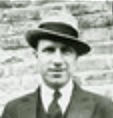
In November 1931 he was pilot of 'Horsa', the first H.P. 42, on a leisurely trip to Heliopolis via Paris, Lyons, Marseilles, Pisa, Rome, Naples, Catania, Malta, Tripoli, Sirte and Marsah Mutra. "Ample time will be spent at each stopping place". The flight took seven days. Awarded Master Pilot's Certificate in 1934 September 1934: "Captain Alcock is a younger brother of the late Sir John Alcock, who made the first Atlantic flight in 1919. After a period of service in the Royal Air Force, Capt. Alcock joined Imperial Airways in 1929, and has now flown a distance of more than 750,000 miles" Promoted to Senior Master in October 1938 d. 1974 in Surrey |
|
|
Alger, Howard Whitmore Cowell
| Howard Whitmore Cowell Alger |
|
|
|
b. 12 May 1901, Kidderminster Imperial Airways pilot from 1928 based Cairo |
Alington, Cyril Geoffrey Marmaduke
|
Cyril Geoffrey Marmaduke Alington
|
||
|
photo: 1936, aged 22 b. 19th August 1914 in Richmond, London, the youngest of four brothers. Their father was Lt-Col Arthur Cyril Marmaduke Alington, and their mother was herself a pilot and had made parachute descents; they could trace the family back to William the Conqueror. [The eldest brother, William James Marmaduke Alington (known as 'Marmie') was chief instructor at the Yapton Flying Club in 1937, and taught Lettice Curtis to fly.] In 1933, a public schoolboy in Hythe, Kent; by 1936 a student at the de Havilland Technical School. Competed in the Schlesinger Air Race in 1936, and came 12th (out of 15) in a Dart Kitten in the Devon Air Race in 1937:
"Mr CGM Alington, an entry in today's Devon Air Race, being greeted by Flt-Lt W E Knowlden on arrival last evening at Plymouth Airport" - Western Morning News, 24 July 1937
He joined the Air Transport Auxiliary in 1939 - see https://www.ata-ferry-pilots.org/index.php/category-blog-1939/77-alington-cyril d. 1987 |
Alington, Rupert Hildebrand
|
Paymaster Lt Rupert Hildebrand Alington |
||
|
|
Cyril's elder brother, b. Hythe, Kent 16 March 1911. Killed in WWII: 10 September 1943, a Lt-Cmdr aboard the minelayer HMS Abdiel, which was mined at Taranto. |
|
Allen, Helen Naomi
|
Helen Naomi Allen
|
||
|
...my mother-in-law was 96, so her memory may not have been what it was. I mentioned I was going to the ATA Museum. She said "I met a ferry pilot a few times, she was Mrs Allen, and she flew planes across the Atlantic". "Oh yes", I thought "No ATA women ferry pilots actually did that, but anyway..." "Really" I said. "Yes, she came to visit her mother-in-law who was our neighbour, Kitty Allen. This was when my sister worked at Bletchley Park." "Right", I said, thinking "OK, there were 2 Mrs Allens in the ATA..." "Yes, it was terrible how her husband died. It was after an operation. Apparently it was quite a straightforward operation, he woke up, said 'Hello Darling' and then promptly had a heart attack and died". "OK", I thought, Helen Naomi Heron-Maxwell's first husband Mr Allen died in... let me see... January 1939, after they were married in ... March 1938..." "Maybe Helen or Naomi Heron-Maxwell?", I said. "That name sounds familiar. Her family were very upper-crust, you know. Very well-connected. And another thing, who was it lived at Sissinghurst?" (Which I think signified the end of that part of the conversation). So, I searched the Times Archive. Good grief, in 1939, "ALLEN. On January 23rd 1939, in Austria, following an operation, FRANCIS CECIL HOWARD, adored husband of Naomi (nee Heron-Maxwell) and son of Mrs WHR Allen of Periwinkle, Long Acre Lane, Sisley, Sussex, aged 34" And moreover, I discovered that Naomi moved to Los Angeles in 1948, married again, divorced and then moved into Leisure World in Laguna Hills, California, dying there in 1983. Which is exactly when we lived in Mission Viejo, California - a few miles from her. If only I'd known! (Mind you, Owen Cathcart Jones only lived a few miles in the other direction - if only I'd known, again!) So there you go. (Nearly) a brush, or two, with dramatis personae...
|
Allen, James Bernard
| Flt-Lt James Bernard Allen | ||
|
|
b. 1898 Gloucestershire Regiment from 1914-1916 and then 23 Sqn, R.F.C; transferred to unemployed list, Oct 1920, and to "Boys' Wing, Cranwell" in May 1925. Chief instructor and aerodrome manager at the Liverpool Aero Club from 1928-1930, and a member of the Guild of Air Pilots and Navigators. From 1930, private pilot to the Duchess of Bedford; killed, aged 35, on 5 Dec 1933 when he narrowly avoided HT cables, lost control and crashed her new GAL Monospar ST.4 G-ACKT near Thrupps Farm, Lidlington, Beds. It was his first accident. |
|
Ambler, Geoffrey Hill
|
Geoffrey Hill Ambler CB CBE AFC LLD DL
|
||
|
b 23 Jun 1904, a 'worsted spinner' from Yorkshire Inventor of the Ambler Superdraft System of Spinning, which (you'll have to trust me on this) accelerated production of worsted yarn, and a serious oarsman in his youth: Henley Royal Regatta crew member (Shrewsbury School) in 1922, and then in the 'B' crew for Cambridge (Clare College).
Geoffrey is 4th from left, shown here during practice for the 1922 University Boat Race but he didn't quite make the final team in 1922 or 1923, briefly had to stand down in March 1924 as he "showed signs of developing a boil", but came back and helped Cambridge win a surprise victory in the 1924 Race. Oxford "completely went to pieces and were beaten very badly indeed". He was then elected Hon. Sec. of the Cambridge University Boat Club, and rowed in two more Cambridge victories: the 1925 race (when Oxford capsized), and 1926 (when Jumbo Edwards, in the Oxford boat, stopped rowing because 'he hadn't trained properly' - The Times reckoned he was a stone overweight), later becoming President of the Club. [In 1926, both Jumbo (HRA) and ECT Edwards were in the Oxford crew]. Joined the RAFVR in 1931 (608 North Riding(Bomber) Sqn); Sqn Ldr from 1934, until Geoffrey Shaw took over on 30 October 1938. Wing Commander from January 1940. Married Phoebe Gaunt in June 1940; they had 3 daughters. Air Commodore until 1943, when he became Deputy Senior Air Staff Officer at HQ Fighter Command. Retired as Air Vice Marshall and rejoined Fred Ambler Ltd, eventually becoming Chairman. Joined Martin's Bank as regional director in 1951, then Grout & Co in 1959. d. 26 Aug 1978 |
Anderson, Elizabeth Ann Roche
|
Miss Elizabeth Ann Roche Anderson Royal Aero Club Certificate 8735 (26 Jun 1929) |
||
|
|
The Sketch - 1929 |
|
|
b. Dullatur Scotland, 18 Aug 1908 A Masseuse |
||
Andrews, Hugh Thornley
| F/O Hugh Thornley Andrews | ||
|
|
||
|
b 28 Jul 1907, Swansea, Glamorgan RAF 1925-1930 He entered for the 1929 King's Cup Race, but withdrew before the start Chief Test Pilot for Spartan Aircraft Co Ltd, Woolston, Southampton, 1 Feb 1930 to 8 Sep 1931 He made two entries for the 1930 King's Cup Race, in Bluebird G-AATS and Spartan G-AAGO, and eventually flew in the latter but was unplaced. He then entered Spartan Arrow, G-AAWZ in the Europa Rundflug 3-week Air Race, 16 Jul-8 Aug 1930 Test Pilot for Fairey Aviation Co, Hamble, Nov 1931 to Dec 1933 RAF in WWII, then Sales Manager for Cunliffe-Owen Aircraft Ltd, 1946-52
Research: thanks to Steve Brew |
||
Ankers, Burton
| Flt-Lt (Later Wing Cmdr) Burton Ankers DSO DCM | ||
|
|
|
|
|
b. 12 Aug 1893 Service Number: A15088/39 RFC and RAF in WWI 1919 - "Miss Dorothy Gent, formerly a cashier in a Chester cafe, was awarded £300 damages at Chester Assizes in an action for breach of promise brought by her against Burton Ankers, a captain in the Royal Air Force." He broke off the engagement with Ms Gent in July 1918, and married Dorothy M [Horwood] in October. 1938 - "The Air Ministry announces that the King has approved of the undermentioned rewards for gallant and distinguished services rendered in connection with the operations in Waziristan during the period 16 September to 15 December, 1937: Distinguished Service Order.—Wing- Commander Burton Ankers."
d. 9 Aug 1939 in Bristol Blenheim L1546 that was lost at Kutumba, India: "TWO SAVED BY PARACHUTE Wing Commander Killed Wing-Commander Burton Ankers and two other men of No. 39 Squadrdn, R.A.F., were killed in a crash at Kotumba, India. Corporal Robert Samuel Gilbert and Aircraftman Arthur Reginald Harris were the other victims. Wing-Commander Ankers was the pilot. Two other occupants, Aircraftman Richard Wallace Bloss, and Mr R. C. R. Tapper, escaped by parachute. " |
||
Armour, John George Denholm
| Flt-Lt John George Denholm Armour
|
Armstrong, William
| William Armstrong AFC | |
 |
 in 1934 in 1934 |
|
b. Gateshead-on-Tyne 4 Feb 1897 RFC in WWI; pilot for Airco 1919-20 Imperial Airways pilot from 1924 Awarded Master Pilot's Certificate in 1935 |
|
Ashton, George Reginald
|
Flt Lt George Reginald Ashton
|
||
|
b. 14 April 1888, in Ryde, I.O.W. Began his career as a boy in the Royal Navy at the age of 15, and was transferred to the RAF via the naval wing of the RFC. Promoted to Flt Lt and posted to Iraq in 1924; in May 1928, posted to No. 1 School of Technical Training (Apprentices), Halton (hence his flying the H.A.C. II 'Minus' which, due to its tiny engine, got the most generous handicap of all the entrants in 1929) Got repeatedly transferred from place to place in the RAF (Armament and Gunnery School, Eastchurch in 1931; School of Photography in 1932; School of Naval Cooperation, Lee-on-Solent in 1934; 149 Sqn, Mildenhall in 1937). Sqn Ldr from April 1937, 2CFS at Brize Norton in 1938; awarded AFC in 1939. |
Ashworth, Harold John Vincent
| Harold John Vincent Ashworth, DFC | ||
 photo: 1928, aged 26 photo: 1928, aged 26 |
from Bournemouth. Died in WWII: 20th June 1942, when a Squadron Leader (pilot) with 218 Sqn, RAFVR; buried in Bergen, Holland. |
|
Asjes, Dirk Lucas
|
Dirk "Dick" Lucas Asjes |
||
|
|
Died 2nd February, 1997 in the Hague, aged 85 |
|
Atcherley, David Francis William
| Flt-Lt David Francis William Atcherley DFC DSO |
||
|
Twin brother of Richard, so you don't need another photo. "Licences which he holds are (according to himself) motor (endorsed), gun, dog, and 'A'." He and his brother became "a legend in the RAF". d. 8 Jun 1952 |
||
Atcherley, Richard Llewellyn Roger
|
F/O (later Flt-Lt) (Sir) Richard Llewellyn Roger Atcherley KBE, CB, AFC
|
||
|
Batchy', twin brother of David, b. 12 Jan 1904 1929 Schneider pilot and later Air Marshall in the RAF and Chief of Air Staff for the Pakistan Air Force. Put on a bit of weight later on, and ended up as Sales Director for Folland Aircraft. Died 18 Apr 1970. |
Atkey, Dulcibella
|
|||||||||||
Attwood, Ernest Henry
| Ernest Henry 'Titch' Attwood | |
 Flt-Lt in the RFC in 1917 - mentioned in despatches Flt-Lt in the RFC in 1917 - mentioned in despatches |
|
|
on duty with Imperial Airways in Southampton with a tall dark and mysterious woman * |
|
|
b. Birmingham, 6 Mar 1899; joined the RFC in 1917, saw active sevice in Egypt and then became a training instructor at No 5 RAF Flying School in Sealand, Cheshire. He joined Imperial Airways in November 1926. September 1932: "The Prince of Wales will leave London this morning in the Imperial Airways liner Heracles for Copenhagen, where he is to open the British Exhibition. Two halts will be made en route—one at Amsterdam and the other at Hamburg. The complete journey is expected to take six and a half hours. Captain E. H. Attwood, of Imperial Airways, will be the pilot, and two R.A.F. flying boats from Calshot will escort the Prince on the first stage of his journey across the Channel from Dover. " Chief Pilot, South African Division in 1932 He was killed in November 1938, when piloting Empire Flying Boat G-AETW 'Calpurnia' which hit bad weather, and crashed and sank in Lake Ramadi, 15 miles short of the Imperial Airways base at Habbaniyah. Four of the crew of six were killed; there were no passengers. Calpurnia was carrying mail at the time. "Many mailbags burst in the crash, and hundreds of letters are floating on the surface of the shallow lake in which the flying boat lies submerged." The letters were scooped up where possible, marked "Received in Damaged Condition ex Flying Boat Calpurnia" and sent on:
Ernest's grandson (who also kindly sent me the photos) tells me that, although he never met his grandfather, "I knew his wife well, my grandmother, who was a nurse in The Great War and died in 1963. I was told that he did not consider himself to be in the 'real war' but that his brother, who was in the trenches, was the brave one!" * Adrian Constable, British Airways Archivist, kindly tells me that "The lady was Minnie Mann. Minnie was one of Imperial Airways senior secretaries, and a more-than-keen photographer. That photo was almost certainly taken with her camera, and is one of the few times she appeared in front of the lens rather than behind it. She was apparently well liked by all the pilots, and managed to get in to situations with her camera that others would have found "against the rules". I wish we had more of her pictures than we do!" |
|
Ayre, E D
| Flt-Lt E D Ayre | ||
|
|
known as 'Don' |
|
Babington, John Tremayne
| Wing-Commander John Tremayne Babington, D.S.O. | |
|
|
Represented RAF Andover in the Air League Challenge Cup in 1923 |
Baerlein, Edna
|
Edna Baerlein Royal Aero Club Certificate No. 8292 (5 Jun 1928) |
||
|
|
||
| b. Manchester, 25 Apr 1898 | ||
Bagge, Nancy Adelaide
| Nancy Adelaide Bagge |
|
|
| b. 5th October 1907 in King's Lynn, owned a 1930 Klemm L25 Ia, G-AAUP. She was the second of five daughters of Sir Richard Ludwig Bagge and Anna Victoria Wilmsdorff Mansergh, lived in Gaywood Hall and married Captain George Cecil Pereira on 1 March 1934. |
Bagshaw, Jack
| Jack Bagshaw | ||
|
|
Accompanied Tommy Rose in the Schlesinger Race; described as 'a young South African pilot'. That's it, so far; sorry. |
|
Bailey, Francis Joseph
| Flt Lt Francis Joseph Bailey | ||
|
|
|
|
|
One of the original 16 pilots of Imperial Airways in 1924 b. 9 Sep 1897 in London Flight Sub-Lt in the RNAS in WWI, then with British Marine Air Navigation Co Also held 2nd class navigators licence |
||
Bailey, L M
| Flt-Lt. L. M. Bailey, A.F.C. | ||
|
|
Represented RAF Duxford in the Air League Challenge Cup in 1923 |
|
Bailey, Mary
|
Hon. Lady Mary Bailey Royal Aero Club Certificate No. 8067 (26 Jan 1927) |
|
 1927, aged 37 1927, aged 37 |
1930, aged 40 |
|
The Hon. Mary Westenra, b. 1 December 1890 in London but brought up mainly in County Monaghan, Ireland. Her family's home was Rossmore Castle, which was a grand affair built in the 1820s, with turrets, a vast drawing room and servants' quarters, not to mention about 20 cottages on the estate:
Here she is, with her brother Willie, and parents (Mittie and Derry) on a set of steps by the house, in 1913:
I visited County Monaghan in 2014 and asked in the local museum if they knew where the house was. 'Oh yes' they said, 'but it was demolished forty years ago'. It seems that it became severely infested with dry rot in the 1940s, was abandoned and, indeed, demolished in 1975. Anyway, here's all that's left of it now:
Mary married South African mining magnate and white suprematist politician Sir Abe Bailey in September 1911 (so, she was 21, he was nearly 47; his first wife had died in 1902 and he already had two children). They then had five more children - 2 boys and 3 girls. She learnt to fly at the London Aeroplane Club in 1926. She was the first woman to fly across the Irish Sea 'by the long route' from Chester to Dublin, the following August. The following March (1928) she began a solo tour to Cape Town, via Malta and then Cairo. Here, her plane was locked away by order of the Governor-General of the Sudan to prevent her from continuing alone, so she contacted Dick Bentley (who had flown to the Cape a few weeks before) to escort her in his own aeroplane over the "dangerous area of the southern Sudan". She then crashed in Tanganyika, writing off her aeroplane (she said it was her fault), but Abe made arrangements for a replacement Moth to be delivered from Pretoria and she continued, despite having 'flu. Abe was there to meet her when she arrived at the end of April. The return journey was made via the western 'French' route - the Belgian Congo, Angola and the French Congo. She finally arrived back at Croydon on 16 January, 1929, 10 months after she left. It was "undoubtedly one of the finest performances ever put up by a woman pilot." Lady Bailey was "so modest, so vague and so charming", and was "surprised that anyone should make a fuss about her journey". A Director of National Flying Services in 1929, (with Frederick Guest, Colonel the Master of Sempill, Alan Cobham, etc); she was also awarded the Brittania Trophy by the Royal Aero Club, and then made a Dame of the British Empire in 1930 for "services to aviation".
At the Chateau d'Ardennes in 1930

She was a guest at Amelia Earhart's reception at the Royal Aero Club in May 1932.
In early 1933 she gave everyone a scare by disappearing for several days on another solo flight to Cape Town; thankfully, she had only got lost, run low on fuel and landed safely in the Sahara. [Bert Hinkler, who disappeared at about the same time, was killed in the Alps]. She then flew back to England and almost immediately went down with a bout of typhoid, but recovered in time to compete in the King's Cup later in the year.
After that, she concentrated on looking after their horses, giving and attending loads more balls and receptions, and marrying off their many children. When Abe died in 1940, she settled near Cape Town (still keeping a house in Rutland) and died there 29th August 1960 aged 69.
Lady Mary's aeroplanes were: a 1926 DH.60 Moth (G-EBPU), a 1927 DH.60X Moth (G-EBSF, the one she crashed in Tanganyika), the replacement DH.60X Moth (G-EBTG, which Abe bought in Nairobi); a 1928 DH.60G Gipsy Moth (G-AABN); a 1929 DH.60G Gipsy Moth (G-AAEE) and a 1930 DH.80A Puss Moth, G-AAYA.
|
|
Bailey, William Richardson
| Mr William Richardson Bailey | ||
|
photo: 1920, aged 19 |
from Newport, Mon |
|
Baines, James Keith Campbell
|
James Keith Campbell Baines
|
||
|
Born 21st December 1905 in Woodford, Essex. His father, Louis, was a tea and indigo merchant; his elder sister Phillis was born in Calcutta. In 1901 the family lived in Tiverton, Devon; Louis, Lillian, Phillis, Jack, Silsen, Kathleen, and their 3 domestic servants. He was killed, aged 28, during the MacRobertson Race on 23rd October 1934 when he and Gilman crashed in Italy. Joined the N.Z.A.F. in 1925, training at Palmerston North and Wairapa.
He arrived in London from New Zealand on March 26, 1934. He sold his Avro "Avian," just before departure, to a brother-officer in the N.Z.A.F. Reserve, and embarked for England in January, via Australia and South Africa. During the ship's stay in Sydney, Melbourne, Adelaide, Perth and Capetown, Baines kept his hand in with flights on machines hired from the local aero clubs. At the time of the Race, he had flown 3,860 hr. His "Fox" was purchased at Hounslow from Anderson Aircraft and was modified at Hanworth by N.F.S., Ltd., as a replica of the sister-machine entered by Raymond Parer. Its capacity was increased to 175 galls., and its range to about 1,750 miles. "Whilst awaiting delivery of the "Fox," Baines has been making approach landings at Mildenhall. He expresses himself delighted with the new aerodrome, its freedom from obstruction, its perfect run, and its billiard-table surface." ------- In July, 1934, James wrote to the organising committee for the race and asked them to 'change the name of the nominator from myself to Mrs Lilian M Campbell-Baines, my mother, who has made it possible for me to enter the Races'. Baines and Gilman crashed on the 10th of October 1934, and the funeral, at the British Cemetery at Naples, was held on the 26th. The British Air Attache in Rome, Group Captain T Hetherington, undertook all the funeral arrangements; the photographs of the ceremony 'very clearly indicated the profound sympathy of the Italian nation and the honours bestowed on these two officers'. Sadly, James' brother had also been killed earlier in the year in a gun accident; their eldest brother had been killed during WWI also flying, aged only 19. Although they had insured the aeroplane, Baines and Gilman hadn't taken out any life insurance. |
Baker, Valentine Henry
|
Capt Valentine Henry Baker MC AFC
|
||
|
b. 1888 In 1931, chief instructor at Heston Aerodrome. "Baker founded the air school at Heston and it became the most famous flight school in the United Kingdom. During his career as an instructor in England, Baker personally taught many notable pupils, including Edward, Prince of Wales, Lord Londonderry of the Air Ministry, Lord Lloyd, Amy Johnson,Prince George, Duke of Kent, and Grace Marguerite Hay Drummond-Hay. In 1934, Baker left Heston to join his friend James Martin to found the Martin-Baker Aircraft Company, where Baker was the company's test pilot. Killed 12 September 1942; "during a test flight of the Martin-Baker MB 3 prototype, the engine seized and he was forced into an emergency landing, during which the aircraft struck a tree stump and he was killed. Baker's death affected his partner deeply, so much so that pilot safety became Martin's primary focus and led to the reorganisation of the company to focus on ejection seats." |
Balfour, Harold Harrington
|
Capt Harold Harrington Balfour PC MC
|
||
| b. 1 Nov 1897
Lord Balfour of Inchrye, Conservative M.P. for the Isle of Thanet in Kent. He used his DH Moth for electioneering in 1929, and was returned unopposed (i.e. nobody bothered to stand against him) with a majority of over 21,000 in 1931. In 1933 he published his autobiography, called 'An Airman Marches', in which he admitted that he had never paid some fines for driving offences in 1916 whe he was a trainee in the RFC; sure enough, Sussex Magistrates Court sent him a bill for the £3, plus 10 shillings costs, when they read the book. He sent them a cheque for £5. He (and Mrs Balfour, coincidentally) was back in a nursing home in 1934, this time for appendicitis. He became Parliamentary Under-Secretary for Air in 1938, helping to set up the Civil Air Guard, and flew a Spitfire in August 1938, saying that it was a 'very nice aeroplane for an old gentleman like me'. Once WWII broke out, he was a member of the Air Council, responsible for the Canadian part of the Empire Training Scheme, and flew a Whirlwind when he was 43 (although not in combat). After WWII, he was appointed 'Minister Resident in West Africa' by Churchill, but went to the House of Lords when that government was defeated. He was there until his death in 1988. |
Balfour, Lionel Maxwell Joachim
|
Mr Lionel Maxwell Joachim Balfour
|
||
|
b. 11 Dec 1905. Ian Long kindly tells me that " Christopher Balfour, Lionel's son, published a lovely book about him in 1999 called "Spithead Express: The Pre-War Island Air Ferry and Post-War Plans" (Magna Press, ISBN 0 95194423 8 7), copies of which can be found on Ebay from time to time."
"Lionel gained a degree in engineering and served his apprenticeship at English Electric. He was left with a substantial amount of money following the death of his mother in 1928. He owned Puss Moth G-ABIY, which his sister Rachel had in fact won in a raffle. He housed it at Hanworth with his Moth G-ABJH.
He was aware of the need for an air link between Portsmouth and Ryde on the Isle of Wight and put a considerable amount of money into Wight Aviation, of which he was a director, in 1931. A Klemm G-ABJX and a Spartan 3-seater G-ABLJ were used by the firm. In 1932, the company attracted Francis 'Lux' Luxmoore who also became a director and the name was changed to Portsmouth, Southsea & Isle of Wight Aviation (P.S.&I.O.W.A.). The venture proved to be a great success, with their pale blue, buff and silver livery. Airspeed were keen to use P.S.&I.O.W.A. to show off their products and the air ferry used 6 Couriers, 1 Ferry and 1 Envoy. The air ferry were also keen Monospar customers."
Another director of PS&IOWA was Sir Charles Rose (q.v.).
He married Lady Myrtle, 24-year old third daughter of the Admiral of the Fleet Lord Jellicoe, in 1932, and here they are after the nuptuals:
She died after an operation on 10 November, 1945 though, and he married twice more. "All of the air ferry aircraft were impressed into service when WWII began and so the company's engineers began to carry out contract work for their neighbours, Airspeed. By the time the war began the company had already manufactured 31 pairs of Oxford wings for Airspeed. Balfour's company undertook a complete rebuild of an Oxford and thus became a part of the Nuffield repair organisation. By the time the war ended they had repaired or modified over 1,000 Oxfords. Keen to restart the air ferry using De Havilland Dragon Rapides, Balfour managed to get a severely restricted charter service going but it ceased by the end of 1947. Now presented as a fully fledged engineering company it looked to others sources of revenue. P.S.&I.O.W.A. became Portsmouth Aviation and designed and built the Portsmouth Aerocar G-AGTG. It was displayed at the 1947 and 1948 S.B.A.C. air shows. Despite great interest in the Aerocar at home and in India, the venture was stalled. During the latter half of the 20th century the company were constructing military ordnance carriers and loaders. Lionel Balfour died in 1973." |
Ballantine, Ronald George
| Ronald George Ballantine | ||
|
|
|
|
|
b. Plymouth on August 2 1913 and educated at Plymouth College. He studied Art in Plymouth and Paris but, like so many of his generation, his life changed after a five-shilling flight with Alan Cobham's Flying Circus (q.v.) "He learned to fly privately, and by the time he was 21 he had obtained his commercial flying, navigation and wireless licences, enabling him to join Imperial Airways. Initially Ballantine flew as a second officer in the open cockpit of a three-engine Argosy on the Croydon-Brussels-Cologne route; the 20 passengers were able to lounge in wicker chairs. He then moved on to the stately four-engine HP 42 biplane airliner. With an almost complete lack of navigation aids, locating Croydon airport in poor weather depended on finding the twin towers of Crystal Palace, then setting a stopwatch and descending blind. Ballantine next flew on the Imperial Airways Empire routes to Africa and Asia, before being appointed to his first command at the age of 23; he was based in Hong Kong, flying the de Havilland DH 86. During this period he carried out an aerial survey of the route to Bangkok via Hanoi, across the relatively unknown territories of Siam and Indo-China, and he established a 16-hour record for the Rangoon-Calcutta return journey in the DH 86 Delphinus. Ballantine earned his nickname, "The Colonel", after General Chiang Kai Shek offered him a colonelcy in his nationalist air force - a post which the Englishman prudently declined." Ballantine was described by a colleague as "tall and debonair. . . quintessentially English, and a genial man of great modesty and charm". During the war, following a spirited party with his fellow pilots, he had crashed his car; he never drove again. d. Dec 2003 |
||
Bannister, R
| Mr R Bannister | ||
|
|
I think this must be Flt-Lt W R Bannister, ex-RAF chief instructor of the Herts and Essex Aero Club at Broxborne in 1932; on him "rested the smooth running of the entire flying side". He formed the London Air Circus at Broxbourne in 1933 to give aerobatics, displays and joyrides. Killed 2 Oct 1934, when he crashed G-ACPM, a Dragon Rapide of Hillman's Airways, off Folkestone, killing himself and 6 passengers. His widow was left "totally unprovided for" with five young children, and the Royal Infant Orphanage, Wanstead took them all into its care. |
|
Barbour, J
| Mr J Barbour | ||
|
|
I think this must be John Milne Barbour: RAeC Certificate 11474 (20th September, 1933); b. 20 August 1906 in Dunmarry, Ireland. A merchant for the Linen Thread Co., Glasgow |
|
Baring, Violet
|
Violet Baring Royal Aero Club Certificate 8932 (17 Dec 1929) |
||
|
|
||
|
b. 1900 b. Violetta Mary Archer in Reading, "A niece of Lady George Dundas, of Newmarket, and also of the Marquess of Zetland." Married Richard Baring in Jan 1921 but 'divorced him'. Violet was killed in July 1931 when she and her 'old friend' Philip Noble (to whom she had just sold the aeroplane) crashed in G-EBYK while attempting a forced landing near Wokingham, Berks: "The woman pilot, who was well-known in Society, and her passenger, a director of Lloyds Bank, who was also an enthusiastic flyer, were killed instantly; both receiving terrible injuries." John Dennis Turner (q.v.), who said he was engaged to be married to Violet, identified the body and gave evidence at the inquest. Her house at 23 Earl's Court Square, London, was for sale 'at a low price' by the following January. |
||
Barnard, Charles Douglas
|
Capt Charles Douglas Barnard
|
||
|
Personal pilot to the Duchess of Bedford, 'ribald and golden-haired'. b. 8 Dec 1895 in London; his father, Charles Gilbert Barnard, was a master printer (and not related to Franklyn Barnard's father). He learnt to fly in 1915 with the RFC. After WWI, became a test pilot for Sopwith, then a pilot with the de Havilland Airplane Hire Service after meeting Alan Cobham, then their chief pilot, in Spain. In July 1920, he was convicted of manslaughter, for killing an elderly man in a car accident in which he failed to stop, and didn't report; "Charles Barnard (24), a demobilised airman from Watford whose machine was brought down in flames in France, was charged with the manslaughter of Alfred Sharp on the night of May 2, by knocking him down whilst driving a motor-car. A button, answering the description of other buttons from the deceased's coat, was found between the bonnet and mudguard of the accused's car. He was remanded, bail being refused." It also turned out that his driving licence had lapsed at the time, and he hadn't renewed it until some days after the accident. He was given 4 months imprisonment in the 'Second Division' (such prisoners were kept apart from other classes of prisoners, received more frequent letters and visits and wore clothes of a different colour). The Judge said there was "too much reckless driving by people who served in the war. Their war services were no consolation to bereaved relatives." Settling down a bit after that, he was the pilot in 1923 when an aeroplane belonging to the de Havilland Hire Service was used to ferry Commander Bristow to have a look at an Italian ship, the D'Aosta, which had become stranded in Malta. It was the first time the flight had been made, and it took over 14 hours, mainly (Charles complained) because the authorities in Pisa insisted on a deposit of 15% of the value of the machine. One of his other jobs for the de Havilland Hire Company was to fly G-EBGT 'Nulli Secundus', a perfectly good D.H.9c, while a certain Captain Spencer jumped out of it - see the video here.
His first long-distance flight with the Duchess of Bedford was a tour in 1927 from her home in Woburn Abbey to France, Spain and North Africa, covering 4,500 miles in 3 weeks. Two years later, he piloted her Fokker monoplane, the 'Spider' to India and back, 10,000 miles in 88.5 hours; the RAeC gave him their Gold Medal for the year. It wasn't their first attempt at the flight to India and back - a year before they had tried the same thing, but problems with the propellor meant that the Duchess had had to come back by steamer from Karachi (which at the time was in India, of course). In 1928, described as a 'flying man', he was cited as the co-respondent in a divorce case. At the time, he and Mrs Melita Erna May were living together at his place in Monmouth Rd, Bayswater; they got married in December. |
Barnard, Franklyn Leslie
|
Capt Franklyn Leslie Barnard OBE AFC |
||
 |
||
|
Winner of the first King's Cup in 1922. "an exceptional pilot - careful, skilful, and daring" and "his ability as an engineer was fully equal to his skill as a pilot". b. 1896; his father, Owen Barnard, was a stockbroker's clerk (and not related to Charles Barnard's father). AFC in WWI; chief pilot for Instone (later) Imperial Airways. OBE in 1927. Killed in July 1927 while testing propellers for the Bristol Badminton which he had entered for the King's Cup Race, which crashed at Filton after the engine seized. Major Beaumont, appearing for Imperial Airways at the inquest, said the company felt it had "lost one of the world's magnificent airmen". 1927 It is with profound regret that we have to record the death, as the result of a flying accident on Thursday, July 28, of Capt. F. L. Barnard. Capt. Barnard—one of our mostexperienced and popular pilots—was carrying out a test flight on the Bristol " Badminton " ("Jupiter VI ") biplane, which had been entered for the King's Cup Air Race, at Filton aerodrome, when, according to eyewitnesses, the engine suddenly stopped and the machine crashed to the ground just outside the 'drome from a height of about 200 ft. When a number of people who had been watching the flight arrived in the field where the machine had crashed, the latter was found completely wrecked, with the engine embedded in the ground, and the unfortunate pilot lying in the cockpit beyond human aid. From evidence at the inquest, which was held on July 29, it appears that when Capt. Barnard's engine failed, he put the machine into normal gliding angle and attempted to land. While manoeuvring to do so, the machine lost flying speed and stalled from about 80 ft. Capt. Barnard had already made three other test flights on the machine, trying out different airscrews. Capt. Barnard's loss to the aviation world is a great one indeed, for he was an exceptional pilot, careful, skilful, and daring—but daring only when flying alone or testing. He served in the Air Force during the war, and was awarded the Air Force Cross. Following the Armistice he was pilot to No. 24 Communication Squadron, when he carried many distinguished personages to and from the Continent. He then became associated with Instone Air Lines, and later, when Imperial Airways was formed, was their chief pilot. His skill as a pilot was such that he was entrusted with many important aerial missions—the most conspicuous of which was the piloting of the Imperial Airways D.H. "Hercules" air liner, carrying Sir Samuel Hoare, Lady Maud Hoare and party from London to Cairo on the inaugural flight of the Egypt-India service. He also, it will be remembered, took part in previous King's Cup races, being the winner in1922 and 1925, and flying last year the Bristol " Badminton "in its original form. Capt. Barnard leaves a widow and young son, to whom, in common with his many, many friends, we offer our deepest sympathy." - 'Flight' |
Barrett, John Francis Tuffnell
| Flt-Lt John Francis Tuffnell Barrett | ||
|
photo: 1930, aged 32 |
From Surrey. DSO and bar, DFC. Died in WWII: 3rd September 1941, when a Group Captain, RAF buried in Berlin's WWII Cemetery
|
|
Barwick, John Morgan
| Mr John Morgan Barwick | ||
|
(RAeC photo missing) |
b. 22 November 1908 in London, a Director. RAeC Certificate 13625, 4th March 1936 'Master of Fox Hounds of the Bedale Hunt'; lived at Firby Hall, Bedale Yorks in 1936. |
|
Batten, Jean Gardner
|
Jean Gardner Batten
|
||
|
b. 15 September 1909 in Rotorua, New Zealand, a "shy, determined girl". "By the time I was nineteen I knew my future must be in flying." Studied music from a young age but, having passed the Royal Academy of Music Finals, she sold her beloved piano to get to England and pay for flying lessons. One of the most spectacularly successful aviators of the early 30s; after her solo flight from England to Australia in 1934 (at the third time of trying) the New Zealand Govermnment awarded her £500 in recognition of her feat. She was in Melbourne a few months later to greet Scott and Campbell Black as winners of the MacRobertson Race, and left Sydney the following April to fly back to England, but didn't quite beat her record. In November 1935, came her real breakthrough: she flew to Brazil and beat the South Atlantic crossing record, taking 13 hrs 15min in her Percival Gull. This time, she was awarded:
In October 1936, having attended literally dozens of receptions and award-giving ceremonies, she set off once more, this time to fly to New Zealand in her Percival Gull. On the way, she beat Harry Broadbent's record solo time to Australia, despite a puncture in the tail tyre which a helpful aerodrome official repaired by stuffing it with face sponges. Just as Scott and Guthrie were returning rather sheepishly from the miserable Schlesinger Race to Cape Town, Jean was getting ready to fly from Australia to New Zealand. She arrived there on October 17th, met by large and enthusiastic crowds; the first woman to cross the Tasman Sea, the first direct flight from England to New Zealand. On the last day of 1936, however, Jean's South Atlantic record was beaten by another woman - Mme Maryse Bastié. In 1937, Jean again won the Brittania Trophy, the Harmon Trophy, and the Segrave Trophy for her 1936 flight. In October she set off for England again; at one stage, she was heading west, trying to beat Harry Broadbent's record, as Harry Broadbent was heading east, trying to break her record. She won; Jean beat Harry's record, while he had to give up at Basra. "I confess I am fed up", he said... Jean picked up yet more awards; the Gold Medal of the Royal Aero Club; the Gold Medal of the F.A.I. (no less); summoned to Buckingham Palace to meet the King and Queen of the Belgians (exciting); immortalised in Madame Taussaud waxworks (until they melted her down, at least), another round of receptions as guest of honour... But her brief time in the spotlight was coming to an end. Harry Broadbent took back his Australia-England record; Arthur Clouston and Victor Ricketts more than halved her England-New Zealand record time in 1938. She still attended dinners and receptions in her honour; she wrote her autobiography (called, rather disappointingly, 'My Life'), but she made no more record attempts. Even so, her remaining record, solo to Australia, stood for over 40 years. In WWII she toured the country as part of the 'Wings for Victory' campaign, giving dozens of lectures anywhere between Manchester and Penzance. Her Percival Gull, G-ADPR 'Jean' was presented to the Shuttleworth Trust on 26 April 1961, having been requisitioned by the RAF in WWII and then returned to Hunting Aircraft. However, by 1969 it needed major repairs and was grounded until 1978. Jean herself offered to come back from Tenerife to help: "I used to be quite good at stitching canvas on wings". It was sold in the early 90s (when Shuttleworth was strapped for cash) and is now on display at Aukland Airport:
In 1980 she and Edgar Percival were made liverymen of the Guild of Airline Pilots and Navigators, and she then travelled to Hull to open the 'Silver Wings' exhibition, in honour of Amy Johnson. Jean Batten owned: a 1929 DH.60G Gipsy Moth, G-AALG, which she flew to New Zealand in 1933; a 1929 DH.60M Moth, G-AARB, in which she broke the England-Australia record in 1934, and was later owned by Gabrielle Patterson, R Gordon and BK Lyall (simultaneously, that is), and later, a 1933 DH.60G III Moth Major, G-ACKF. She died in 1982 in Majorca. |
Battye, Elise
|
Mrs Elise Battye
|
||
|
"On an income of £1,000 a year, Mrs Elise Battye keeps a small house within thirty miles of London, a Morris Minor as an essential adjunct to the scheme, and a Moth aeroplane. In the latter she flies 180 to 200 hours a year for under £250 all told. She flies constantly to the Isle of Wight, Gloucestershire and Norfolk - to the last two as many as three times a month - and all these places are unpleasant to get to by any other means." [this is still true, of course] [The average salary in 1934 was less than £200 a year]
Elise owned: - a 1930 DH.60G Gipsy Moth G-AAYL, and then - a 1935 Miles M.2H Hawk Major, G-ADLA, which was sold to South Africa in 1939. |
Beaumont, J
| F/O J Beaumont | ||
|
|
||
|
An instructor with No. 5 Flying Training School in 1931; Flt-Lt 1935; Chief Flying Instructor 'for civilians' with Air Service Training at Hamble from 1935. In 1934, "The demonstration was by two of the A.S.T. flying instructors, Fit. Lt. J.B. Veal and F/O. J. Beaumont. This couple have already been seen at the R.A.F. Flying Club Display at Hatfield, and the excellence of their flying commented upon... It would be difficult to over-praise the cleanliness and smoothness of their display." |
||
Bell, Mary Teston Luis
|
Mrs Mary Teston Luis Bell Royal Aero Club Certificate No. 8088 (1 Apr 1927) |
||
|
|
||
|
b. Launceston, Tasmania, 3 Dec 1903 |
||
Bennett-Baggs, James Leonard Neville
|
Capt James Leonard Neville Bennett-Baggs
|
||
|
Chief Consultant pilot for Armstrong Whitworth, the 'burly' Bennett-Baggs |
Bennett, Donald Clifford Tyndall
| Donald Clifford Tyndall Bennett CB CBE DSO RAF | |
|
|
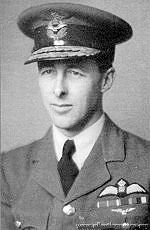 |
|
With Imperial Airways, promoted to Senior Master in October 1938 'Pathfinder' Bennett for his work with Bomber Command during WWII. As you probably know, the Pathfinder Force consisted of people who actually knew how to navigate properly, and marked the targets for the bombers. In May 1945, he became a Liberal M.P.: "Air Vice-Marshal D. C. Bennett, Pathfinder chief and youngest man of his rank in the R.A.F., was returned unopposed to-day as Liberal M.P. for Middlesbrough West." In 1948 he and his wife bought a couple of transport aircraft, formed AirFlight Ltd, and joined the Berlin airlift to fly dehydrated potatoes to the 2 million population. CEO of British South American Airways until forced to resign over an interview he gave in 1948. Opinions varied on what had happened: "SACKED FOR SPEAKING MY MIND-Airway Chief Air Vice-Marshal D. C. T. Bennett has been dismissed from his post as chief executive officer of British South American Airways. The following statement was issued by the British South American Airways Corporation: "The board have terminated the appointment of their chief executive, Air Vice-Marshal D. C. T. Bennett, following differences of opinion on matters of policy. In a statement, Air Vice-Marshal Bennett said:— "Last week, in view of current misinformation on certain affairs of this corporation, I granted an interview to a newspaper correspondent, at which I expressed views concerning the obvious ills of British civil aviation in general and concerning recent interference with management by the Minister of Civil Aviation. It is because of this that I have been forced to discontinue my appointment. I feel I should make it clear that I have been forced to take this course for exercising what I consider to be a right—the freedom of speech." "A personally difficult and naturally aloof man, he earned a great deal of respect from his crews but little affection." He also came 8th in the Monte Carlo Rally of 1953, driving a Jaguar. Wrote his autobiography in 1958, called, of course, 'Pathfinder'. Died 15th September 1986, aged 76 |
|
Bentley, Richard Read
|
Richard Read Bentley
|
||
| b. 20 November 1897 in London
Dick described himself as "one who preferred to live in the open, rather than within the confines of a London office" - one who, luckily, found it possible to make his living mainly by aviation. His mother having died when he was 12 (he said "I did not then recognise that my father was a broken man due to the loss of my mother"), he and his father had to move from Sheen Gate Mansions to a boarding house in a less fashionable area of London. After a while in an office in a paper merchant's - which he hated - he was packed off to Canada; when he got there, he found that his father had also died. After a stint as a farm hand in Canada, he came back to England and joined the RFC in WWI (photographic reconnaisance with 59 Sqn, then a flying instructor at Hooton). Then,"I hung around in London trying to get a job without any luck, like hundreds of other demobs. As I didn’t want to return to Canada I decided to try Rhodesia." He soon fell under Africa's spell, and for quite a long time lived in the jungle and went from job to job, supported by his dwindling RAF gratuity. He then had "four marvellous years" after joining the South African Air Force - "Whoopee!!! Back on a job I really knew". When the D.H. Moth first went on sale in 1926, Dick immediately decided he wanted to fly one from London to Cape Town. He raised the £600 he needed from the Johannesburg 'Star', in return for exclusive publicity, and on the 1st September 1927 set out from Stag Lane in G-EBSO, carrying a Mauser pistol generously lent to him by his C.O. Sir Pierre van Rynefeld. Lady Bailey had christened the aircraft 'Dorys', after Dick's then-girlfriend (later his wife), and you can even watch Lady B do her stuff here. After a "trouble-free" flight, he arrived in Cape Town on the 28th September, completing the first solo flight in a light aircraft from England to Cape Town (and the longest single-engined flight to date, for which he got the RAeC's Britannia Trophy). The 'Star' unexpectedly presented him with the aircraft (the the original deal was that it would be sold) and he then made his living from air taxi and joy-riding flights. In 1928, he escorted firstly Lady Heath, then Lady Bailey across the Sudan in their record-breaking flights (them women weren't trusted to fly alone, of course). He and Dorys flew back to England for their honeymoon and then spent a few months at Hooton. On the way back down to Cape Town (yes, again), they met up with Glen Kidston and Donald Drew, who were using a Fokker triplane to do 'aerial safaris'; they offered to give Dorys a lift so that Dick's plane could carry a spare propeller for Stanley Halse's plane (I know this is all very complicated, I'm trying my best). Anyway, the Fokker made a forced landing and Dorys bumped her head quite badly, but was apparently OK. Dick later said that "I have said “apparently” because twenty years later - we had parted in 1938 - in 1948 she died in America of a haemorrhage of the brain. Could that blow received in 1928 have been the root cause of her demise?" The flying world grew steadily and Dick soon became a ubiquitous figure on the civil aviation scene. "Popular, energetic, resourceful, he was as indifferent to the weather as to the day of the week, joining in the harum-scarum adventures of customers, welcome everywhere.” He flew the Shell Comper Swift G-ABUS, and his aerobatic displays were memorable. He flew in the RAF(VR) in WWII, remarried (to Anne), then retired. Dick died in May 1990, aged 93. All quotes shamelessly lifted from Roma Part's 'Pioneering Spirit', which is on the Johannesburg Light Plane Club's website www.jlpc.co.za |
Berger, Dafny Hansen
|
Dafny Hansen Berger Royal Aero Club Certificate No. 8160 (27 Sep 1927) |
||
|
|
||
| b. Asker, Norway, 16 Sep 1903 | ||
Biard, Henri Charles Amedie de la Faye
|
Capt Henri Charles Amedie de la Faye Biard |
|
 1912, aged 20 1912, aged 20 |
|
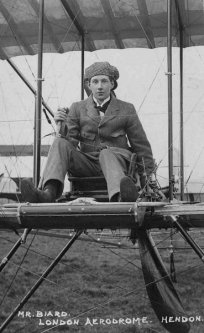 |
 |
|
From Jersey; a very early flier, test pilot for Supermarine. Schneider Trophy pilot in 1922, 23 and 25 (during which he crashed, "making a huge hole in the sea", but emerged merely slightly dazed). His autobiography is called, er, 'Wings' (1934). |
|
Birkett, Nancy Beynon
| Nancy Beynon Birkett |
|
|
| From Hove, b. 29 April 1901, had a 1929 Southern Martlet, G-AAII, which later became EI-ABG in Ireland. |
Birt, Lascelles Spence
| F/O Lascelles Spence Birt | ||
|
|
|
|
| Died (whilst in RAF Reserve) 25/6 Oct 1929; Birt was piloting the Short Calcutta flying-boat 'City of Rome' which ran into a gale after leaving Naples and set down on the sea near Spezia. An SOS was picked up and a steamer sighted them, fixed a cable and started to tow them in. Unfortunately the cable snapped and the flying boat capsized, drowning the crew and four passengers. | ||
Blackburn, Norman William George
|
Capt Norman William George Blackburn (RAeC photo missing) |
|
|
b. 25 May 1895 in Leeds. brother of Robert (founder of Blackburn Aircraft), from 1944 in charge of all Blackburn factories in Yorkshire. However, they fell out spectacularly in 1950: Norman and fellow director H V Gort had their appointments terminated by the rest of the Board; they then called an extraordinary meeting to sack the rest of the Board, and Robert sent out a circular to shareholders asking them to vote against them. Which they duly did, by 2 to 1, and Norman and Mr Gort were sent packing. Robert died in 1955, Norman in Mar 1966. |
Bonham-Carter, David William Frederick
|
Flt-Lt David William Frederick Bonham-Carter CB, DFC
|
||
|
Apparently related to Helena CBE (as I gather that "all Bonham-Carters are related"); he was certainly related to Florence Nightingale, though!
b. 22 February 1901, London m. 1927 in London, Joyce A [Palmer] an RAF Officer at Martlesham Heath in 1936, later Group Capt and Station Commander at RAF Waddington in WWII, despite being stone deaf by then; seconded to RCAF and involved in Canada with the Empire Training Plan, then Air Commodore (first President of Newark Air Museum). A member of the Royal Aero Club Racing Committee in the early 1930s. Address in 1974: 'Mariners Cottage', Felixstowe Ferry, Suffolk d. 17 May 1974.
His daughter wrote this article for her Parish Magazine in 2025, and kindly sent me a copy: "An RAF Career: DWF Bonham-Carter, b. 1901, d. 1974 My father‘s mother died when he was still a toddler, so he left London as soon as possible to go to boarding school on the south coast. While there he was excited to see the very first flights of aeroplanes and immediately decided he wanted to fly, not getting any encouragement from his grandmother, who wrote each week to him encouraging him to concentrate on his school studies. She wrote to him on Sunday, July 16, 1911, "I wonder if you’ve seen any aeroplanes lately on their way to Shoreham? I can’t believe that these machines can ever be really useful. If the weather is at-all gusty they cannot start, or should not”. On leaving school in 1920 he got in as a second entry cadet to the newly created college of RAF Cranwell, but he was disappointed by the small amount of flying. From there he was posted to Iraq to continue experimental test flying, and throughout the 1930s he alternated administrative postings and test flying. By 1940, he had crept up the ranks and was considered to be the most experienced test pilot in the UK - possibly in the world. He was a keen photographer, and many of his early aeroplane pictures are now in the London RAF Museum. He was then seconded to the RCAF and moved to Winnipeg in Canada to establish a pilot training station. Great Britain had a huge advantage over the German Air force by having training pilot facilities abroad. Germany could only train in their own country so often faced a pilot shortage. On leaving Canada he was posted as a Group Captain to command the wartime-built Lincolnshire bomber station at Wigsley. His next posting was to nearby RAF Waddington, with two squadrons of young Australians flying Lancaster bombers, with whom he flew on several dangerous raids. His wife only knew if he was going on a raid that day if his English money was left on his dressing table. After several administrative postings in 1949, he was posted to command RAF Brize Norton. As an Air Commodore he flew solo in 1951 and then became the AOC in Hong Kong, This was during the Korean War. He was awarded a DFC in 1945, the citation stating “throughout his career Group Captain Bonham-Carter has set a fine example of courage, skill and dedication to duty”. He was also awarded a CB in 1950 and twice Mentioned in Dispatches. An award he most valued was a 'caterpillar' pin, which was presented by the parachute company Irvin to any pilot whose life was saved by one of their parachutes. His hearing continued to fail, probably because of all his noisy test piloting. He managed with a very primitive hearing aid for many years, but realized his flying days were over so he retired in 1953 after his Hong Kong posting, knowing that attending meetings was beyond his hearing ability, despite all the knowledge about aircraft and flying he had acquired. He retired to Felixstowe in Suffolk, near to the RAF Martlesham aerodrome where he had once been stationed. His home looked across the River Deben to the first in use radar towers built at Bawdsey Manor. He became an active Rotarian, and also a member of the Nightingale Council which administered the money donated by personnel to Florence Nightingale on her return from the Crimea. This was used for the further training and development of St Thomas' trained nurses. He unexpectedly died of a heart attack in May 1974." |
Booth, P A
|
Lt P A Booth, RN |
||
|
|
Accompanied Cyril Alington in the Schlesinger Race, attending to the "navigation and such duties". A Supernumary Instructor at the School of Naval Co-operation, Lee-on-Solent. |
|
Borton, Amyas Eden
| Air-Vice-Marshall Amyas Eden Borton, CB, CMG, DSO, AFC | ||
|
|
As a General in 1919, directed Ross Smith to survey the route to Australia, laying the foundations for all the future trips. |
|
Bowes, George Henry
| Flt-Lt George Henry Bowes | ||
|
|
|
|
d. 19/20 Jun 1941, one of 9 killed when Shorts S26 Flying Boat X8274 ('Golden Fleece') crashed at sea off Cape Finisterre en route to Cairo; Commemorated on the Runnymede Memorial, Panel 29. 28 June 1941: "GOOLE OFFICER MISSING. FORMER IMPERIAL AIRWAYS PILOT Flight-Lieut. G. H. Bowes, youngest son of Mrs and the late Mr G. H. Bowes, of Carter-street, Goole, and a former Imperial Airways pilot, is officially reported missing. Flight-Lieut. Bowes attended Goole St. John's National School and Hull Technical College as a boy. He joined the R.A.F. in 1930, and served in Egypt during the Italo-Abyssinian dispute, rising to the rank of sergeant pilot. Later he was a test pilot. In 1936 he entered the service of Imperial Airways, and the following year he was First officer and navigator on the flying boat Caledonia, which made the first experimental transatlantic flight between Foynes (Ireland) and Botwood (Newfoundland). He crossed the Atlantic 10 times, and also piloted 'planes on the Near and Far East services. On the outbreak of war Flight-Lieut Bowes rejoined the R.A.F. During the German invasion of Norway he was wounded in the knee and bombed out of hospital, but was safely evacuated to Scotland. While in hospital there he became engaged to Miss Joan Walker of Greenock, and was married last November. Flight-Lieutenant Bowes has a nephew, Sergeant-Pilot Bowes, of Fourth-avenue, Goole, who also joined the R.A.F. before the war, and is a prisoner in Germany." |
||
Bowman, Geoffrey Hilton
| Sqn-Ldr Geoffrey Hilton Bowman | ||
|
|
b. 2 May 1891 in Stretford, Lancs. |
|
|
b. 2 May 1891, Stretford, Lancs RFC/RAF 1916-37 & 1939-41
d. 25 Mar 1970
Research: thanks to Steve Brew |
||
Boyes, G E F
| Mr G E F Boyes | ||
|
|
|
|
Bradbrooke, Francis Delaforce
|
Francis Delaforce 'Brad' Bradbrooke |
||
|
|
on the staff of 'The Aeroplane'
|
|
Bradbury, J
| Flt-Lt J Bradbury | ||
|
|
Transferred from the Army to the R.F.C. in 1917; 1919-20 R.A.F. in Egypt, and from 1921-25 in India, seeing active service in Waziristan in 1923 and 1925. A test pilot at Martleslham from 1926. |
|
Bramson, Mogens Louis
| Mr Mogens Louis Bramson | ||
|
photo: 1923, aged 28 |
from Copenhagen. Flew with Major Savage's 'Sky Writers' at Hendon in the 1920s - borrowed an aeroplane to write a certain lady's name in the sky. She, of course, later became his wife. And, would you believe it, he was in charge of the 'Scandinavian Sky-Writing Expedition' in 1923-24.
|
|
Broad, Hubert Stanford
|
Capt Hubert Stanford Broad MBE AFC
|
||
|
b. 18 (or 20) May 1897 shot through the neck in WWI by one of Richtofen's Red Circus pilots; [c.f. Angus Irwin]; second in Schneider 1925, to Jimmy Doolittle. In 1928, he spent possibly the most boring 24 hours of his life by beating 'all existing figures' for long endurance flights in light aeroplanes (unfortunately there was no official 'record' to beat as such, the FAI not recognising such things). His log makes, um, rivetting reading: --0--0--0--0--0--0--0--0--0--0-- 5:30pm: Hendon 7:40pm: Gloucester 8:30pm: Coffee and sandwiches 11pm: Over Central London, 3,000ft; watched theatre crowds leaving Midnight to dawn: Remained over Edgeware 2:30am: second meal 4:10am: First signs of dawn 5:10am: Biggin Hill. Saw night bomber in air ... Noon: Stamford. Very sleepy 4:30pm: Ipswich --0--0--0--0--0--0--0--0--0--0-- Having trimmed the controls, Hubert settled down and read 3 complete novels 'to relieve the boredom'. When he finally landed, he he said that he was very stiff with cramp, and promptly went home to sleep. His Moth still had 12 gallons of fuel, so it could have kept going for another 4 1/2 hours... He was named as co-respondent in Beryl Markham's divorce in 1939. de Havillands test pilot until 1935 (Bob Waight succeeded him) - broke the world's speed and height records for light aircraft in the original monoplane Tiger Moth, then joined RAE Farnborough; Hawker test pilot post-WWII; died 1975 FLIGHT MARCH 28TH, 1946 No. 2. CAPT. H. S. BROAD, Senior Production Test Pilot, Hawker Aircraft Co. FOR sheer wealth of flying experience it is doubtful whether there is another pilot in the world to equal Hubert Broad. He has flown everything from diminutive single-seaters to multi-engined--bombers, and including a number of out-and-out racing aircraft. His logbooks, of which he has filled some nine or ten, total over7,500 hours' flying time and 182 separate types. These are honest types—not modifications or different mark numbers of the same aircraft. Many of these he has also flown as seaplanes. Broad, at the age of nineteen, learnt to fly at the Hall School of Flying at Hendon in 1915. The aircraft on which he made his first flight (there was no dual, a pupil did straights across the airfield until he felt it was safe to do a circuit)was the single-seater Caudron with35 h.p. Y-type Anzani engine. Believe it or not, with this tiny horsepower the Caudron occasionally was made to stagger into the air with two people on board, but the passenger had to sit on the wing by the side of the nacelle. Early Days The end of 1915 found Broad in the R.N.A.S. at Eastchurch, and he was on the very first course at Cranwell, which was then a R.N.A.S. establishment rejoicing in the name of H.M.S. Daedalus. His first tour of duty at the front was with No. 3 Squadron at Dunkirk. He was among a number of pilots lent by the R.N.A.S. to the R.F.C. No. 3 Squadron flew Sopwith Pups, and it was while he was on one of these, escorting a bombing raid by 90 h.p. R.A.F.-engined B.E.s, that he was shot through the neck by one of Richtofen's later Goering's—Red Circus pilots. On recovery he spent a while as an instructor at Chingford and then went for his second tour of operations with No. 46 Squadron, who flew Sopwith Camels. The end of the 1914-18 war found Broad instructing at the Fighter Pilots' Flying School at Fairlop. Peace found him, as it found so many other young fellows ,with the ability to fly aircraft superbly and no other means of making a living. But a good living could be made by joy-riding in the early 1920's. First he joined the Avro Company, who were running joy-riding in a fairly big way, and in 1920 went to the Adiron Lakes in America with two Avro 504 seaplanes. These two aircraft saw their last days in Long Island, where they were completely wrecked by an autumn gale. By the next year he was back in England competing in the Aerial Derby air race round London on a Sopwith Camel. He finished 6th.In October, 1921, Broad joined de Havillands. Those who know this great concern now will smile to learn that when it started in those days it consisted entirely of two fabric hangars and a hut at Stag Lane. If memory serves, the capital of the company at that time was £100. The D.H. series numbers, which started in the Aircraft Manufacturing Co. Ltd., were carried on in this new firm, and Broad flew every one of the D.H. designs from the D.H.27 to the D.H.90. In the same period he did a lot of test flyingfor other aircraft constructors. He did the W.10, Handcross, Hendon, and some others for Handley Pages, the Parnall Pipit and the Saunders A. 10 fighter. On the Gloster Grebe he ran into wing flutter for the first time (this trouble, in those days, was on a par with the compressibility troubles we have now). Seaplane testing Another big job he did was most of the development work on the Gloster II and III racing seaplanes. Over a period I used to go with him to Felixstowe regularly. As a Press man I was forbidden the precincts of the R.A.F. seaplane station, but there was a perfectly good Great Eastern Railway pier alongside the station. I used to climb over the fence and watch the proceedings from the pier head. Broad nearly lost his life there one day in October,1924. As he was landing the Gloster II a forward strut to the floats collapsed, and the aircraft turned completely over. Mrs. Broad was watching from the shore, and it seemed a very long time before Hubert appeared on the surface. In 1925 Hubert Broad flew the Gloster III racing seaplane in the Schneider Trophy contest which was held that year over Chesapeake Bay in America. This was the race in which Henri Biard, flying the SupermarineS.4—the true forerunner of the Spitfire—crashed in the water with wing flutter. Broad finished this race second to Jimmy (now General) Doolittle. That must have been a vintage generation, because many names from that period have found their way into the high-spots of this last war. With the advent of the D.H. Moth in all its variants, Broad was to be seen performing aerobatics at most flying club meetings and entering many of the races. These included the King's Cup Race, which he won in 1926. He was flying a delightful Cirrus I Moth, which was a study in ivory and red. His average speed over the whole732 miles was 90.4 m.p.h. His piece de resistance in aerobatics was a perfectly formed big loop, the base of which was only some 150ft from the ground. It was a joy to behold, but very dangerous to perform. Broad had sufficient sense to realise this and sufficient courage to stop doing it. "Hooked" It was during an aerobatic show that Hubert had his closest shave in a life packed with incident. And it was so simple. Flying a D.H. Tiger Moth with no one in the front seat, he did a slow roll—a stunt at which he was a master. The safety belt in the empty cockpit was loosely done up. While the Moth was inverted the belt hung down and, as the aircraft turned the right way up again, the belt came back over the joy-stick. The result was that Broad had only about 1 1/2 inches of stick movement; but, nothing daunted, he made a sort of tail-up, seaplane landing. In this connection it is to be remembered that there were no lovely 2,000-yard runways on which to this sort of thing. In those days there was not a single runway available in Britain; not even for the take-off of over-loaded aircraft for long-distance records! Another unhappy moment occurred when he found the tail trim (the incidence of the whole tailplane was adjustable)of a D.H.34 had been connected in reverse. By a good deal of jockeying he managed to get into Northolt. On yet another occasion a careless mechanic left a screwdriver jammed in the chain and sprocket of the rudder actuating gear. This necessitated a down-wind, crosswind, finishing up into-wind landing at Hendon airfield, because that was a bit bigger than Stag Lane. One of the prettiest little aircraft he ever flew was the original D.H. Tiger Moth monoplane. This was tailored exactly to fit Broad. Physically he is not of big stature and few other pilots could get into the machine. In the front of the cockpit was a bulkhead which had two holes just large, enough for the feet to be threaded through, and these holes had to be padded with sorbo rubber so that Broad's shins did not get barked while landing and taxying. Springing was almost non-existent. Span was22ft 6in and length only 18ft 7m. In August, 1927, on this machine he broke the world's record for light aircraft for both speed and height. For the former the figure was 186.47 m.p.h., he having taken19 min 59 sec to cover the 10 km, and for altitude he reached 20,000ft in just 17 min. A year later he took two more world's records on the D.H. Hound. In 1935, after 20 wonderful years of service, he left de Havillands and later did some flying for the Air Registration Board. From here he went to the Royal Aircraft Establishment and finally joined Hawkers to be in charge of all their production testing at Langley. He will be 50 in a matter of a few weeks, yet every day sees him at oxygen height testing Tempest IIs. As he says, he has gone from 35 h.p. in the Anzani to over 3,000 h.p. in the Centaurus and Sabre VI, and from 2 ½ lb/sq ft in the Caudron to 40 lb/sq ft in the Tempest II. |
Broad, Jennie
|
Jennie Broad
|
||
|
b. 28 June 1912 in Cape Town.
Flight, April 1937: "The chief attraction of the weekend was a demonstration of the Hillson Praga monoplane by Miss Jennie Broad. After she had put the machine through its paces, numerous members took the opportunity offered of going up with her in the machine." According to the Blue Mountains Advertiser (Katoomba, NSW), Fri 18 Nov 1949: “Miss Jennie Broad first graduated as a pilot in 1934, and to add to her experience qualified as a ground engineer. By this she helped to meet her flying instruction expenses in overhauling engines for airline companies and working as a club engineer. She had many jobs in aviation, including flying passengers to air rallies in Holland and Belgium and demonstrating and selling light aircraft. Through the experience she gained in this field, she became England's first woman test pilot. |
Broadbent, Harry F J
|
Mr Harry F J Broadbent
|
Australian record-breaker (solo round-Australia record in 1931), born 1910. Listed polo, tennis, golf and cricket among his other pastimes. |
|
Brook, Harold Leslie
|
Harold Leslie Brook
|
||
|
b. 11 October 1897, in Bradford Only learnt to fly in 1933, and just scraped up the minimum 100hrs solo flying time required to enter the Race. The aircraft was barely ready in time either; a month before the start it didn't have any seats, and was in "a very unfinished condition". Harold was not impressed by "those fools at Reading [i.e. Miles Aircraft]... this is not the first time they have omitted to do something". In March 1934, he tried to break the England-Australia solo record (held by CWA Scott) but only got as far as the Cevennes before crashing into one of the large mountains they have there. To give him his due, he picked up the important bits of his aeroplane, brought them back and used the engine in this Miles Falcon. In 1935, after taking part in the MacRobertson, he flew back from Australia in record time; you might like to see him talk about his record-breaking flight (on the other hand, you may have some drying paint that needs watching); if so, click Record Flight From Australia - British Pathé (britishpathe.com) Two years later, he added the Cape Town record. Mercifully, there don't appear to be any interviews about this one. Pilot Officer in the Administrative and Special Duties Branch in May 1940, then briefly (28 Oct 1940 - 3 May 1941) in the Air Transport Auxiliary (ATA) And, despite what you may read or hear, was never an accountant in his life (although with his spectacles on, he did rather look like one, and when he talked, he did rather sound like one [sorry]), and he signed himself 'Brook', not 'Brooke'. But 'e were definitely from 'Arrogate.
H. L. BROOK writes to TERRY'S Dear Sirs, I should like to take this opportunity of congratulating you on the excellence of your Springs in my Gipsy 6 Engine. In a record-breaking flight of this description the engine has to be run for long periods in extreme temperatures, and at a higher rate of revolutions than normal, and for a valve spring to break would spell disaster. I had never at any time any fear of this happening with your springs, and they are now at the end of the flight in just as good condition as they were at the start. Yours faithfully, (signed) H. L BROOK. 'Flight' Racing No. 31—H. L. Brook, and —? And speaking of Bradford, here is Harold Leslie Brook, who was born there in 1897, and now resides in Harrogate. He joined the Royal Field Artillery on August 20, 1914, at the age of 16, obtained his commission soon afterwards, and, despite a couple of wounds, served five years in France and India.
Restored to his family, he remained a normal civilian until Yorkshire began to build and fly sailplanes and gliders. These occupations kept him mildly diverted until the approach of his 37th birthday. Then he began to yearn for horse-power. The York County Aviation Club at Sherburn-in-Elmet offered a likely fulfilment of this secret ambition. So, in August, 1933, Brook placed himself in the hands of Instructor Cudemore, and after four hours' instruction became a soloist with serious designs on the MacRobertson Handicap, for which Phillips and Powis have built him the first of their Miles 'Falcons'. What happened between last autumn and this spring is now almost historic. Brook bought the "Puss Moth" (Heart's Content) in which the Mollisons had crossed the Atlantic, and, with a total of 43 hr. in his logbook, pushed off solo from Lympne to survey the route to Melbourne. That was on March 28, 1934, at 5.20 a.m. By noon the incident had closed. Describing it a few days later Brook said that, while flying through very dirty weather over France, he was forced down from 12,000 ft. by ice formation on the wings, and, before he knew how or why, the side of an unsuspected mountain was rushing up at him out of the murk. Guided by some uncanny sixth sense, he brought off a bloodless landing on the mountain proper. The scene of this epic of the air was Genolhac, in the Cevennes. With some local help he salvaged the "Gipsy Major," brought it back to England, and has had it installed in Heart's Content II. Brook's next attempt on the Australian record will not be solo. If expectations are realised, he will be accompanied by two lady passengers. 'Flight' Another England-Australia attempt MR. H. L. BROOKE, a member of the York County Aviation Club, left Lympne at dawn on the morning of Wednesday, March 28, on an attempt to break the record for the England-Australia trip held by Sir Charles Kingsford-Smith with the time of 7 days 3 hours. Mr.Brooke was flying the " Puss Moth " (" Gipsy III ") Heart's Content, in which Mr. J. A. Mollison made an Atlantic crossing. A few hours after leaving Lympne, while flying through fog, he crashed in deep snow near Genholac, in the Cevennes. The machine was completely wrecked, but Mr. Brooke escaped with nothing worse than some bad bruises. For five hours he wandered about inthe mountains, and eventually found a small village, where he was given every attention. Later he returned to the wreck of his machine, and removed the instruments and other articles of value. 'Flight' April 4, 1935 YORK COUNTY AVIATION CLUB, SHADWELL, LEEDS During March the York County Aviation Club, Ltd., flew 63 hours at Sherburn-in-Elmet, and Miss Maurice and Mr.Pilkington made first solos. Two machines flew to Nottingham for the club dance, and Mr. Humble, the honorary instructor, has presented the club with a fire tender—a very apposite gift! The next dance will be held on April 13. Mr. H. L Brook, who has just broken the Australia-England record with a Miles " Falcon," was trained at Sherburn—which appears to be a pretty good advertisement for the instruction. 'Flight' These days, the home of Sherburn Aero Club: http://www.sherburn-aero-club.org.uk/ SWIFTLY from AUSTRALIA How H. L. Brook, in a " Gipsy "-engined Miles "Falcon" broke the Solo Record : His Story in an Interview with " Flight "LAST Sunday afternoon, at 3.55 p.m., the original Miles" Falcon " landed at Lympne, having flown in 7 days•* 19 hr. 50 min. from Darwin, North Australia, withMr. H. L. Brook, of Harrogate, at the controls. The •pilot thus beat the unofficial " s o l o " record of Mr. C. J.Melrose by 13 hr. 10 min., and the officially recognisedperformance of Mr. J. A. Mollison by 1 day 2 hr. 25 min.The shortest time for the Australia-England trip is still,of course, the 6 days 16 hr. 10 min. of Cathcart Jones andWaller in a " C o m e t ."After leaving Darwin at 5.30 a.m. on Sunday, March 24(Australian time), Mr. Brook's time-table was as follows:—Sunday night, arrived Rambang ; Monday, Penang; Tuesday,Rangoon; Wednesday, Calcutta; Thursday, Karachi; Friday,Athens; Saturday, Rome; Sunday, Marseilles (9.25 a.m.) ;Lympne (3.55 p.m.).the Timor crossing, he told a member of the staff of Flight,was " r o t t e n , " with rain, low clouds and heavy head winds.On the trip from Penang he landed on the delta near Calcutta.Over the Sundarbans low clouds and darkness caused him totake this measure rather than to fly on, possibly missingCalcutta, and, as he put it, perhaps making a crash landingthrough shortage of petrol.Perhaps the worst section of the trip was that betweenAthens and Rome, particularly the portion over the channelof Corfu, where a gale was encountered. At Brindisi Mr.Brook was advised not to proceed, but he pushed on andcrossed the Apennines in a snowstorm.And what of the man himself? He is a thirty-eight-yearoldYorkshireman, who, despite the newspaper stories, hasnever been an accountant in his life. When he was youngerhe indulged in motor racing and later built a few sailplanesand gliders. Then he joined the York County Aviation Cluband went solo after four hours' instruction. He next boughtMr. J. A. Mollison's "Puss Moth" Heart's Content, and setout for Australia to survey the route to Melbourne, for he haddecided to enter the MacRobertson Handicap. But ice formationforced the " Puss Moth " down on a mountain side inthe Cevennes. Neither Brook nor the "Major" (which, itshould be remembered, had already been flown over the SouthAtlantic) was rendered hors de combat, however. The enginewas salvaged and Brook brought it back to England, where itwas installed in the first of the Miles " Falcons" which thenwas fitted with extra tanks for the race. During the event itcarried a lady passenger and a large helping of appalling
luck (no connection is suggested between the two facts!).Suffice it to say that the Australian trip, a large portion ofwhich was made in easy stages, took about twenty-six daysDuring his stay "down under," Brook worked until the" F a l c o n " and its engine were in tip-top condition beforestarting his almost unheralded flight.Of travelling in the "Falcon " he says that, compared withflying in an ordinary aeroplane with open cockpits, it was" like travelling in a saloon car instead of on a motor cycle. The veteran "Gipsy Major" was run throughout the flight at 2,100 r.p.m. HILLSON PRAGA Imported specimen 107 Praga E.114 OK-PGC. Regd G-ADXL (CofR 6479) 27.11.35 to F Hills & Son Ltd; dd Speke to Barton 30.12.35. CofV 91 issued wef 27.2.36. Dd 20.4.36 to Harold Leslie Brook; flown by him to South Africa, departing England 6.5.36; arriving Cape Town 22.5.36. Regn cld 6.36 as sold. Regd ZS-AHL 6.36 to OG Davies, Cape Town. Sold 8.37 to H Cooper, Cape Town. Converted to glider at Youngsfield 9.53.
30th Aug. 1940. ADMINISTRATIVE AND SPECIAL DUTIES BRANCH. Harold Leslie BROOKE, D.C.M. (84353). |
Broome, Frank Crossley Griffiths
| Capt Frank Crossley Griffiths Broome
|
||
| Vickers test pilot - he and Stanley Cockerell (q.v.) were known as the 'Heavenly Twins'; Frank served under Stanley in WWI; when Frank married Miss Ismay Lermitte in Colchester in 1920, Capt. S. Cockerell, A.F.C., was best man.
He and CJQ Brand were in the same squadron in WWI. In 1920 the Heavenly Twins were the pilots of the attempt, organised by The Times, to make the first flight from Cairo to the Cape. The Vimy Commercial aeroplane left Brooklands on January 24 but crashed at Tabora [Tanganyika] on February 27. They finally reached the Cape "after a series of undeserved misfortunes". Frank Crossley Griffiths Broome - born in London (St Pancras) in 1892. He enlisted in the Army Service Corps. Won DFC, and AFC.
Youngest son of Frank Broome, and lived at Winterbourne, Weybridge.
He married Ismay Lermitte, daughter of Lt Col Lermitte (deceased) of Woodhouse, Great Horkesley at All Saints Church on August 17th 1920.
At the wedding ceremony, the cake was adorned with the silver Vickers Vimy, which had been presented to him by The Times newspaper, to commemorate his 1920 Africa flight (in Silver Queen II) The purpose was to test the feasibility of the Cape to Cairo route, and was sponsored by the newspaper. The plane crashed, and it sounds as though the expedition was an arduous one. Later the same crew of Captain Cockerell, Captain Broome and ex Sgt Major James Wyatt crashed in a seaplane in March 15th 1922, about four miles from Hastings. Broome also flew with 112 Sqn, based at Throwley. On the night of 19/20 May 1918, he was one of dozens of pilots that took off against a wave of Gothas and Giants which attacked the UK. Broome didn't see them, but fellow sqn pilot CJQ Brand bagged a Gotha that night.
|
Brown, Harry Albert
|
Capt Harry Albert 'Sam' Brown
|
|
|
The 'amiable' ex-instructor for the Lancashire Aero Club; joined Avro after WWI and became their chief test pilot from 1928. From 1921-26 he was Avro's man in the Spanish Naval Air Service. Badly injured in 1929 when the first Avocet crashed at Woodford. |
Brown, Winifred Sawley
|
Miss Winifred Sawley Brown Royal Aero Club Certificate No. 8091 (6 Apr 1927)
|
||||||||
|
b. 26 November 1899 in Brooklands, Cheshire; her father was director of a firm of butchers.
She said she learnt to roll her own cigarettes at the age of five; expelled from school at age fourteen (for writing 'the headmistress can go to hell' on the toilet wall), she made her first flight in 1919 from Blackpool sands.
First woman to win the King’s Cup (in 1930); well known in Lancashire as a hockey player who kept goal for the county and toured Australia with an English team; also a pretty good golfer, sailor and tennis player. To see her being thoroughly embarrassed by her reception back at the Lancs Aero Club after winning the King's Cup, and to hear her say “Thank you for this welcome, it’s awfully good of you and I’m awfully happy to be back again in Lancashire, at the aerodrome where Captain Brown taught me to fly…. I’m delighted to have won the race and, well, thank you all very very much, I can’t say any more”, see here
Her son, Tony, b. 11 December 1940 in Angelsey, is "loved and remembered by millions as slippery Adam Chance in Crossroads". She owned: the 1928 Avro 594 Avian III, G-EBVZ - which her father bought for £500 - in which she won the King's Cup in 1930, then a 1930 Avro 616 Sports Avian, G-ABED. 'Win' died in July 1984 in Hove, Sussex. And you can now get a proper biography, entitled "WINIFRED BROWN: Britain's Adventure Girl No. 1", written by King's Lynn's most famous living author, Geoff Meggitt. See www.pitchpole.co.uk for details!
|
||||||||
Bruce, Mildred Mary
|
Mrs Mildred Mary Bruce
|
||
|
The Hon. Mrs Victor Bruce b. Mildred Petre on 10 November 1895 in Chelmsford, and married the Hon Victor Bruce in 1926 (although they divorced in 1941). Raced motor cars, speedboats and aeroplanes, and became a millionaire in her own right through her business interests. In 1927, published her 'lively holiday narrative' called 'Nine thousand miles in eight weeks' about her journey by motor-car from John o'Groats through England, France, Italy, Spain, Morocco, Algeria and Tunisia. [51 photographs, 12/6d net.] She then did 6,000 miles in Sweden and the Arctic, and drove from Cairo to Cape Town, but was fined 10 shillings for careless driving when she got back to London. She ignored a policeman's signal and got in the way of other traffic; the officer was of the opinion that she "shouldn't be in charge of a car". She was also probably the first woman ever arrested for speeding. She then set the record for a double crossing of the English Channel in 1928, getting to Calais and back to Dover in 1hr 47min in a speedboat. Two months after getting her RAeC Certificate, having only flown 40 hours or so and having had 5 lessons in navigation, she flew solo round the world in her Bluebird IV G-ABDS in 1930-1 (although she sensibly went across the Pacific and Atlantic by ship), and then tried to fly to Cape Town in an autogyro in 1934, but only got as far as France. To see the (silent, unfortunately) video of her starting her round-the-world trip and getting a goodbye kiss from (I think we must assume) the Hon Victor Bruce - click here. [One of the Bluebird's engineers reckoned that G-ABDS stood for 'A Bloody Daft Stunt']. And to hear her speak, see the latter half of this video here. Founder and joint managing director of Air Dispatch Ltd from 1934, which carried freight and passengers between London and Paris using D.H. Dragonflies. She owned, at various times:
d. 21 May 1990 aged 94; her ashes were scattered in Golders Green Crematorium |
Bruce, T B
|
Flt-Lt T B Bruce
photo: 1930 |
Brunton, Maurice
|
Mr Maurice Brunton
b. 6 Sep 1906, Preston, Lanc RAF 1925-38; Pilot for Imperial Airways, 1939
d , 21 Nov 1971 - London
Research: thanks to Steve Brew |
Bryans, John Reginald
|
Mr John Reginald Bryans
|
||
|
b. 16 Jun 1906 in Kent, a Naval Officer Royal Navy Sub-Lt in 1928, Lt in 1929, and a (not very successful) amateur tennis player. Left the Navy and married Dame Anne Margaret Gilmour, daughter of Sir John Gilmour, in 1932. A Director of British Continental Airways in 1936; they operated a service between Liverpool, Doncaster and Amsterdam, and from London to Stockholm. Resigned from the board of British Airways, rejoined the Navy and was promoted to Lt-Cmdr(Emergency) in October 1937. Later, Chairman and MD of Bryans of Mitcham, Surrey; in 1962 he wrote to The Times: "As an exporter, I humbly submit it is high time everyone stopped talking about a fair basis for British industry to export, and got down to some action". From 1964, a Director of Seltronic Group. d. Jul 1990 in London |
Buckley, James Brian
| Mr James Brian Buckley DSC |
b. 1905. Royal Navy Service Pilot, attached to HMS Courageous in 1930. Killed in WWII: 21st March 1943, when Lieut-Commander, RN on HMS Glorious; buried at Lee-on-Solent. |
Buller, Winnie
|
Mrs Winnie Buller F.A.I. Certificate No 848 in May 1912 |
||
 |
 RAeC RAeC |
|
|
b. Norfolk but got her aviator's certificate from the French F.A.I. by which time I trust her hair was dry, although she seems to have forgotten to plug it in. |
||
Bulman, Paul Ward Spencer
|
Maj (later Flt-Lt) Paul Ward Spencer 'George' Bulman CBE MC AFC
|
||
|
Universally known as 'George'; after WWI, test pilot at RAE Farnborough until 1925, then chief test pilot at Hawker Aircraft, where he took over from 'Fred' Raynham.
It was at his instigation that the Hurricane was fitted with a variable-pitch propeller, "The improvement in performance was so impressive that the result was a panic of refitting of airscrews, and the effect on the outcome of the Battle of Britain can be imagined." Harald Penrose said he was "a great little man, eager yet cool, eyes crinkled in a smile, bald head gleaming as he climbed helmetless into the cockpit". d.1963
Britain's Test Pilots Flight, 4th April 1946: “GEORGE” BULMAN might never have been known in the aircraft industry had he continued at his original occupation. In fact, he would have been more nationalized than he is now, because he started his business career in the Bank of England. Perhaps that is where he got his meticulous attention to detail. Group Capt. Bulman is seldom known by his proper Christian name Paul, and it is interesting to learn how he ever came to be known universally as "George." He always confessed to a shocking memory for names, and during the 1914-18 war addressed almost everyone as "Colonel" or "General." When peace came, a civil edition had to be found, and his friends and acquaintances became Georges. They, in their turn, called him "George" Bulman. A little more than a year before the Royal Flying Corps became the Royal Air Force in April, 1918, Bulman learnt to fly on a "Rumpety" (Maurice Farman Longhorn) of No. 4 Reserve Squadron at Northolt. Previous to this he had been in the Honourable Artillery Company, but was dead keen to become a motor cyclist despatch rider. A motor-cycling friend, however, managed to persuade him that flying was the thing really worth doing, and got him transferred to the R.F.C. After his training, "George” was with fighters exclusively. First in No. 46 Squadron under Major (now Air Marshal, retired) Philip Babington, flying Sopwith Pups and then with No. 3 Squadron, when it changed over to Sopwith Camels. He went to No. 3 as a fighter expert, and in the fighting at Courtrai these tiny Camels—carrying four 20lb bombs each—operated with the tanks. This was the birth of the operations by Typhoons, the direct descendants of the Camel, in the Falaise Gap in the Battle of Normandy nearly 30 years later. It is impossible to get Bulman to talk about his deeds in the 1914-18 war. He was heard to let it slip on one unguarded occasion that he was a bloodthirsty young man, but farther than that he never goes. Asking how many enemy aircraft he got to his credit always brings the same answer: ''We flew as a Flight, and did no individual operations. All victories belonged to the Flight.” Nevertheless, he was awarded the Military Cross for his share. First Test Work At the close of hostilities in1918 he was granted a permanent commission, and almost immediately took up his first test flying. He was posted to the Daimler airfield at Radford, where Sopwith Snipes and S.E.5AS were produced, and shortly afterwards went to the ferry pool in the Midlands at Castle Bromwich. Here experience on twin-engined types was gained as the unit had to test and ferry D.H.10s (made by the Birmingham Carriage Co.) and Handley Page 0/400s. It was because of his work here that he came to take up test flying as a permanent occupation. There happened to be a number of one-engined failures on the D.H.10s which had caused some loss of life among the ferry pilots. "Farnborough“ was investigating the trouble, and "George" took one to Farnborough to replace a crash. He had found the trouble in the petrol system, and the outcome of a talk on this with Roderic Hill (now Air Marshal Sir Roderic) resulted in an invitation to join Farnborough. That was in 1919. His test flying at the R.A.F. dealt exclusively with engines, and the period between 1919 and 1925 proved to be a fascinating one ; as he puts it,'' ironing out the bugs of the air cooled radial engine." The team with whom he worked took the radial out into the world. While at Farnborough he did a certain amount of testing for Blackburns, and, among other types, flew the Cubaroo, Blackburn, Beagle and Airedale. In view of the development to-day in helicopters, it is interesting to remember that 20 years ago, at Farnborough, he flew the Brennan helicopter, which had all the basic elements of the successful modern types. It was flown while partially moored in the old balloon shed. About 1924 there came into existence the R.A.E. Aero Club, of which Oliver Simmonds (now Sir Oliver of Aerocessories) was the secretary, Mr Child the designer, and Bulman the chairman and competition pilot. A monoplane—the Hurricane—with triangular-section fuselage, was built by the members and fitted with a horizontally opposed engine, first a 600 c.c. Douglas motorcycle engine and later a 30 h.p. Bristol Cherub. This contraption nearly wrote "George" off. Vibration from the twin-cylinder engine was prone to shut the petrol off because the cock employed was one of the very ordinary "slide with a hole in it" models common to motor bicycles. This cock was under the dash and was critical of its setting. Imagine, then, the juggling required when the engine and airscrew stopped dead at 800ft. over Redhill while flying from Farnborough to Lympne for the competitions. He had to dive nearly vertically to get sufficient airspeed to force the engine over compression—no small task with a two-cylinder engine—and at the same time search under the dashboard for the petrol cock. The engine picked up with no height to spare. Display Flying Pilots who could fly as exquisitely as Bulman were very much in demand for the Royal Air Displays, which were then held on the last Saturday in June each year. Since he was already doing odd jobs for Hawkers, and was thes ervice pilot deputed to fly the Hawker Woodcock in 1924,it was natural that he and the Hawker people became well acquainted, with the result that in 1925 he resigned his commission and joined the company. The Horsley was being flown at the time, and Bulman took over the Mark I from Fred Raynham who was one of the very old stagers. Raynham was, I think, the only man who ever had a joystick break off in his hand and have to land the machine (a Handley Page monoplane) by the small socket at the base, letting go every second or so to look over the side to see where he was going. "George" did all the test flying on the Horsley II, including preparing it for thel ong-distance record, which it held for a few hours in 1927 by flying from Cranwell to Jask in the Persian Gulf. It was beaten the next day by Lindbergh flying from NewYork to Paris. If any pilot to-day thinks he is flying an overloaded aircraft let him remember that when the Horsley was filled with fuel ready for the record, it burst its tyres just standing on the tarmac! Starting with the Heron and Hornbill, Bulman was responsible for test-flying all the Hawker prototypes right up to and including the Hurricane. The Fury (biplane) and Hart days were the days he loved. He worked like a Trojan turning good designs into super-good flying aircraft. This good test-flying, allied to his technical knowledge and charm of manner, undoubtedly played a big part in bringing the Hawker concern to the pre-eminence which it now enjoys. Having got Philip Lucas to take on development flying of types later than the Hurricane, Bulman went to the U.S. in May, 1941, as Chief of the Test Branch of the British Air Commission. He had a team of 10 or 11 pilots with him, and they flew all the types of aircraft on order for the British Government, making out flight-test reports on the Boscombe Down pattern. At first this was a civilian job, but after America came into the war he wore uniform and was promoted to Group Captain. Compressibility Recognised It was whilst he was in America that Bulman realised that the peculiar happenings which test pilots were reporting were just what the scientists had foretold would happen when speeds in the region of that of sound were approached. Much experimental work was carried out on the Lockheed Lightning, and Bulman devised a method of flying whereby the effects could be intensified or diminished safely and at will. His notes to test pilots on the subject show a clear-cut appreciation of the problem, and he probably has more practical knowledge on the subject than anyone else. According to Bulman, his test pilot's life was almost devoid of incident—certainly he was always careful to study everything on the ground before taking off—but he has had one or two close shaves. For instance, when he was flying the Leopard-engined Horsley to Denmark, he had a con-rod break over Heligoland. Landing in Germany was forbidden. So, finding that the engine would run at full throttle (imagine the vibration and racket) he flew to Groningen in Holland and landed there. The inside of that engine was a marvel to behold! And here is a story told for the first time. I have had it filed away in a drawer for years. At a Household Brigade Club meeting at Hatfield "George" put up a remarkable show. To the spectators it appeared as if he climbed vertically to 3,500ft, stopped his airscrew and then, flicking into a vertical dive, regained his engine as he pulled out at no feet. What really happened was that he accidentally gave the Hart a little negative g at the top of the climb and this emptied the Kestrel's carburettor. From the wealth of his experience he remembered that an airscrew will start in a pull-out at 3 or 4g even when it refuses to do so in a straight dive. After twenty years' service with the Hawker Company, he gave up the directorship which he had held since 1936, and is now taking a well-earned rest before coming back into the industry. But before leaving '' George '' to sit back for a while, let me quote one more case of how an enthusiastic man can get done a job which has far-reaching results. In 1938 all the Hurricanes had fixed-pitch airscrews, and no official sanction could be got for anything else. Bulman scrounged a Hurricane off contract and got de Havillands to collaborate by putting in a two-speed airscrew. He then borrowed a c.s. governor from the Hamilton Standard Corporation in America. The improvement in performance was so impressive that the result was a panic of refitting of airscrews, and the effect on the outcome of the Battle of Britain can be imagined. |
Butler, Alan Samuel
| Mr Alan Samuel Butler J.P. | |
|
photo: 1921, aged 23 |
Chairman of de Havilland; the story goes that in 1921 he asked the one-year old de Havilland Aircraft Company to build a fast two-passenger touring aeroplane to his specification, and stumped up £3,000 for them to do it. The money saved the company from extinction and they appointed him to the board of directors forthwith. He held the position until he retired in 1950. The aeroplane became the DH37, (which he named, firstly, 'Sylvia' after his sister, then, rather diplomatically, 'Lois', after his wife, q.v.), which he entered in the very first King's Cup Race in 1922 and again in 1924, coming third. He and Lois set up a world speed record of 120mph for 1000 km in 1928, and they also flew to Cape Town together . Entered the MacRobertson Race in 1934 (assigned No 59) but didn't take part. Was still aviating in 1970. |
Butler, Francis Charles Joseph
| Mr Francis Charles Joseph Butler | ||
|
photo: 1935, aged 20 |
||
|
From Faringdon, Berks. Also a keen yachtsman. Killed in WWII: 19th June 1940 when a Pilot Officer, RAFVR with 9 Sqn, commemorated at the Runnymede Memorial (i.e. no known grave) |
||
Butler, Lois
|
Mrs Lois Butler Royal Aero Club Certificate 8634 (14 Jun 1929)
|
|
Née Reid b. 3 Nov 1897 in Montreal, Canada; the "beautiful" [so said Harald Penrose] wife of Alan Butler. (later, the 'Flying Grandmother', oh well...) Her first husband having died in 1923, she married Alan Butler in 1925; together they had a daughter and a son. 15th in the Women’s Combined Alpine Skiing at the 1936 Winter Olympics, skating for her native Canada (although she was a member of the British Team before that).
Post-WWII, the Butlers moved to Rhodesia and bought a tobacco farm, but eventually moved back to Studham Hall, Bedfordshire. She owned a 1930 DH.80A Puss Moth G-ABGX, which was sold in France in December 1934, re-registered as F-AMRX and whose registration was finally cancelled in 1936.
d. 17 Aug 1970 in Piraeus, Attiki, Greece from a heart attack while on holiday, and is buried in Studham. |
Campbell Black, Tom
Campbell, Thomas Wight
|
Mr Thomas Wight Campbell
|
| 'Jock', worked at RAE Farnborough; test pilot at Bristol with Frank Uwins in 1928; later a Wing Commander |
Cantrill, John Conway
|
Mr John Conway Cantrill
|
||
|
'Jack', b. 28 May 1898 in Manchester. Manchester University OTC then RFC (Admin Dept) during WWI, later test pilot for Avro. Volunteer instructor with the Lancashire Aero Club and, from 1930, Manager of Aviation Dept of Cellon [manufacturer of aircraft dope and finishes]. In 1925, "Mr. Cantrill, having no pupils down at the aerodrome, spent the afternoon shooting and returned with two good hares. This shooting is becoming a popular pastime for those who are waiting to fly." Taught Winnie Brown to fly; rejoined the RAF in December 1939, again in the Administrative and Special Duties Branch. In 1944 he resigned his commission as a Wing Commander, and rejoined Cellon. d. 1978 on the Isle of Wight. |
Carberry, Maia
|
Maia Carberry |
wife of John (Lord) Carberry. In September 1927 Alan Butler (with Peter Hoare as passenger), and Hubert Broad, who took Maia, went to Venice to support the British Team in the Schneider Cup in Venice. In case you were wondering, "Mrs. Carberry wore a pale blue leather flying helmet to match the colour of her Moth aeroplane." She owned: a 1927 Fokker F.XI, G-EBUT VP-KAB/VH-UTO 'Miss Africa', and a 1927 DH.60X Moth, G-EBSQ, in which she was killed in an accident in Nairobi on the 12 March 1928. |
|
Carnegie, David Vaughn
|
Flt-Lt (later Sqn-Ldr) (Sir) David Vaughn Carnegie KBE CB AFC
photo: 1930 |
|
One of the most experienced flying-boat pilots in the country: 3,000 hours by 1931. RNAS during WWI, then flew in and around the Mediterranean and the Far East; spent 18 months as honorary instructor to the Singapore Flying Club. Later an Air Vice Marshall. |
Carr, Charles Roderick
|
Sir Charles Roderick Carr KBE CB DFC AFC
photo: 1916, when a Flight Sub-Lieut. in the Royal Navy, aged 25 |
||
|
photo: 1947, aged 56 Born Feilding, New Zealand. Part of Shackleton's last Antarctic expedition in 1921, later Air Marshall RAF and Chief of the Indian Air Force. |
Carr, Reginald Hugh
|
||||||||
Carter, Larry L
|
Mr Larry L Carter
|
||
|
One of the original AT&T pilots after WWI. In May 1922, "Mr. Larry Carter had an unusual experience while flying the 10-seater Bristol from Paris to London on Wednesday. Just as he rose from the ground at Le Bourget one of the joints of his under-carriage became loose, and a portion of the under-carriage was left hanging down. This was quite unnoticed by Mr. Carter, but the officials at Le Bourget saw what had happened and wirelessed to Croydon a full description of the occurrence. The wireless operators at Croydon, as soon as Mr. Carter came within speaking range, "rang him up" and told him what had happened. Mr. Carter, being thus warned of what difficulties were in store for him when the time came for him to land, was able so to manoeuvre his machine that, after a landing which excited the admiration of all the pilots on the aerodrome, only the tip of one wing was damaged. Had he not been made aware of the breakage in the under-carriage it is highly probable that a serious crash would have resulted." Gloster's test pilot from 1923; he flew the prototype of the Grebe (derived from the SE5) in that year's King's Cup race. Fractured his skull and broke a leg when the Gloster II racer crashed in 1925, and in 1928 (not having flown since) died from meningitus, aged 28. |
Carter, Mary Margaret
|
Mrs Mary Margaret Carter Royal Aero Club Certificate 8871 (27 Oct 1929) |
||
|
|
||
| b. Anerley, 19 Jan 1900 | ||
Caspareuthus, Rhinhold Ferdinand
| Capt Rhinhold Ferdinand Caspareuthus | ||
|
|
|
|
|
b. Paarl, S Sfrica, 9 Sep 1899 Ikmperial Airways, based in Cape Town from 1929 Promoted to Senior Master in October 1938 |
||
Cathcart Jones, Owen
|
Lt Owen Cathcart Jones
|
||||||||||||||||||||||||||||||||||||||||||||||||||
Born 5th June, 1900, London (definitely not Canadian, despite some nasty rumours).
|
||||||||||||||||||||||||||||||||||||||||||||||||||
Cazalet, Robert George
Capt Robert George Cazalet
|
|||||
Chalmers, Edith May
|
Mrs Edith May Chalmers
|
|||||
Chalmers, John William Pender
|
Mr John William Pender Chalmers
photo: 1928, aged 40 |
||
| born in Morro Velho, Brazil |
Chamberlayne, Paul Richard Tankerville James Michael Isidore Camille
|
Capt Paul Richard Tankerville James Michael Isidore Camille Chamberlayne AFC |
||
|
known as 'Tanks' (rather than Paul Richard Tankerville James Michael Isidore Camille). b 15 May 1895 in Larnaca, Cyprus, of an Austrian family; educated at Eton, then a Captain in the 11th Hussars in WWI who transferred to the RFC in 1915. He then went to Canada in 1918, and was Chief Flying Instructor at the Toronto 'School of 'Special Flying' for a year. Whilst racing at Hendon in July 1919, a couple of weeks after the Aerial Derby, Capt Chamberlayne had a "miraculous escape... [he] is to be congratulated on still being alive. He lost control of the machine and flew straight into one of the iron supports of a hangar. Fortunately the machine remained 'stuck' where it had hit, and he managed to extricate himself almost unhurt, although soaked with petrol." He had already won the race, btw, and was just showing off. Later, Chief Pilot of the Grahame-White School of Flying, then rejoined the RAF (India in 1920, Andover in 1927, Sqn-Ldr in Iraq 1932-35, Assistant Air Attache in Paris 1937 then Lisbon in 1938). Wing Commander from 1938; Air Commodore in 1943. When war was declared in Europe in 1939, he became desperate to return to Britain to see action and apparently "tried to upset the German Embassy by getting drunk and singing 'Rule Britannia' under their windows." d. 3 May 1972 |
Chand, Dewan Misri
|
Lt Dewan Misri Chand
|
||
|
b. 11 October 1907 'Infantry Officer in the Indian Army who learned to fly with the Bombay Flying Club and has followed the sport with zest. He won the Viceroy's Cup Race in February, flying a hired Club Gipsy Moth, and came to England to have a shot at higher game.' Also entered for the Schlesinger (Portsmouth - Johanesburg) Race in 1936, but the aircraft was not ready in time. Later, a Major General. d. 13 March 1970. On 22 October 2009, the Indian Post Office issued a stamp in his honour. |
Chappell, Roy Williamson
|
Roy Williamson Chappell
|
||
|
b. 31 Dec 1896 in Croydon RFC in WWI; Mentioned in Despatches in 1917, wounded in January 1918, then the Military Cross in June; "Temp. Capt. ROY WILLIAMSON CHAPPELL, R.F.C.—For conspicuous gallantry and devotion to duty. He showed the greatest skill and courage in leading patrols, with the result that during four days' operations the formations which he led destroyed nineteen enemy aeroplanes and drove down several others, the fate of which was not observed, owing to the intensity of the fighting. He has destroyed altogether five enemy machines, and has driven down seven others out of control." Having ended WWI with 18, er, 'Huns', he took part in the RAF Pageant of 1920 "the Kenley team (consisting of Flight-Lieut. T. E. Salt, A.F.C. (3 Huns), Avro ; Flying Officer F.L.Luxmore (4 Huns), Bristol; and Flight-Lieut. R. W. Chappell, M.C. (18 Huns), Snipe) proved an easy winner." |
Clayton, Roscoe TM
|
Mr Roscoe TM Clayton
Not sure about this - he's the only R Clayton I could find |
Cleaver, Adelaide Franklin
|
Adelaide Franklin Cleaver
|
||
|
b. Adelaide Pollock in Northern Ireland in c.1885, the daughter of the Minister of Finance. Adelaide (a.k.a. Mrs Hylton Spenser Cleaver) spent 3 months in 1929 flying to India and back, in her DH60G Gispy Moth G-AAEA. She was piloted by Captain Donald Drew, of Imperial Airways, and arrived back at Croydon on June 10th. Here they are, lunching in the desert:
They had travelled as far as Egypt with Leonard Slatter, who was flying his newly-delivered Bluebird to Cape Town. She didn't get her RAeC Certificate until June 1930, so I suspect he did most of the flying on that trip. However in Ocotber 1930 she made probably her greatest achievement - her flight from New York to Hollywood in her Moth, which she took with her on a steamship. In July 1933, she was responsible for a "well-organised Flying Display which was held at Aldergrove Aerodrome, Co. Antrim. Her avowed intention was to stimulate air-mindedness in Ulster, and from the number of spectators who went to see the Display there is little doubt that she succeeded. We gather that from every point of view it was a great success." In 1934, Mary de Bunsen wrote that "Mrs Spencer Cleaver makes the usually fatiguing journey to Northern Ireland three or four times a year in her own aeroplane, and, fitted with extra tanks to save refuelling during the day, it has many times enabled her to breakfast in London, shop in Paris from 11 to 1, and return in plenty of time for dinner at her house in London." She owned: a 1929 DH.60G Gipsy Moth, G-AAEA, which she sold to Venetia Montagu; a 1930 DH.60G Gipsy Moth G-AAVY, which she sold to Lady Howard de Walden; a 1930 DH.80A Puss Moth, G-ABFV, and a 1933 Percival D.2 Gull Four IID, G-ACIP.
d. 14 August 1939 at Cooden, Sussex 'after a long illness', aged 54. |
Cliff, Leslie Harold Talbot
|
Mr Leslie Harold Talbot Cliff
|
||
|
b. 5 Jun 1908 in The Curragh, Ireland. In 1930, a Law Student', address given as the Langham Hotel, London. m. 1935 Violet H [Supple] By 1936, 'A flying instructor at Brooklands, and a skater of some repute' - he and Violet "skated pairs, winning bronze medals at the World Championships in 1936-37, a silver medal at the 1936 European Championships, and they came fourth in the 1938 Worlds and 1933 and 1937 Europeans. They won the British Championship every year from 1934-38. When they sought to regain their title after the war, in May 1946, they were beaten by Dennis and Winnie Silverthorne." see https://www.sports-reference.com/olympics/athletes/cl/leslie-cliff-2.html see http://skateguard1.blogspot.com/2019/03/the-1936-world-figure-skating.html d. 2 Aug 1969 - "Brunthorpe", Mont Gras d'Eau, St. Brelade, Jersey His obituary in 'Flight' says "Leslie Cliff, AFC, who died recently at his home at St Brelades Bay, Jersey, was one of those who played their part in popularising British private flying in the early thirties. In 1928 he owned a D.H. Puss Moth and learned to fly in it at Lympne, and in 1935 he became one of the instructors of the Cinque Ports Flying Club at Lympne; he moved from there to Brooklands in 1937. In the following year he entered the King's Cup Air Race in a Miles Hawk and flew with his wife Violet into third place. The summer of 1939 found Leslie Cliff at Sywell, instructing at the RAF EFTS there. Later he volunteered as a night fighter pilot on Beaufighters. When it was discovered that he had been a civil instructor with twin experience he was retained as an instructor, training pilots for night fighting. Towards the end of the war he was sent to Robertsfield, Liberia, for anti-submarine duties." |
Cliff, Stephen Bertram
| Mr Stephen Bertram Cliff | ||
|
|
|
|
|
b. 26 Oct 1907, Greetwell, Lincoln Joined the Royal Navy 15 June 1925, Midshipman 1926, Acting Sub-Lieut from 1 Jan 1929 25 Jan 1929 - "Wants Fleet Air Arm!" Resigned from RN 1 Sep 1929 and applied to the RAF the following year. Post-WWII, a pilot for British South American Airways |
||
Clouston, Arthur Edmond
|
F/O Arthur Edmond Clouston
|
||
|
Famous D.H. Comet pilot, from New Zealand. Civil Test pilot at RAE Farnborough in 1936. Flew Desoutters in other races.
© The Royal Aero Club [0654-0280]
d. 1984 |
Cobham, Alan John
|
Mr (Sir) Alan John Cobham KBE AFC
|
||
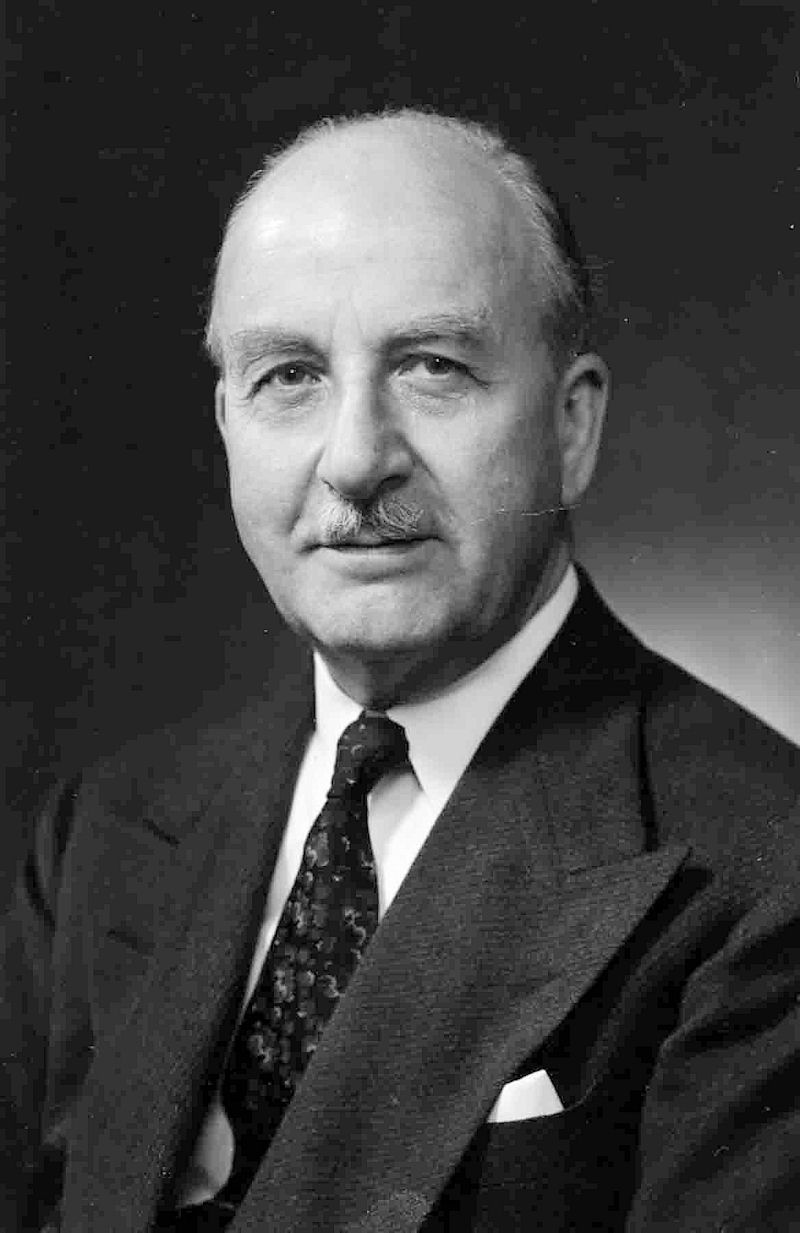 |
Cochran, Jacqueline
|
Jackie Cochran
|
||
|
"Jacqueline Cochran's earliest memories are of life with a foster family on what she called "Sawdust Road," but what was, in fact, a lumber mill town in northern Florida. In her autobiography she remembered having no shoes until she was eight years old, sleeping on a pallet on the floor and wearing dresses made of cast-off flour sacks. As a child she was hired by a beauty shop owner, and by the time she was 13, she was cutting hair professionally. In the 1920s she became one of the first women to master the newly invented permanent wave. But one of the customers, noting Cochran's spark, encouraged her to do something more serious with her life. With very little formal education, Cochran enrolled in nursing school. Even though Cochran completed three years of training to be a nurse, she never quite adjusted to the profession. In her autobiography, she remembers not ever getting "comfortable with the sight of blood." She constantly had to resist the urge to hand in her notice, reminding herself that a nurse was more valuable than a beautician. But she was never convinced, and an experience delivering a baby to an impoverished mother in Florida helped drive her back to the beauty trade. She remembered three children were sleeping on pallets next to the woman giving birth. "There I was with neither the strength nor the money to do the smallest fraction of what needed to be done to make those lives better... . In a beauty shop the customers always came in looking for a lift. And unless I really screwed up," she concluded, "they left with that lift." Her next job as a beautician at Antoine's in New York's Saks Fifth Avenue brought Cochran into her future husband's world. At a dinner in 1932, the dashing millionaire financier Floyd Bostwick Odlum advised Cochran that if she were ever to realize her dream of setting up her own cosmetics firm, she'd need wings to cover enough territory to beat her competition. Cochran took the advice to heart, and that summer she learned to fly. "At that moment, when I paid for my first lesson," Cochran remembered later, "a beauty operator ceased to exist and an aviator was born." Macrobertson Air Race in 1934 Excerpt from: "JACKIE COCHRAN, An Autobiography" by Jacqueline Cochran & Maryann Bucknum Brinley "Gee Bee stands for Granville Brothers, a Springfield, Massachusetts, airplane company which made fast, unstable, dangerous planes in the thirties. The nearly cute nickname is a sham. They were killers. There were few pilots who flew Gee Bees and then lived to talk about it. Jimmy Doolittle was one. I was another. I tell you all this as a prelude to my story about the London-to-Australia race. I flew a Gee Bee, the QED Gee Bee, but a Gee Bee nonetheless. The QED was Latin for "Quod Erat Demonstrandum" and came from the designers who translated that as "Quite Easily Done." It was not easily done, however. The crazy QED violated basic rules of aerodynamics. Clyde Pangborn had entered his name in the race, hoping to find himself in a Gee Bee but, because of problems at the factory as well as an offer from Roscoe Turner, who had never flown over oceans before and knew that Clyde had, the QED was still sitting in the hangar, almost ready to go. Clyde had joined Roscoe's team but was still the registered owner of an entry. He had the official right to name an alternate crew, and I knew it. Sitting in New York, after my conversation with Royal, searching for a way to stay in the race, I remembered Clyde's QED and made all the right calls. Granville Brothers knew me because I myself had approached them earlier in the game but had changed my mind when I compared it with the chance to be in a Northrop. Jack's planes were so streamlined and beautifully fast for their day. But any plane was better than no plane. I bought the Gee Bee with a little help from my friend Mabel Willebrandt. Granville Brothers were pleased because they were anxious to make a name for themselves in such a prestigious international contest. They even offered to send mechanics along to complete the plane en route to London on the ship. In the meantime, I had Wesley Smith and Royal Leonard take some of the sophisticated equipment out of the Northrop Gamma so we could install it in our Gee Bee. We had four hours to make the official arrangements with the London officials. I needed what was called an airworthiness certificate, numerous permissions to fly over all those countries, not in a Gamma but a Gee Bee, and Mabel turned on the steam. Mable even convinced a Department of Commerce official to go along on the boat to do the necessary testing. Landing lights, flares, radio equipment - we planned to install as much as we could as we crossed the Atlantic, in spite of storms and seasickness. Not much would get done as it turned out. All this was done by telephone. I never set eyes on that Gee Bee until I arrived at the airport near Southampton, England, and tried to fly it to the field where the race would commence, twenty-four hours later. It was a disaster and still incomplete. The other disastrous aspect was the tremendous publicity surrounding the contestants. I had never experienced anything like it. I never sought publicity like that in my life because mostly it's a waste of your time. And I didn't like the scene there in London one bit. The press kept rumoring about the mysterious American woman entry, but there was nothing mysterious about my whereabouts or doings. I had a tricky, incomplete plane to contend with. In the meantime, Clyde Pangborn was giving me trouble and demanding that I pay him for the transfer of his entry. After all the anguish that Gee Bee had caused me - at that point I had no idea my troubles were just beginning - he had some nerve asking for money. I was furious. And I told him so. If I had been a man, we would have gone out behind the hangar to fight it out.... The starting point the next morning was a nearly-completed Royal Air Force base at Mildenhall, sixty miles north of London. The lord mayor of London was there promptly at 6:30 am to drop the official white flags. Planes took off at 45-second intervals, and the famous team of Mollisons - Amy was a wonderful pilot and flew with her husband - were first. Wesley and I were fourth in line and had been warming up the engine, but as soon as we were airborne, the plane sort of staggered, dipped slightly, and I knew we were in for a real ride. Neither of us knew that Gee Bee well enough. We recovered speed, however, and we were serious about sticking with it. The haze was horrible and I was happy Wesley had been such a nag about my instrument training and Morse code lessons. This race, however, was actually the first and last time I relied on Morse code. After all the hullabaloo in America about this contest, only three American-crewed entries remained: Roscoe Turner, the United States speed king at the time; Jack Wright, a stunt pilot from Utica, New York; and me. When you compared the elaborate preparations I had made for the flight - sending specialists ahead on the route with automatic refueling devices, flares, spare parts, personal items, extra instruments - as well as the whole debacle with my Northrop Gamma - to Jack Wright's simplistic attitude, I really wondered. All Jack wanted to do en route was to "fly this plane while it's still mine". It was a tiny Lambert Monocoupe with a single 90 horsepower that hummed along. Who had more sense: him or me? I had even sent clothes along to Melbourne so I'd have something to wear to the festivities. But I wasn't alone with my big thinking. Roscoe Turner had gone into hock to buy a Boeing transport plane he called the "Nip and Tuck". Then because of rough weather he hadn't been able to get it off the ship at Plymouth. They had to take it over to France, to Le Havre, where the French tried to make him pay import duty of $20,000. He got around that but had to unload the plane, assemble it, and fly it back to England in time. That was funny about all of our best-laid plans was that the Europeans had been sullen and some of them openly angry about what they believed to be a Yankee conspiracy to walk away with all the prize money. Little did they realize. My Gee Bee was the fastest plane in the race, I believe, but right from the start I realized that it wouldn't be speed that would win. Jackie and her co-pilot Wesley Smith were forced down by engine trouble in Rumania. In 1953 she became the first woman to break the sound barrier in a F-86 Sabre jet fighter, earning the title 'America's Fastest Lady'. d. 9th August 1980 in Indio, California, aged 74
|
Cochrane, Ralph Alexander
| Ralph Alexander Cochrane |
|
|
|
b. 1893 later Air Chief Marshall The Hon R Cochrane. In 1930, he was at the RAF Staff College. |
Cockerell, Stanley
| Capt Stanley Cockerell AFC, Croix de Guerre (Belgium) | ||
|
photo: 1930, aged 33 |
b. 9 Feb 1895, the 'willowy' Vickers chief test pilot - he and his assistant Frank Broome (q.v.) were known as the 'Heavenly Twins'. RFC in WWI (7 victories). Married Miss Lorna Lockyer in 1921. Killed in WWII: on the 29th November 1940, when the Running Horse(s?) Pub in Erith was bombed. His 6-year-old daughter Kathleen also died and they were buried at the church of Saint Mary, Sunbury on Thames. Lorna also died during the Blitz. Some children survived and were split up and most were adopted, losing touch with each other. |
|
Comper, Nicholas
|
Flt-Lt Nicholas Comper
|
||
|
|
lecturer at the Cranwell Engineering Laboratory, ex Cambridge University. Designer of the Comper Swift; died in 1939 after a practical joke went wrong |
|
Cook, Arthur Harry
|
Mr Arthur Harry Cook
|
||
|
b. 29 May 1909 in Bletchley, Bucks; educated at Bletchley Grammar. In 1932, worked for Beacon Brushes Ltd, Bletchley; apparently, brush-making is Bletchley's oldest large-scale industry and Beacon Brushes was formed in 1926 by 'Jack Cook and his sons'. See http://www.discovermiltonkeynes.co.uk Arthur's father was called Arthur John Dennis Cook, but anyway by 1943 our Arthur was 'Works Manager and Joint Managing Director' of the firm, based at Church Farm, Wavendon, Bucks. Which is near Bletchley (that's enough mentions of Bletchley).
Air Transport Auxiliary in WWII
d. 1980 |
Cotton, Frederick Sidney
|
Flt-Lt Frederick Sidney Cotton OBE
|
||
|
in 1916, when a Flt Sub-Lt in the RNAS b. 17 June 1894 in Bowen, Queensland, Australia RNAS in WWI; he invented the 'Sidcot' flying suit, which was standard issue in the RAF until the 1950s. There was a curious period in early 1920 when four sets of people tried to fly from Cairo to Cape Town; not for any particular prize or competition, but just because they fancied being the first to do it. Frederick Cotton and his engineer Capt W A Townsend flew a DH.14a and were the least successful of the lot, making a forced landing in southern Italy and writing off the machine before they even got to Cairo. In the winter of 1920-21 he and Alan Butler were in Newfoundland, "doing some extremely useful work surveying, spotting for seals, etc", and the following September they both competed in the Croydon Aviation Meeting. In late 1922 he had "exciting times" in flying from Newfoundland to the newly-discovered gold fields at Labrador. He then settled into being a pilot in Newfoundland, although he came back to England occasionally, for example for the 'Portsmouth Trophy Race' round the Isle of Wight in 1934, in which he came second. Married 3 times, clever, sometimes quite rich (although he died penniless) and rather, er, "unorthodox" (bleedin' awkward, by the sounds of it), he spent WWII as an unofficial advisor to the Admiralty, especially involved with photographic reconnaisance and airborne searchlights. d. 13 Feb 1969 in London |
Courtney, Frank Thomas
|
Capt Frank Thomas Courtney
|
||
| An Irishman and early aviator; he test-flew the prototype D.H.18 - de Havilland's first purpose-designed airliner - in March 1920 and often flew it in service.
Also flew in the 1929 Cleveland National Air Races. Also flew the Cierva autogyro in 1925, (but not in the King's Cup) |
Crossley, Fidelia Josephine
|
Miss Fidelia Josephine Crossley
|
||
|
'Delia', born 1st June, 1905, the daughter of Sir Kenneth Irwin, 2nd Baronet Crossley, Chairman of the Crossley Car and Engineering companies in Manchester. In 1919, the Crossley family moved to Combermere Abbey, Whitchurch, Shropshire and her father held the offices of High Sheriff and Justice of the Peace for Cheshire. These days, although it continues in private ownership, Combermere Abbey ‘welcomes visitors in groups or on specific days by appointment’. It has been described as ‘one of the most romantic places in Europe’ . Gained her pilot’s licence in 1930. She only competed in the King’s Cup once - in 1931, when she was the only woman competitor to finish, a gallant 20th out of the 21 finishers (another 20 dropped out on the way, don't forget). August 1931 found her in Dublin; "Among the visitors was one who deserved especial mention, and that was the intrepid Miss Crossley, who put up such a fine show in the recent King's Cup race. She flew the long way round, and is now continuing to tour the country." In 1932, she visited India, where "we hear she has been doing a considerable amount of flying." In fact, she competed in the Viceroy Cup (India's version of the King's Cup) with 5 other English pilots and 6 from India. She also competed in several other races and gatherings, e.g.
Delia with C C Grey (editor of 'The Aeroplane'), Mrs Grey, Connie Leathart and others. She also entered her Comper Swift in the 1932 King's Cup Race, but withdrew before the start, and seems to have retired from air racing in 1935. On the outbreak of WWII, Delia became an ambulance driver for the London County Council, but then applied for a job as a ferry pilot for the Air Transport Auxiliary (ATA). Air Transport Auxiliary in WWII She married Geza O Schubert in September 1949.
Fidelia’s de Havilland D.H. 60G Gipsy Moth G-AAKC (seen here behind G-AACY) was first registered in July 1929, and she bought it from Malcolm Campbell Ltd, the Moth distributors for the UK. She eventually passed it to her father, and it was then sold in South Africa in 1937. Her Comper Swift was first registered in February 1932 to J D M Gray, and she sold it to Arthur H Cook. It ended up in Indonesia.
|
Crossley, Winifred Mary
|
Winifred Mary Crossley
|
||
|
b. 9 Jan 1906 in St Neots
Winifred spent more than five years towing banners for aerial advertising and as a stunt pilot in an air circus. She served for the full 5 years of the ATA in WWII. Separated from her first husband; in 1943 she married airline captain Peter Fair, head of BOAC-owned Bahamas Airways in Nassau." Died in 1984 in Aylesbury, Bucks. |
Cubitt, William Partridge
| William Partridge 'Pat' Cubitt | ||
|
|
|
|
|
b. 26 Oct 1898, Bacton, Norwich A Farmer, of 'Bacton Abbey', Norwich In July 1931, the owners of the Norfolk and Norwich Aero Club decided that they would like to "repay a little of the hospitality they had had from the hands of other private owners of other clubs. Some forty aircraft arrived from all parts of the country, and were welcomed by Messrs Gough, Surtees, Brett and Cubitt, bunches of tickets were shoved into their hands, and they were told to jolly well enjoy themselves ... which they did!! On the Sunday they went over to Pat Cubitt's place at Bacton on the coast, and were treated to a picnic lunch on the sand dunes. d. 14 Dec 1955 leaving £48,748 5s 5d (having inherited about £62,000 in 1929) |
||
Cumming, William Neville
| FLt Lt William Neville Cumming DFC | ||
|
|
|
|
|
b. Edinburgh 22 Sep 1899 flew in N Ontario 1926-7; 1926-30 on the trans-prairie night mail; Imperial Airways from 1930 RAeC Certificate No 22856 in 1947, by which time he was a Company Director and lived in Epsom, Surrey. |
||
Cunnison, Margaret Macdonald
|
Margaret Macdonald Cunnison
|
||
|
b. 29 May 1914 in Bourneville, Birmingham, but educated at Laurel Bank School, Glasgow. Father: James Cunnison, of 19 Montrose Gardens, Milngavie, Dumbartonshire. 5 foot 2, eyes of, er, hazel. From May 1937, Chief Flying Instructor with the Strathtay Aero Club, Perth (the one in Scotland). She was only the second woman in Scotland to gain a commercial pilot’s licence, and the first to become a flying instructor. She then became one of the 'First 8' women ATA pilots, joining on the 1st January 1940 as a Second Officer. Air Transport Auxiliary in WWII She married Major Geoffrey B Ebbage, an ophthalmic surgeon with the RAMC, in 1941. d: 4 January, 2004, in Haddington, aged 89 |
David, Edward Hugh Markham
| Flt-Lt Edward Hugh Markham David | ||
|
I think this must be Flt-Lt (later Sqn Ldr, Wing Cmdr from 1939, Grp Capt, CBE) Edward Hugh Markham David, who served in the Navy in WWI, as a cadet at Osborne in 1914 and Dartmouth, and a midshipman in the 'St Vincent', 'Whiteley', and 'Revenge'. He was one the very first tranche who trained at RAF Cranwell when it opened in 1920. b. 10 Jan 1901 in Monmouth, he was posted to Iraq in 1921-25 and Aden in 1932-4, then became Adjutant of 604 (County of Middlesex) Squadron, Auxiliary Air Force. DFC in September 1941; retired and moved to Malta after WWII; his daughter Diana Elizabeth Markham married in 1952. d. 1957 |
Davies, Cyril G
|
F/O Cyril G Davies
|
|
Partnered Lt-Cmdr E M Hill in the MacRobertson Race AHSA_1985_AH_Vol_24_No_1-2 says: "The pair who had flown together in the Fleet Air Arm became known as “Burglar Bill and the Missionary”. Davies earned the title of the “missionary” no doubt because since leaving the R.A.F. some time previously he had been running a shelter for destitutes in the West End of London. |
Dawson, Wilfrid Leslie
|
Flt-Lt Wilfrid Leslie Dawson
|
||
|
b. 2 Apr 1890 in Huddersfield. One of the first tranche of cadets at Cranwell when it opened in 1920. Posted to RAF Staff College, Andover from January 1934, for 'Staff College Course No 12', then posted to 'Headquarters, Palestine and TransJordan' the following year. Sqn Ldr from 1936. Married Elizabeth McIntyre, and their daughter was born in the Government Hospital Jerusalem in 1936, while he was also learning 'colloquial Arabic'. 216 (Bomber Transport) Sqn in Egypt in 1937, Wing Cmdr from 1939. In December 1939 he was one of 6 who survived the crash of an Imperial Airways airliner which crashed in the Mediterranean (5 died). Grp Capt and CBE in 1943; Air Commodore and CB in 1945; Air Vice Marshall in 1948; Deputy Chief of Staff for Plans and Operations at NATO in 1953. |
de Bunsen, Mary Bertha
| Mary Bertha de Bunsen | |
|
in 1932, aged 22. |
|
|
Mary was born 29 May 1910 in Madrid, the daughter of Sir Maurice, the British Ambassador there. She had been dragged round dances and hunt balls by her parents in the hope of finding her a suitable husband - these were, of course, in short supply after the carnage of WWI. "I was far too innocent to realise... that with a lame leg [after a childhood attack of polio] and horn-rimmed glasses I stood no chance whatever". She contributed many articles to aeronautical journals during the 1930s. Her autobiography is called "Mount up with Wings" d. 1982 in Dorset.
|
de Havilland, Geoffrey
|
Capt (later Sir) Geoffrey de Havilland O.M. K.B.E A.F.C Hon.F.R.Ae.S |
||
| Geoffrey de Havilland - Wikipedia has his story |
de Havilland, Geoffrey Raul
|
Mr Geoffrey Raul de Havilland
|
||
|
Geoffrey Junior, aka 'Young D.H.' born in 1910 and learnt to fly at Stag Lane at a tender age. Took over as chief test pilot at de Havillands when Bob Waight was killed. Second Brit to fly a jet-propelled aircraft on its first flight, the Vampire in 1943. Killed when the second DH108 Swallow broke up and crashed in the Thames estuary in 1946. Flight 18th April 1946 As a test pilot young D.H., as he is universally called,has not an exceptionally long history. He took over the chief test pilot's position in October, 1937, when R. J. Waight unfortunately lost his life on the T.K.4. Being, however, the son of his illustrious father, Sir Geoffrey de Havilland, who designed, built and test flew his own aircraft from 1911 onwards, young Geoffrey can be said to have been ''in the industry'' from the very cradle. It is not generally known that Sir Geoffrey took his R.Ae.C. ticket No. 53 in February, 1911, on the second machine of his own design and construction, and that he has made many of the first flights on new D.H. types right up to the Moth Minor in 1938. Geoffrey's first flight is lost in the dim past, but certain it is that at the tender age of six he was flying with father at Hendon in a D.H. 6 (also known as the Clutching Hand). When 18 years of age he left school and came to de Havillands as a premium apprentice for 4 years and learnt to fly on Moths at the firm's reserve training school. After spending two years in the drawing office—much of the time being spent looking out of the windows envying the pilots—he joined the Air Operating Company, who were doing a lot of air survey work in South Africa. This, however, gave him but very little flying, and at the end of six months, he came back to England to become a flying instructor to the D.H. Technical School. The aircraft were wooden Moths built by the students. In 1929 he took his B licence; a very simple business in those days. Some 20 or 30 hours' solo flying, a little cross-country work, a simple "Met" exam, and about one hour's night flying at Croydon was sufficient to qualify. In 1934 Capt. Hubert Broad was chief test pilot of de Havillands, and Bob Waight looked after the production side. There was so much work, however, that Geoffrey was given the opportunity to lend a hand testing Tiger Moths, Dragons, Rapides, Express Air Liners, and Hornet Moths. Broad left the company in 1935 and Waight took over, starting, with the Dragonfly and later the Albatross. It was during the period when the prototype Albatross was going through its development flying that Waight lost his life, and de Havilland took over as chief test pilot. Nobody could have taken on a more interesting or more complex job because the Albatross was completely experimental from tip to tail. Engines were new, construction was new, and the layout was extremely advanced. He had a curious experience on the Albatross. While its strength was ample for all flying loads, some unfortunate drilling had weakened the fuselage under ground loads, and shortly after landing from a test flight the machine broke in halves on the ground. When war broke out lie was busy testing Oxfords and Flamingoes, but when things became desperate at the time of the Battle of Britain, de Havillands did a big job doing emergency repairs to shot-up Hurricanes. Dick Reynell of Hawkers came over and gave Geoffrey the "know how" on Hurricanes. A little later Dick went out on operations with his old squadron (No. 43) and was, unfortunately, shot down.' He was an excellent test pilot and a gallant gentleman. Improvised Runway Geoffrey flew the first Mosquito at Hatfield on November 21st, 1940, but he is more proud of the first flight of the prototype Mosquito fighter. This was built at a dispersal factory with no airfield. To save some six week's wasted time in transport and re-erection at Hatfield, Geoffrey used local fields by having bridges built over ditches to give him a 450yd run for take-off, and then flew the fighter to Hatfield. He is, of course, one of the only two men in Britain to have made first flights on jet-propelled aircraft. The Vampire was flown for the first time on September 21st, 1943, but Geoffrey had already flown the Gloster E.28 at Farnborough. The first airing of the Vampire proved it to be a tribute to the D.H. design and aerodynamics staff, as it behaved almost exactly as they had forecast. There was, however, somewhat of an aileron overbalance which limited the speed to 250 m.p.h. and a rather severe tip stall. Geoffrey de Havilland had made a number of investigation flights on Mosquitoes for compressibility effects, but on the Vampire he has done extensive work. The Vampire, under the effects of compressibility, executes a series of sudden high-speed stalls: the path of the machine is similar to an artist's conception of a streak of lightning, and unless the pilot is strapped-in tightly he is likely to be knocked out by hitting the cockpit roof. Geoffrey, with another pilot, has flown the Vampire in tight formation at over 500 m.p.h., and to investigate snaking, which is causing considerable trouble on most jet aircraft, he has flown the Vampire with rudder locked. Like most of the test pilots, he is living on borrowed time, they having at some stage of their careers had close shaves. Strangely enough, Geoffrey's nearest go was on about the mildest type he ever flew. It was the first production Moth Minor. The prototype had completed its spinning tests, and the same tests on the production model appeared to be only a matter of form. He was flying with John Cunningham (now Group Capt., D.S.O.,D.F.C., and test pilot for the D.H. engine division) at the time. The Minor was put into a spin at 5-6,oooft, but after it had failed to come out in five turns and the engine had stopped, a panic decision was made to abandon ship. Test-flying a Hurricane, too, almost saw him off. This particular aircraft had had a gruelling time in the Battle of Britain, and the whole canopy came off at 4,000ft.hitting him in the face as it blew backwards. At first blind through the amount of blood in his eyes, he flew more by instinct than anything else until he found he could get a little relief by holding his face close to the instrument board. The blood dispersed a little and he was able to land through what appeared to be a thick yellow haze. He wears the scars across his nose to this day, and there was a terrible moment during that flight when he thought he was really blind. On another occasion the oxygen bottle contained only compressed air, and the effects from this were at first blamed on the previous night's party. At the other end of the scale was the test of the T.K.5, a tail-first aircraft built by the technical school. Impecunious at the time, Geoffrey had already mortgaged the bonus for the first flight. Imagine his consternation then when, after roaring the whole length of Hatfield airfield, the machine showed no sign of lifting. The forward elevator was ineffective. The T.K.5 never did fly and was finally abandoned. In the days of peace before the war Geoffrey de Havilland was to be seen at all the air meetings and twice finished 4th in the King's Cup Race flying the TK1 and TK2. |
de Havilland, Peter Jason
| Mr Peter Jason de Havilland | ||
|
|
||
| middle son of Geoffrey; both his brothers were killed in flying accidents, but he survived and published his father's autobiography in 1979 | ||
Denman, Roderick Peter George
| Roderick Peter George Denman | ||
|
|
||
|
b. 1894 A descendant of William the Conqueror, apparently.
With the cast of 'The Blue Squadron' in 1934 - l to r: John Stuart, RPG Denman, 'Doc' Salomon (Studio Manager) and Greta Hansen. http://en.wikipedia.org/wiki/The_Blue_Squadron_%281934_film%29 A Civil Servant (Board of Education) who then worked for Airwork - by 1936, a director of Heston Airport. He seems to have specialized in wireless equipment. M.A. (Cantab); member of the Old Etonian Flying Club; he was also a member of 'the Listeners', who won a spelling bee against the BBC in 1938. He was one of the few people who made no mistakes! Later a Lt-Col in the Royal Corps of Signals. Killed in WWII; 20 November 1941 in Libya, aged 46. |
||
Diamant, Albert Marc
| Mr Albert Marc Diamant | ||
|
|
||
|
b. c.1898. From Warfield, Berkshire. Flight, 1939: "Capt. Mark Diamant has been appointed as the new general secretary of the Guild of Air Pilots and Navigators. He has been associated with the work of the Guild almost since its inception. He was a [WWI] pilot, and was for some five years the manager of the aviation department of the Dominion Motor Spirit Co. Capt. Diamant is well known in the flying club world and is, if we remember correctly, actually a member of some dozens of clubs all over the country." Killed in WWII: 30th January 1942, when a Wing Commander, 24 Sqn RAF(O); his remains were cremated at Oxford |
||
Dickinson, Vincent Neville
| Mr Vincent Neville Dickinson | ||
|
|
||
|
Father: Frank Dickinson, a Merchant, Mother: Sarah Jane [Bayley] 2nd-Lieut, RFC, RAF in WW1; Pilot Officer from 20 Nov 1923 He was one of two pilots who inaugurated the Belfast to Liverpool Daily Air Service in April 1924 (the other was Alan Cobham), He started out at 05:30am in his D.H. 50, but the weather was so bad he could get no further than Southport Sands. m. 18 Nov 1923 in Richmond-upon-Thames, Marjorie Winifred [Lloyd-Still] (1 daughter, Katheen b. 1926) Elected a Member of the Royal Aero Club in June 1925 Formed Aero Hire Ltd in 1927, based in Birmingham, to "establish, maintain and work lines of aeroplanes, seaplanes and taxi-planes and aerial conveyances, etc. (later co-owned, with L W van Oppen,) Competed in the King's Cup in 1929, flying G-EBTH, a DH.60X Moth. He was forced to retire at Blackpool. Hon. Secretary and Chief Instructor, Hertfordshire Flying Club, St Albans in 1932
He owned G-EBZZ, a 1928 DH60 X Moth, which crashed at Stansted Abbots 23 Jun 1934
One reported accident: - 14 Mar 1939, flying G-AEDD, a 1936 Avro 504N belonging to Publicity Planes Ltd; he hit a fence and crashed at Calderfields Farm, Walsall, after engine failure. Address in 1939: 'Muree', Queen's Rd, Sandown, Isle of Wight
Briefly (5 Jun to 5 Jul 1940) a pilot for the Air Transport Auxiliary (ATA) Sub-Lieut in the Royal Navy from 15 Jul 1940 Address in 1962: 10 Oakwood Rd, Rayleigh, Essex d. 3 Sep 192 - London |
||
Dismore, Frederick
| Frederick Dismore | ||
|
|
|
|
|
One of the original 16 pilots of Imperial Airways in 1924 b. East Ham 26 May 1893 pilot for Handley Page Transport Ltd 1921-24 May 1926: "161 MILES PER HOUR. Captain F. Dismore. an Imperial Airways pilot, flew a specially chartered Vickers Napier express from Croydon Aerodrome to Brighton yesterday in the record time of 13 minutes, an average speed of 161 miles an hour." April 1933: "MASONIC FLYING CLUB HOLD FIRST MEETING AT BROOKLANDS. Members of the new Masonic Flying Club held their first official meeting at Brooklands to-day. The club is composed of Masons from all over the country. The idea occurred to a group of pilots at Croydon who are Freemasons. Capt. Dismore, a well-known Imperial Airways pilot, flew several of the members over to Brooklands from Croydon in an Imperial Airways machine, making two trips for the purpose, and others travelled by road. There were about a hundred present in all. A miniature air pageant was staged for their benefit, and the Masons were greatly interested in a demonstration of new fire-resisting paint, and in the Lowe-Wylde powered glider. The club proposes to acquire headquarters in the neighbourhood of Brooklands, where arrangements w ill be made for them to receive flying instruction." |
||
Don, David Sigismund
| Sqn-Ldr David Sigismund Don | ||
|
photo: 1914, when a midshipman in the Royal Navy, aged 18 |
photo: 1930, aged 34 |
|
Douglas-Hamilton, Malcolm Avondale
| Lord Malcolm Avondale Douglas-Hamilton OBE DFC | ||
|
|
||
|
b. 1909, the third of four brothers involved in aviation before, during and after WWII.
In 1932, Flight reported that "The amphibian service between the Clyde and Belfast was opened on August 13 when the new flying-boat Cloud of Iona made the first trip. The passengers included Lord and Lady Malcolm Douglas Hamilton." He was granted a commission as a Flying Officer in June 1932, in 603 (City of Edinburgh) (Bomber) Squadron, Auxiliary Air Force. Later a Wing Commander / Acting Group Captain during WWII who, with his second wife Natalie Winslow, founded the American Scottish Foundation after the war. Died 1964 in a flying accident in Cameroon. ------------ Malcolm's younger brother David was killed in WWII when he crashed just short of RAF Benson to which he was returning from a mission in a Mosquito; his elder brother George married ATA pilot Audrey Sale-Barker (q.v.), and finally his eldest brother Douglas flew over Everest and later became an Air Commodore in the RAF - it was he who handed Rudolph Hess over to the authorities.
Here is Douglas, getting ready to go on Lady Houston's Everest expedition in 1933:
|
||
Douglas, Rod
| Capt Rod Douglas | ||
|
|
||
|
A Director of de Havilland South Africa, and one of the founders of the Johannesburg Light Aeroplane Club.
In 1932, with Geoffrey de Havilland Flight, May 2, 1930: "S. African King's Cup Entrant CAPT. DOUGLAS, of the Johannesburg Light Aeroplane Club, who will represent the Aero Club of South Africa in the King's Cup Race, will fly to England in a Junkers five-seater monoplane." HISTORY OF BARAGWANATH AIRFIELD AND JLPC: "In 1926 two WWI pilots, Captains Rod Douglas and Stan Halse, met at a little hotel run by Douglas, which later became famous as a Johannesburg landmark, known as Uncle Charlies, named after big game hunter and entrepreneur, Charles de Jongh, who also ran a filling station at the well-known intersection. |
||
Dowding, Hugh Caswall Tremenheere
| Air Commodore (Later Air Chief Marshal) Hugh Caswall Tremenheere Dowding, 1st Baron Dowding, GCB, GCVO, CMG | ||
|
|
|
|
|
b. 24 April 1882, Moffat, Dumfriesshire d. 15 February 1970 |
||
Downes-Shaw, Archibald Havergal
| Archibald Havergal Downes-Shaw | ||
|
|
||
|
from Bristol b. 29 Dec 1884 Chairman of the Bristol and Wessex Aeroplane Club, Ltd; later Sir Archibald. Served in France, Salonika and North Russsia in WWI. Member of Bristol City Council from 1931; alderman in 1936. d. 4 Sept 1961 [His father (also called Archibald), was an Anglican clergyman and missionary in East Africa between 1881 and 1888; in 1889 he transferred to Mauritius where he was appointed as "chaplain of Vacoas and Black River". In 1882 he had married Amy Havergal [hence Archibald Jnr's interesting second name], but Amy died in Mauritius in 1890 and Archibald Snr was invalided back to England, recovering enough to marry Alice Montagu in 1893 and have 3 more children.] |
||
Draper, Christopher
| Maj Christopher Draper DSC, Croix de Guerre | ||
|
photo: 1913, aged 21 |
|
|
|
b. 15 Apr 1892 in Bebington, Cheshire WWI pilot known as the 'Mad Major'; he once challenged a colleague to an aerial duel ... with real bullets... In 1919, "Major Draper's flying on the B.A.T. Bantam is easily one of the greatest attractions of the show ... it can truly be described as thrilling"; the following April, he was reported to be progressing well after his recent serious accident, his fractured ankle being in "splendid position". Ten years later in September 1931, however, he was caught up in a strange little incident. Having not flown for many years, jobless and absolutely broke, he borrowed £5, hired an aeroplane and flew it twice under Tower Bridge and once under Westminster Bridge. He did this, he said, "to prove that he was still the highly qualified specialist that he used to be". The alderman in charge of the case said he had been intending to fine him £100, but bound him over rather than send him to jail for non-payment; "I am surprised that a man with such qualifications should find it so difficult to get a job". Actually, the ruse worked and led to him becoming an actor and stunt pilot in several films in the 30s. Then things got even more curious when his constant criticism of Britain's treatment of its war veterans came to the attention of the Nazi Party, and he was asked to spy for the Germans. He agreed, but also mentioned it to MI6, and spent four years as a double agent until the Germans obviously worked out what was going on and stopped answering his calls. The pattern repeated itself after WWII - in May 1953, aged 61, having drifted into and out of a number of jobs, he hired an Auster and this time flew under 15 of London's 18 bridges, "for the publicity".
He escaped with a fine this time as well. The Mad Major published his autobiography in 1962, and died in 1979 in London aged 86. |
||
Drew, Donald Herbert
| Donald Herbert Drew AFC | ||
|
in 1917 |
with Adelaide Cleaver in 1929 |
|
|
b. London 23 Sep 1899 'Aeroplane and Seaplane pilot' 2 July 1930: "AIR PILOT DIVORCED. JUDGE'S COMMENTS ON CO-RESPONDENT. A decree nisi, with costs and custody of the child, was granted in the Divorce Court yesterday to Mrs Arabella Beatrice Angela Drew, who gave her address at the Stafford Hotel, St James's Place, London. She had petitioned for the dissolution of her marriage to Captain Donald Herbert Drew, of the Aerodrome Hotel, Croydon, on the ground of his alleged adultery with Mrs Kathleen Brookie Digby, who offered to write her address, but said she had no permanent home. Captain Drew, an Imperial Airways pilot, was in charge of the aeroplane from which Captain Loewenstein, the Belgian financier, disappeared over the Channel. The suit was defended, and Captain Drew and Mrs Digby gave evidence denying the allegation. Mr Justice Hill, giving judgment, said that there was evidence that Mrs Digby entertained flying officers at the house and that they went there for tea or cocktails. It was obvious from the evidence that Mrs Digby was a woman who was quite capable of committing adultery with Captain Drew or, indeed, he thought, with anybody else." He married again, a year later: 9 June 1931: "ROMANTIC MEETING IN AIRPLANE. NOTED ACTRESS AND PILOT TO MARRY. Miss Betty Eley, the musical comedy actress, who played the part of Lady Mary in " The Vagabond King " at the Winter Garden Theatre, London, has become engaged to Captain Donald Drew, the noted air pilot. Miss Norah Blaney, who was also one of the principals in " The Vagabond King " arranged a tea party in an airplane about four years ago, and Captain Drew piloted the machine over London while the party was in progress. Miss Eley was one of the guests, and she and Captain Drew became friends. About 15 months ago Miss Eley went out to Australia, where she appeared in "Hold Everything," and "Love Lies." She returned to England about six months ago. Miss Eley said to-day: "We shall not be married for some time, as my fiancé will be away for three months." d. 1936: "Capt. Donald Drew, for some years an Imperial Airways pilot, died in London today after a long illness at the age of 36. Capt. Drew was piloting Capt. Lowenstein's private plane when the Belgian millionaire fell from it into the Channel on July 4. 1928. When Capt. Lowenstein offered him a position as a pilot he would not take it until Imperial Airways agreed to lend him to the 'Lowenstein Navy', as the financier's air fleet was called." Wierdly, Lowenstein's biographer, a Mr Norris, in 1987 "concluded that Lowenstein had been thrown from the aircraft by Donald Drew, the pilot, at the behest of Madeleine Lowenstein, the motive being to gain control of Lowenstein's fortune. He suggested that the aircraft's rear door was completely removed while in the air and a replacement fitted on the beach at St. Pol." |
||
du Boulay, G GH
| Flt-Lt G GH du Boulay | ||
|
|
||
Dudley, W A
| Mr W A Dudley | ||
|
|
||
Edwards, Edward Cecil Theodore
| F/O (later Flt-Lt, Sqn Ldr) Edward Cecil Theodore Edwards | ||
|
|
||
|
Cecil, brother of Hugh. From Kensington, London. Sometimes known as "Sphinx". M.A.(Oxon); rowing blue in 1925 and 1926 (when he was the "best man in the crew, as always"); the first member of the Oxford Air Squadron to qualify as a pilot. Flew, with Winifred Spooner, a Desoutter in an attempt to reach Cape Town in 1930, but they had to ditch in the sea off Italy, and swim about a mile to shore. Winner of the King's Cup in 1931; here is his "Competitor's Armband" from the race:
Apparently, after the race, "a triumphant Cecil 'Sphinx' Edwards was invited to Sir Robert MacAlpine's house to celebrate the win (Sir Robert had lent Sphinx his Bluebird aeroplane). On leaving the party, Sir Robert grabbed the trophy, said "Well done Edwards" and that is the last that Sphinx or the family would ever see of the trophy. It is now awarded at Henley as The Prince of Wales Challenge Cup after mysteriously being donated to Henley by an antique shop owner." with many thanks to Gavin Jamieson, who found the armband among his family's archives
Killed in WWII: 31st August 1940, when a Wing Commander (pilot) 53 Sqn RAF; buried in Rotterdam, Holland. |
||
Edwards, Hugh Robert Arthur
| P/O (later F/O, Flt-Lt) Hugh Robert Arthur Edwards | ||
|
|
||
|
'Jumbo', the famous Oxford rowing coach, younger brother of Cecil
His grand-daughter's husband Gavin has written Jumbo's story, in four parts, starting here: https://heartheboatsing.com/2020/02/17/jumbo-edwards-oarsman-coach-and-raf-pilot-part-i/ |
||
Egglesfield, L A
| Capt L A Egglesfield | ||
|
|
|
|
| January 1939: "Captain L. A. Egglesfield, Imperial Airways 'million miles' pilot, has been appointed Deputy Director of Civil Aviation in India, and will take up his appointment next month." | ||
Eills, Dulcis Marie Miriam Margaret Mendoza
|
Dulcis Marie Miriam Margaret Mendoza Eills Royal Aero Club Certificate 8753 (24 Aug 1929) |
||
|
|
||
|
b. Waterloo, nr Liverpool, 7 Aug 1897 A Housewife |
||
Elliot-Wilson, Frank Charles
| Capt Frank Charles Elliot-Wilson | ||
|
|
|
|
|
b. King William's Town, S Africa 19 Dec 1897 pilot on the South African section of the London-Cape Town route |
||
Elliott-Lynn, Sophie
|
Sophie Elliott-Lynn / Lady Mary Heath Royal Aero Club Certificate No. 7975 (4 Nov 1925) |
||
|
|
Lady Heath at Roehampton |
|
|
b. Sophie Catherine Theresa Mary Pierce-Evans on 10th November 1896 in Knockaderry, Co Limerick, Ireland; her crazed father beat her mother to death (with a stick) and was jailed for life, so she was brought up by her aunts. A well-known, courageous, determined and forceful sportswoman, an athletic 6-foot tall Irishwoman 'never averse to publicity' (which earned her the nickname 'Lady Hell-of-a-Din') who was elected World Champion Lady Aviator by the USA. At Stag Lane in 1926, Mrs Elliott-Lynn formed a small group owning a pale blue Moth, but was also the "somewhat erratic" pilot of an S.E.5... ...which she crashed a year later at Brooklands. In the same year, when Lady Bailey and Mrs Geoffrey de Havilland hit the headlines with a world record climb to 17,283 ft, Avro countered with Mrs Elliott-Lynn climbing to 19,200 and making a 1,300-mile trip in a single day, during which she made 79 landings. Then, her first husband Major Elliott-Lynn having died off, Sophie married Sir James Heath, Baronet, and thereby became Lady Heath. "Lady Heath stepped from her tiny aeroplane at Le Bourget after her long flight from the Cape in May 1928, as fresh as a daisy. 'It is so safe that a woman can fly across Africa wearing a Parisian frock and keeping her nose powdered all day.' This was the first solo flight from any overseas Dominion to Britain, and she was the first woman to pilot an aeroplane from Cape Town to London. Unfortunately, Sophie was not very good with Sir James' money; she was rather too easily persuaded to "buy a lot of things" and send him the bill. Having given her £20,000 as a marriage settlement and bought her an aeroplane, he was eventually obliged to take out a note in the newspapers forbidding her to "pledge his credit". The marriage was dissolved in 1932. Having fled to America, Sophie finally became plain Mrs Williams; he was an airman from Kentucky. d. 9 May 1939, aged 42, in London when she fell down the stairs of a tramcar. She left £204. Sophie owned, at various times:
|
||
Ellison, Ethel Margaret
|
Miss Ethel Margaret Ellison Royal Aero Club Certificate 8612 (21 May 1929) |
||
|
|
||
| b. Cleckheaton, 21 Jan 1904 | ||
Elsmie, George Reginald Alexander
| P/O (Later Wing Cmdr) George Reginald Alexander 'Reggie' Elsmie DFC | ||
|
|
||
|
b. Fellow 1927 Cranwell cadet Terry Huddleston said that Reggie was "possibly yhe most outstanding all-round cadet ever to enter the Services. He would almost certainly have become Chief of the Air Staff if he had not been lost in 1941" d. 18 April 1941 "Wing Commander G R A Elsmie, Sergeant C Jennings, Sergeant M B Appleby: missing believed killed; aircraft failed to return from an operational flight off the coast of Norway, Blenheim V5954, 114 Squadron" Commemorated on the Runnymede Memorial |
||
Esmonde, Eugene Kingsmill
| Lt-Cmdr Eugene Kingsmill Esmonde VC, DSO | ||
|
|
|
|
|
b. 1 Mar 1909 in Thurgoland, Yorkshire. Killed in WWII; after leaving Imperial Airways in 1939, he won a DSO and then a posthumous VC in 1942 for leading the first attack on the German battle cruisers Scharnhorst and Gneisenau, and the cruiser Prince Eugen. All of the six Swordfish torpedo bombers were shot down, and only five crew members rescued. |
||
Fairbairn, George Patrick
| Mr George Patrick Fairbairn | ||
|
|
||
|
He made an attempt in 1931 to set a record for the flight to Australia: "AIRMAN’S AMBITION. To Break Flight to Australia Record. The Australian airman Mr. G. P. Fairbairn, who arrived at Lyons aerodrome yesterday evening in his light aeroplane, has had to postpone his departure this morning owing to unfavourable weather. As soon conditions improve, he will take off for Italy. Mr Fairbairn made a short stop at Le Bourget yesterday before going on to Lyons. Mr. G. P. Fairbairn. who is a Cambridge graduate and the nephew of Mr. “Steve” Fairbairn, the famous rowing coach, learned to fly at the University. Last autumn, with a Cambridge friend named Shenstone, he left on a flight to Kenya, which had to be abandoned owing to mishaps in Italy and Egypt. Mr. Fairbairn’s route on this occasion will be via Marseilles, Catania, Tunis, Benghazi, Cairo, Bagdad, Task, Karachi, Calcutta, Rangoon, Victoria Point, Singapore, and Batavia to Port Darwin." - Hartlepool Northern Daily Mail - Friday 20 February
However, it eventually took him nearly two months to get there: "AUSTRALIAN FLIGHT Mr. Fairbairn Reaches Port Darwin PORT DARWIN. . Mr. G. P. Fairbairn. the Australian airman who set out from Hanworth aerodrome, England. February 19 to beat Wing Commander Kingsford-Smith’s record under ten days for a light aeroplane flight between England and Australia, arrived here at. 3.27 this afternoon. The record is held by Mr. C. W, A. Scott, who overtook Mr. Fairbairn and completed the flight in 9 days, 4 hours. 11 minutes." - Portsmouth Evening News - Saturday 18 April 1931 'Flight' obviously lost interest: "G. P. Fairbairn on a Spartan "Arrow" ("Gipsy II”). Left Hanworth February 19. Reached Nice February 20. Flight abandoned." Flight, October 30 1934
m. 1933 Mary Robertson [Murray] 1 daughter b. 1934
d. 26 May 1935 "PLANE NOSE DIVES INTO ROAD - Cambridge Pilot and Wife Killed MELBOURNE, Sunday. G. P. Fairbairn, former Cambridge man, and his wife, formerly Miss Mary Murray, Melbourne, were killed to-day when their ’plane crashed on a road near Essendon Aerodrome. The machine was the same as that in which Mr. Fairbairn flew from England to Australia in 1931 in company with Mr. K. Shenstone[sic]. Mrs. Fairbairn was in the pilot’s seat at the time of the tragedy. Apparently the engine stalled and the ’plane went into a spin, nose diving to the road. A motor-lorry passing at the time was grazed by one of the wings. Mr. Fairbairn was one of the first Cambridge undergraduates to own his own ’plane and was a keen member of the University Squadron. While they were at the University together in 1930, Mr. Fairbairn and Mr. Kenneth Shenstone set out to fly to Kenya and back, but they crashed in landing at Heliopolis on the outward journey, and they abandoned the flight. In the spring of 1931 they [sic] attempted to break Sir Charles Kingsford-Smith’s record of under ten days for a flight from England to Australia. They [sic] completed the journey, but took 57 days, and were overtaken on the way by Mr. C. W. A. Scott, who set up a record of 9 days 3 hours [sic]." - Belfast News-Letter - Monday 27 May 1935
Obviously there are conflicting reports as to whether George was accompanied on his Australia flight by Kenneth Shenstone!
see also Obituary - George Patrick Fairbairn - Obituaries Australia (anu.edu.au)
"THE FAIRBAIRN ESTATE Melbourne, Sept. 23, 1935. Estate valued at more than £91,639 was left by the late George Patrick Fairbairn, grazier, of Wooloomanta station, Lara, who, with his wife, was killed in an aeroplane crash earlier in the year. The late Mr. Fairbairn bequeathed Wooloomanta to the first of his sons who should attain the age of 25 years, but, as he had no son, the station is left to his nephew, George Michael Wheatley. The residue of the estate was left to his wife, but, as she was killed at the same time as her husband, it is now left to Fairbairn's infant daughter, Mary Frances Fairbairn, aged 21 months."
|
||
Fairweather, Margaret
| The Hon Mrs Margaret 'Margie' Fairweather | ||
|
|
||
|
b 23 September 1901 in Northumberland, the eldest daughter of Lord Walter and Lady Hilda Runciman. Her brother Walter (co-Director, with Connie Leathart (q.v.), of Cramlington Aircraft, First Director-General of BOAC, Commodore of the Royal Yacht Squadron, OBE, etc, etc) became the 2nd Viscount Runciman of Doxford, and her sister Katherine ('Kitty') was adjutant for the Women's Section of the ATA from March 1941. I sometimes feel that Margie gets a bad press; she was, apparently, quiet and rather withdrawn, (nicknamed 'Mrs Cold Front') and, in photos, always seems to have that far-away look in her (green, btw) eyes. But, her ability, and her devotion to duty and to her friends, were never in doubt. She got her RAeC certificate in 1937. In fact, she acquired her first aeroplane from her brother Walter; a 1931-reg D.H. Puss Moth G-ABLG, which he had flown in two King's Cup races. She had married Roderick Nettleton King-Farlow in July 1925. Their daughter Ann was born in 1931, but they divorced in 1936, and she then married Douglas Keith Fairweather in March 1938. He was a businessman from Glasgow, and her complete opposite - outgoing, irreverent, and very eccentric. Margie then sold her aeroplane, and she and Douglas re-registered his Puss Moth G-ABYP in their joint names. Later they also bought a Leopard Moth, G-ACXH. She had a horrible experience in 1939 when her friend, Dr. Elizabeth Cook, was killed by walking into the propeller of the aeroplane Margaret was about to pilot; they were going to fly to Paris for a holiday, and the plane was standing with the engine ticking over.
So, prior to WWII she was one of the most experienced women pilots in the country, with 1,050 hours of civilian flying, and (from late 1937) was an instructor with the Scottish Flying Club. She had flown Miles Whitney Straights, D.H. Moths, Puss Moths, Tiger Moths, Fox Moths, Leopard Moths, Hornet Moths, Dart Kitten, Taylor Cub, Potez, and Percival Vega Gull, in Belgium, Holland, Germany, Sweden, Denmark, Hungary, Czechoslovakia, France Switzerland and Austria. Not surprisingly then, she was one of the 'First Eight' Women ATA pilots at Hatfield, starting in January 1940.
Here story continues here: Fairweather, Margaret (W.7) (ata-ferry-pilots.org) |
||
Falk, Roland John
| Mr Roland John Falk | ||
|
|
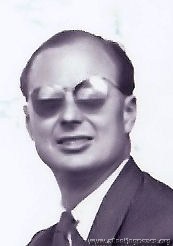 c.1955, aged c.40 c.1955, aged c.40 |
|
|
'Roly', forever remembered for rolling an Avro Vulcan at Farnborough in 1955, presumably wearing his habitual pinstripe suit and tie. "Trained by the London Aeroplane Club at Stag Lane. Started commercial flying with Air Commerce Ltd, now [i.e. 1936] busy flying daily Dawn Express newspaper service from Croydon to Paris. Chews his C.D.C. [whatever that means] Thrives on fog." RAE Farnborough during WWII, including flights on captured German aircraft. Post-war Avro test pilot (especially the Vulcan, of course). OBE in 1955; died 1985 in Jersey [With thanks to John Falk, who is Roly's son, and Bill Thorn's (q.v.) grandson] |
||
Fall, Joseph Stewart Temple
| Flt-Lt Joseph (aka John) Stewart Temple Fall DFC AFC | ||
|
in 1916 when a Flt Sub-Lt, RN |

photo: 1920 |
|
|
b. 17 Nov 1895 in Cowichan, Vancouver B.C. Canada WWI ace with the RNAS (36 victories, making him the 7th-highest scoring Canadian); he stayed in the RAF from its inception in 1918 until he retired in 1945 as a Group Captain. d. 1988. |
||
Fawcett, Thomas Constantine
| Mr Thomas Constantine Fawcett | ||
|
photo: 1930, aged 32 |
||
|
A Engineer from County Durham |
||
Ferguson, Austin Bruce
| Mr Austin Bruce Ferguson | ||
|
photo: 1927, aged 29 |
||
| A Stockbroker from Surrey | ||
Fielden, Earl Bateman
| Capt. Earl Bateman 'Safety First' Fielden | ||
|
|
||
|
b. 14 Oct 1899, Shipley, Yorks May 1938: "Cdr. E. B. Fielden, of British Airways, has now flown over 100,000 passengers without so much as bruising the very tenderest of them. A lot of his flying was done in the early joy-ride days, operating from small fields, and when chief pilot to Sir Alan Cobham's circus he once took up 768 people in a day. " Just shows you can't believe all you read: August 25, 1933, "TWO MEN TRAPPED WHEN 'PUANE CRASHES. Pilot Jumps Clear In Time. Three airmen had remarkable escapes when an aeroplane crashed in arriving from Kidderminster for the Scunthorpe (Lincolnshire) hospital air pageant (BHAP) at Ashby yesterday. They were: Captain E. B. Fielden. of the Royal Club, London, the pilot; Mr Clifford Jones, of Blackwood; and Mr Frederick La Croix, Finchley, London. They were taken to Scunthorpe Hospital, but Captain Fielden was not detained. The aeroplane was about to land when it got into difficulties and crashed into a field of sugar beet near the ground where the pageant was held. In striking the ground the 'plane toppled over but Captain Fielden managed to jump out. Mr Jones and La Croix were trapped in the cabin, but were soon rescued by Captain Fielden and officials who rushed from the pageant ground. On inquiry at the hospital early this morning it was stated that neither of the men who were detained appeared to be very seriously injured. Captain Fielden had a narrow escape in September, 1931. when an air liner, of which was the pilot, crashed in flames near Moortown Golf Course in the east Riding of Yorkshire. " He later 'transferred' to the British Hospitals Air Pageant, (a rival organisation which Alan Cobham regarded as rather a scam), together with Charles W. A. Scott, the Hon. Mrs. Victor Bruce, Pauline Gower. Dorothy Spicer, Capt. R. H. (All-weather) Mclntosh, Capt. Phillips, Capt. Rollason, Flt-Lt. J. B. W. Pugh. Flight-Lieut. A. G. Hill and Col. FitzMaurice, who was the first to fly the Atlantic from east to west. Later a Wing Commander in WWII; DFC in 1944 for having been responsible for the movements of loaded transports during the Wingate airborne invasion of Burma. His son, Aircraftman 2nd Class Stanley Earl Spensley Fielden (RAFVR) was killed 8 Mar 1943, age 18. d. Feb 1985 in Exeter |
||
Fielden, Edward Hedley
| Flt-Lt (Sir) Edward Hedley Fielden KCVO CB DFC AFC | ||
|
|
||
|
'Mouse', b. 1903. Prince of Wales' (i.e. Edward VII's) pilot, later Captain of the King's (and Queen's) Flights until 1962. DFC, 1943: "This officer has flown on various operational missions, some of a most hazardous nature. He has displayed a high standard of operational efficiency, setting an example which has contributed materially to the high morale of the air crews under his command. His great organising ability has proved a valuable asset.” Edward Fielden (RAF officer) - Wikipedia d. 1976 |
||
Findlay, Maxwell Hutcheon
| Capt Maxwell Hutcheon 'Max' Findlay | ||
|
photo: 1918, when a Captain in the RAF, aged 20 |
||
|
d. 1st October 1936, in the Schlesinger England-Johannesburg Race; the Airspeed AS.6J Envoy 3 G-AENA 'Gabrielle' struck trees after take-off and crashed at Abercorn, Rhodesia, killing Max Findlay and wireless operator A H Morgan. The unclaimed prize money from the race - £6,000 out of the £10,000 total fund - went to the families of those who had died; £2,000 each to Mrs. Max Findlay and Mrs. A. H. Morgan, and £2,000 placed in trust for the child of Capt. Findlay. |
||
Fletcher, Dorothy Brewster
|
Dorothy Brewster Fletcher Royal Aero Club Certificate No. 8438 (12 Oct 1928) |
||
|
|
||
|
b. Workington, 16 Feb 1892; her father James was a joiner. An Administrative Assistant in the Women's RAF in October 1919. Dorothy's great-nephew tells me that "Dorothy took part in the Blackpool Air pageant in 1928, as co-pilot to Sicele O'Brien. She sailed back from Montreal to Southampton in September 1930. A scientist with a particular interest in electronics; in 1924, she collaborated with Sydney Brydon and they patented "Improvements in and relating to the employment of thermionic valve circuits"; later, in 1945, she and Edward Victor Golder took out a patent for "Improvements in or relating to piezo-electric crystals having wire connections". After WWII she was "cited for her wartime work with Gilbert S. Bryden involving detection of magnetic mines at sea". d. 1970 in Greenwich, London |
||
Flynn, John J
| Capt John James? ('Paddy') Flynn | ||
|
|
|
|
|
August 1930, Flight: "The most interesting news item at Croydon this week centres round Mr J. J. Flynn. He is one of the most modest of good fellows and whilst others strut into the glare of publicity he retires, knowing that it is the doing of a job which matters, not the talking about it. It is six months since he joined Imperial Airways and after the usual probationary period as second pilot and a spell on inland services he "passed out" on Argosys last Wednesday. The following morning he took out the 8 a.m. service to Paris and did the trip in 96 min., an extraordinarily good time for this type of machine. We understand that it is two years since Capt. Willcockson did the journey in 105 min., the next best time. 'Paddy' Flynn has had an adventurous career and many have made themselves into newspaper heroes by achieving much less. His first appearance at Croydon was as a joyride pilot for Surrey Flying Services in 1924. But it seems that that was only because the shouting and fighting in his native land had died down. For after his war service with R.F.C. and R.A.F. in France, he returned to Ireland in 1920 as second in command of the Free State Air Force with the rank of Commandant. He left Surrey Flying Services when N.F.S. started up last year, but saw more chances with the Desoutter Aircraft Co., whose first test pilot he was. Here he did some very good work in all weathers—the more adverse the conditions the more cheerful he becomes. That firm parted with him regretfully when Imperial Airways called early in the spring. His flying time is over five thousand hours, and who has carried something like thirty-one thousand passengers"
10 May 1939 "The pilot who was killed, with a woman passenger, in a collision between two aeroplanes at Horne, near Horley, Surrrey on Monday [8 May], was identified yesterday as Captain J. J. Flynn, of South Croydon, who was formerly an Imperial Airways pilot. He was flying a liner which crashed in France in 1930 and lost a leg as a result of the accident. Miss Aurora Tasselli, the dead girl, was 19 and lived in Rayners Lane." from the Irish Press: "Paddy was a native of Doocastle, Balllymote, Co. Sligo, and played a big part in fighting against the Black and Tans in that area. Aged 44, he helped to form the the Irish Free State Air Force and was for a time Commandant in the force at Baldonnel. Later he resigned and went to England, where he became an Imperial Airways pilot. It was he who piloted the air liner 'City of Washington' [G-EBIX] which crashed in France in 1930. Four people were killed and Captain Flynn hurt his spine and also had his left leg amputated. For three years he was in and out of hospitals and had 19 operations. 'The loss of his leg did not keep him from flying', a friend of Captain Flynn's told an Irish Press representative yesterday, 'and he showed the authorities that he was as good a flyer with one leg as the average pilot is with two. He renewed his licence and was, I think, the only one-legged flyer in England. 'He was a man of great daring and courage, and never let bad luck daunt him.' Capt Flynn was in the British Flying Corps during the Great War. His brother, Mr Dan Flynn, of Palmertson, Dublin, is secretary of the Fianna Fail Cumann there, and is also secretary of D Company, Old I.R.A." In 1936 Paddy was a director of a company called Atlas Air Services, and then in 1937 formed his own flying club: "PADDY FLYNN FLYING CLUB LTD. Private company, registered July. Capital, £1,000 in 1,000 shares of £1. Objects: To carry on the business of instructors in aviation, aerial navigation, aerial and ground signalling, dealers in and importers and exporters of aircraft and aircraft engines, etc. The directors are John J. Flynn, air pilot, Merrock S. C. Hyams, air pilot, Muriel Montgomery. " Miss Tasselli was his pupil. Flying an aircraft from the Redhill Flying Club, they collided with Hawker Hart K5800 flown by Sgt Stuart Smith. "Miss Tasselli was keen on her new hobby of flying. Her father, who was born in Italy, has a tailor's business in Manchester. Mrs C. Tasselli, her mother, an Englishwoman, told a reporter to-day:— 'She had only been up in the air four times. She joined the Civil Guard a few weeks ago after waiting to do so for several months, I never wanted her to go in the air because I think it is a man's job, but she was a rather venturesome and self-willed young lady and would not listen to my advice.' 'Flight' said "it was with very genuine regret that a large number of his friends at Croydon heard of the sad death of poor Paddy Flynn, who was as game a sportsman and as likeable a fellow as ever flew." |
||
Fontes, Luis Goncelvis
| Mr Luis Goncelvis Fontes | ||
|
|
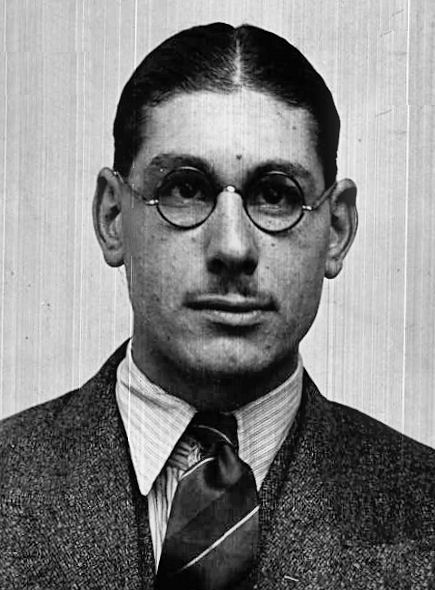 1938 1938 |
|
|
b. 26 December 1912; brother of Ruth [the family were from Brazil, although he and Ruth were both born in London]. Racing driver, winning the Le Mans 24 hour race in a Lagonda with John Hindmarsh, a test pilot, in 1935, as well as the Manx Grand Prix and a number of lesser events. (The Lagonda can now be seen in the Netherlands National Motor Museum).
Monday 02 December 1935 - "RACING MOTORIST SENT TO PRISON Judge and a Case of “Wicked Recklessness LICENCE SUSPENDED FOR 10 YEARS Luis Fontes, the 22-year-old racing motorist, was sentenced to three years’ penal servitude, his licence was suspended for ten years from the date of his release, and he was ordered to pay the costs of the prosecution at both the police court and the assizes by Mr. Justice Du Parcq at Warwick Assizes on Saturday. He was charged with the manslaughter of Reginald Francis Mordike at Coleshill 6th October. The Judge said that it was the worst case he had ever known. When he considered what Fontes did on the day of the tragedy it appeared to him to plain that was not a question of whom he was likely to injure or kill, but how many he would injure or kill. He behaved with wicked recklessness, for which the only excuse that could offered was that he was drunk. The Judge added that if he had not thought that Fontes was drunk he would say that the case was almost as black as murder, for any reasonable person behaving as Fontes behaved would have known it was almost inevitable that someone would be killed. He considered that Fontes had been treated in regard to certain other motoring offences with deplorable leniency. SENTENCES OF PENAL SERVITUDE Fontes was defended by Sir Henry Curtis Bennett, K.C., and Mr. Arthur Ward, and pleaded guilty. There had been evidence at different points that he was driving his motor car at recklessly high speed and he was on number of occasions completely on the wrong side of the road; that he drove with complete disregard of the safety of other users; that, finally, he was under the influence of drink to such extent as not to be able to have full control of the car. Mr. Marshall mentioned how a man, recognised as Fontes, went to the house of a gardener at Castle Gardens, smashed a panel in the door of his house, went upstairs and lay on his bed. Witnesses w'ho saw him formed the opinion that he was under the influence of drink. It was alleged that Fontes was racing with another car, and at a cross-roads an AA patrol man had to jump out of the way. Further along another car was forced to go on the grass verge, and behind this car were two motor cyclists one of whom Mordike, the man who was killed. The motor cyclists were travelling about 15 miles an hour, three feet from their proper side of the road. Fontes’s car, travelling at a very fast speed, collided head-on with and knocked him off his machine. DID NOT STOP Neither Fontes’s car nor the other car stopped, but further on they were held up in traffic. Then Fontes drove to a garage and told a garage man to put right his front tyre, which was deflated. Fontes did not get out of the car, but sat back in the seat and switched on the wireless. He was droswy and did not realise what was going on around him. Subsequently doctors certified him as being under the influence of drink. To a police officer he said, I struck the motor cyclist, the motor cyclist struck me, it is fifty-fity. It serves the cyclist right.” Drink was found in the car. The motor cyclist died the next day. Police-Superintendent Horsman told the judge that Fontes’s father died when he was young and Fontes inherited, at 21, a considerable fortune. He received a good education, and from 1932 to 1934 he took a course in automobile repair work. Since then be had been engaged, with some success, motor racing. There was a number of convictions against him, four being for careless driving, and one for dangerous driving. while there were several for minor offences." Operated a speedboat firm in Torquay.
Owned: 1935 Miles Hawk Speed Six G-ADGP and 1938 B A Eagle 2 G-AFKH
with his sister Ruth, King's Cup 1935 Killed in WWII: 12th October 1940, when a First Officer with the Air Transport Auxiliary; his Wellington stalled and crashed following engine failure. Buried Mapledurham, Oxfordshire |
||
Fontes, Ruth
| Miss Ruth Fontes | ||
|
|
||
|
Luis' elder sister b. 10 March 1911 in London, married Dr Norman Howard-Jones in June 1936. Her Miles M.2U Hawk Speed Six G-ADOD, was 'built around her', was called 'Jabbawocky' and later competed in the 1936 Schlesinger Race to Johannesburg. Her grand-daughter told me "Ruth and my grandfather Norman divorced and I do not think she remarried. They had 3 children, a girl and 2 boys. Norman would later receive an OBE for his work for WHO - I think he was part of the founding team. Ruth and Luis' enormous fortune came from their father, Alfonso Goncalves Fontes, whose origins lay in Brazil. He had made it during the Brazilian rubber boom and then in real estate in the area of Rio de Janiero and had then settled in England at the age of about 40. He died in around 1933. The ballet dancer Margot Fonteyn was Ruth and Luis half sister."
d. 1969 in Islington |
||
Foot, Ernest Leslie
| Lt Ernest Leslie Foot MC | ||
|
photo: 1915, aged 20 |
||
|
b. 19 May 1895 in Pulborough, Sussex WWI ace (5 victories), awarded the Military Cross for 'conspicuous skill and gallantry'.
d. 23 June 1923 when the Bristol M.1D G-EAVP (which flew in both the Aerial Derby and the King's Cup in 1922) lost a wing and crashed near Chertsey. |
||
Forbes-Sempill, William (Lord Semphill)
|
William Forbes-Sempill, 19th Lord Sempill AFC |
||
|
|
|
|
|
Ah... yes... the aviation pioneer, chairman of the Royal Aeronautical Society, right-wing sympathiser and occasional spy (for the Japanese), who was motivated by his 'impetuous character, obstinacy, and flawed judgement', rather than money. |
||
Forestier-Walker, Dring Lester
| Mr Dring Lester Forestier-Walker | ||
|
|
||
|
b. c.1900 1921 was his only Aerial Derby, and he crashed the Sopwith Pup (which he presumably borrowed from its owner Mr Rickards) at Hendon. There is a rumour that he may have been drunk. The aircraft survived, however (or at least its fuselage did) and is under long-term restoration at RNAS Yeovilton. d. Dec 1968 in Aylesbury. |
||
Foy, Frederick Victor Walter
| Frederick Victor Walter Foy | ||
|
|
|
|
|
Imperial Airways from October 1929
b. Wilburton 10 Jul 1900 based Heliopolis, Egypt Awarded Master Pilot's Certificate in 1935 Promoted to Senior Master in October 1938 |
||
Franklyn, Arthur
| Mr Arthur Franklyn | ||
|
photo: 1930, aged 23 |
||
|
A speedway racer in Manchester in 1929-31 (see also Jack Ormston) who was briefly the 'King of the White City'. Retired from speedway and took up a commission with the RAF. d.1983 in Ipswich, Suffolk |
||
Gardner, Charles Exton
| Mr Charles Exton Gardner | ||
|
|
||
|
Aeronautical engineer 'with his own aerodrome at home in Surrey'. Always nice to have. "Flew to India [in 1936] to compete in the Viceroy's Cup Race" |
||
Gathergood, Gerald William
| Capt Gerald William Gathergood | ||
|
|
||
|
b. 15 June 1895 in Tilney St Lawrence, Norfolk WWI pilot. His flying was described thus: "he always threw all machines about the sky in a most alarming manner". Became a dental surgeon, married Peggy Thompson in 1930, played golf and ... d. 21 May 1966 aged 70 |
||
Gault, Andrew Hamilton
| Lieut-Col Andrew Hamilton Gault D.S.O. | ||
|
|
||
|
An English-born Canadian who served in the Boer War and then founded a regiment - Princess Patricia's Own Canadian Light Infantry - with his own money in 1914. Recruiting was brisk: ten days later the regiment was 1,098 strong. He became its third commanding officer, but was wounded several times and lost his left leg. On May 7th, 1915 they were 635; by the end of the following day they numbered 150. Andrew was one of only two of its officers to survive WWI. In 1920 his fiancée, a Mrs Kathleen Blackader, died when the car he was driving skidded and overturned; she was trapped underneath and he was unable to free her. Her daughter Margaret later became his ward. In 1922 he 'quietly' married Dorothy Blanche Shuckburgh, and they settled at Hatch Court, Taunton. His military record stood him in good stead when he tried for election as an Unionist (i.e. Conservative) M.P., but he narrowly failed to overturn a near-3,000 Liberal majority in 1923. He was back the following year, however, this time successfully, and was Taunton's M.P. until 1935 - serving on various committees and much involved in local politics: President of the 'Society of Somerset Folk', and he regularly gave a cup for the 'best fat beast' in the Taunton Christmas Show. He and Dorothy flew to Germany in 1933 as members of a party making a holiday tour, and met (speaking of fat beasts) Herman Goering and Adolf Hitler. [Lynsdey Everard, A E Borton and Mrs and Mrs Runciman were also on this tour]. d. 28th November 1958 in Montreal, aged 76. |
||
Gault, Dorothy Blanche Hamilton
| Dorothy Blanche Hamilton Gault | ||
|
|
||
|
Dorothy Shuckburgh as was, Andrew's (q.v.) second wife. "An owner-pilot, Mrs Hamilton Gault, has with her husband travelled England and the Continent for four years in a Moth rejoicing in the registration letters 'G-AAGA'. She is an example of the practical lady pilot whose aeroplane is used, when weather permits, for all travelling in England and abroad. Once a week or more, in summer, she flies to London and back to her home in Somerset. She is, however, forced to use the aerodrome at Yeovil - some distance from her home - owing to the lack of landing grounds in the Somerset Hills, which keeps a number of air-minded people in the county from taking up flying." Dorothy died in 1972, at Hatch Court |
||
Geijsendorpher, Gerrit Johannis
| Gerrit Johannis Geijsendorpher | ||
|
|
||
|
Like Koene Dirk Parmentier, Gerrit also died in an accident in KLM service. On 26 January 1947 his Douglas DC-3 crashed shortly after takeoff from Kastrup Copenhagen Airport in Denmark, killing all 22 on board. Among the victims were the Swedish prince Gustav Adolph and the American singer Grace Moore. |
||
Gibbons, Frank George
| Flt-Lt Frank George Gibbons | ||
|
|
 1930, aged 31 1930, aged 31 |
|
|
from Peterborough; WWI air ace (14 victories); killed in May 1932, flying into a tree during the Morning Post (Heston) air race. 1932: "The tragic loss of Fit. Lt. Frank George Gibbons during the race organised by the Morning Post on Saturday, May 21, was one which came as a shock to his many friends. It would appear fairly certain that his death was due to his colliding with a tree while looking at his maps inside the cockpit, and was in no way caused by any defect in the "Spartan" three-seater he was flying at the time. He was a particularly likeable character, besides being an outstanding expert as a pilot. He was one of those people about whom one never heard any gossip, and his likeable character is shown by the fact that although he was the best of companions at the kind of party which usually finishes an air meeting, he was equally at home spending an afternoon playing with young children. He first joined the R.F.C. in June, 1917, as an air mechanic (cadet), and gained his commission in November of the same year. He was gazetted as a Fit. Lt. on June 1, 1926, and won the D.F.C. for services in the field. Not only was he a very fine pilot of land aircraft, but also of flying boats. On January 5, 1931, he went to Calshot, and from there he was posted to No. 204 Flying Boat Squadron at Mountbatten, Plymouth, of which he was a member at the time of his death. He was a brilliant navigator, and this form of race was one in which he was particularly interested. It is perhaps, therefore, some consolation to feel that if he himself could have had the choice, he would have undoubtedly have chosen to die when flying "flat-out" during such a race, in the manner he did. The funeral took place at Ipswich on Wednesday, May 25. He was 33 years of age and unmarried." |
||
Gillan, John Woodburn
| F/O John Woodburn Gillan DFC and bar, AFC | ||
|
|
|
|
|
b c1907. From Edinburgh. Established a world's land plane record in an RAF Hawker Hurricane on February 10, 1938; flying "blind", he covered the 327 miles from Edinburgh to London in 48 minutes, an average speed of 408.75mph. This feat earned him the nickname of 'Downwind Gillan'. AFC in January 1939 as Sqn Ldr. Killed in WWII: 29th August 1941, when a Wing Commander (pilot) RAF; buried Dunkirk. |
||
Gilman, Harold Darwin
| Harold Darwin Gilman | ||
|
|
|
|
|
Died on 23rd October 1934 in Italy (crashed during the MacRobertson Race), aged 28 "Flt. Lt. Gilman took his "A" in 1926 with the Auckland Aero Club. Shortly afterwards he joined the N.Z. Staff Corps and was sent to Aldershot in 1928 on attachment to the Suffolk Regiment. In 1929 he was transferred to the R.A.F. "Refreshed" at No. 2 F.T.S. (Digby), he was posted to No. 101 (Bomber) Sqd. at Andover, under Wing Com. F. H. Coleman, whose adjutant he remained until 1933. Gilman took part in all squadron experiments, including the high-precision bombing of H.M.S. Centurion. Last year, on conclusion of the annual Combined Exercises, he was sent as assistant adjutant to No. 600 (City of London) Sqd. under the late Sqd. Leader S. B. Collett. Finally, after brief attachment to the C.F.S. (Wittering), he was posted to the newly formed No. 15 (Bomber) Sqd. at Abingdon, of which he commands "B" Flight. His log-books show 1,560 hr. Gilman has been granted special leave to accompany Baines in the race to Australia." |
||
Gittins, John Moore
| John Moore Gittins | ||
|
|
|
|
|
Imperial Airways from 1929 b. Sutton, Surrey 11 Mar 1906 In 1932, lived at 26 St John's Grove, West Croydon, Surrey |
||
Goodwin, Geoffrey
| Mr Geoffrey Goodwin | ||
|
|
|
|
| RAF Officer | ||
Gough, Fred
| Mr Fred Gough | ||
|
photo: 1927, aged 28 |
|
|
|
From Norwich, a 'cardboard and container manufacturer'. Joined the RFC as a private in 1916. Manager of the Norfolk and Norwich Aero Club from 1927. |
||
Gower, Pauline Mary de Peauly
| Pauline Mary de Peauly Gower MBE | ||
|
|
|
|
|
b. 22nd July 1910 in Tunbridge Wells; younger daughter of Sir Robert Gower, M.P for Gillingham, Kent. 5 feet 5 in height, in case you wondered.
The Bystander Special Aviation Edition, 1933 "In England you can count on one hand the women who are making a living directly from flying. Probably foremost among them are the two girl flyers, Pauline Gower and Dorothy Spicer, who work in partnership at joy-riding. Miss Gower is the pilot and Miss Spicer the mechanic." - Amy Mollison, writing in 1934 "Pauline Gower, one of the few women who has already achieved a successful commercial flying career, did joyriding last year in 185 different towns with a travelling air circus." - Mary Bertha de Bunsen
She was fined £222 in 1933, having taxied her Spartan into a stationary Moth at Cardiff while giving joy-rides in an air pageant (although she reckoned it had definitely moved since she checked where it was). Three years later, she was taken to hospital suffering from concussion and 'lacerations of the scalp' after she ... collided with another aeroplane on the ground, this time at Coventry airport. During her air-taxi career, she was reckoned to have piloted more than 33,000 passengers. In 1937 she, Amy Johnson and Dorothy Spicer invited "all women pilots interested in the idea of a central meeting-place for women aviators in London" to write to them, but I don't think it ever happened. Founder and first Commandant of the Women's Section of the Air Transport Auxiliary in 1940; from 1943, a board member of BOAC. She had a narrow escape in August 1943 when 'Fortuna', an old Imperial Airways airliner, with her and 7 other BOAC officers aboard, made a forced landing near Shannon and was written off. See here for more: Gower, Pauline Mary de Peauly (W.25) (ata-ferry-pilots.org)
Married Wing Commander William Cusack Fahie in June 1945, but died of a heart attack in March 1947 giving birth to twin boys, one of whom, Michael, later published 'A Harvest of Memories' about her. She owned: a 1929 Simmonds Spartan, G-AAGO, (the one which she wrote off in the taxying accident in Cardiff in August 1933), and then a 1931 Spartan Three Seater, G-ABKK, the one which she wrote off in the taxying accident at Coventry in May 1936. |
||
Grace, Alice Bessie
|
Alice Bessie Grace Royal Aero Club Certificate No. 8314 (23 Jun 1928) |
||
|
|
||
| b. Malta, 27 Oct 1901 | ||
Grace, Gladys Mary
|
Miss Gladys Mary Grace Royal Aero Club Certificate 8669 (7 Jul 1929) |
||
|
|
||
| b. Clifton, Glos, 29 Jan 1904 | ||
Green, D S
| Mr D S Green | ||
|
|
|
|
| ? | ||
Green, Sheila Macdonald
| Sheila Macdonald Green | ||
|
|
|
|
| b. 5 Feb 1901 in Elgin, Scotland but living in Maidstone, Kent, owned a 1929 Klemm L25 Ia, G-AATD | ||
Greenall, Josephine
| The Hon Mrs Josephine Greenall | ||
|
|
|
|
|
nee Laycock, b. 28 Jun 1908, from Melton Mowbray, owned: - a 1930 DH.60M Moth, G-AAVE, later sold and re-registered VT-ANS - a 1931 DH.80A Puss Moth G-ABLC, Sold abroad in 1938 Her husband, the Hon. Edward Greenall, was 2nd Baron Daresbury. |
||
Grey, Phillips Patrick
| Mr Phillips Patrick Grey | ||
|
|
|
|
|
b. 1 Jul 1903, Bakewell, Matlock, Derbys, RAF 1924-29 Flying Instructor, de Havilland, Stag Lane, 1929 RAF, 1940-45 d. 29 Apr 1989 - Hindhead, Surrey
Research: thanks to Steve Brew |
||
Grey, Spenser Douglas Adair
| Lt-Col Spenser Douglas Adair Grey | ||
|
photo: 1911, when a Lieut in the Royal Navy, aged 22 |
|
|
|
born in Rio de Janeiro; later a Wing Commander; DSM, Order of Leopold of Belgium, Croix de Guerre. Died in 1937 |
||
Grierson, John
| Mr John Grierson | ||
|
|
|
|
|
Having joined the RAF but then regretted it, John tried to resign in 1931. However, his resignation being refused, he smuggled himself from where he was stationed in India into his D.H.60G Moth 'Rouge et Noir' (which he had bought from Glen Kidston, and which was painted red one side and - you guessed it - black the other), and flew home, making long hops to avoid R.A.F. aerodromes. "The business was settled in the end without a courtmartial, though not without a period of open arrest". Next came a solo flight of 9,000 miles round Russia, and then an abortive attempt on the Arctic air route in Rouge et Noir equipped as a seaplane; a nose-over into a choppy sea at Reykjavik put paid to the attempt. Rebuilt, and fitted with wheels and ski equipment, the little Moth finally carried Mr. Grierson round Eastern Europe in mid-winter. Then, in 1934, he made a successful westbound Atlantic flight via Iceland in his de Havilland Fox Moth 'Robert Bruce'. Transferred to Hawker and then Gloster as a test pilot; he was one of four pilots to fly Britain's first jet aircraft, the Gloster/ Whittle E.28/39. Wing commander after WWII, then a Member of the Council of the Royal Geographical Society. d. 21 May 1977 in Washington DC, aged 68. He was addressing a symposium at the Smithsonian's Air and Space Museum to mark the 50th anniversary of Lindbergh's transatlantic flight when he was taken ill; he died a few hours later in hospital. |
||
Guest, Diana
|
Miss Diana Guest Royal Aero Club Certificate 8756 (27 Aug 1929) |
||
|
photo: 1929, aged 20 |
 |
|
|
Frederick's daughter; later sculptress Diana Guest Manning. [Mr Manning was one of her 3 husbands]. "I was born and brought up in the country in England. My parents, Amy Phipps and Frederick Guest, met in India and married a year later in London. They settled in a beautiful Queen Anne house near Oakham named Burley on the Hill".
"AN ATALANTA OF THE AIR - MISS DIANA GUEST, CAPTAIN "FREDDIE" GUEST'S PILOT DAUGHTER. Miss Diana Guest, the young daughter of Captain the Hon. Freddie Guest, P.C., C.B.E., D.S.O., etc., Chairman of the National Flying Services, was born in 1909, and recently made her debut in society. She has also just made her debut in the air, and took her pilot's A certificate recently. She and her father had their flying lessons at the same time, and took their respective tickets simultaneously for although Captain Guest, who was born in 1875, has long been interested in flying, and was Secretary of State for Air from 1921-1922, he was not the holder of a pilot's A certificate. " The Sketch, 1929 In 1981 "Miss Guest, who divides her time between Paris and Palm Beach, Fla., and whose works have been exhibited in museums around the world, has donated 27 pieces of her sculpture to Old Westbury Gardens". Diana owned:
d. 1994 |
||
Guest, Frederick Edward
| Capt (later Sqn-Ldr, Air-Comm) the Hon Frederick Edward Guest CBE DSO MP | ||
|
|
|
|
|
b. 14 June 1875 in London. 'Freddie', Winston Churchill's cousin; Diana's (q.v.) father; Liberal then Conservative politician (Secretary of State for Air in 1920-22, despite the fact that, at the time, he knew "very little about aviation, but it is to his credit that he does not pretend to know"). Died 28 April 1937. |
||
Guthrie, Giles Connop MacEacharn
| Mr Giles Connop MacEacharn Guthrie | ||
|
|
|
|
|
Shown here, for comparison, just before, and just after, he grew his moustache. "Giles Guthrie is the only son of Sir Connop and Lady Guthrie. His enthusiasm for flying has roused his father's active interest in the aviation industry. Only 20 years of age, he is the youngest pilot and the only undergraduate to take part in a long distance air race. For the Johannesburg race, the Cambridge University authorities gave him special leave of absence. Despite his youth, he is a pilot of considerable experience. The Percival Vega Gull in which Charles Scott and he won the Johannesburg race, first tasted victory in the King's Cup this year. Giles Guthrie then flew as co-pilot with Charles E Gardner . When Sir Connop decided to enter the machine in the Johannesburg race and chose Charles Scott to fly it, one condition was that Scott should take young Giles with him." - from the Celebration Dinner programme after the race (October 14th 1936 at Claridge's Hotel). Had used his Vega Gull for a "good deal of continental touring". Later Sir Giles, J.P., merchant banker. Died 1979 |
||
Haig, Rollo Amyatt Wolseley de Haga
| Mr Rollo Amyatt Wolseley de Haga Haig AFC | ||
|
|
||
Halse, Stanley Seward
| Capt Stanley Seward Halse | ||
|
|
|
|
|
Learnt to fly during WWI, and by 1936 was a flying instructor at the Johannesburg Light Plane Club. Two members (Rex Hull and George Albu) put up the £1,800 required to buy the Mew Gull to enter for the Schlesinger Race. Presumably, that was the last they saw of their money. Stanley dislocated his elbow in the subsequent crash, and much later found out that three of his vertebrae had telescoped. |
||
Hamersley, Harold Alan
| Capt Harold Alan Hamersley MC | ||
|
|
|
|
|
b 6 Feb 1896 in Guildford, W Australia. Studied mechanical engineering before WWI, commonwealth commission then transferred to the RFC in June 1916. Served with 60 Sqn in France, where he was awarded the MC for gallantry in leading patrols. Ended the war with 11 victories, despite his SE.5 being damaged and forced down by German ace Werner Voss in September 1917. Awarded a permanent RAF commission in 1926, then promoted to Wing Commander in 1938 as Chief Instructor to the London University Air Squadron. d. 1967 |
||
Hamilton, Leslie
| F/O Leslie Hamilton | ||
|
|
|
|
|
A stunt pilot known as the 'Flying Gypsy'; RAF in WWI (6 victories in Greece) who was Princess Anne Lowenstein-Wortheim's pilot after the war. He and his friends piled into his Vickers Viking flying-boat G-EBED in 1927 (the same year it was written off, btw) to fly from the Swiss Winter Sports' Season to spend a holiday on the French Riviera." - see the video here: By Air To Anywhere - British Pathé (britishpathe.com)
They, together with Fred Minchin (left), were killed when trying to cross the Atlantic from East to West in 1927. For a video of them and the aeroplane, see the middle bit here: Old Flying Stories - British Pathé (britishpathe.com) [The rest of it shows Walter Hinchliffe's preparations for a planned similar flight with Charles Levine (qv)].
|
||
Hansen, Michael
| Michael Hansen | ||
|
|
|
|
|
Trained as a pilot in the Danish Army Air Force in 1927. Just before the MacRobertson Race, had competed in an aerobatic championship in Paris. He flew with mechanic Daniel Jensen, who crouched under the main petrol tank which was fitted instead of the passenger seat. The Desoutter was already over 3 years old by 1934. ---------------- BRITISH AEROPLANES FOR DENMARK Eight De Havilland Machines for Danish Air Force WITHIN the next few days a fleet of eight de Havilland aeroplanes will leave Harfield aerodrome to fly to Copenhagen in charge of officers of the Danish Air Force. The flight will be under the command of Capt. C. C. Larsen, who will pilot the "odd" machine of the flight, a de Havilland "Dragon." The other seven machines are "Tiger Moths." The seven " Tiger Moths " will be used for the instruction of Danish pilots in the art of military air manoeuvres, and the equipment of the machines includes all the instruments necessary for "blind flying." Instrument flying is a relatively recent development of military flying training, and Great Britain has, perhaps, done more than any other nation to perfect the equipment. Following the adoption of instrument flying by the British Royal Air Force, nearly all other nations are adding it to their curricula. The "Dragon" bought by the Danish Air Force is equipped for military purposes, and will also be used for light transport and for aerial survey. All the machines of the batch are fitted with de Havilland "Gipsy Major" engines. WAITING TO GO : Seven "Tiger Moths" and one "Dragon" at Hatfield, ready to start for Copenhagen. The Danish crews include Capt. C. C. Larsen, Lts. Clausen, Meincke and Rydman, Sgts. Eriksen, Petersen and Hansen, and Machine Officer Petersen. (FLIGHT Photo.)
The Hop to Darwin (by Lord Sempill) 1 WAS just preparing to make a start for Darwin when a D.H. " Moth," which had been very kindly sent over by the Vacuum Oil Co., landed to see if I was all right. Apparently the signal sent from Koepang, although it had reached them, had not Been very clear as to my intention to stop the night at Bathurst Island. They brought my mail which, of course, was mostly from Australia, and contained numerous hospitable invitations. Taking off on the short sea crossing, I arrived at Darwin and received a very kind welcome. The aerodrome has a level grass surface, but is, I understood, liable to become boggy after rain. It is 680 yards from north to south and 1,000 yards from east to west. There is a well-equipped meteorological office and a new shed was just being built. The Danish pilot, Lieut. Hansen, who had put up such a good performance in the MacRobertson race in an old Desoutter, was here on his return journey. He was hurrying home as he had only been given leave from his military duties until December 10. He had done some hard flying on the outward trip, putting in, on some sections of the route, sixteen hours a day. MARCH 7, 1935 - 'Flight'
A British Entry for International Aerobatic Contest ? ORGANISED by the newspapers Le Petit Parisien and Air Propagande, an international aerobatic competition, named " Coupe Mondiale d'Acrobatie Ae'rienne," will be held at Vincennes, near Paris, on June 9 and 10. The prizes amount to 300,000 francs, of which 100,000 will be awarded to the winner, 75,000 to the second and 50,000 to the third. It is reported that the following entries have been received:— Detroyat (France), Al Williams (U.S.A.), Fieseler (Germany), Colombo (Italy), Staniland (Great Britain), Orlinsky (Poland), Hansen (Denmark) and Van Damruch (Belgium). Judging from what we have seen of Staniland's masterly handling of the " Firefly," he should have little to fear from the aerobatic " aces " of other nations. FLIGHT, FEBRUARY 15, 1934 The Danish Air Society (Det Danske Luftfartselskab) bought the second last manufactured Desoutter Mk.II in 1931. This aircraft was given the registration OY-DOD. In 1934, this aircraft was sold to lieutenant Michael Hansen, and in the following year to the Nordisk Luftrafik company. In 1938 it was sold to Nordjysk Aero Service, but Michael Hansen bought the aircraft back the same year and used it to fly to Cape Town and in the MacRobertson Air Race Michael Hansen, 14.1.1903-23.3.1987, Danish pilot. Michael Hansen was trained as a pilot in the Army Air Force troops in 1927. Han achieved a seventh place (out of 20 runners aircraft) with a single-engine FK Desoutter højvinget monoplane in October 1934, together with maskinofficiant Daniel Jensen in the famous air racing Mildenhall (England) - Melbourne (Australia) in competition with some of the world's most talented pilots and fastest planes. It was a trip of no less than 19.895 km. In 1937 flew he and engineer Aage Rasmussen to Cape Town and return with the same aircraft. The following year he participated in a Danish military søfly (De Havilland DH82A Tiger Moth) as islods on Eigil Knuth Dark Northern Expedition to Northeast Greenland. These flights he described in the books "43.000 km through the air" (1935) and "On the Danish wings in South and North "(1941). He was in a number of years president of The Adventure Club and ended his military career in 1963 as a lieutenant colonel in the Air Force. He is buried in Hørsholm Cemetery. Literature: Michael Hansen: 43.000 km through the air (1935) and the Danish wings in South and North (1941), Ove Hermansen: Since Hansen flew to Melbourne in '34 - 75 years for Danish participation in the world's largest flykapløb from England to Australia (2009). |
||
Harvey , Arthur Vere
| Sqn-Ldr Arthur Vere Harvey CBE, Baron Harvey of Prestbury | ||
|
|
|
|
|
b. 31 Jan 1906 'Adviser to the Southern Air Forces in China' in 1937 In June 1938, the Bystander reported that "The first of the Auxiliary Squadrons to undertake co operation with the Army is No. 615, which was formed under Squadron Leader A. V. Harvey at Kenley in June of last year. Rapid progress has been made during the first twelve months. The Squadron is equipped with nine Hawker Hectors and, in addition, there are two "Harts" and four Avro "Tutors" for training new officers as they join." He was a British Conservative politician who served as an MP for 26 years. d. 5 Apr 1994 |
||
Hattersley, Arthur Patrick Kilvington
| Flt-Lt Arthur Patrick Kilvington Hattersley | ||
|
|
|
|
|
RAF from Feb 1918 "RECORD FLIGHT FROM FRANCE A record flight from Lille (France) London was made last night by British Continental Airways when an air liner their regular dally service completed the 160 miles' Journey In one hour. The machine was piloted by Chief Pilot Captain A. P. K. Hattersley and carried passengers and luggage. Captain Hattersley reported visibility to quite exceptional, and said that the evening light the coast England could be clearly seen before leaving the French side." Yorkshire Post and Leeds Intelligencer - Wednesday 20 May 1936
d. 19 Nov 1936 in British Airways (ex-KLM) Fokker F12 G-AEOT, which crashed near Gatwick Airport - "The pilot, Flt Lt A.P.K. Hattersley, was very experienced and had about 5,000 hours logged - he had, however, only done 2 hours in a Fokker F12 prior to the accident." "Captain Arthur Patrick Kilvington Hattersley was 36 years old and had been flying since the age of 17. He was a flight lieutenant in the R.A.F. during the war. In 1923 he joined the South African Air Force and returned to England in 1926, becoming an R.A.F. instructor. Hattersley became one of the chief pilots of British Continental Airways, which later merged into British Airways. " |
||
Hawker, Harry George
| Mr Harry George Hawker MBE, AFC | ||
|
in 1912, aged 23 |
|
|
|
b. 22 Jan 1889 in Victoria, Australia; son of a blacksmith, and the co-founder of Hawker Aircraft. A very early flier - RAeC Certificate No 297, in 1912. The following year, he made 5 flights 'on and off water' in a Sopwith-designed seaplane, which meant that they won the £500 offered by the RAeC. An even bigger prize in 1913 was the £5,000 offered by the Daily Mail for a race for seaplanes, to cover nearly 1600 miles in 72 hours round the coast of Britain. Harry (with fellow Australian H Kauper as mechanic) started off in a Sopwith from Southampton on August 16th. They got as far as Yarmouth but Harry felt unwell (later they worked out that he had sunstroke) and had to return to Southampton for another try, which started on the 26th. Unfortunately, having made good progress on their first day, nearing Dublin on the second his foot slipped off the rudder bar, the aeroplane fell "like a stone" and dumped them in the Irish Sea, whence they had to be rescued by the Coastguard; the machine was wrecked. Harry was unhurt, Mr Kauper injured. The Daily Mail gave them a consolation prize of £1,000 "in recognition of their plucky attempt". A few weeks later, he wrote off another Sopwith at Brooklands, badly injuring his back. The following year he did it again in almost the same place, this time failing to control a loop and spinning down into some trees. When spectators reached the scene, Harry was standing by the smashed aeroplane, "bewildered but unhurt". Nothing daunted, he broke the British altitude record by climbing to 18,393ft in 1915, although it took him over an hour and he" suffered greatly from the cold"; he then broke the world record by getting to 24,408ft on 26 April 1916 (which started people wondering about perhaps flying to the top of Everest). Next, in 1919, the Daily Mail offered £10,000 for a flight across the Atlantic. Harry, with Commander Kenneth Mackenzie Grieve R.N. as navigator, started from Newfoundland on 18th May but the aeroplane had problems with its radiator and they had to put down in the sea after about 800 miles. It was several days before the news emerged that they had been rescued by the small steamer 'Mary', and taken to Thurso. The Nation, having feared the worst, was mightily relieved, and gave them a terrific welcome; "No event since the Armistice has so stirred the popular imagination". Harry and Kenneth got the Air Froce Cross each (despite the fact that Harry wasn't actually in the Air Force), and £2,500 each as a not-inconsiderable consolation prize (although they had agreed to split the original prize 70:30). Before they could try again (on June 15th to be precise), Alcock and Brown had done it (just), been knighted by Mr Churchill and walked off with the cheque for £10k. Damn! His luck finally ran out when he was killed in the Nieuport Goshawk G-EASK which crashed at Hendon 12 July 1921 while he was preparing for that year's Aerial Derby. The aeroplane burst into flames and spun in; Harry leapt from (or fell out of) the plane and was found some distance from its remains, "quite dead". |
||
Healy, Lewin Edward Alton
| Flt-Lt Lewin Edward Alton Healy | ||
|
|
|
|
|
RAF Cranwell, 1922. Twice mentioned in dispatches.
|
||
Helmore, William
| Sqn-Ldr (Air Commodore) William Helmore | ||
|
|
|
|
|
RAeC Certificate 9698 (1931) |
||
Hemming, Harold
| Maj Harold Hemming AFC | ||
|
photo: 1916, when a Lieut in the Worcestershire Regiment, aged 23 |
|
|
|
Director (with Alan Butler as Chairman) of the 'Aircraft Operating Company'. In 1925, they were air surveying in British Guiana. In 1923, he flew Alan Butler's DH37 'Sylvia' in the King's Cup, coming 5th (as had Alan himself, the year before), and then borrowed it again in 1925, coming 3rd. Unfortunately, while he was making a test flight in 1927 in the DH37 (now re-engined and called 'Lois') the aircraft hit a scoring board and crashed. The passenger was killed and Hemming lost an eye and sustained other injuries. |
||
Hemsworth, Godfrey Ellard
| Godfrey Ellard Hemsworth | ||||||||||
|
|
|
|||||||||
|
Seen here on the left, in 1940 Godfrey's signature: Godfrey (‘Goff’) Hemsworth and ‘battling’ Ray Parer piloted a second-hand Fairey Fox biplane, G-ACXO, in the 1934 England to Australia Air Race. Although they almost immediately had engine trouble (over the English Channel, in fact) and didn’t complete the course in the time allowed to qualify for any of the prizes, they battled on... and on; eventually, they took 117 days to get to Melbourne. But they got there!
After the race, Godfrey joined the RAAF and was killed in the Battle of the Coral Sea, flying a Catalina. "'Goff' had all the guts in the world." They say. [family insights were kindly provided by G E Hemsworth, Godfrey's nephew].
Family Godfrey was born in Sydney, Australia on the 2nd of January, 1910. He had three brothers - John, Neville and Hugh - and two sisters, Alice and Anne. His grandfather (John) had owned and captained a number of vessels (including the Neville & Costa Rica Packet), but during the 1890’s depression most of the fortune had been lost. His father, Captain Hemsworth – also (confusingly for us) called Godfrey Ellard – had been instrumental in the exploration of New Guinea during the latter part of the previous century; in 1885, the Maitland Mercury & Hunter River General Advertiser reported that: “Godfrey Hemsworth, age 23, of Brisbane, filled the post of nautical sub-leader, and in the event of the death, or serious illness, of the leader he would take his position, except that he would not lead the party on land. He held a master's Certificate, and had been navigating officer of some of the finest steamers, was a member of the Meteorological Society of London, and was qualified to undertake any kind of marine surveying.” Theodore F Bevan, of the RGSA, wrote about that expedition and the subsequent gold rush in his book ‘Toil, travel and discovery in British New Guinea’. However, by 1906 Captain Hemsworth was listed as a 'pearler' in the electoral roll for Broome, Coolgardie, living in Weld Street. (A ‘pearler’ (leaving aside its use as an Australian slang word meaning ‘excellent’ or ‘good-looking’!) is someone that ‘dives for, or trades in, pearls’). There was obviously enough money for him to purchase some pearling luggers (in the end he owned 12 including the Blanche –named after his niece - and some others named after his sisters). He left Broome in 1908 and returned to Sydney. It was while he was in Western Australia that he met Mabel; they married in Feb 1907. She was 'about 30 years younger than her husband' (who would have been about 45 at the time!) Godfrey's nephew G E Hemsworth told me "Interestingly, I have a journal that a great aunt wrote about her life and that of her parents and siblings. It traces their lives from 1825 to the 1930’s, but not once does she mention Mabel, so obviously the family were not happy!" Captain Hemsworth died in 1923. His estate amounted to about £12,000, which he left ‘for the benefit of his widow and six children’. Using average earnings, this would be worth over £2 million today. Before the Race Godfrey took his A and B pilots’ licences with the local branch of the Australian Aero Club in 1931, and then flew for Parer's New Guinea company. Not without incident, however: “Mr- Mario Coucoulis, secretary to the Greek Consul-General in Sydney, left Mascot aerodrome on Saturday on a flight to Perth. His idea is to gain experience for a projected flight to Greece later in the year. Mr. Coucoulis and Pilot G. E. Hemsworth, who were flying from Sydney to Perth, made a forced landing near Wagga on Monday. The plane was damaged, but neither occupant was hurt. They intend to proceed when repairs are effected.” The Queenslander, Thursday 23 July 1931 During the 1930s,when Papua New Guinea was governed by Australia, a quite extraordinary air-based operation was mounted in Bulolo to support the gold mining industry– so much so that New Guinea ‘led the world in commercial aviation’ at the time.
Bulolo during the gold rush days In 1933 Godfrey and his brother John were living at Wychwood, Condamin Street, Balgowlah, New South Wales (although both were listed as having ‘No Occupation’). Their mother, Mabel, lived nearby in White Street. Parer and Hemsworth arrived in England from New Guinea on August 6, 1934, breaking the journey at Singapore. The Fairey Fox in which they competed in the Air Race was bought from the Hon. Mrs. Victor Bruce, and was modified at Hanworth by W. S. Shackleton, who ‘cleaned it up very prettily’. After the Race In September 1936, there is a curious entry in the Sydney Morning Herald: “AMBITION TO FLY: Youth Granted Fees from Estate Application was made in Equity yesterday by Neville Hemsworth, a son of the late Captain Godfrey Hemsworth, retired master mariner, formerly of Campbelltown, for an order for the payment of fees from his father's estate for the purpose of applicant's training as an aviator. The application was made through the applicant's mother, the testator's widow, a resident of Manly. She said that her son Neville had just left school. He was aged 19, and wished to qualify as an aviator to obtain a pilot's "A" licence, and "B" commercial licence, and wireless and navigation licences. One of his brothers, Godfrey, was a pilot for New Guinea Airways at a salary of £900 a year. Mr. Justice Nicholas made an order authorising the trustee to pay out of corpus £475 to meet the fees necessary for the purpose indicated, and in addition, £25 for books, instruments, etc.” "... It’s an interesting story. My grandfather’s will gave the boys their money at 25, the girls were to receive a monthly payment. As Neville wanted to learn to fly he had to have access to the funds earlier and Mabel successfully argued that sufficient funds should be released to enable Neville to obtain his pilots license. When Godfrey died in 1923, the oldest child (John) was 15 and the youngest Hugh only a few months old. Mabel had many fine qualities and was certainly a loving mother however she was not good with money and of course six years later in 1929 the start of another depression and a second fortune lost. This indicates how important it was for Neville to obtain a good job and learning to fly would help achieve that." …although Godfrey's working for ‘New Guinea Airways’ may not have been as glamorous as it sounds…
RAAF Godfrey was a First Officer with Qantas from May 1938 until the outbreak of war fifteen months later. On his application form for the RAAF, he listed his ‘service aircraft’ experience as ‘Seagull Mk 1, Empire Boats, and Catalina’. By then, he had 5,500 hours experience – 4,500 as pilot in charge. The Australian government requisitioned two `C` class flying boats and their crews from Qantas, and two Seagull Mk5 amphibians, to form 11 Squadron RAAF. The boats were converted for war use in 5 days and on 25 September left for active service operations in the north of Australia; Godfrey, who had been accepted as a Pilot Officer a month before, was one of the pilots. During the next couple of years, he was promoted to Flying Officer, then Flight Lieutenant and finally Squadron Leader in 20 Squadron, based at Port Moresby, in April 1942. His RAAF report, written in 1941, describes him as ‘of temperate habits’ and praised his ‘zeal and energy in performance of duties’, but he only scored average marks for his ‘personality, force of character and leadership’. G.W Pearce, the examiner, concluded he was: “A keen and efficient officer. A good pilot and carries out his flying operations in a competent manner. Lacks the right service outlook. Is inclined to be argumentative with his seniors and has the ‘Qantas’ outlook in that he will not take the slightest risk in flying in case it will jeopardize his position with Qantas Airways after the war. He, however, commands the respect of his crew, and he is well liked by the officers”. 20 Squadron RAAF had an extraordinary history, which is perhaps best appreciated by reading this article reproduced in several newspapers of the time. It was written in April 1943, a year after Godfrey was killed: "But I think those RAAF Catalina squadrons have done a greater job in this war than anyone else". This tribute from a fighter pilot of famous Squadron 75 is probably the best way in which to begin this story. Before Squadron 75 fought off Japanese bombers and Zeros over Moresby, and attacked them at Lae in March and April last year, the Catalina boys had bombed them hard at Rabaul. Catalinas were few in number then, but they struck so daringly that the Japs must have believed our Moresby strength was greater and more varied than it was. At any rate, they paused in their southward rush and whenever they came over Moresby in those January days, they flew high and cautiously. Today Australia's Catalina flying boat squadrons have won world-wide fame. In craft built specially for reconnaissance they have become a formidable striking unit. They have harassed the Jap from Truk to Tulagi. They have flown more than 2,000,000 miles in all weather over the Coral Sea and the Pacific to blow up in the dead of night his ammunition dumps and stores, destroy his grounded aircraft, tear gaping holes in his airstrips, sink his ships, plot his movements. One lone Catalina actually tried to stop the Japanese task squadron in its descent upon Rabaul. Flt-Lt "Bob" Thompson, on patrol on January 21, spotted the convoy. He signaled that he would attack if it didn't hold back. The Japs continued full steam ahead. Thompson attacked. The Japs shot him down. The crew are believed prisoners in Japan. That was the Catalinas' first loss in battle. Thompson's impudent daring is the key to the cool courage that has characterized the work of the squadrons ever since. Sometimes they have made newspaper headlines. But mostly they have plodded ahead quietly and doggedly. Theirs is not the swift dramatic flash of the fighter plane, told in short dynamic sentences. Theirs is the hard 18 to 22-hour mission to pin-pointed targets, their reward high flames, explosions, and billowing smoke. But you can get drama only secondhand from the Catalina boys. They will tell you stories about others, never about themselves. When I was there, the Cats had just returned from their big "bash" at Ballale in the Solomons Buin-Faisi area. As at other places, they had destroyed ammunition and fuel dumps, stores, and grounded planes, and young Sq-Ldr Stokes was credited with "the biggest fire since Makambo." Today in the mess they sing to the tune of 'The Man on the Flying Trapeze": 'They head her for home and the skipper retires To dream of the headlines next day the "the fires Were visible 90 miles distant" - the liars. The Cat boats are flying tonight.' That's the other side of the Catalina boys. Light hearted over their parodies in the mess - deadly serious in their job. Pioneer Pilots Beginnings of the Catalina squadrons go back to Empire Fying boat days. With German raiders in the Pacific, reconnaissance on a much wider scale was essential. While orders for Catalinas were placed in America, Qantas flying boats were taken over by the Commonwealth. The names of Sims, Gurney, Purton, and Hemsworth, all Qantas pilots, began to dot the islands of New Guinea and the Solomons. They plotted fuel 'hide-outs" and secret operational bases. Sims is back with Qantas now. Gurney was killed in an American bomber returning from Rabaul (a New Guinea airstrip bears his name); Purton is missing from early Japanese operations in the north-west; Hemsworth was shot down in the Coral Sea battle. Al Norman, second-pilot with Gurney on the first Catalinas, also went in the Coral Sea. Godfrey Hemsworth's is one of the first names you hear when you visit the Catalinas. It is an indication of a good pilot and a strong character. He could have come home another way from his shadowing of the Japanese Coral Sea invasion fleet, instead, he chose to make an even more thorough job of his search. Enemy floatplanes got him. They tell this story of Hemsworth in the mess: "He was on a night raid to Rabaul. That was early in the 'piece.' Second 'dick' was Bill Miller, DFM. They were attacked by five Zeros just as they were making their run. Their port engine was disabled and the old crate was holed in 157 places, including the petrol tank. One Zero was shot down. "It was a tough spot, but with guns blazing, 'Goff' got away on one engine. They were forced down at Salamaua to get petrol. 'Goff' got her off again, still on one motor, and reached Moresby all out. Flying time home was 15 hours." " 'Goff' had all the 'guts' in the world." they say. POSTSCRIPT In theCoral Sea and Catalina Memorial Museum, Bowen, Queensland, Australia, there is a diorama showing two PBY-5 Catalinas: A24-18, which was shot down on 4th May 1942, with a loss of nine aircrew, was piloted by Godfrey Hemsworth, whose brother Neville, also a WW2 RAAF veteran, dedicated the Museum on 8th May, 1992. The other aircraft is A24-20 shot down on 6th May. Both these aircraft were shadowing the approaching Japanese Fleet. A24-18 is credited with first locating the Fleet, and was subsequently ordered to identify and report back the size and content of the fleet. The plane did so and was not heard from again. As to what happened then, 'there is no certain answer. We [the family] know he was shot down and that he and his crew were picked up; after that it becomes conjecture but there seem to be three theories: Hugh told me that Godfrey was killed on board the ship which picked him up but there is no actual proof, no records as to what actually happened.' His mother Mabel received his Air Force Cross from His Excellency the Governor-General, Lord Gowrie, at Admiralty House on the 25th of January 1943. She herself died later the same year, from leukemia, in Manly. Godfrey's nephew G E Hemsworth told me that "Anne's husband Andrew was a prisoner of the Japanese, he was taken at Singapore. Godfrey's brothers all served in the RAAF: John was too old to fly, but served in the Middle East for three and half years in ciphers and equipment, moving along the coast and setting up airfields and ensuring the plans and men had the equipment with which to fight. He used to take lots of photo’s including German POW’s and Montgomery standing in a jeep etc. Hugh, the youngest, was a pathfinder and flew many missions over Germany. He won a DFC & Bar."
There is a memorial to Godfrey in the Port Moresby War Cemetery, Papua New Guinea (Memorial No 23791928).
No. 20 Squadron was established at Port Moresby on 1 August 1941 for a general reconnaissance role. The Squadron conducted long range patrols in conjunction with No. 11 Squadron until the outbreak of war in the Pacific. It then commenced anti-submarine patrols and bombing raids against Japanese bases. As the Japanese advanced into the South West Pacific the Squadron was also responsible for evacuating white civilians from areas threatened by invasion. While the Squadron moved to Bowen, Queensland in May 1942 in response to the increasing frequency of Japanese raids on Port Moresby it continued to conduct reconnaissance, anti-submarine and occasional bombing operations over the waters around New Guinea. http://en.wikipedia.org/wiki/No._20_Squadron_RAAF The serial numbers may be wrong:
Godfrey was posted to No 11 Squadron 25/9/39 then to 20 Squadron 1/8/41 |
||||||||||
Henderson, George Lockhart Piercey
| Lt-Col George Lockhart Piercey Henderson | ||
|
|
|
|
|
b. 15 Apr 1888 in Simla, India, a 'law student' in 1915 RFC in WWI; commanded 66 Squadron in 1917. In 1919, he offered flights to the general public in an Avro at Hounslow Aerodrome: £1 a head. There was enormous interest; queues of 50 or more were patiently waiting and the aeroplane could hardly get up and down fast enough. Consequently, he was described as the 'best-known of the competitors' in that year's Aerial Derby. He and a Lieut Herrstrom then opened a flying school in Sweden - "ideal conditions for winter flying", they said. Later, President of the Federation of Pilots; in 1924, he and Frank Barnard were in talks with Lord Thompson about the dispute over terms and conditions for the pilots of the newly-formed Imperial Airways. He was still competing in 1927, coming third in the Poole Handicap for owner-pilots. He got some flak in 1928 when he opened a service from Cape Town and Johannesburg using Junkers tri-motor aeroplanes but, as he pointed out, it was the cheapest option. He was killed 21 July 1930 in Junkers F.13ge G-AAZK belonging to the Walcot Air Line, which crashed near Gravesend, Kent. His co-pilot and the four passengers also died. The inquiry concluded that the aeroplane had broken up in flight due to 'buffetting', but Junkers produced convincing evidence of pilot error, suggesting that he pulled out of an inadvertent dive too violently. His ashes were scattered from an aeroplane over Croydon. His book 'A Complete Course of Practical Flying' was published almost the same day. |
||
Hendry, Janet
|
Janet Hendry Royal Aero Club Certificate No. 8473 (3 Dec 1928) |
||
|
|
||
|
b. Adrossan, Scotland, 23 Oct 1906 |
||
Henshaw, Alexander Adolphus Dumfries
| Mr Alexander Adolphus Dumfries Henshaw | ||
|
|
|
|
|
b. 7th November, 1912. The extraordinary Mr Spitfire. Leant to fly in (of all places) Skegness. "After 25 hours solo bought a Comper Swift and in the 1933 King's Cup Race won the Siddley Trophy with it." In 1936, still the youngest competitor in the race. d. 24th February, 2007 |
||
Heslam, Denis George Westgarth
| Capt Denis George Westgarth Heslam | ||
|
|
|
|
|
b. 29 Jun 1885 Test Pilot for Avro. d. Dec 1972 in Aldershot |
||
Heslop, Isabella
|
Isabella Heslop Royal Aero Club Certificate No. 8140 (12 Aug 1927) |
||
|
|
||
| b. Newcastle-on-Tyne, 26 Mar 1888 | ||
Hewett, James Duff
| James Duff Hewett | ||
|
|
|
|
| James Duff Hewett was born on January 18, 1891, in a near-Auckland district which is spelt Kihikihi and pronounced " Kee-kee " to avoid confusion with kai kai. which is Maori for "food." The R.Ae.C. gave him its certificate in June, 1916, two months after his transfer into the R.F.C. Whilst serving in France with Nos. 4 and 23 Squadrons he was awarded the C. de G. Post-war he put in a year with No. 20 Squadron on the Indian North-West Frontier. Thence, with rank of Sqd. Ldr., back to New Zealand. One of Hewett's brother officers in No. 23 was " 2nd Lieut. C. K. Smith," nowadays better known as Air Com. Sir Charles Kingsford Smith. In 1924 Hewett joined the N.Z.A.F., of which he is still a member. Since 1927, when he bought one of the first Moths " seen in the Dominion (a " Gipsy I "), his connection with aviation has been mainly commercial, as managing director of Falcon Airways, Ltd., Auckland, which has its private aerodrome at Oraki. Hewett has flown some 4,000 hr. Now in his 44th year, he is perhaps senior to every competitor in the race. HEWETT, a war-bird, is in command of No 1 Squadron, New Zealand Territorial Air Force. He is one of the Dominion's most successful commercial pilots and has flown 26 types of 'planes. (ABCs guide, 1934) Died 27th October 1955 in Kerikeri, aged 64 |
||
Hewlett, Hilda Beatrice
|
Mrs Hilda Beatrice Hewlett Royal Aero Club Certificate No. 122 (29 Aug 1911) |
||
|
|
.jpg) |
|
|
Wow, nice... ummm... what is that exactly? b. Hilda Beatrice Bird, 17 Feb 1874 in Vauxhall, London; married novelist Maurice Hewlett. Created and ran the first flying school in the UK, and then a successful aircraft manufacturing business with Gustav Blondeau. Her 20-year-old son Francis got his RAeC certificate shortly after she did (No 156). He later became an Air Commodore. Emigrated to New Zealand (to get away from "crowds, convention and civilization") and died there 21 Aug 1943. See Hewlett, Gail (2010) 'Old Bird - The Irrepressible Mrs Hewlett' (Troubadour Publishing Ltd, Leicester, ISBN 978 1848763 371) First British Woman to hold an RAeC Certificate. |
||
Hicks, Mary
|
Mary Hicks Royal Aero Club Certificate No. 8434 (9 Oct 1928) |
||
|
|
||
| b. London, 19 Nov 1906 | ||
Hill, C N
| Lieut Cmdr C N Hill, R.N. | ||
|
|
|
|
|
A Fleet Air Arm pilot; partnered Gyril G Davies in the Fairey IIIF in the MacRobertson Race. AHSA_1985_AH_Vol_24_No_1-2 says: "The pair who had flown together in the Fleet Air Arm became known as “Burglar Bill and the Missionary”. Davies earned the title of the “missionary” no doubt because since leaving the R.A.F. some time previously he had been running a shelter for destitutes in the West End of London. |
||
Hilton, Edward Goodwin
| Wing-Cdr Edward Goodwin Hilton AFC | ||
|
|
|
|
|
b. 1895 in Surrey RFC in WWI AFC in 1920 for 'gallantry and distinguished services' in 70 Sqn, Egypt A pilot at Martlesham. Made an attempt at the South Africa - England record in 1936 (flying 'Miss Wolseley', an Airspeed Envoy), but was delayed in Athens and abandoned the attempt. m. 1926 Joyce Elizabeth [Martin] Entered the 1937 Kings Cup Race, I'm afraid, "largely out of curiosity''. He was thrown out of the aircraft in very bumpy conditions near Scarborough; his passenger (the owner of the aircraft) Wing-Cmdr Percy Sherren, a native of Crapaud, Prince Edward Island, was also killed in the subsequent crash.
|
||
Hinchliffe, Walter George Raymond
| Mr Walter George Raymond 'Hinch' Hinchliffe | ||
|
|
|
|
|
b. 10, or 11 Jun 1893, or 1894 WWI fighter pilot (7 victories, the last of which cost him his left eye); he then became a well-known pilot for Daimler Air Express, which formed part of Imperial Airways in April 1924. On 18 December 1924 he flew G-EBBX, a D.H.34 single-engine airliner, from Croydon to Amsterdam but, after setting off on the return journey, the engine oil pressure started fluctuating alarmingly and he turned back; the engine was overhauled, and he tried again, with the same result. Again, the engine was overhauled and tested thoroughly and they finally got back to Croydon on Christmas Eve, although the engine was still running rather roughly. The next person to fly the aeroplane was David Stewart; the aeroplane took off from Croydon later the same day and crashed within a few minutes, killing him and his 7 passengers. It was the first fatal crash suffered by Imperial Airways, and it led to the first Public Enquiry into a civil aircraft accident in the UK. Hinch carried on as one of Imperial Airways' senior pilots; two years later, for example, he flew Geoffrey and Mrs de Havilland, plus another man and four other women, to India, to inaugurate Imperial Airways' Egypt-India Empire service. September 1925: "AIR PILOT'S RECORDS. COVERED HALF A MILLION MILES. Two world's records for length of time spent in the air and distance flown were created by Mr W. R. Hinchcliffe, the Imperial Airways pilot, who, when he arrived at the London Air Station, piloting a Napier D.H. express from Amsterdam, on Saturday completed 6000 hours' flying. Mr Hinchcliffe has been flying continually for more than nine years, and, taking an average speed for the numerous different types of airplanes he has flown, has covered more than half a million miles by air. In flying this distance he has spent the equivalent of 250 entire days, or more than eight months, in the air." October 1926: "AEROPLANE BLOWN BACKWARDS CAUGHT BY STRONG WIND AND CARRIED FOR MILE. Captain W. G. R Hiinchliffe, the Imperial Airways pilot, had the unique experience of travelling backwards through the air yesterday while testing one of the big Rolls-Royce air liners at Croydon Aerodrome. Ascending to a height of 2000 feet, he encountered a head wind so strong that his machine was blown steadily backwards for a distance of over a mile." He came 4th in the King's Cup in July 1927.
However, this idea was abandoned after Leslie Hamilton, Lt-Col Minchin and Princess Lowenstein-Wertheim disappeared in their Fokker FVIIa G-EBTQ when they tried the same thing. Instead, they decided to try to break the long-distance record by flying to India, but only got as far as Vienna when oil pressure fluctuation (again!) and bad weather forced them to land.
There is some footage of the preparations at Cranwell for this flight, (and of the Fokker 'St Raphael' in which Hamilton, Minchin and Princess L-W lost their lives) here: https://www.britishpathe.com/video/old-flying-stories/query/Levine So (Hinch having already agreed a month's leave from Imperial Airways) they then took a leisurely flight round Italy, including an audience with the Pope on 3 October; the Pope gave Mr Levine the apostolic benediction, "blessing his future enterprises". The next day, however, intending to drop a present for Signor Mussolini's new baby boy, they had to make a forced landing in a vineyard, doing serious damage to the aeroplane but luckily not themselves. The Bellanca was repaired but later destroyed in a hangar fire; another one, painted to look like it, was in the Virginia Aviation Museum. 'Hinch' disappeared with Elsie Mackay in 1928 trying to cross the Atlantic from east to west. Elsie's parents, Lord and Lady Inchcape, generously put Elsie's £521,101 13s 4d in trust for the nation for about 50 years, after which time they hoped it "should be used to reduce the National Debt". They also gave Capt Hinchliffe's widow Emilie (sometimes known as Eileen) £10,000, his estate being a rather more modest £32. |
||
Hinkler, Herbert John Louis
| Sqn Ldr Herbert John Louis Hinkler | ||
|
photo: 1927, aged 35 |
|
|
|
Australian 'Lone Eagle', aviation pioneer, killed in a crash in Italy in 1933 |
||
Hole, Alan Harold
| F/O Alan Harold Hole | ||
|
|
|
|
| Personal pilot to Lindsay Everard MP (after Winifred Spooner), and 'manager of his private aerodrome at Ratcliffe' | ||
Holmes, Cyril Thomas
| Flt-Lt Cyril Thomas Holmes | ||
|
|
|
|
|
b. 17 April 1895 Father: Rev. William Perowne Holmes Joined the 2nd Royal Warwickshire Regiment as a 2nd-Lt and fought in France from 24 Dec 1914. Wounded. Later a Captain in the RFC and then Flt-Lt in the RAF.
8 Sep 1922: "Great Flying Competition MR. CYRIL T HOLMES ONE OF THE ENTRANTS. 'The circuit of Britain for the King's Cup starts at Croydon today (Friday) and gets to Birmingham, Newcastle and Glasgow, where a stop will be made for the night, and on Saturday via Manchester and Bristol, finishing at Coydon between four and six. The first machine will leave Croydon at 9 am today, and the rest will start off according to their handicap times. The first machine will be an Avro 'Baby' and the scratch machine is a Supermarine 'Sea Lion II' with a Napier engine. There are in all 23 entries, of which one third are of de Havilland design. An item of interest to local residents concerns entry number 6, that of Brigadier-General James G Weir, CMG. It is a Boulton and Paul 'P.9', 90hp RAF engine, flown by Mr C T Holmes. The P.9 is a small two seater touring machine designed after the war, especially as a cheap form of air run-about. Mr Cyril Holmes is a well-known cross-Channel pilot now with the Instone Line. He was at one time with the old Airco Service. He was wounded in the infantry early in the war and joined the RFC in 1916. Serving overseas at the end of the war, he was running the RAF Air Mail service to Cologne. He is a son of the Rev. W P Holmes, formerly vicar of St Bartholomew's, Christ Church," - Sydenham, Forest Hill & Penge Gazette
m. 1 Jun 1935 in Stoke Bishop, Bristol, Edith Mary [Talbot] In 1939, he was Chief Ground Flying Instructor for the Bristol Flying School.
d. Oct 1972 - Bath, Somerset "Test pilot Mr Cyril Thomas Holmes, of Cherry Cottage, North Street. Norton St Philip, who died in Lansdown Nursing Home, Bath, on Wednesday last week at the age of 77, was a pioneer in aviation and had flown as a pilot on many types of aircraft for over 40 years. Born in April. 1895, and educated at Eastbourne College. his long association with aviation began in 1916 when he was seconded from the Royal Warwickshire Regiment to the Royal Flying Corps. in which he served for the remainder of the war. After the war he was an airline pilot from 1920 to 1923 with Aircraft Transport and Travel Ltd., KLM (the Dutch airline) and Instone Air Line. He flew in the first King's Cup race in 1922 and received a silver tankard for completing the course. In 1923 he Joined the Bristol Aeroplane Company as a test pilot and later became instructor and manager of the flying school, retiring in October 1959. He was a member of Bristol City Council from June 1960 to May 1964, representing the Westbury ward. Mr Holmes and his wife moved to Norton St Philip from Westbury-on- Trym in 1964. He had been a churchwarden at St Mary's, Henbury, Bristol, for about three years and soon after moving to Norton St Philip he was appointed to a similar office in the parish church in which he gave devoted service for some years. He was for several years secretary to the Norton St Philip branch of the Wells Division Conservative Association and he also took a keen interest in all matters appertaining to the welfare of the local community. Mr Holmes leaves a widow and a son and daughter." - Somerset Standard |
||
Home, Mary Madge
|
Mary Madge Home Royal Aero Club Certificate No. 8465 (4 Nov 1928) |
||
|
|
||
|
b. Jodhpore, India, 13 Aug 1891 d. 3 May 1957, London |
||
Hope, Walter Laurence
| Capt Walter Laurence 'Wally' Hope | ||
|
|
|
|
|
Technical director of Air Freight. b. 9 Nov 1897 in Walton, Liverpool Aged 18, and described as a "trick-cyclist", he was summoned in 1915 for committing a breach of the Realms Act by taking a photograph of one of his Majesty's ships at Barrow; he pleaded not guilty, admitted that he was carrying a camera, and was fined £5. A close friend of Bert Hinkler, he made an extensive search over the Alps at his own expense when Bert went missing on his fatal flight in 1934, but then sued the Daily Mirror when they published their hair-raising account of his exploits, "Captain Hope's Ordeal in the Alps". He said there was "not one word of truth in it." m. 1920 Marjory [Stone] Three-time winner of the King's Cup Race (1927, 1928 and 1932) In the 1926 King's Cup race, "he had to descend at Oxford while racing for home in the last lap with a small “airlock" in his petrol pipe, which effectually put his tiny Moth machine out of the running. He landed in a small field - so small that he found it impossible take off again when his minor trouble had been rectified without pushing his plane through three fields to a broader stretch of country, where he could rise. By this time it was so late that he decided that would abandon the race and go on at his leisure to Hendon. Interviewed at his home in Hendon yesterday, Mr. Hope said: “The only thing that I am really disappointed about is that I feel sure that if this trifling mishap had not occurred I should most certainly have won. For three laps I was racing neck and neck with Captain Broad, with an aggregate speed equal to his - between 90 and 91 m.p.h." Daily Herald At the end of the 1928 race, "Thinking all was over he proceeded to loop and stunt before landing, and having landed switched on his well known winning smile. Suddenly there was a terrific hooting, and Sir Francis McClean in his white Rolls-Royce came tearing across to tell Hope he had not crossed the finishing line... Within 30 seconds Hope was in the air again, discovered the finishing line, landed, and again switched on the winning smile fortissimo." C G Grey Entered for the MacRobertson Race in 1934 (No 24) but didn't take part in the end. m. 1954 Hilda L [Stone or Hunt] d. Oct 1979 - Isle of Wight |
||
Hordern, Edmund Gwynn
| Mr Edmund Gwynn Hordern | ||
|
1935 |
|
|
|
Test pilot for Heston Aircraft Company. In 1937 he formed Hordern-Richmond Aircraft Ltd at Denham, which made propellors; now part of Permali Gloucester Limited. d. 1993 |
||
Horsey, Herbert John
| Capt Herbert John 'Horse' Horsey | ||
|
|
|
|
|
One of the original 16 pilots of Imperial Airways in 1924 b. Cheshunt, Herts 26 Nov 1899 RNAS and RAF in WWI, then joined Supermarine, followed by British Marine Co. as a flying-boat captain on the route from Southampton to Guernsey. When BMC became part of the newly-formed Imperial Airways in 1924, he was one of their founder-pilots. In December 1926, he reported seeing a 'Mock Sun': "While approaching Ostend at a height of a thousand feet, shortly after 4 p.m. yesterday Captain H. H. Horsey, Imperial Airways pilot, flying a Handley Page Napier air liner from Cologne to London, had the unusual experience seeing two suns in the sky. The two suns were exact replicas, even to the colouring of the clouds around them. Captain Horsey imagined that was "seeing things," but was reassured when his engineer, who was seated beside him, said that he also could see this phenomenon. The Air Ministry meteorological expert at Croydon Aerodrome, after receiving a report of the pilot's experience, declared the occurrence to be a very rare phenomenon known to meteorologists as a 'mock sun.'" (Ahem), apparently this expert was referring to a 'parhelion'; "Parhelia occur when the sun or moon shines through a thin cirrus cloud composed of hexagonal ice crystals... (they) most commonly appear during the winter in the middle latitudes." Here's what they must have seen:
In June 1927, he created a new record for big passenger aeroplanes, by flying from London to Cologne in one hundred and sixty minutes, at an average speed of 130 miles an hour. Address in 1932: 138 King's Hall Rd, Beckenham, Kent A flight commander in the ATA in WWII, but died 6th January 1941 after he hit cables and crashed on 2nd January, 2.5 miles NW of Wroughton ferrying a Curtiss Mohawk. G.P. Olley wrote in his obituary: "An atmosphere of gloom settled over the war-time base of British Overseas Airways Corporation when the tragic news came throught that Captain H. J. Horsey ('Horse' to his friends, and that meant every one) had died suddenly from the injuries he had received in an accident some days before." Gordon reported that, a few days before, "poor old 'Horse' was concerned that he had broken his clean record - up to then, he had never had a major crash, or harmed a hair of the head of a single passenger." Herbert is buried in Hatfield Heath, Essex. |
||
Hubbard, Thomas O'Brien
| Sqn Ldr Thomas O'Brien Hubbard MC, AFC | ||
|
|
|
|
|
b. 14 Aug 1882 in London A really early flier - RAeC Certificate No 222, in 1912; up to then he had been the Secretary of the Royal Aero Club, but transferred to the RFC as a Second Lieutenant (on probation) in July 1912. In 1911 he had helped to translate Robert Petit's "How to build an aeroplane' from the French, including the prediction that aluminium "will soon be completely abandoned in aeroplane construction". He wrote several other books, including "The Boys' book of Aeroplanes" (1913). After WWI he continued in the RAF in Egypt, Palestine and, er, Bircham Newton in Norfolk. His final posting was as commander of the RAF station in Hinaidi, Iraq from 1929-31, and he then retired as a Wing Commander. |
||
Hughes, Margaret
|
Miss Margaret Hughes Royal Aero Club Certificate 8615 (31 May 1929) |
||
|
|
||
| b. Childer Thornton nr Birkenhead, 18 Jul 1895 | ||
Hughesdon, Charles Frederick
| Mr Charles Frederick Hughesdon | ||
|
|
|
|
|
Lloyds Insurance Broker; he married actress Florence Desmond after Tom Campbell Black's death. Honorary Flying Instructor to the Insurance Flying Club at Hanworth |
||
Humble, William
| Mr William 'Bill' Humble MBE | ||
|
photo: 1930, aged 19 |
|
|
|
b. 14 April 1911 in Doncaster The Aeroplane described him in 1936 as "A mining engineer ... has to climb up several thousand feet to get into his Speed Hawk Six - from the bottom of the family coal mine." (Ha!) [From 1937 his father, also called William, was Chairman of the Doncaster Amalgamated Collieries, Ltd, until they were nationalised. William Snr was a keen racehorse owner; his horse 'Nearula' won the 2000 Guineas in 1953 and he died in 1964 aged 89.] Bill didn't work in the family coal mine, however. From 1939 to 1948, he was test pilot for Hawkers - initially testing Hurricanes, right up to the prototype Sea Hawk - then later in their Sales Department in the Middle East. d. 1 Mar 1992 His grand-daughter is Kate Humble, the TV presenter. (See 'Who Do You Think You Are', Series 6). She says 'He was unbelievably handsome ... a rogue, a very good-looking rogue. I was 23 when he died. He lived abroad, but came back to England in the late 1980s, when he got ill. Because he wasn't a good father to my father, and didn't really like children, I only got to know him better when I was an adult.' |
||
huttleworth, Richard Ormonde
| Mr Richard Ormonde Shuttleworth | ||
|
|
|
|
|
The wonderful Shuttleworth Collection was set up in his memory by his mother, starting with his cars and aircraft. It has several aeroplanes of the period: see Shuttleworth Home - Shuttleworth Events & Attractions
Killed in WWII: 2nd August 1940 in a flying accident in a Fairey Battle; buried Old Warden, Beds |
||
Ince, Richard
| Mr Richard Ince | ||
|
|
|
|
|
'A Member of the London Stock Exchange' Killed in WWII: 10th August 1941, when Acting Lieutenant, HMS Daedalus RNVR; buried West Norwood Cemetery |
||
Irving, John Duckworth
| Mr John Duckworth Irving | ||
|
|
|
|
|
Born in Xlanga, S Africa but living in Northumberland; 'a shopkeeper' |
||
Irwin, Angus Charles Stuart
| Mr Angus Charles Stuart Irwin | ||
|
|
|
|
|
born in Motihari, India; educated at Marlborough and Sandhurst. RFC in WWI: 2 victories, but was then shot in the foot by a member of Richtoven's squadron. Post-WWI, was "engaged in the estate business" (whatever that means). |
||
Jackaman, Alfred Charles Morris
| Mr Alfred Charles Morris Jackaman | ||
|
|
|
|
|
A civil engineer from Slough; in 1936 he and Marcel Desoutter decided that an airport at Gatwick might be a nice idea (it was, after all, "outside the London fog area"). He later married Australian-born Muriel Nora 'Cherry' Davies and they ended up near Sydney; he died in 1980, but she survived until 2011 - aged 101. see |
||
Jackson, R W
| F/O R W Jackson | ||
|
|
|
|
|
Later a Wing-Commander; Wing Commander R. W. Jackson (R.A.F.), Albert Street, Castleton. January, 1945. New Year's Honours List 1945. Twice mentioned in despatches, and given the Air Efficiency Award in 1944. "TECHNICAL BRANCH. Promotion. Notification cancelled. 13th Sept. 1949 '(p. 4395, col. 2) concerning R. W. JACKSON, O.B.E., A.M.I.Mech.E., A.iR.Ae.S.(70343)." |
||
James, John Herbert
| Lieut John Herbert 'Jimmie' James | ||
|
|
|
|
|
b. 2 June 1894 in Narberth, Pembrokeshire (which is in Wales); in 1913, he and his brother Henry were the first people in Pembrokeshire to build and fly their own aeroplane. It was a sort-of-Caudron biplane and during its first flight it fell 60 feet to the ground, luckily without serious injury, and had to be rebuilt. It worked all right after that, though. After WWI, he became test pilot to the British Nieuport Company; in April 1920 he flew the Nieuport in Bombay on a publicity trip, and its handling was "much admired". Nieuport later became Gloster Aircraft, and among his many accomplishments was the British Speed Record of 196.6 mph in a Gloster Bamel in 1921. d. 4 Feb 1944, although he had "given up flying some time before". |
||
Jobling-Purser, Ernest J
| Mr Ernest J Jobling-Purser | ||
|
photo: 1933, aged 58 |
|
|
|
From Sunderland, maker of Pyrex glassware |
||
John, Caspar
| Lieut Caspar John, RN | ||
|
|
|
|
| Son of Augustus (the artist and well-known pacifist); mother died when he was 3; later became Admiral of the entire Fleet, which must have gone down well with his dad.
d. 1984. |
||
Johnson, Amy
|
Amy Johnson (Amy Mollison) Royal Aero Club Certificate 8662 (28 Jun 1929) |
||
|
|
1934 |
|
|
Amy Johnson, Hull's Finest a.k.a. Amy Mollison Born 1st July 1903 in Kingston upon Hull; Amy was 'a slight young woman with heavily lidded eyes, dentured teeth, a shy smile and a soft Yorkshire accent' [she later developed a rather fake upper-class BBC one, possibly under her husband Jim's influence]. By 1929, a secretary (albeit one with an economics degree, and an engineer's licence to go with her aviator's certificate) turned solo record-breaking pilot and all-round nation's sweetheart. Married for six years to Jim Mollison (which was a Big Mistake). On May 26th, 1932, after her solo flight from America, Amelia Earhart was the guest of the Royal Aero Club in London, and amongst the ladies in attendance were Lady Bailey, Amy, and Winifred Spooner (less than a year before her untimely death).  Air Transport Auxiliary in WWII (Died in Service) Amy's aircraft included: a 1928 DH.60G Gipsy Moth (G-AAAH) which she named 'Jason', and is now in the Science Museum; a 1930 DH.80A Puss Moth, G-AAZV, 'Jason II'; a 1930 DH.60G Gipsy Moth, G-ABDV, er, 'Jason III'. After 1930 she owned: a 1932 DH.60G III Moth Major, G-ABVW, ... ummm, let me guess... yes... 'Jason 4', and a 1932 DH.80A Puss Moth, G-ACAB, 'The Desert Cloud'. |
||
Johnson, Wiliam Evelyn Patrick
| Flt-Lt Wiliam Evelyn Patrick Johnson | ||
|
|
|
|
|
b. 7 Apr 1902 Filed several patents when working for Power Jets Ltd, e.g. "A means for injecting liquid coolant into the gas flow path through the turbine in a direction initially transversely to the median thereof whereby the gas flow deflects the coolant, still in liquid form, on to the region of the leading edges of the turbine rotor blades." d. 1976 - Kensington, Greater London |
||
Johnston, Cyril Hubert Ralli
| Cyril Hubert Ralli Johnston | ||
|
|
|
|
|
I'm guessing this must be him, although he was reported as 'Major C H Johnstone' A Motor Engineer, b. 9 June 1892 in London. |
||
Johnstone, Andrew Colin Paul
| Mr Andrew Colin Paul Johnstone | ||
|
|
|
|
|
b. 23 Sep 1906, Orpington A ground engineer with Cirrus Engines. He was taught to fly by the late Col. G. L. P. Henderson, and obtained his "A" licence in 1929. The 1931 King's Cup was his first air race. d. 1975 - Brent, London |
||
Jones-Williams, Arthur Gordon
| Sqn-Ldr Arthur Gordon Jones-Williams MC & Bar | ||
|
|
|
|
|
Known as 'John Willy'; Welsh Regiment (attached to RFC) in WWI (11 victories).
d. 1929 in the Fairey Long-Range Monoplane which crashed near Tunis while trying to break the world distance record; buried in Newtimber, Sussex. |
||
Jones, Hubert Wilson Godfrey
| Flt-Lt (later Sqn Ldr) Hubert Wilson Godfrey Jones | ||
|
|
|
|
|
b 7 Oct 1890, Llandilo, Carm, Wales British Army 1913-16; RAF 1916-43; Won the Hanworth-Blackpool Air Race, 15 Jul 31; Died in WWII - 14 May 43, when serving with Station Flight, RAF Middle Wallop, his Hurricane IIb HV895 exploded and crashed in Sudbourne Marshes, during a flight from Martlesham Heath to Orford Ness bombing range to test a new bomb.
Research: thanks to Steve Brew |
||
Jones, Norman Herbert
| Mr Norman Herbert Jones | ||
|
|
|
|
|
A Paper Maker from Surrey |
||
Jones, Oscar Philip
| Oscar Philip Jones | ||
|
|
|
|
|
One of the original 16 pilots of Imperial Airways in 1924 b. Beckenham, Kent 15 Oct 1898 RFC in WWI; with Instone Air Line before 1924 January 1935: "AIR LINER PILOT IN MOTOR SMASH. Captain O. P. Jones, the well-known Imperial Airways pilot, was yesterday involved in a motor smash at Coulsdon, Surrey. Ten minutes later he was circling low over the scene of the accident in a Paris-bound liner. It was in Burton Road, Coulsdon, that Captain Jones' car came into collision with another, both vehicles being wrecked. Apart from scratches no one was hurt." Awarded Master Pilot's Certificate in 1935 17 May 1935: "PILOTS TRAGIC FLIGHT Knowing Widowed Mother Was Dead. With the knowledge that his widowed mother had met with a tragic death, Captain O. P. Jones, a well-known Imperial Airways pilot, had to complete a flight in the course of his duties before he could travel to Hove to identify her body. His mother, Mrs. Florence Effle Jones (80), had been found dead in the sitting-room of her flat with the gas tap turned full on. The police, who at once telephoned to Imperial Airways, got into touch with Captain Jones, who learned the news just before he had to undertake the flight. The police are stated to have found a note in which the dead woman said that loneliness and depression had been too much for her. Captain Jones was the first pilot in the world to cover 1,000.000 miles in the air. That means that he has spent about 10,000 hours in the air or more than a year's continuous flying. He has been apilot with imperial Airways for more than 11 years. He has often piloted royal passengers, including the Prince of Wales, and recently the Duke and Duchess of Kent." May 1935: "FATAL DEPRESSION. MOTHER'S LAST LETTER TO CHILDREN Mrs. Florence Jones (60), mother of Captain O. P. Jones, an Imperial Airways pilot, was found dead in a gas-filled room at her home at Cambridge Road, Hove, yesterday, and at the inquest at Hove to-day a verdict of "Suicide while of Unsound Mind" was recorded. In a letter to her son and daughter she wrote: "Loneliness and depression and money troubles have become too much for me. Love to all of you." Captain Jones said that his mother had had fits of depression since the death of his father in 1914. She had no need to worry over money, as she had a small income." |
||
Jordan, William Lancelot
| Capt William Lancelot Jordan DSC DFC | ||
|
|
|
|
|
b. 3 Dec 1896 in Georgetown, South Africa Appointed Temporary Captain for service with the forces in E Africa from 1st July 1916 (the day that the Battle of the Somme began) and then went on to join the RNAS and then the RAF. Flying the Sopwith Camel, he ended the War with 39 victories before being rested in 1918, and was transferred to the unemployed list in September 1919. Got married in Kobe, Japan, in 1921 to Hazel Thorne - she was from London, so I've no idea why they were in Japan. August 1925: "AIRMAN KILLED WHEN MOTOR CAR SKIDS. 'Death by misadventure' was the verdict at the inquest at Guildford on William Lancelot Jordan, of Greylake, Beaconsfield Road, Blackheath who died in Guildford Hospital from injuries received when thrown from his motor car on the Hog's Back, near Guildford, on Thursday night (20 Aug). Jordan, who was in the Air Force during the war and brought down about seventy enemy aeroplanes, was driving with his wife from Bournemouth to Blackheath when his car skidded on the wet road, struck the bank, and turned over twice. It was stated at the inquest that Jordan had not been driving at excessive speed. His first question after the accident was 'Is my wife all right?' Mrs Jordan was seriously injured, but is recovering." |
||
Kay, Cyril Eyton
| Air Vice Marshal Cyril Eyton Kay CB, CBE, DFC, RNZAF | ||
|
|
|
|
|
Distinguished Flying Cross in June 1940: "This officer was captain of an aircraft ordered to attack important targets in the forests south of Bourlers and Baileux during a night in June. In spite of extremely difficult conditions, and in the face of severe opposition, he successfully bombed the objective, starting several fires which gave accurate direction to other aircraft of this sortie. He then descended to a low altitude and, again in the face of heavy opposition, attacked the woods with all his machine guns. Sqn. Ldr. Kay has conducted a number of operations in recent weeks and has shown daring, determination and outstanding ability." Cyril Eyton Kay, Hewett's co-pilot, is also his fellow citizen. He was born at Auckland on June 25, 1902. In 1925 he obtained a Short-Service commission (F/O.) in the R.A.F., and was sent from England to Egypt, where he promptly developed enteric and was invalided back after three months in hospital. Between 1926 and 1929 he was with No. 5 F.T.S. (Sealand), No. 2 Squadron (Manston), and, as navigation officer, with No. 26 at Catterick, after a course at Calshot. In 1929, with F/O. Harold Piper, Kay obtained special leave and flew from London to Sydney in a Desoutter I monoplane. The flight was interrupted for three weeks by a forced landing on the island of Western Baronga, off Burma. Returning to England in 1930, Kay took an Instructor's course at the C.F.S. (Wittering), and was posted, until the end of 1931, as instructor to No. 2 F.T.S. (Digby). He then left the Service, but remained in England until the end of 1932 as demonstration pilot with a commercial company. In 1931 he visited the Wasserkuppe and achieved the distinction of being the first Britisher to secure the "C" gliding certificate. During the last two years he has continued civil flying in New Zealand. Both he and Hewett are married. Delivery of the "Dragon Six" now being built... Kay, who has held a short-term commission with the Royal Air Force, flew from England to Australia with a brother Flying Officer, Piper, in a Desoutter, in 1930. He is one of the very few men in Australia who holds a second class Air Navigator's Certificate. ABCs Guide, 1934 d. 29 Apr 1993 in London, aged 90 |
||
Kay, Thomas Darrell
|
Sgt-Mech Thomas Darrell Kay
|
||
|
b. 20 October 1884 in Creswick, Victoria, Australia. "Before enlisting in the Australian Flying Corps in 1915, Sgt Kay was employed as an engineer by Ronaldson and Tippett, machinery manufacturers, of Ballarat. He is known by many local residents" In 1922, in the sordid 'Ballarat Sensation', Sgt Kay had his face slashed by a razor wielded by Susanna Masters and her brother Maurice Wall. Susanna said she had lived with Kay, who "threatened to expose her to her husband because she had refused to marry him. She told Kay she could not marry a man already supporting two illegitimate children, and also accused of being responsible for another child in England". She reckoned that he was "lucky he did not get more. He is the worst type of man I ever met". He absconded from the hospital where he was being treated, and disappeared; Susanna (who reportedly had "a fine personality", whatever that means) and Maurice were eventually let off. d. 19 May 1963 |
Keat, G H
| Mr G H Keat | ||
|
|
|
|
| ?? | ||
Kenworthy, Reginald Watson
| Mr Reginald Watson Kenworthy | ||
|
|
|
|
|
An aeronautical Engineer from Yorkshire, b. 1892. RAeC Certificates 1222 (1915) and 15944 (1938). Test pilot for Blackburn until 1925. Schneider Trophy pilot in 1923 in the Blackburn 'Pellet'; he had a lucky escape when during take-off "The starboard wing tip float touched, and the machine turned over on its nose and sank. For what seemed a very long time there was no sign of the pilot, and fears were entertained that he had not been able to extricate himself. Suddenly, however, he appeared, bobbing up like a cork, and climbing on top of the wreck was picked up by one of the many motor launches which sped to his assistance as soon as the crash occurred. He promptly fainted on getting safely on to the wreckage, but was soon revived and brought back to his hotel, nursed by Mrs. Kenworthy, who. was in the motor launch Vivid which was among those standing by. He had had quite a marvellous escape, and seemed none the worse for his experience. It was stated that someone actually timed Kenworthy, who was said to have been under water for 61 seconds. He later related how, when the machine turned turtle, he found himself inside the cockpit with his head on the floor and his feet pointing towards the cockpit opening, which he could dimly see. Holding his nose with one hand he wriggled free and shot to the surface." |
||
Kidston, George Pearson Glen
| Lieut-Comm George Pearson Glen Kidston, RN | ||
|
|
|
|
|
Known as Glen. Survived being torpedoed in WWI on the cruiser 'Hague', had several narrow escapes when motor racing, and in November 1929, he was the only survivor when Junkers tri-motor D-903 crashed near Caterham and caught fire. He "escaped through a hole in the side of the aeroplane almost immediately after it struck the ground, and Prince Eugen [zu Schaumburg-Lippe] fought his way out a little later; but by the time would-be rescuers had arrived there was no hope of saving the others." The Prince died the following day. Glen spent the winter abroad, then in May 1930, his widowed mother having died, put his house up for sale; Nyn Park, Northaw, near Potters Bar, "nearly a square mile with a small mansion". And a lake. And a 9-hole golf course. Oh, and 25 cottages. A few smallholdings.... In April 1931 he and Owen Cathcart Jones broke the England to Capetown record, but shortly afterwards (5 May) he was killed in the Drakensburg Mountains, Natal; the aircraft he had borrowed, while his Vega was being overhauled, broke up in mid-air during a storm. Nyn Park was sold, and the estate broken up. The small (23-bedroom) mansion was bought after WWII by the Alexandra Hospital for Children but never used, and burned down in 1963. |
||
Kimmins, A M
| Flt-Lt A M Kimmins | ||
|
|
|
|
| ?? | ||
King, John R
| Mr John R King | ||
|
|
|
|
|
possibly John King, b 1886, from Birmingham; RAeC certificate 7436 'Pat' King, later an Air Vice Marshall |
||
Kirwan, John Daniel
| Mr John Daniel Kirwan | ||
|
|
|
|
|
From Perth, 'a student'
|
||
Lacayo, Mark Anthony
| Mr Mark Anthony Lacayo | ||
|
photo: 1925, aged 26 |
|
|
|
b. Marcos Antonio in Altrincham, Cheshire on 17th April 1898; a 'shipper', but also Comper's Sales Manager. Flt-Lt in WWII; d. 11th Feb 1946 in a flying accident in a Mosquito, and is buried near Litchfield.
|
||
Lambton, Ethel Ruth
| Ethel 'Ruth' Lambton | ||
|
|
|
|
|
b. Ethel Ruth Nicholson in Shepperton, 5 Jun 1913. Her parents were Capt William Henry Nicholson and Sybil Wigham. Educated at Roedean, got her 'matric', and went into welding research as an engineer, working for Arc Manufacturing Co. in Shepherd's Bush. She married John Lambton in March 1934, and they had one son. In 1937, she and the Hon. Ruth Cokayne took a 'light-hearted summer tour' to Budapest (via Brussels, Cologne, Munich, and Salzburg) in a Gipsy Moth; a trip which they reckoned cost them about £55 each in total.
They muddled along in a breathless, schoolgirlish sort of way. In Frankfurt, all their possessions were confiscated but then 'we found ourselves in the officers' mess, where the entire squadron shook our hands with the utmost solemnity, clicked heels, Heiled Hitler and gave us lunch! Another round of handshakes, our belongings were duly returned to us, and we Heiled Hitler gratefully ourselves as we took off'. She was an early recruit to the Air Transport Auxiliary (ATA) in 1940, starting on the 25th June as W.20 - the 20th woman employed by the ATA. (Ruth Cokayne also joined the ATA, as W.40, in April 1941). see Lambton, Ethel Ruth (W.20) (ata-ferry-pilots.org) |
||
Law, Harrington Robley
| Mr Harrington Robley Law | ||
|
|
|
|
|
Originally from Scotland; son of Bonar Law. In 1939 a member of the Insurance Flying Club. Apparently he had a lisp, but was very able. |
||
Leathart, Constance Ruth
|
Constance Ruth Leathart Royal Aero Club Certificate No. 8085 (18 Mar 1927) |
||
|
|
||
|
b. 7 December 1903 in Low Fell, County Durham; known as 'Connie'. "Five foot three and of generous proportions" (Lettice Curtis);
[Check] "a very experienced pre-war racing pilot and ... looked like George Robey" (Mary du Bunsen). [I'm not so sure this is fair ... here's a picture of George Robey for comparison:
Hmmm...] "One of the first 20 British women pilots to obtain the RAeC certificate" [Amazing - as Connie got her certificate No. 8,085 in 1927, 14 years after the first woman pilot Hilda Hewlett - but true; she was only the 12th woman to get an RAeC certificate]
l to r Edith Chalmers, Adelaide Cleaver, Sir Sefton Brancker, Rosalind Norman and Connie before the start of the 1930 Heston Spring Flying Cruise to Germany In the late 1920s and early 1930s, with Leslie Runciman (q.v.), she ran Cramlington Aircraft, a company which repaired damaged aeroplanes. She also designed and flew her own glider.
Leslie Runciman and Connie (centre) She was educated at Cheltenham Ladies College, and then Ethelburgas School back in Newcastle. By 1939, her mother had moved to Ottery St Mary in Devon, but Connie was still in the north-east, at Morpeth in Northumberland. In December 1939, aged 35, working in the map department at Bristol Airport, she applied to join the Air Transport Auxiliary (ATA). Her experience at the time was over 700 hours, making her one of the most experienced women pilots in the UK, so she started as soon as they could sort themselves out (Pauline Gower was only allowed to take on 8 women to begin with) ... which turned out to be August 1940. She was 'W.13' - the 13th woman pilot taken on by the ATA. Air Transport Auxiliary in WWII --- The Times wrote "She continued flying until 1958 when, reluctantly, she finally disposed of the last of her aeroplanes. Connie Leathart remained a reserved, private person who shunned any form of publicity. In a sense this was a pity as many of her feats went unremarked. In retirement she farmed in Northumberland, where she bred Kyloe cattle [actually, it seems that "she did not breed Kyloe cattle; she did once have a couple of them, but both were bullocks"] and raised sheep. An accomplished horsewoman throughout her life, she continued into her fifties to ride regularly to hounds with the Morpeth and Tynedale hunts. She never married." A friend of hers tells me: "I knew her for the last 20 years of her life, she was my parents' employer and my grandparents' before them. An amazing and eccentric and very kind lady." Died 4 November 1993 in Northumberland, aged 89 ... and John G D 'Jack' Armour (q.v.), who was her first flying instructor in the ATA, was her cousin(!) Connie owned
the 1922 Sopwith Grasshopper (WO 2698, G-EAIN, the only one ever built, which she acquired in 1928), a 1927 DH.60 Moth (G-EBRX, later PH-KLG), a 1929 Westland Widgeon IIIa (WA1776, G-AAJF), and a 1932 Comper Swift, G-ABUU. |
||
Leech, Haliburton Hume
| P/O (later F/O, Flt Lt) Haliburton Hume Leech | ||||
|
photo: 1926, aged 18 |
|
|||
|
Haliburton H Leech was born 16 Apr 1908, in Wylam-on-Tyne, Northumberland. He competed in 6 King’s Cup races – every year from 1929 to 1934. His father, Dr. (later Sir) Joseph William Leech, J. P., was the Sheriff of Newcastle-upon-Tyne, and later its M.P.; at the time they lived in Wylam Hall, which according to English Heritage is a vast “rambling house built in the 15th century with 18th-19th century alterations, since divided into 3 apartments”. Haliburton was the youngest of 3 sons. He went to Harrow from 1922 to 1925, then gained his Royal Aero Club Certificate (No 7993) at Cramlington with the Newcastle-on-Tyne Aero Club, flying a D.H. Moth, on the 10 Apr 1926.
In 1931, Flight described him thus: “… a well-known figure at flying meetings, as his aerobatic demonstrations in the Martlet are always amongst the prettiest to be seen. He entered Cranwell as a cadet in 1925, finally leaving there and being posted to Tangmere in 1927. He was promoted to Flying Officer in July 1929, and in 1930 went to the Royal Aircraft Establishment at Farnborough, and has since been engaged on a great deal of test work, flying a large variety of machines. This year he was selected as one of the members to join the High Speed Flight at Felixstowe preparatory to receiving his training to take part in the forthcoming Schneider Trophy Race, but, much to his disappointment, he was later sent back to Farnborough, as it was found that there were too many pilots in the flight. F/O. Leech has raced on numerous occasions in light aircraft, and is always consistent.” However, during one such aerobatic demonstration, one cynic pointed out that "After all it does not matter if he does crash, as his father is a doctor!” In 1932, he piloted the Royal Aircraft Establishment’s Scarab (a parasol-wing modification of the D.H. 53 Humming Bird) on its first flight.He was posted to the School of Naval Co-operation, Lee-on-the-Solent, on the 1st March 1934, then (as a Flight Lieutentant) to No. 824 (F.S.R.) Squadron, Upavon, on the 8th October 1934.
He was best man at his elder brother Basil's wedding to Grace Luckham in September 1937, then married Miss Ruth Janet Chernocke Elliott (the younger daughter of Mr and Mrs A E Elliott of Little Hill, Bromeswell, Woodbridge) at Eyke Church, Suffolk on 9th October 1937. The happy couple then left by air, from Martlesham, 'for abroad'. He retired from the RAF in September 1938 due to ill-health, and died 5th May 1939, in St Bartholomews Hospital, when he was only 31. Unusually, 'Flight Magazine', who carried innumerable references to his flying displays, carried no news of his death - normally they would have produced a short obituary of someone so well-known in aviation circles. His gravestone (with thanks to the Gravestone Photographic Resource) is in Eyke Church:
His father, Sir Joseph, died a year later. Ruth married a Mr Foster in 1940 and died in 1986 in Ipswich; she was referred to as 'Ruth Janet C Lady Foster'. He competed in loads of air pageants and races throughout the 30s, including: - The Kingston-upon-Hull Air Race, at the Hull Air Pageant which was held to celebrate the opening of the Hull Aero Club clubhouse in April 1930. The 7 entrants were Leech (flying "Miss Perry's D.H. Moth G-AASG" *); Winnie Brown flying her Avian G-EBVZ; Winifred Spooner in her D.H. Moth G-AALK; Ivor Thompson (D.H. Moth G-AACL); Alfred Jackaman (D.H. Moth G-AADX); Robert Cazalet in his Westland Widgeon G-EBRM, and Capt G Thorne in Avro Avian G-AAHJ. Leech finished first but was disqualified for ‘not turning at one of the marks’.
* Miss Violet Perry (seen here), who flew at the Berks Bucks and Oxon Club, is not listed as the owner of G-AASG, though; it apparently belonged to 'Miss M Shillington'. September 25, 1932 saw him coming 3rd in the Yorkshire Trophy Race - "175 and a half miles over two triangular circuits" in the Arrow Active, behind Edgar Percival in a Gull, and Col. Louis Arbon Strange in his Spartan. Later, "F/O. Leech gave one of his thrilling, if not hair-raising, displays on the Arrow Active."
A few weeks later (12 August 1933), he put up the fastest time in the London to Newcastle Race in Richard Shuttleworth's Gypsy-engined Comper Swift G-ABWW, but ended up 5th (of 10) on handicap. He received a cheque for £10 for his effort; the 166.09 mph was "the highest registered speed obtained on any British light aircraft" at the time. In July 1937, he was listed as one of 15 competitors in the Devon Air Race (which also included Alex Henshaw, Connie Leathart, Tommy Rose and Geoffrey de Havilland) but withdrew before the start. In the King’s Cup: 1 - G-EAUM (1929) This aircraft was a real-old-timer, an Avro 534 ‘Baby’, first registered in July 1920. Squadron Leader Harold Payn had raced it in 1922, and R. A. Whitehead (who sold it to Leech) in 1928. Leech, in turn, sold the aircraft to H.R.A. Edwards, and it was finally withdrawn from use in November 1934. 2 - G-AALK (1930) This D.H.60G Gipsy Moth was almost new (first registered August 1929), and belonged to the Household Brigade Flying Club at Hanworth. It was flown by Squadron Leader the Hon. Frederick E Guest in the 1931 race, then went to Wrightson Air Hire, but crashed at Shackend Railway Station near Hawick in April 1937. 3 - G-ABIF (1931) This Southern Martlet 205 had only been registered in January 1931, and belonged to Miss J Forbes-Robinson. Theodore C Sanders flew it in the 1933 King’s Cup race. It was withdrawn from use in 1940, but went to the ATC during WWII, until it was finally cancelled in December 1945. 4 - G-ABVE (1932, 1933) G-ABVE was the only Arrow Active II ever built, registered in March 1932 to Arrow Aircraft Ltd of Yeading, Leeds. Leech flew this aircraft in the 1932 and 1933 races, achieving 137mph. In an extraordinary link with MacRobertson aviator Geoffrey Shaw, they were together in July, 1932: "Six members joined the Yorkshire Aeroplane Club during June, amongst them being Mr. Geoffrey Shaw and Mr. A. C. Thornton. The latter is the designer of the" Arrow Active," and his latest production, the "Active II" has been much in evidence, being tested by F/O.H. H. Leech." After the race, it was stored at Yeading until 1957 before being completely renovated in 1958, with the installation of a 145-hp Gipsy Major engine. It survives, and is now in the Real Aeroplane Collection at Breighton Aerodrome, Selby, Yorks. 5 - G-ACUP (1934) Unfortunately, the registration of this brand-new Percival D.3 ‘Gull Six’ did not prove prophetic; Leech only managed fifth in the heats, despite averaging 160mph. The Gull went on to re-appear in the Kings’ Cup in 1938, flown by H Thomas-Ferrand, and was then sold in Australia in May 1939.
|
||||
Legard, J F
| Mr J F Legard | ||
|
|
|
|
| ?? | ||
Leith, Mildred Katherine
|
Hon. Mrs Mildred Katherine Leith Royal Aero Club Certificate 8744 (21 Aug 1929) |
||
|
|
||
|
b. St Andrews, Scotland, 22 Mar 1894 A Company Director |
||
Leleu, Lionel Louis
|
Lionel Louis Leleu |
||
|
|
|
|
|
b. London 29 Jun 1897 pilot with Berkshire Aviation Tours until 1926, then Imperial Airways Lived at 67 Wavertree Rd, Streatham Hill, London in 1932 Killed in the crash of the AW Argosy II G-AACI 'City of Liverpool' in Belgium on 28th March 1933. In April 1933, "Mrs Leleu, widow of Captain Leleu the Imperial Airways pilot, who lost his life in the disaster to the "City of Liverpool" last month, gave birth to a son yesterday at her home at Purley. Both mother and child are doing well." "The late Capt. Leleu at one time held a commission in the Duke of Cornwall's Light Infantry" |
||
Lewin, Arthur Corrie
| Brigadier-General Arthur Corrie Lewin, CB CMG, DSO |
||
|
photo: 1931, aged 57 |
|
|
|
A retired officer, born in Edinburgh, living in Kenya. "I have no great opinion of the value of air-racing today. As a sport it is far behind, say, pig-sticking, steeplechasing or polo". Address, c/o the Conservative Club, London. Runner-up in his only King's Cup, though, at the age of 63; impressive. Heading back to Kenya after the race, he and Mrs Lewin underwent a frightful ordeal; they spent 10 days on a tiny, mosquito-infested island in the Nile swamp after getting lost and making a forced landing. The Whitney Straight entangled its wheels in the grass and nosed over; they had to extricate themselves, to find that they only had a packet of sandwiches and a gallon of water between them, which they made to last for about 3 days. Luckily they were spotted after 4 days by an Empire Flying boat ('Cassiopeia' - piloted by Capt. John Cecil Kelly-Rogers - which dropped food supplies. The rescue was then organised by telephone from 150 miles away - "the distance of the nearest white man." Mike Pease tells me that "My father knew him quite well in Kenya many years ago and I met with him on several occasions when I part-owned a Tiger Moth (VP-KDU). The old general caused a real stir when he crash landed in the Sud in Southern Sudan (my father was Commissioner of Police) which resulted in enormous expenditure to rescue him. At Njoro, where we farmed, he once chopped off the head of a Kikuyu woman who was illegally crossing the airstrip on which he was coming in to land. The propeller on his plane causing the damage! " Mike Blake added this: "His first a/c, at least a/c with Kenyan connections was DH 60GIII Moth VP-KAU. Next he owned Miles M.2F Hawk Major VP-KBL which was written off at Tilesford Aerodrome Pershore 19 Aug 1935. His second Hawk Major was VP-KBT which was sold in New Zealand as ZK-AFJ. [He also briefly operated DH 80 Puss Moth VP-KCO but this was impressed at the outbreak of WWII.] The Whitney Straight which came to grief in the Sudan was G-AEZO." Mike B also reckons that Mike's Tiger Moth VP-KDU was "more likely VP-KDR which was owned by the General after the War. KDU was a Piper Pacer, in fact the first Piper a/c to appear on the Kenya register."
'Flight' reported his death in 1952: "We regret to hear of the death, in Nairobi last week, of Brigadier-General A. C. Lewin, C.B., C.M.G., D.S.O., at the age of 78. Known as the "flying general," he took up private flying on retirement from a distinguished military career. He was runner-up in the 1937 King's Cup Air Race, and as recently as this year he won the East African Aerial Derby. Born in July 1874, Arthur Corrie Lewin was educated at Cheltenham and Trinity Hall, Cambridge. He entered the King's Regiment in 1895, served with the Mounted Infantry in South Africa from 1899 to 1902, and joined the 19th Hussars in 1905. He served throughout the 1914-18 war, and was A.D.C. to H.M. the King from 1918 to 1941. In 1931 he learned to fly, at the age of 57, and in the same year flew solo from Britain to Kenya, after only 50 hours' solo. Since then he had owned ten personal aircraft and had flown over 2,500 hours as a private pilot. He flew between Kenya and Britain several times; on one such flight, in 1937, he and his wife were marooned for ten days in a Sudan swamp where his aircraft had force-landed; they were rescued by Dinka tribesmen. In the same year he came second in the King's Cup Air Race, and was also appointed an honorary air commodore, R.A.F.V.R. During the Second World War he flew as Sub-Area Commander and later as Welfare Officer with the R.A.F. East African Command. On March 2nd of this year, flying a Tiger Moth, General Lewin won the Aerial Derby, main event in the Aero Club of East Africa's Air Rally, and was presented with the East African Standard Cup. A recent and well-deserved award, that of the Royal Aero Club's Bronze Medal, was made in recognition of the General's 'outstanding record of private flying.'" |
||
Lipton, Laurence
| Mr Laurence Lipton | ||
|
|
|
|
|
An engineer, from London Competed in 1933 and 1934 in G-ABVW 'Jason 4', the D.H. Moth he bought from Amy Johnson. |
||
Llewellyn, David W
| F/O David W Llewellyn | ||
|
|
|
|
|
b. 9 Aug 1904 in Wichelsea, E Sussex; son of the President of the Royal Academy. An instructor at Hanworth. With Mrs Jill Wyndham, broke the Cape Town-England record in 1935 (6 days 12hr 7min). [I say, who is this Mrs Jill Wyndham, and did Mr Wyndham know about this? *] Apparently, they had intended also to lower the record for the outward trip. "... they were going strongly, but their chances were ruined by a forced landing in an African rice field. The aircraft was set down by the light of lamps carried by an Arab funeral procession." He had also flown solo in a "little Aeronca" to Johannesburg, and here he is, in it:
[To be more precise, in the 23 days between the 7th February and 1st March 1936, he flew from Hanworth to Rand Airport, Johannesburg, to deliver the machine to a private buyer. The 2-cylinder engine of an Aeronca produced 40hp.] Killed 21 September 1938 in an accident in a BA Swallow. [ *It seems that Doris Jillian Wyndham
b. 11 May 1911, was a former pupil of Mr Llewellyn. Or possibly of Tom Campbell Black, if we are to believe Harald Penrose. Her son tells me that "she died in 1963 at the age of 52. Lt Cdr Wyndham did know about the record attempt!"] |
||
Longton, Walter Hunt
| Flt-Lt (later Sqn-Ldr) Walter Hunt Longton | ||
|
|
|
|
|
'Scruffie' Longton, from Lancashire. 11 victories in WWI flying SE5s; DFC and bar. Well known pre-war motor-cycling, and post-war aeroplane racer; whilst practising for the Bournemouth Air Meeting in April 1927, his aeroplane was hit by "one or two charges of shot from a sporting gun", possibly in protest at flying races on a Good Friday. A reward of £25 was offered for the detection of the culprit. He was killed soon after - June 1927 - in a mid-air collision at the Bournemouth Whitsun Meeting, flying the prototype Bluebird. "Every aircraft constructor knew that 'Longton's opinion' was worth having on anything new." C G Grey |
||
Lovell, Elsa Elvine Lindbergh
|
Mrs Elsa Elvine Lindbergh Lovell Royal Aero Club Certificate 8899 (22 Nov 1929) |
||
|
|
||
| b. Gothenburg, Sweden, 2 Apr 1901 | ||
Lowdell, George Edward
| Wing Cmdr George Edward Lowdell AFM | ||
|
|
|
|
|
Flying instructor at RAF Digby in 1925 (he taught Allen Wheeler to fly, who said of him "How lucky I was with my instructor George Lowdell! Apart from being a magnificent pilot he was the most inspiring teacher"). Instructor with Suffolk and Eastern Counties Aero Club in 1928; later a Wing Commander, and instructor with Shoreham School of Flying. However, in 1932 he was convicted of drunk-driving: "STUNT FLIER FINED CLACTON CARNIVAL SEQUEL George Edward Lowdell, 29, an airman instructor, of Belvedere Road, Ipswich, was charged at Colchester on Friday with being drunk in charge of a motor car. Stanley Elgar, postmaster of Colchester, stated that he was driving his car from Walton-on-the-Naze to Colchester, and just after he had left Weeley he noticed a Morris car in front of him " performing a rather peculiar course all over the road, swerving frequently from the near side to the off. Several times it mounted the margin of the road, and on one occasion two young ladies had to " skip " quickly out of the way. The speed was never excessive. Near Greenstead Rectory the car was pulled up, and witness went to the driver and said: "Do you realise what you have been doing? You have only just escaped death, and narrowly missed killing other people." Defendant seemed dazed, and when told that he could not go on he said he would have to go on, he had to get to Brooklands tnat night. Two police-officers came, and defendant was arrested. Replying to Mr. Frampton, witness said the driver did not give him the impression that he was a very tired man. , Arthur Houston, commercial traveller, Thorpe Road, Tendring, who was proceeding in the direction of Colchester, said defendant's car was '' all over the place." When charged, defendant's reply was so muddled that he could not be understood. Dr. William F. Payne said he came to the conclusion that defendant was drunk. Defendant said he had had some whisky and beer. Defendant, in the witness-box, said he was formerly chief instructor to the Suffolk Aero Club, and was now instructor at Brooklands. He had been giving a demonstration at Clacton. He flew to Clacton, and during the day gave exhibitions of trick flying and joy rides. In the morning there was an accident, and he was up in the air longer than usual at upside down flying in order to amuse the crowd. During the day he had nothing alcoholic to drink, but after he had finished flying at 6.30 p.m. he had five beers. He had had nothing to eat since luncheon, and left Clacton at 8 p.m. After a heavy day he felt queer when in the car, and kept dozing. When he arrived at the police - station he felt 'dead tired," and his whole condition he put down to continuous flying, to having no food, and to the heat of the day. Edwin Freshfield, an undergraduate, and a pupil of defendant, said the stunt flying defendant did that day imposed a great strain. When defendant left Clacton he was very tired, but not drunk. Mr. Frampton submitted that defendant's condition was due to absolute fatigue. The Chairman (Mr. C. M. Stanford) said the Bench were unanimous in finding the case proved. While it might have been only an indiscretion, they had to take serious notice of it, and defendant would be fined £5, with £2/5/9 costs. The Bench appreciated the action of those witnesses who had come forward at their own expense and loss of time to protect the public, and to save the defendant himself from further danger. "
John McKinney kindly tells me that "George Lowdell was an instructor and CFI with the Southern Aero Club at Shoreham. He was one of my instructors and took me for my GFT. |
||
Lowe, Stanley Thomas
| Mr Stanley Thomas Lowe OBE | ||
|
|
|
|
|
b. 15 Mar 1911 in London; "5ft 10ins, build: medium, eyes: hazel". Father: William Thomas Lowe. Educated at Seaford College, Sussex. A salesman in 1932, when 'Flight' said he was 'in the wholesale fish business' (in fact, he worked for Mac Fisheries Ltd). For the 1938 King's Cup Race, (in which he came 9th out of 19), 'Flight' described him thus: "He has been a consistent competitor in air races, though last year - when he had the bad luck to retire at Glasgow in the eliminating contest - was his first King's Cup race. He won the 1937 Manx Air Derby. He lives at Twickenham, Middlesex, and plays golf and Rugby football." He also won the 1936 Portsmouth - Shoreham - Portsmouth race, averaging 126mph, in his Comper Swift (presumably the very lovely G-ABWE, although he later owned the Gipsy-engined [and therefore plug-ugly, imho] 'WW'):
He modified 'WW in 1938 to have a hinged racing windscreen and a fairing between the wing bracing struts, which are visible here. Them fairings must have made the visibility even worse... He married Enid Eileen Thirlwell in 1939, and they had a daughter in 1943. Air Transport Auxiliary in WWII - see https://www.ata-ferry-pilots.org/index.php/category-blog-1940/102-lowe-stanley d. 1993; Enid d. 2002. |
||
Löwenstein-Wertheim-Freudenberg, Princess Anne of
| Princess Anne of Löwenstein-Wertheim-Freudenberg (Lady Anne Saville) | ||
|
|
|
|
|
25 May 1864 – 31 Aug 1927) She was the second woman both to attempt and to perish in a transatlantic aircraft flight. She owned the 1927 Fokker F.VIIa, G-EBTQ 'St Raphael' which was lost over the Atlantic in August 1927, with Leslie Hamilton and Fred Minchin. |
||
Lumsden, Carlos Gerald
| Carlos Gerald Lumsden | ||
|
|
|
|
|
Imperial Airways from 1931 b. Norwich 16 Dec 1903 based in Kisumu, Kenya |
||
Luxmoore, Francis Logan
| Flt-Lt Francis Logan Luxmoore (or Luxmore) | ||
|
|
|
|
|
b. 4 Aug 1897 2nd Lieut, RFC in WWI (Date of graduation 20 Aug 1916) d. 25 Jun 1985 - Maidenhead, Berks |
||
Mackay, Elsie
|
The Hon. Elsie Mackay (a.k.a. Poppy Wyndham) Royal Aero Club Certificate No. 7930 (14 Aug 1922) |
||
|
|
||
|
b. Simla, India, in 1893, the third daughter (of four, plus one son) of Lord and Lady Inchcape; the "friendly, sociable and unpretentious" Miss Elsie from Glenapp Castle in south-west Scotland. One of the richest women in Britain, and therefore a member of the Court and Social whirl: e.g. aged 19 or so, she was at Mrs Tennyson d'Eyencourt's dance in 1912: "The drawing room in which the dancing took place was decorated with tulips in different shades of yellow" and all that. Became a nurse in her mother's hospital for wounded soldiers (this is all sounding a bit Downton Abbey, sorry) and in 1917 nursed a certain wounded South African soldier Mr Dennis Wyndham, in civilian life An Actor. She told her father she wanted to marry him; Daddy strongly opposed the marriage; they ran away to Glasgow (Glasgow??), took apartments and got her landlady and someone else to act as witnesses; went to the registrar... hang on, this is Downton Abbey! Unfortunately for them, they hadn't been resident in Scotland for the required 15 days, and the marriage was declared null and void. The judge was very put out... "This sort of thing will not do. People must realise this is a solemn act dealing with the question of marriage and the future of a man and woman... I am going to report the whole of this matter to the Lord Advocate". Elsie reverted to her maiden name, went back to the family home and to the endless balls, dinner-parties, at-homes, receptions, hospital ward-openings, society weddings and cruises. "Miss Mackay wore a Victorian picture dress of pink and gold brocade over an underskirt of silver lace"... She became quite a well-known interior designer for P&O. Lord Inchcape was chairman of P&O but that was just a coincidence, probably. Meanwhile ... in April 1920 a certain Miss Poppy Wyndham appeared in a horsey silent picture movie called 'A Dead Certainty' ... June 1920, Poppy Wyndham (again on a horse) in "A Great Coup" ... August 1921, Poppy Wyndham in "A Tidal Wave". As 'Poppy', Elsie appeared in at least 8 movies between 1919 and 1921. In June 1924, Elsie sold programmes at a charity matinee at the Aldwych Theatre; the following month, presided at the Catholic Stage Guild, and in June 1926, she sold "sweets and programmes under Lady Alexander's direction" at another charity matinee. On the 9th March 1928, she denied rumours that she was going to accompany one-eyed Imperial Airways pilot Captain Walter George Raymond Hinchliffe on a transatlantic flight; she knew him, of course, but only had "a very small financial interest in [his flight]". Sure enough, on March 14th, the black and gold Stinson-Detroiter aeroplane 'The Endeavour', containing Capt Hinchliffe and Elsie Mackay, took off from Cranwell. It was spotted 170 miles off the west coast of Ireland, heading out over the Atlantic. They were never seen again... ...except... 1) a note, found in a bottle at Flint, North Wales, saying "Goodbye all. Elsie Mackay and Captain Hinchcliffe. Down in fog and storm". Pity the handwriting was nothing like Elsie's, and the writer spelt Hinchliffe's name wrong, but anyway... 2) A London spiritualist received a message from the dead Mr Hinchliffe in July: "We landed on the water. We did not crash ... I swam for 20 minutes but the currents were too strong and I became unconscious and drowned. Mackay's end was peaceful". I only report this stuff... 3) Finally, in December an identifiable wheel from the aircraft was found washed up in Ireland (which rather settled it). Lord and Lady Inchcape generously put Elsie's £521,101 13s 4d in trust for the nation for about 50 years, after which time they hoped it "should be used to reduce the National Debt". They also gave Capt Hinchliffe's widow Emilie (sometimes known as Eileen) £10,000, his estate being a rather more modest £32. In 1977, when the Elsie Mackay Fund matured, it had grown to over £4.5 million; the National Debt had also grown a bit, however. To £66.8 billion. Or, to put it another way, just another 99.993% to go ... See also:http://www.elsie-mackay.co.uk/ and 'A Flight Too Far', by Jack Hunter/Stranraer and District Local History Trust, 2008. There is a memorial window to Elsie in Glenapp Church. [p.s. this is not the same actress, called Elsie Mackay, who was married to actor Lionel Atwill; she was American] Elsie owned a 1916 Airco DH.6 (C5220, G-EAGF) |
||
Macmillan, Norman
| Capt Norman Macmillan MC AFC | ||
|
|
|
|
|
'author and outstanding pilot', the chief test pilot of Fairey Aviation from 1924. Later flew the Fairey Long-range monoplane on its world flight. Originally from Glasgow. WWI ace with 11 victories; later Wing Commander, and the first person to land at Heathrow (before it was an airport). Winner of the speed prize (at 76.1 mph!) in the Lympne Motor Glider competition of October 1923, in the Parnall Pixie. d. 1976 |
||
MacPherson, Walter Dugald
| Walter Dugald MacPherson | ||
|
|
|
|
|
b. 30 Jun 1901 in London a solicitor d. 1991 |
||
Manning, Edye Rolleston
| Mr Edye Rolleston Manning | ||
|
|
|
|
|
Later Air Commodore; died 1957 |
||
Manton, Marcus Dyce
| Mr Marcus Dyce Manton | ||
|
|
|
|
|
b. 14 Sep 1893 in Sheffield, an 'Engineer's Improver' in 1912, later an instructor at Hendon for Grahame-White - he applied for the RFC but was rejected on medical grounds. After WWI he was a test pilot for Samuel White and English Electric; he also became interested in gliding and became a member of the London Gliding Club and a founder-member of the British Gliding Association. In WWII he was with Armstrong Whitworth as Service Liaison Officer. And he was remembered for wearing "startling socks". d. May 1968 in Bridport, Dorset |
||
Markham, Beryl
| Beryl Markham | ||
|
|
|
|
|
b. Beryl Clutterbuck 26 October 1902 in Rutland but moved to 'British East Africa' (Kenya) when she was 4. Married three times; the second of these was to Mansfield Markham in 1927, although she was briefly engaged to the Hon. Robert Fraser Watson, later of the ATA: see https://www.ata-ferry-pilots.org/index.php/category-blog-1941/1141-watson-robert-fraser "A serial story with the facts set down, but with all the explanations provocatively left out, has been running since Friday of last week in newspaper columns. It is a disappointing story in one way, for the last chapter leaves the reader with an unsatisfied middle-chapter curiosity. The first instalment appeared on Friday 22 April 1927. Here it is:— “The Hon. R. F. Watson and Mrs. Purves. “The engagement is announced between the Hon. Robert Fraser Watson, second son of the late Lord Manton and Claire Lady Manton, of Offchurch, Bury, Leamington Spa, and Beryl, only daughter of Mr, C. B. Clutterbuck, late of Njoro, Kenya Colony, and of Mrs Kirkpatrick, of Sey, Kenya Colony.” Tuesday's instalment (23 August) brought a complication, for it announced that “the marriage arranged between the Hon. R. F. Watson and Mrs. B. Purves will now not take place.” The serial concluded yesterday, only three days later, with the announcement :— “Mr. M. Markham and Mrs. Purves. “The engagement is announced from Kenya Colony between Mansfield Markham, second son of the late Sir Arthur Markham, Bt., and Beryl, only daughter of the late Mr, C. B. Cluttterbuck and Mrs. Kirkpatrick, of kenya Colony.”.
Began flying in 1931, but it wasn't until 1936 that she made headlines by being the first person to fly solo from England to North America. Her autobiography, West with the Night, sold over a million copies. d. 3 August 1986, aged 83 |
||
Marshall, Arthur Gregory George
| Mr Arthur Gregory George Marshall | ||
|
photo: 1928, aged 25 |
|
|
|
Sir Arthur, the engineer who founded Marshalls of Cambridge; 'Chariots of Fire' Olympic athlete; died 2007 (sad, but then he was 103) |
||
Martin, Bernard
| Mr Bernard 'Barney' Martin | ||
|
|
|
|
|
b. 1 May 1899, Nottingham RFC in France and Italy during WWI Pilot-Instructor for the Nottingham Aero Club 1924-29 Emigrated to Canada in May 1929. Joined Canadian Airways as a mail pilot in October until the contract was cancelled.
1930 - Bernard Martin 2nd left at Walker Airport, Ontario (the aircraft is a Pitcairn Mailwing) He then did 'crazy flying' for a while, as "Doctor Dore", wearing a long beard and carrying a cane. d. 17 Jun 1933 when Chief Pilot for the Fairchild Aircraft Co., Montreal. His plane burst into flames on landing. "Killed in Canada While Testing ’Plane MONTREAL Mr. Bernard Martin, one of Canada's best known air pilots, was killed when a new aeroplane, which he was testing for commercial flying, crashed near here, bursting into flames. He was born at Nottingham, England, where his father is said to be still living. In 1917, Martin was the youngest flyer in the R.A.F. unit with which he served on the French front. After the War, he was a flying instructor in England for several years before coming to Canada and joining the Commercial and Air Mail Service." Buried in Montreal. |
||
Mathew, James Knox
| Mr James Knox Mathew | ||
|
|
|
|
|
an Army Officer. Address c/o the Guards Club, London |
||
Matthews, F R
| Capt F R Matthews | ||
|
|
|
|
| ?? | ||
Matthews, George Campbell
| Capt George Campbell Matthews | ||
|
|
|
|
|
b. South Australia in 1883 Joined the 9th Australian Light Horse in 1914, took part in the disastrous Gallipoli Campaign, then joined the Australian Flying Corps. From 1923, joined QANTAS as a pilot (mainly on the Charleville to Cloncurry route) and then, in 1930, set up Matthews Aviation Pty. They originally had an Airco DH.4 (VF-UBZ), then a series of DH Moths (several of which they crashed), and finally a Saunders-Roe A.17 Cutty Sark VH-UNV and a Saunders-Roe A.21 Windhover VH-UPB, which they used on a regular service from Melbourne to Tasmania. Here is his Cutty Sark coming ashore at Hobart in December 1930:
However, the Windover drifted onto the rocks of King Island, Tasmania on the 13 May 1936. Became a Wing Commander in the RAAF in WWII. d. 27 Jan 1958 |
||
Maxwell, Ian Simon Joseph Constable
| Capt Ian Simon Joseph Constable Maxwell | ||
|
|
|
|
|
a 'Merchant'. Address c/o the Naval and Military Club, London |
||
Maxwell, Patrick H
| Mr Patrick H Maxwell | ||
|
|
|
|
|
"Joined the RAF in 1930. Learned to fly at Sealand. Flew Bulldogs with No 17 (Fighter) Squadron at Upavon and finished with two years as test pilot at Martlesham. Instructor at the Phillips and Powis Civil Training School." |
||
Mayers, Howard Clive
| Howard Clive Mayers DSO, DFC and bar | ||
|
|
|
|
|
Read engineering at Jesus College, Cambridge, but left when his father died, and formed Air Log Ltd in May 1932, making instruments for aircraft and ships. Commissioned into the RAF in WWII, initially as a test pilot and then with 601 (County of London) Squadron AAF at Tangmere during the Battle of Britain. Later posted to Egypt. At least 10 victories. Air Transport Auxiliary in WWII His 1942 DSO citation reads "Wing Cdr Mayers is an expert on bombing and machine-gun attacks and his tactical knowledge has contributed much to the success of long-range fighter operations. On two occasions in May this officer led a formation in attacks on aircraft bringing supplies to the enemy and destroyed many of them." Killed in WWII: 20th July, 1942 when a Wing Commander 250 Sqn RAFVR; commemorated on the Alamein Memorial. Mayers radioed that he was having engine trouble and was making a forced landing in the Qattara Depression. His aircraft was found and, there being no trace of him, it was presumed that he had been captured. Mayers was not heard of again and may have been lost in a Ju52, which was shot down whilst ferrying PoW’s to Germany. King's Cup in 1932, London-Newcastle race in 1932 |
||
McArthur, James Henry Gordon
| Mr James Henry Gordon 'Butch' McArthur | ||
|
photo: 1935, aged 24 |
|
|
|
37925 Flight Lieutenant James Henry Gordon ‘Butch’ MacArthur DFC Born in Tynemouth on 12th February 1913, MacArthur became a civil pilot in the 1930’s, at one time holding the London to Baghdad speed record. He took an RAF Short Service Commission in 1936, being Commissioned as an Acting Pilot Officer on the 6th, and on 18th July was posted to No.9 Flying Training School at Thornaby where he became a full Pilot Officer on 11th October. He then joined the Station Flight at Aldergrove on 14th January 1937 and was promoted Flying Officer on 11th May. On 1st October 1938 he was posted to the Experimental Section, Royal Aircraft Establishment at Farnborough as a test pilot. MacArthur was posted to 238 Squadron at Middle Wallop as a Flight Commander in June 1940, having become a Flight Lieutenant on 11th May, before joining 609 at Middle Wallop as B Flight Commander on 1st August 1940 under S/Ldr Darley. On 8th August whilst flying Spitfire R6977 he destroyed two Ju.87’s off the Isle of Wight at 12:30hrs, and destroyed a Bf.110 on the 11th, again in R6977, 15 miles south south east of Swanage at 10:15hrs. Flying R6977 again he claimed a Bf.110 probably destroyed on the 12th and Claimed a Bf.109 damaged on the 13th August flying R6977. On 15th August he destroyed two Bf.110's in R6769, one northwest of Southampton and the other 15 miles south south west of this. He claimed another Bf.110 Destroyed on the 25th in X4165 at 17:20hrs in the Warmwell / Poole area and on 7th September he destroyed a Do.17Z in L1008, damaging a Do.215 just over a week later on the 15th in R6979 during an action in which he suffered an oxygen failure at 25,000ft. Attacked by Bf.109’s he lost consciousness and came to just in time to pull out of a high-speed dive at a low altitude. The damage to his ears was to require future hospital treatment, but on the 16th he flew Spitfire R6922 to Hamble for repair. The Air Speed Indicator began to malfunction so he decided to follow another aircraft down onto the runway, much to the chagrin of the pilot of the other aircraft who then went around for another circuit. McArthur followed him for a few more circuits until he finally landed, forgetting to lower his undercarriage in the process and writing off the aircraft. ‘I didn’t like the thing anyway’ he is recorded as saying. Following medical tests Butch handed over command of B Flight to Flight Lieutenant Dundas, after which he was not allowed to fly above 5,000 feet and in consequence was not able to return to operations, although on 25th September flying X4165 he had destroyed another Bf.110 (reported as a Jaguar) over Bournemouth. MacArthur was awarded the DFC on 22nd October 1940, announced on the 9th in Squadron Routine Orders, and was portrayed by Captain Cuthbert Orde in November. Subsequently employed on what he called ‘stooge jobs’, he was promoted to the rank of Squadron Leader on 1st September 1941, being promoted to Wing Commander on 1st January 1944. Released from the RAF in 1947 he joined the Royal Canadian Air Force in Edmonton, Alberta in 1948 and was posted to the Winter Experimental Establishment, testing RAF and Royal Navy aircraft. In 1949 he turned his hand to air racing and was granted leave for the races, acquiring Spitfire MkXIVe TZ138 on 4th August 4th, 1949 in partnership with F/Lt Ken Brown DFC, who had been a Flight Sergeant with 617 Squadron on the Dams raid. Purchasing the Spitfire for $1250, registering it as CF-GMZ on 25th August. Sponsored by Pat Reid of Imperial Oil, who told Brown 'you have a sure winner on your hands', and granted a Class F racing certificate of serviceability by the Department of Transport, Butch flew from Edmonton via Toronto and raced in the Tinnerman Air Races at Cleveland, Ohio as number 80, finishing in third place in the Thompson Trophy on 4th September 1949 and receiving a substantial prize for his efforts. MacArthur left the airfield the following morning at 06:00hrs with the winnings and without filing a flight plan or informing F/Lt Brown, later selling the aircraft for $1000 to apparently pay for race debts despite the sponsorship. He was transferred shortly afterwards and served in Canada, the United States and Japan and being awarded the United Nations Korea Medal and the Canadian Forces Decoration. He was badly injured in an accident involving two cars in 1957, ending up in a hospital in Montreal and leaving the airforce soon afterwards, moving to Mexico. He married and divorced after a few years but remained in Mexico and is reputed to have joined the Mexican Air Force. Wing Commander ‘Butch’ MacArthur was killed in a flying accident at the Las Vegas Airshow in May 1961 at the age of 48 and was buried with full military honours through the help of the Vancouver Legion. His medals were sold at Sothebys in 1986. |
||
McClure, Ivor Herbert
| Ivor Herbert McClure DSO | ||
|
|
|
|
|
Educated at Eton and Harrow and Oxford and Cambridge. Joined the Royal Engineers as a motorcycle despach rider in 1914; Captain in the Intelligence Corps in WWI (DSO in Jan 1918); also a playwright and performer as part of the '5WA Radio Players'. His plays include 'GHQ at Kwang-Loo', 'The Fog in the Bog', 'Disclosure (a thriller, with O Wyndham)', and 'The Man who saw the Future (a comedy)'. He and Sidney St Barbe, in a D.H. Moth, started a tour of 14 European countries in July 1927, and flew to France, Spain, Italy, Yugoslavia, Austria and Hungary. However, as they tried to take off from Budapest on 6 August, "their machine went wrong" and they crashed, "breaking the wheels of the aeroplane" but escaping unhurt. He invented, and then became the first Director of, the Aviation branch of the Autombile Association (hence his Moth's registration G-AAAA), a Member of the Aerodromes Advisory Board, and Deputy Chairman (with Nigel Norman) of the Civil Aviation Section of the London Chamber of Commerce. CG Grey reckoned that he had "an innate love of law, order and decency". |
||
McDonough, William John
| Capt William John McDonough | ||
|
|
|
|
|
from Birmingham, flying instructor with the Midlands Aero Club. |
||
McGregor, Malcolm Charles
| Malcolm Charles ‘Mad Mac’ McGregor, DFC and Bar | ||
|
|
|
|
|
54 Squadron during WWI, flying Sopwith Pups. Forced landing on June 29th, 1917 when he 'suffered a fractured jaw, loss of his teeth, and severe lacerations to his face and head'. Returned to France in May 1918 with Bishop's 85 Squadron, flying SE5s, ending the War with 15 victories. Returned to farming, then worked with various start-up airlines in New Zealand, amassing thousands of flights. Crashed in 1923 and fractured his jaw. From 1932, instructor to the Manawatu Aero Club (crashed in December and - would you believe it - broke his jaw again, amongst other things). After the Race, became Service Manager of Union Airways and toured the US (meeting up with Roscoe Turner) and the UK looking for suitable aeroplanes. Killed in an accident (striking an anemometer mast) whilst landing a Miles Falcon at Rongotai, Wellington on the 19th February, 1936, aged 39.
"Sqd. Ldr. Malcolm Charles McGregor, D.F.C. and bar, is a picturesque character frequently mentioned in War Birds. He commanded the Flight (in No. 85 Sqd.) in which both Elliott White Springs and the anonymous diarist served. The "Diary of an Unknown Aviator" is eloquent of exploits shared by " Bish and Mac," the former being Lt. Col. (then Major) W. A. Bishop, V.C. The laconic entry: "Bish and Mac got one each " becomes almost monotonous. But McGregor, who arrived in London (via Auckland, Sydney and Vancouver) on September 21, refuses to discuss these wartime encounters. Rapidly blinking a pair of bright blue eyes above a small brown moustache and pugnacious chin, he pleads lapse of memory : says he cannot even recall the name of the New Zealand town in which he was born ; but he knows the date—March 3, 1896. Transferred from A.I.F. to R.F.C. early in 1916, and trained at Oxford, Netheravon and Upavon, McGregor served six months in France with No. 54 Sqd. (Sopwith Pups) before joining the redoubtable No. 85 (S.E.5A) on its formation at Hounslow uuder Major Bishop. He remained with the latter until demobbed in 1919. He then returned to New Zealand. A member of the N.Z.A.F. since its formation in 1921, McGregor has also engaged in various civil activities. He was a partner in the now-delunct joyriding venture, Hamilton Airways. With a DH50 borrowed from the N.Z. Government, he operated a passenger service between Dunedin and Christchurch. With a Spartan he made a series of First Official Mail Flights throughout the Dominion. These and many other enterprises ended in 1932 with his appointment as chief instructor to the Manawatu Aero Club. He has flown 3,300 hr. Major McGregor arrived in 1his country on the s.s. Aorangi on September 19, and was subsequently supplied with his machine at Reading.
A Loss to New Zealand Flight regrets to record that Sqn.- Leader M. C. McGregor, the oldest competitor in the MacRobertson England- Australia race, in which he did so well, has died from injuries received in an air crash at Wellington airport. Frequently mentioned in War Birds (he commanded a flight of No. 85 Squadron), Squadron- Leader McGregor has been closely associated with civil and commercial flying in New Zealand in post-war years. FEBRUARY 27, 1936 A "Falcon" for New Zealand SQN. LDR. McGREGOR, who, since flying so well in the England-Australia race, has become a director of Union Airways of New Zealand, has recently placed an order for a Miles "Falcon" (" Gipsy " VI engine). This machine, which te identical with that entered by Viscountess Wakefield in the King's Cup, is* for use by the company. Incidentally, Standard Telephones and Cables are to install their ATR 4 radio sets in the- three D.H. 86s, ordered by this company and in the two D.H. 89s ordered by Cook Strait Airways, its associate. These five machines are to be delivered in October and the Palmerston-Dunedin and the Wellington- Blenheim-Nelson services should be in full swing before the end of the year. AUGUST 29, 1935. Malcolm Charles (Mac) McGregor, who was to achieve fame as a First World War air ace and later helped to establish civil aviation in New Zealand, was born on 4 March 1896 at Mangamako, near Hunterville. He was the youngest of three children of sheepfarmer Ewen McGregor and his wife, Matilda Chubbin. Little is known of his early life and education. Refused parental permission to enlist in the army during the First World War, he was allowed to train as a pilot instead. In March 1916 he entered Leo and Vivian Walsh's New Zealand Flying School at Mission Bay, Auckland, qualifying on 9 September. In October 1916 McGregor sailed for England aboard the Willochra. After three months of advanced training with the Royal Flying Corps, he was posted as a fighter pilot to No 54 Squadron in France. On 29 June 1917, however, his operational flying was interrupted by injuries sustained in an emergency crash landing. After recovering in England, he served as a flying instructor. He found these duties frustrating, however, and in March 1918 he was reprimanded for allegedly performing stunts. He returned to France in May that year, now with No 85 Squadron of the recently established Royal Air Force. Flying SE5a fighters throughout the final offensives of the war, McGregor was promoted to captain in June, and given command of his own flight. A recommendation for the Distinguished Flying Cross in August 1918 described him as 'a pilot of exceptional, even extraordinary skill' and 'a clever leader, full of resource and dash'. He was awarded the DFC and bar, and was credited with downing 10 enemy aircraft and an observation balloon. McGregor featured prominently in the celebrated American memoir War birds (1926). The war over, McGregor returned to New Zealand in August 1919 aboard the Bremen. He worked initially on his parents' Waikato property, before purchasing a dairy farm at Taupiri. It proved difficult to sustain in the harsh economic conditions of the early 1920s, however, and he reluctantly disposed of it in 1925. He then managed his father's new farm at Rukuhia, near Hamilton. While there, McGregor married Isabel Dora Postgate, a law clerk, on 29 July 1925 at Frankton Junction; they were to have two sons and two daughters. The farm was sold in 1927 and he worked as a drover for the next two years. Flying, however, remained McGregor's passion. He was a founding member of the New Zealand Air Force (Territorial) in 1923 and regularly attended its refresher courses over the following years. In September 1930 he was promoted to squadron leader and appointed commanding officer of No 2 (Bomber) Squadron. He was granted a commercial pilot's licence in April 1929, and formed Hamilton Airways with one de Havilland Gipsy Moth, which toured the country the following year; two other Moths were acquired later. Many New Zealanders gained their first experience of flying through a joyride with the company. During the difficult years of the depression McGregor was involved in several false starts in the commercial sphere. In 1930 alone he was technical director of the short-lived National Airways (NZ), operated the 'Chocolate Plane' (a brown-painted Gipsy Moth) for Cadbury Fry Hudson Limited and, in partnership with F. Maurice Clarke, formed Air Travel. This company briefly operated a regular Christchurch--Dunedin service, but its survival, until mid 1932, was achieved chiefly through a combination of joyriding, carrying aloft well-known parachutists (such as Haakon Qviller and 'Scotty' Fraser) and undertaking experimental airmail flights. In late 1932 McGregor secured regular employment as chief flying instructor to the Manawatu Aero Club. This was interrupted, however, by lengthy hospitalisation following a flying accident in December that year; he crashed during a competition in which pilots had to burst hydrogen balloons with their propellers. After his recovery he participated in the 1934 London--Melbourne centenary air race. With navigator H. C. Walker, McGregor flew a standard, single-engined Miles Hawk Major, named Manawatu , into a creditable fifth place and in the process broke two light-plane records. Shortly afterwards McGregor became service manager with the newly formed Union Airways of New Zealand. He travelled to the United States and Britain in 1935 to investigate airline operations and equipment, and recommended that the company order de Havilland DH86 airliners. Union Airways commenced services from its Palmerston North base in January 1936, but McGregor was destined to enjoy little of its subsequent success. On the afternoon of 19 February that year, while approaching Wellington's Rongotai aerodrome in wretched weather conditions, McGregor's Miles Falcon Major monoplane collided with the anemometer mast and crashed. He died of his injuries at Wellington Hospital two hours later. His sole passenger, C. W. F. (Bill) Hamilton (who later achieved international recognition for developing the jet boat), survived with minor abrasions. Six feet three inches tall, of lean build, with fair hair and blue eyes, Mac McGregor was perhaps the best-known display pilot of his time; he also possessed an exceptional technical knowledge of aviation. His popularity was demonstrated by the extraordinary response to a national appeal launched immediately after his death, which raised over £5,000 to support his widow and their four young children. MacRobertson—the Last Chapter The news of the " better late than never " arrival at Darwin recently of R. Parer and G. Hemsworth in their Fairey " Fox," t i t e r various mechanical and other troubles, closes the last chapter of the Melbourne Race. Parer and Hemsworth are going on to Melbourne, and, it is said, the " Fox " will then be flown to New Guinea, for use by a mining company. A short time ago Philips and Powis (Aircraft), Ltd., of Reading, received a most entertaining account of the adventures of Sqn. Ldr. M. C. McGregor and H. C. ("Johnnie") Walker, who, with their Miles " Hawk Major," gained fifth place in the handicap, with an average speed of 105 m.p.n. Here are some extracts from their letter:— "At the various aerodromes at which we arrived in daylight, we used to do what we later termed the ' Roscoe Turner stunt.' That was to put the nose down some distance away, and, quietly gathering speed, to end up over the aerodrome with the Pitot showing fifty the second time round. One of the officials at Allahabad said: 'Good heavens! What the h— is this you've got ? We thought the Comet was fast, but—!' " I t was dark, again at Rangoon, and we found wireless mast? in the air everywhere at 2,000 feet, but no aerodrome After dodging these lights, and tearing around the skv for well over half an hour, both firmly of the opinion that we had done too much flying, we came in low down very cautiously from another direction. Some bright lad fired a very pistol, and we landed to find that we had struck one night in the year when the natives have a ' carnival of lights.' ' ie wireless masts were lanterns tied to balloons, and not Ruguv on a bigger scale ! " The trip to Alor Star was quite peaceful above the clouds, with us both trying to forget that machines with spats we warned not to land there. After re-fuelling, we managed with the help of numerous people to taxi to the end of the be They pointed out the best runway. It wasn't, and we end up in a mudhole at forty miles an hour. A number of the pulled us out, bent the spats straight, and this time, a taking the full 800 yards, we scrambled over a mudbank at the other end."
New Zealand's Air Services IN the course of the past few months Flight has recorded piecemeal many ol the commercial aviation developments in .New Zealand. However, since service licences have now Ijeen issued it would be as well to detail the position as it appeared at the end of May. A few months ago Cook Strait Airways, Ltd., was registered with a capital of £50,000. A daily service was proposed connecting Nelson, Blenheim and Wellington—-a total distance of approximately 140 rnil«s. Capt, Bolt, the chk'i pilot of the company, is at present on a visit to America and this country, and is making an investigation of the types of machines likely to be suitable for the service. Union Airways of N.Z., Ltd., in which the Union Steamship Company is largely interested, was registered on May 1 with a nominal capital of ;£ 100,000, and is to start an air service between Palmerston North and Dunedin, in the southern portion of the South Island. The: distance from ix>int to point is a little less than 500 miles, and both Blenheim and Christchurch will also be served. Mr. N. S. Falla. the managing director of the U.S.S. Company and chairman of Union Airways, has also visiied England to purchase new machines which are to be entirely of British manufacture. Sqn. Ldr. M. C. McGregor has been appointed service manager •nd has already been to England. -.' The projected and actual services in New Zealand. Another company. Great Pacific Airways (N.Z.), Ltd., has 1M«II granted a licence to run a trunk service from Auckland to Dunedin, via New Plymouth, Wanganui, Palmerston North, Wellington. Blenheim, Christchurch and Tim.iru. The wdl at Wellington will be conditional on the provision of an emergency landing ground. Among the provisional directorate is Sir Charles Kingsiord Smith. Licences have also been granted to Air Travel (N.Z.), Ltd., for a West Coast service, and to East Coast Airways, Ltd.. for a ser%'iie linking Gisborne and Napier. The time is rapidly drawing near when New Zealand will need separate control and unified administration for civil aviation development. At present the Transport Co-ordination Board deals with applications for licences for air services, but it appears that this Board has no power to license machines, personnel or aerodromes. It can, in fact, only license air services, yet in spite of this the Board recently refused licences to certain concerns because they proposed using the Rongotai aerodrome at Wellington, although this is actually classed as suitable for all types of aeroplanes under JULY 18, 1935. 'Flight' |
||
McIntosh, Robert H
| Robert H McIntosh | ||
|
|
|
|
|
One of the original 16 pilots of Imperial Airways in 1924 11 September 1926: "AIRMAN'S DASH TO LONDON. JUST IN TIME FOR TRIAL AFTER FORCED LANDING NEAR PYRENEES. Captain R. H. Macintosh, an Imperial Airways pilot, who is flying a D.H. Napier air special in Captain Alfred Lowenstein's private air fleet at Biarritz, had a remarkable series of adventures while making a dash back to London in order to attend the Old Bailey as witness. Captain Lowenstein asked him to go from Biarritz to Lerida to locate a landing ground there, where the whole air fleet could alight, but he could find nothing suitable and finally running out of petrol, had to alight near Barcelona for further supplies. As the time for his appearance the old Bailey was now getting near, Captain Macintosh decided to fly back to Biarritz in straight line right over the Pyrenees in order to catch a train for London. Having attained a height of 8,000 feet, and while still climbing to cross the mountains, he was suddenly enveloped in a terrific thunderstorm and was trapped between clouds and mountains. In desperation he climbed to height of 12,000 feet and headed northward through the storm. Once again he ran short of petrol, and risking everything dived down through the clouds, luckily alighting in a small field which suddenly loomed ahead. He discovered he was at Lartes-de-Riviere about five miles north of the Pyrenees, and, after pegging down his machine and leaving it in charge of his mechanic, rushed to the station to get a train to Touloise to catch the Paris express. At the station a further difficulty arose, they would only accept French money and Captain Macintosh had only English. Going back to small hotel he met there a Mrs Edridge and her two daughters who asked him if they could help him in any way, and who, by a strange coincidence, turned out to be residents in Croydon who had recognised the Imperial Airways pilot's uniform, which is a familiar sight in that town. . . This meeting smoothed the last of Captain Macintosh's difficulties and travelling night and day he arrived at the Old Bailey in time, after travelling 750 miles by air and nearly 700 by rail and boat in two days without sleep, only to find that his evidence would not be needed." Feb 1927: "FLOWN 500,000 MILES. Captain Mcintosh's Record. Captain R. H. Mcintosh, the Imperial Airways pilot, on Wednesday completed eight years of continuous flying between London and Paris. He has carried approximately 8,000 passengers between the two cities, and, at 32 years of age, must be one of the most travelled men of his age, for, in addition to flying over half million miles, he also spent four years in the mercantile marine visiting almost every part of the globe. Captain Mclntosh was one of the youngest recipients of the Royal Humane Society's medal and certificate, which he gained for saving life at sea when he was only 16½ years old." 9 Mar 1927: "NEW AIR RECORD. LONDON TO BERLIN IN 4¾ HOURS. Captain R. H. Mcintosh, an Imperial Airways pilot, on Thursday created a new air record by flying non-stop from London to Berlin in 4¾ hours. The average speed for the 620 miles flight was 130 miles per hour. Captain Mcintosh is one of the veteran pilots now flying the Handley Page-Napier and Argosy air liners of the Imperial Airways between London and the Continent, and has just completed eight years' continuous flying between London and Paris. He left London at 8.5 a.m. on Thursday on a special flight to Berlin, where he arrived 12.50 p.m." 8 Jul 1927: "ENGLAND—NEW YORK FLIGHT. PILOT'S ARRANGEMENTS MADE. R. H. Macintosh, the Imperial Airways pilot, announced yesterday that he had completed arrangements for an attempt to fly non-stop from England to New York within the next few weeks. He will fly a Fokker monoplane, driven by a 500 h.p. Bristol Jupiter engine carrying petrol for a non-stop flight of 4400 miles, and will be accompanied by a navigator. Capt. Macintosh was originally associated with Lieut-Col. F. F. Minchin, another Imperial Airways pilot, who, however has now joined Mr Leslie Hamilton in a projected attempt to fly non-stop to Ottawa, Canada." November 1927: "NON-STOP TO INDIA. Capt. Mcintosh Out to Beat Record. Capt. R. H. Mcintosh, the Imperial Airways pilot, has completed arrangements to start on an attempt to fly non-stop from England to India early next week on a Fokker-Jupiter monoplane. If successful he will break the world's non-stop long distance flight record of 3,905 miles set up by Chamberlin and Levine. Capt. Mcintosh intends to start his flight from Uphaven on Tuesday or Wednesday, when there will be a full moon to assist him. With him will be Mr Herbert Hinkler the test pilot who created a world's long distance record for light 'planes recently by flying non-stop from London to Riga in an Avro-Avian of 30 h.p. The airmen will follow the route taken by Flight-Lieut. Carr, who, piloting a big Hawker Rolls-Royce bombing 'plane, flew non-stop from England to the Persian Gulf last May." ... "Should they accomplish this, they intend make another non-stop flight from India either to Singapore or the Dutch East Indies, finally reaching Port Darwin, in North Australia, by a third non-stop flight. The total distance is just over 10,000 miles, and should be accomplished in about 110 hours' flying." April 1928: "NEW AERIAL RECORD. Capt. R. H. Mcintosh created a record yesterday by flying from Berlin to London, a distance of 600 miles, in four and a half hours. The flight was made in a Fokker-Jupiter aeroplane. The machine used was the same in which Captain McIntosh and Mr Bert Hinkler made their unsuccessfull attempt to fly non-stop to India last year."
At the 1948 Gatwick Air Display, in an Airwork Viking [RaeC] |
||
McIntosh, John Cowie
| Lt John Cowie McIntosh | ||
|
|
|
|
|
Co-pilot with Ray Parer in the England-Australia Race 1919 Killed shortly afterwards, sadly: "It is with the utmost regret we have to record the death, through an aeroplane accident in Australia, of Lieut J. McIntosh, who with Lieut. R. J. Parer, made that exceedingly plucky and sporting flight from England to Australia last year. It appears that Lieut. McIntosh, while making a cross-country flight, accompanied by his mechanic and a passenger, experienced engine trouble near Pithara (300 miles from Perth), and crashed after a nose-dive from about 2,000 ft. The mechanic also was killed, and the passenger injured." Neil Follett kindly contacted me to clarify this, thus: "He was flying an Avro 504, which crashed on take-off from Pithara where he was conducting joy flights. I think 200 feet would be more appropriate than the 2000 feet mentioned. Pithara is about 200 kms (120 miles) from Perth, as the crow flies." |
||
McKenna, John Francis Xavier
| F/O John Francis Xavier McKenna AFC | ||
|
|
|
|
|
b c.1906. From Porton, Wilts. B.Sc. F.R.Ae.S. AFC in January 1939 as Sqn Ldr Killed in WWII: 19th January 1945, when a Group Captain RAF; buried Durrington, Wilts. |
||
McMaugh, Hilda Hope
|
Miss Hilda Hope McMaugh Royal Aero Club Certificate No. 7818 (15 Nov 1919) |
||
|
|
.jpg) |
|
|
b. 11 Mar 1891 in NSW, Australia; a nursing sister with the Australian Army Nursing Service. photos: 1919, aged 28 See the movie here 4th woman to get an RAec Certificate (No 7818) on 15 Nov 1919 |
||
Meakin, Marjorie Joan
| Marjorie Joan Meakin | ||
|
|
|
|
|
b. 7 Jan 1910
6 April 1934, Derby Daily Telegraph: "DERBY PRIDE IN WOMAN'S GLIDING FEAT REPTON ESCAPADE RECALLED Miss Joan Meakin, the 24-years old airwoman, who yesterday completed a record flight in a towed glider from Cologne, Germany, to Heston Aerodrome, lived for several years at Repton. She was nursed from birth until she was nearly 10 years old by Mrs. C. Williams, of Wolfa-street, Derby, who is well known locally as an enthusiastic hospital worker and flag-day organiser. Mrs. Williams told a "Telegraph" representative that she was with Miss Meakin's family as nurse for more than years, during which time she had complete charge the children. UNCLE AT MARSTON Miss Meakin, she said, was born at Elford, near Tamworth, but when she was two years old her family removed to Bower Hill, Repton, where they lived for several years before going to London. Miss Meakin is a niece of Mr. J. M. Spurrier, of Marston-on-Dove, said Mrs. Williams. Her mother, Mrs. J. H. Thurston, occasionally stays at Marston and visits Mrs. Williams at Derby. As a child, Miss Meakin was exceedingly mischievous and daring. When she was about five years old she ran down the hill from her Repton home and climbed to the top of a tall copper beech tree, and then challenged her nurse to find her. "Although she was such a tom-boy. she had a very sweet disposition," said Mrs. Williams. " I am extremely proud to know that she has achieved such fame." BROTHER KILLED Among the other children Mrs. Williams nursed was the eldest boy, Peter, who, as an R.A.F. cadet, was killed some years ago in a 'plane crash. Peter Meakin attended the preparatory school at Repton. When Miss Meakin insisted upon taking up flying, her step-father, Mr. J. H. Thurston, tried to dissuade her for her mother's sake. When she persisted, however, he promised to buy her a glider if she was the first woman to glide over the Channel. During her daring glide, Miss Meakin was towed by a German Klemm machine. She experienced good weather except for one patch, where she was thrown from her seat several times by the " bumpy " air.
TO JOIN AIR CIRCUS She intends to join Sir Alan Cobham's air circus in a short time, and to make gliding her career. Miss Meakin's father is Mr. Henry M. Meakin, of The Soho, Burton. Mr. Meakin is a representative for the firm of Messrs. Strauss, the London barley and hop merchants. Mr. Meakin's father was the owner of large maltings in Burton several years ago, known as Meakin's Maltings, now occupied by Messrs. R. Peach and Co., Ltd., Burton Maltings."
She wrote to Sir Alan Cobham in the early 70s: "It was the excitement, and freedom, and comradeship, and the sheer fun of it all that I adored, living the life of a gypsy, moving off each day to a different town - everyone keen and happy.... Now, forty years later, were it possible, I would join the Display again tomorrow to experience the thrills of seeing Geoffrey Tyson flying upside down so low that the top of his rudder parted the long grass, or Jock Mackay crazy-flying..."
|
||
Medhurst, Charles Edward Hastings
| Flt-Lt (later Air Chief Marshall) Charles Edward Hastings Medhurst KCB OBE MC RAF | ||
|
|
|
|
|
b. 12 Dec 1896, Smethwick 2nd Lieut., Royal Inniskilling Fusiliers then Royal Flying Corps in WWI RAeC Certificate No 1437 on 13 Jul 1915 (Maurice Farman Biplane, at Military School, Farnborough) His son Pilot Officer R. E. H. "Dickie" Medhurst was killed on September 19, 1944 when the Douglas Dakota Mk. III he was co-piloting exploded after taking AAA fire during an air drop mission during Operation Market Garden. d. 18 Oct 1954 bur. St Michael and All Angels Churchyard - Great Tew, Oxfordshire |
||
Mellor, Harry Manners
| Flt-Lt Harry Manners Mellor | ||
|
|
|
|
|
b c1903. From Much Hadham, Herts Killed in WWII: 26 May 1940, when a Wing Commander 22 Sqn RAF; commemorated at Runnymede. |
||
Melrose, Charles James
| Mr Charles James 'Jimmy' Melrose | ||
|
photo: 1934 |
|
|
|
'Boy Phoenix', Australian pioneer. A 'big, well-set chap', who learned to fly with the South Australian Aero Club. With only 200 hours flying experience, he broke the Australia to England record in 1934. [His uncle was Noel Pemberton Billing, founder of Supermarine, well-known politician, inventor and, er, fruitcake, who leant to fly in one day in 1913]. Frankly, Jimmy sounds rather too good to be true; "a skilful and courageous natural flyer, Melrose was tall, flaxen haired and blue eyed; while conforming to the popular ideal of a hero, he avoided lionization. He exercised seriously, swimming at Glenelg where he and his mother lived; he kept early hours, neither smoked nor drank alcohol and ate 'Oslo' lunches." No, I have no idea what an Oslo lunch is either, but I expect it's very healthy and nutritious.* He flew to England to take part in the MacRobertson Race in 1934; before the race, which included a prize based on a handicap formula involving loads of parameters, Jimmy said the weight of his D.H. 80 Puss Moth would be fine ‘as long as I’m not in it’. Anyway, he did eventually win £1,000 by being placed 2nd in the handicap section. Died 5 Jul 1936 near Melton, a farming town 25 miles north west of Melbourne, aged 22. His Heston Phoenix (the first of only 6 ever built), in which he offered rides 'from Adelaide to Anywhere', broke up in flight. He had named the aeroplane 'Billing', his mother's maiden name; his first aeroplane was 'My Hildegarde' (his mother's name) and the second 'Westley' (her middle name). I think you could say he and his mother were 'close'. Australia went into full celebrity funeral mode: "services were held simultaneously in Melbourne's and Adelaide's Anglican cathedrals; schoolchildren lined the route from St Paul's to Springvale necropolis, as planes circled overhead. In Adelaide both Houses of parliament suspended their sittings and St Peter's Cathedral was packed, mainly with women, who had idolized Jimmy. Three Royal Aero Club Moths flew over as the service ended." Strewth! *p.s. Helen Blake has kindly saved me the bother of looking up 'Oslo Lunch'; it's “a Norwegian invention combining a cheese and salad sandwich on whole meal bread, milk and fruit”. Thanks Helen, and in return I think we should all buy her book on Jimmy, 'Boy Phoenix' |
||
Miles, Frederick George
| Mr Frederick George Miles | ||
|
|
|
|
|
Brilliant aircraft designer, and... biro manufacturer. Taught to fly by (and formed the Southern Aircraft company with) Cecil Pashley. The story of the Miles Aircraft Company is being put together here: |
||
Miles, Olive Muriel Tremague
|
Olive Muriel Tremague Miles Royal Aero Club Certificate No. 8384 (31 Aug 1928) |
||
|
|
||
Miller, Allister Mackintosh
| Maj Allister Mackintosh Miller | ||
|
photo: 1915, when a 2nd Lieut, RFC, aged 23 |
photo: 1936, aged 44 |
|
|
Known as 'Mac'; WWI pilot and founder of Union Airways, which was sold to the South African Government in 1934.
"One of South Africa's most famous aviation figures" "A little incident which shows the sort of man Major Miller is happened at Gravesend a short time ago. Mac had just landed after flying the Mew Gull. He then told Capt. Percival that he did not like to tell him before, as he thought it might worry him, but except for a short flight in a Vega Gull he had not flown for two and a half years! "I knew it would be quite all right " was what he told Percival." |
||
Miller, Jessie Maud
| Jessie Maud Miller | ||
|
|
|
|
|
'Chubbie' Miller (Mrs Keith Miller), the first woman to complete an England to Australia flight d. 16 December 1972 in London |
||
Milne, Robert E M B
| Flt-Lt Robert E M B Milne | ||
|
|
|
|
|
"Born in Canada in 1900 and educated at Brandon, Manitoba and Christchurch, Oxford. Saw active service in the air during 1917 and has been instructing for 13 years. Has collected 6,000 hours and has an A.1. Category, CFS. During five years at Cranwell he taught three Groves Memorial prizewinners [for the best all-round pilot in the senior term]." Left the RAF in 1931 and joined National Flying Services at Reading, later taken over by Miles Aircraft for whom be became chief pilot. 1936-8, instructor at Skegness for Aircraft Distributors, Ltd. Post-war, Airspeed's senior test pilot at Portsmouth. "Robert Milne, in his younger days, was a great athlete. For Cranwell he played rugger, hockey, cricket and was in the College boxing team. In 1923 he won the welterweight championship of the R.A.F. and, in the same year, was runner-up in the Inter-services championship." |
||
Minchin, Frederick Frank Reilly
| Col. Frederick Frank Reilly Minchin | ||
|
|
|
|
|
b. Madras, India, 16 Jun 1890; a very early flier (RAeC certificate No 419) in Feb 1913, when his address was given as County Tipperary. June 1926: "Colonel F. F. Minchin, an Imperial Airways pilot, and Mr Mayer, of the Bristol Aviation Company, will leave Croydon at dawn today in a Bristol Bloodhound aeroplane, fitted with 40 h.p. Jupiter air-cooled engines, upon an attempt to fly from London to Cairo in two days." August 1926: "EXPRESS AIRMAN. Visits Five Towns in Four Countries in a Day. Lieut. F. F. Minchin, the Imperial Airways pilot, made a remarkable Continental flight yesterday, visiting five cities in four countries. He left London at 8.30 a.m. on a Napier-Vulcan Air liner, carrying passengers, called Lympne, near Folkestone, at Brussels, to pick up and set down passengers, and arrived at Cologne at 12.15 p.m. Leaving Cologne an hour later, he flew to Amsterdam, and, after calling at Ostend and again at Lympne, arrived back in London at 8.45 p.m." October 1926: "FLYING CIRCUS. BELGIAN MILLIONAIRE'S AIR FLEET TO VISIT ENGLAND. The whole of the private air fleet owned by Capt. Alfred Lowenstein, the Belgian millionaire financier, will visit Britain for the first time next week. Capt. Lowenstein is transferring his headquarters from Biarritz to his English estate, near Melton Mowbray, for the hunting season next week. His "Flying Circus," as his private air fleet is known in air circles, now consists of an eight-seater Napier Fokker, a three-engined Fokker, a Martinsyde F4, and a Napier Viking Amphibian flying boat, is bringing his guests to England, and be stationed on his Leicestershire estate for rapid communication with the Continent. Lieut.-Col. F. F. Minchin, the Imperial Airways Pilot, is in charge of Capt. Lowenstein's air fleet, with Mr Leslie Hamilton, another famous British pilot, his second in command." (see also Donald Drew)
Fred was killed, with Leslie Hamilton and Princess Anne Lowenstein-Wertheim, when trying to cross the Atlantic from East to West in 1927. For a video of them and the aeroplane, see the middle bit here. |
||
Moll, Jan Johannes
| Jan Johannes Moll | ||
|
|
|
|
|
"Jan Johannes Moll was born at Surabaya on March 6, 1900, and entered K.L.M. by way of the Netherlands-Indian Air Force and K.N.I.L.M. In 1931, with Capt. Pattist (now K.L.M. Chief of Flying Services at Schiphol), Moll flew a Fokker FVIIB (Abel Tasman) from Batavia to Melbourne and back. His Indian Archipelago flying experience is probably unique." Died at Aalsmere, The Netherlands, on 12th December 1988, aged 88 |
||
Mollard, Roger Pierre
| Roger Pierre Mollard | ||
|
|
|
|
|
b. St Germain-en-Laye, France, and educated at Worksop College, Nottinghamshire. RAF from 1921, serving in the UK and India, then joined the European division of Imperial in 1929, based in Heliopolis. He was the pilot when Shorts S.23 Empire Flying boat G-ADUZ 'Cygnus' crashed and sank on the 5th December 1937, as he was attempting to take-off in rough weather at Brindisi. Two people were killed - one a passenger, the other a member of the crew - and another 11 injured. Apparently, both wings were "torn out of their sockets" by the crash. To make things even worse, one of the injured was Sir John Salmond, a Director of British Airways... who didn't seem best pleased... Sir John was transferred to the Anglo-American nursing home in Rome; when questioned, he "refused to discuss the incident. He looked pale, his face was bruised, and he had a gash over his right temple." Eventually, the inquiry established that "the aircraft attempted to take off with the wrong flap settings. This caused the aircraft to start porpoising, leading to loss of control. The 1st Officer (R Mountain, who got the Royal Humane Society Silver Medal and the Stanhope Gold Medal for bravery) saved 3 passengers from the aft cabin which had only about half a metre of air space left." It seems that the second pilot, on being given the word 'flaps' during the pre-take-off checks, set them in the fully-down instead of the take-off position. Imperial Airways reviewed their take-off procedures, concluded that they were not to blame, (did anybody suggest saying 'flaps to take-off position', or something?) but, just in case, "sent a reminder to all concerned". see also http://www.fad.co.za/Resources/aviation/mollard/index.php |
||
Mollison, James Allan
| James Allan Mollison MBE | ||
|
|
with Amy and Sir Alan Cobham in 1932 or 33 |
|
|
RAF commission in 1923, transferred to reserve 1928, then a lifeguard and air-mail pilot in Australia. Made many record flights; his philosophy seems to have been "...one cannot be young for long, and it has always been my practice to live for the moment." He and Amy were married in July 1932, but They Said it wouldn't last, and it didn't; Jim had to fly Black Magic back by himself after the Race; Amy went on KLM. Jim joined the Air Transport Authority (ATA) early in WWII, and carried on right through until 1946, ferrying more than 1,000 aircraft, comprising nearly every type used by the RAF - he was a 'Class V' pilot (authorised to fly any type of aircraft without previous instruction). He reckoned he had "on a conservative estimate, successfully delivered not less than 15 million pounds' worth of aircraft." - see https://www.ata-ferry-pilots.org/index.php/category-blog-1940/275-mollison-james-allan
Jim re-married and divorced twice, continued drinking [he once said that, when he was cold, tired and frightened, he recommended "brandy, lots of it"] and ended up as the owner of a hotel in Surbiton, bought for him by his third wife Mary [Kampuis], on the strict understanding that it would never be licensed to sell alcohol.
Died 30th October 1959 in Surbiton, London, aged 54, from alcoholic epilepsy.
Educated: Glasgow and Edinburgh Academies
Commissioned RAF 1923, transferred to reserve 1928, subsequently air-mail pilot in Australia
Record flights:
Australia-England. July/Aug 1931. 8 days 19hrs 28min
England-Cape (first flight by West coast Route) Mar 1932 - 4 days 17hrs 5min
First solo Westward North Atlantic flight. August 1932
First solo westward south Atlantic flight, and first flight England-South America, February 1933
First flight England to USA (with Amy Johnson) July 1933
England to India (with Amy Johnson) October 1934. 22 hours
New York-Newfoundland-London (North Atlantic record crossing coast-to-coast 9 hours 20min) October 1936
England-Cape by eastern route, November 1936. 3 days 6hrs.
Joined ATA early in war. Released in 1946, after ferrying more than 1,000 aircraft, comprising nearly every type used by RAF - single, twin and multi-engined)
Rank: Flight Captain
Category as pilot: Class V (authorised to fly any type of aircraft without previous instruction)
Ferried aircraft all parts of England, Scotland, North Ireland, France, Belgium, Holland.
On conservative estimate successfully delivered not less than £15,000,000 of aircraft.
For his war-time service in the ATA, Mr Mollison was awarded the M.B.E.
|
||
Montagu, Venetia
| Venetia Montagu | ||
|
|
|
|
|
Beatrice Venetia Stanley, b. 22 Aug 1887; in 1915, she married the Hon Edwin Samuel Montagu, later Secretary of State for India. He died in 1924, though. She already had an interesting past. In 1912, when she was 26, the 60-year old, married, Prime Minister Asquith fell in love with her, and over the next three years wrote her 560 letters, sometimes three a day, detailing his most intimate thoughts and documenting the growing crisis which led to WWI. Asquith wrote to her in 1915; "Darling - shall I tell you what you have been and are to me? First, outwardly and physically unapproachable and unique. Then, in temperament and character, often baffling and elusive, but always more interesting and attractive and compelling than any woman I have seen or known". Mrs Asquith, inexplicably, wasn't so keen; she said Venetia was 'a woman without refinement or any imagination whatsoever'. Venetia was descibed then as 'tall, with dark eyes and a strong nose and face... widely read and vaguely eccentric; she kept as pets a bear cub, a penguin and a fox'. --- It was probably G-AFBW, the third of her Moths, which she used to tour Spain in December 1930. ‘Flight’ reported their exploits on December 5th: “The Hon. Mrs. Edwin Montagu, who has just returned from a tour of Spain in her light aeroplane, tells a story illustrative of the development of flying in that country. When passing over the coast at Valencia, she decided to land, but was unable at once to find a suitable landing ground. What was her surprise, therefore, to sight a "windsock" on the beach. Her pilot brought the machine down on beautifully firm sand, and a courteous Spaniard hurried across the beach to greet them. He was the owner of a cafe on the edge of the sands and had installed the "windsock" on the restaurant roof to attract the increasing number of private flying enthusiasts in his country. He wheeled Mrs. Montagu's machine into the yard behind the cafe, and took charge of it while she and her pilot visited the town. He said that the installation of a wind-indicator had been an inspiration, and that many airmen see it and come down for refreshment, the broad stretch of hard sand making a good landing ground.” The fact that the report mentions ‘her pilot’, and that there is no record of her ever having gained her Royal Aero Club Certificate, strongly suggests that she did not fly the ‘plane herself. However, it was certainly G-AFBW which she, and her pilot Rupert Bellville, used the following year (1931) when they decided to tour Persia and Russia. They left Heston on March 27th and reached Budapest on April 1. On April 5, “when flying to Sofia, they made a forced landing at Nisch, Jugoslavia, but were able to proceed later. The flight was continued on April 7 from Sofia to Constantinople.” They left Constantinople on the 13th April, but 20 days later on May 2nd, met with a mishap: “when flying from Teheran to Moscow, their machine crashed near Sabzawar, Persia, and, although the machine was burnt, they were both unhurt.” It only took her a couple of weeks to find another aeroplane, however; she “obtained a new—or rather a second-hand—mount with which to continue her tour. She purchased a ‘Moth‘ in Iraq, and left for Astrabad, on the Russian frontier, on May 16.” They arrived in Moscow from Tashkent on June 1st, and left for Berlin on June 3rd. Venetia Montagu owned: ex-Adelaide Cleaver's 1929 DH.60G Gipsy Moth, G-AAEA; a 1929 DH.60G Gipsy Moth, G-AAJO; a 1930 DH.60G Gipsy Moth G-ABFW, the one she crashed in Persia in May 1931, and later a 1934 DH.85 Leopard Moth G-ACLN, which went to Spain. She died in 1948, aged 60; only then did her daughter discover the letters that Asquith had written to her. |
||
Morris-Davies, Florence Mary
| Florence Mary Morris-Davies | ||
|
|
|
|
|
Florence Mary Head as was, b. 17 September 1881 in London, daughter of Sir Robert Garnett Head, 3rd Bt. and Florence Julia Pollock. She married Percy Meyrick Morris-Davies of Llanfarian, Cardiganshire on 17 July 1922, and - after a honeymoon in Wales - they lived at Guestling House, Guestling, Sussex. After he died on 1 January 1934, she took up flying, got her RAeC Certificate at the Cinque Ports Flying Club in June 1936 and bought a B.A. Swallow, G-AEMD, in August 1936. She used this to attend the 'Maygar Pic Nic' fly-in in 1937, arranged by the Magyar Touring Club to celebrate its birthday, and won a prize: "Those pilots who landed at the aerodrome at Szekesfehervar—near Lake Balaton—on June 15 between the hours of 10.00 and 14.00 were eligible for a competition, which was decided by a draw to select the sealed time. Much to everybody's pleasure, the eventual winners were announced to be Mrs. Morris Davies and Mrs. Macdonald, who, between them, had flown a B.A. Swallow to the Picnic." The following year, they used the same aircraft to tour the south of France. In the intervening April, she advertised in the times for an 'educated girl' to act as house-parlourmaid; "capable of caring for one dog; easy situation, country house and seaside flat; one lady, two house staff". She moved to Woodford Green, London, by 1940. For some reason, she had to change her name by deed poll in 1949 from 'Florence Mary Davies' to 'Florence Mary Morris-Davies'. She described herself then as a "widow, of Greystones, Kingsgate in the county of Kent". She died on 3 July 1979. |
||
Mortimer, A G
| Mr A G Mortimer | ||
|
|
|
|
| ?? | ||
Morton, T W
| Mr T W Morton | ||
|
|
|
|
| ?? | ||
Muir, A F
| Capt A F Muir | ||
|
|
|
|
| ?? | ||
Muntz, Frederick Alan Irving
| Frederick 'Alan' Irving Muntz | ||
|
|
|
|
|
b. 7 Jun 1899 Co-founded Airwork Ltd with Nigel Norman in 1928; this company was instrumental in opening Heston Aerodrome the following year. Married 3 times; firstly to Mary [Harnett] with whom he had 3 children, then in 1934 to Lady Margaret Frances Anne Vane-Tempest-Stewart (1910–1966), daughter of the 7th Marquess of Londonderry and then, in 1948, Marjorie Mary Helena Strickland. d. 7 Mar 1985 |
||
Muntz, Mary Lee
| Mrs. Mary Lee Muntz | ||
|
|
|
|
|
Mary Lee Harnett as was, Alan Muntz's first wife, with whom he had 3 children. She married Sydney John Folley in 1947. |
||
Murgatroyd, P
| F/O P Murgatroyd | ||
|
|
|
|
|
Posted to the School of Army Co-operation, Old Sarum. in 1923, then H.Q. Iraq in December 1924 |
||
Naish, A L T
| Mr A LT Naish | ||
|
|
|
|
|
Director of Aircraft Exchange and Mart Ltd, Airspeed's sales agents.. Formerly a Flying Officer in the RAF; spent 3 years in the Middle East. |
||
Napier, Carill Stanley
| Mr Carill Stanley Napier | ||
|
|
|
|
|
b. 29 Apr 1907 From Putney, London Son of the famous engine-maker Montague; an apprentice with Westlands in 1929. 'his one recreation apart from flying is the commendable indoor sport of darts. Believes that air-racing is good fun only when taken not too seriously'' Killed in WWII: 29 April 1941, when a First Officer in the Air Transport Auxiliary; buried RAF Halton, Bucks. see https://www.ata-ferry-pilots.org/index.php/category-blog-1939/53-napier-carill |
||
Naylor, Quenelda Anne
|
Quenelda Anne Naylor Royal Aero Club Certificate No. 8454 (25 Oct 1928) |
||
|
|
||
| b. Liverpool, 3 Apr 1903 | ||
Naylor, Thomas Humphrey
| Mr Thomas Humphrey Naylor | ||
|
|
|
|
|
Director of Royal Insurance; in 1950 High Sheriff of Cheshire; died 1966 |
||
Newman, Evelyn Henry
| Mr Evelyn Henry Newman | ||
|
|
|
|
|
ed. Lancing College, then Oriel College Oxford. prev. RAF and RAF Reserve, 1924-33. Later a commercial pilot for Birkett Air Services. Air Transport Auxiliary in WWII see https://www.ata-ferry-pilots.org/index.php/category-blog-1941/418-newman-evelyn-henry |
||
Nisbet, Robert H
| Lieut Robert H Nisbet | ||
|
|
|
|
|
b. 16 Oct 1887 in Fife, N.B. Resigned his commission in Jan 1924, took out some patents when working for Sperry Instruments in 1939, and d. before 1951 |
||
Noakes, Jack
| Sqn-Ldr J 'Jack' Noakes | ||
|
photo: 1921, aged 27 |
|
|
|
presumably Jack Noakes, b. 9 Apr 1894 in Brighton RAeC Certificate 1092 (1915); later an Air Commodore |
||
Norman, Antony CW
| Mr Antony CW Norman | ||
|
|
|
|
|
b. Apr 1912 A member of the Old Etonian Club |
||
Norman, Henry Nigel St Valery
| Sir Henry Nigel St Valery Norman CBE | ||
|
|
|
|
|
b. c.1898. From Rendcomb, Glos. Always known as Nigel; from 1939, 2nd Baronet of Honeyhanger, later Air Commodore Sir Nigel. Co-founded Airwork Services with Alan Muntz at Heston.
Killed in WWII: 19th May 1943, on a flight from St Mawgan, buried Rendcomb, Glos. |
||
Norman, Rosalind Laura
| Miss Rosalind Laura Norman | ||
|
|
|
|
|
b. 1908 Nigel's sister Rosalind was a regular on the Court Circular, attending endless weddings, dances, balls, luncheons, etc, etc. In December 1931, Rosalind accompanied Commander Sir Walter and Lady Windham on their trip to Ceylon; she met them at Marseilles, and "after visiting Ceylon spent some time visiting friends in India." In August 1933 she made another flying tour, to Poland and Germany. She 'quietly' married Aubrey Burke in February 1936, becoming Lady Burke, and they had two daughters and a son. From her obituary: "Lady Rosalind Burke, a glamourous aviatrix in the halcyon inter-war years of private aviation who became an extraordinary aircraft factory manager during the second world war, has died aged 86. Her zest for aviation came from her brothers, who had all taken up flying, and she gained her private pilot's licence at Heston, the aerodrome founded by her brother Nigel (later Air Commodore Sir Nigel Norman). During the early thirties, she took part in many of the fashionable private aero events throughout Europe. She also possessed a remarkable practical flair, making model aircraft in her home workshop, and going on to create the largest model aircraft factory in the country.
She met and married another aviator, Aubrey Burke, at Heston in 1936 (he had flown the Atlantic by R100 airship in 1930 and joined Imperial Airways in 1935). They also joined forces in business as Burman Engineering (the name being an amalgam of their surnames), and began to provide full-scale aircraft components. At the outbreak of war, he joined the civil repair organisation of the Ministry of Aircraft Production set up to restore battle-damaged aircraft. She kept up her reputation for the rapid supply of accurate aircraft parts, matching female labour and the production capacity of her several factories. She perceptively recruited volunteers for what became known as the IPP (Immobile Part-time Production) through radio broadcasts and lecture tours, with the allure of making a real contribution to the war effort. She also instituted an imaginative scheme for reducing aircraft assembly-line waste with numerous village-based groups retrieving and sorting many thousands of small items - nuts, bolts and rivets - from the sweepings of factory floors or the debris of blitzed factories. She was an energetic, inspiring leader, taking her three young children round this network with her, the youngest in a carry-cot. By the end of the war, the Burman factories had the commendable record of two million man/woman hours worked, and over 150 million components delivered. Post-war, she devoted her attention to her family and travelled extensively with her husband as he rose to become chairman of the de Havilland Aircraft Company and vice-chairman of the Hawker Siddeley Group. She also helped him to build up a pedigree herd of Guernsey cattle. Rosalind Laura Burke, born February 20, 1908; died April 1, 1994." |
||
O'Brien, Sicele Julia Mary Annette
|
Sicele Julia Mary Annette O'Brien Royal Aero Club Certificate No. 8045 (20 Oct 1926) |
||
|
|
||
|
b. 1 Apr 1887 in London [or Limerick?], daughter of Sir Timothy O'Brien, a well-known cricketer (it says here). She was an ambulance driver during WWI, and later a tennis player. In 1927, the second woman to get a 'B' [Commercial] Licence. Supposedly, her parents were against her taking flying lessons, and the first they heard about it was when they saw a newspaper report. Lost a leg in a crash (onto a golf course in Mill Hill, interrupting a four-ball match) a year later, but continued with an artificial limb."It was worth it", she said, "One has to take risks for anything that is worth while". With Lady Heath, set a British altitude record of 13,400 ft in 1928.
l to r: Sicele, the Hon Miss Leath, Mr Cords, Mr Cooke, Lady Heath and her secretary. Killed 18 June 1931 aged 44 in her Blackburn Bluebird III G-AABF, which crashed when taking off at Hatfield. Sicele owned: a 1926 DH.60 Moth (G-EBOS) (the aeroplane which she crashed onto a golf course in Mill Hill), and a 1928 Blackburn L.1B Bluebird III G-AABF (which is the aeroplane in which she and co-owner Enid Merlin Gordon Gallien were killed). |
||
Oliver, John
| Flt-Lt John Oliver | ||
|
|
|
|
| ?? | ||
Olley, Gordon Percy
| Gordon Percy Olley MM | ||
|
|
|
|
|
One of the original 16 pilots of Imperial Airways in 1924 b. Harleston, Norfolk 29 Apr 1893 based Croydon September 1925: "Mr G. P. Olly, another Imperial Airways pilot, has spent 5500 hours in the air, and has flown the English Channel no fewer than 1500 times." March 1926: "DYING SON'S SOS. FATHER'S FLIGHT PLAN FAILS. Captain G. P. Olley, an Imperial Airways pilot, on arriving at Croydon Aerodrome yesterday from Southampton, related the story of a father's efforts to comply with a wireless broadcast SOS which was relayed across Europe. The SOS was sent out from a French station, asking Mr Mauger to go at once to his son, who was dangerously ill at Marseilles. It was relayed by London, and picked up in Jersey, where friends of Mr. Mauger gave him the news. He at once telephoned Imperial Airways, and hired a fast Napier D.H. express to meet him at Southampton and fly to his son at Marseilles. Rough weather in the Channel delayed his arrival at Southampton until the following evening, when he heard that his son was dead." March 1927: "Captain J. P. Olley, an Imperial Airways pilot, who began to fly in 1915, has carried his 10,000th passenger." August 1927: "AIR LINER'S SPEED RECORD Mr. G. P. Olley, an Imperial Airways pilot, arrived at Croydon aerodrome in an 8-seater air liner at 5.39 p.m. yesterday, having flown from Southampton Water in 26 minutes. This is a new record for the 70 miles journey, and average speed of the Vickers-Napier machine was over 161 miles hour. The aeroplane, which is'in regular use on Continental routes, left Hamble at 5.13 p.m." August 1928: "Captain G P Olley, an Imperial Airways pilot, created a new record by flying non-stop from London to Belfast in 4 and a half hours. His machine had been chartered to take special pistons for a motor-car running in the Tourist Trophy race. He did not leave London until after 5 o'clock, the last part of the flight across the sea, and his landing at Belfast at 9:50, being accomplished in darkness". Jan 1932: "EARL OF INCHCAPE'S ILLNESS. Son to Make 3000-Mile Air Dash to his Bedside. A 3000-mile air dash from Cairo to the bedside of the Earl of Inchcape, who is seriously ill in London, will be commenced at dawn to-day by Viscount Glenapp the earl's son and heir. Captain G. P. Olley, the Imperial Airways pilot, has arrived in Cairo with an air liner which had been chartered from Imperial Airways, having flown from London via Italy, Malta, and the north coast of Africa in order to bring Lord Glenapp to London. Lord Glenapp, who was travelling by P. and O. liner from India, as the result of a wireless message to the liner, was to leave it when it berthed last night at Port Said and proceed by train to Cairo. He hopes arrive in London on Monday evening." Gordon left Imperial Airways in 1934 and started his own air charter company, called Olley Air Service Ltd. |
||
Orlebar, Augustus Henry
| Sqn-Ldr Augustus Henry Orlebar CBE, AFC and bar | ||
|
photo: 1929 |
|
|
|
b. c.1897. From Podington, Northants. Schneider Trophy pilot (and World Air Speed Record Holder) in 1929, Director of Flying Training in WWII; d. 4th April 1943 from natural causes. |
||
Ormston, John Gladholme
| Mr John Gladholme 'Jack' Ormston | ||
|
photo: 1931, aged 21 |
|
|
|
a Speedway Rider from Durham. Yep; a speedway rider. Apparently, [it says here], a rider in the historic 1936 World Championship Final. [see also Arthur Franklyn]. "Mr Ormston has already used his Westland Widgeon on several occasions as a means of travelling between one speedway track and another, or from Wembley to his home at Coxhoe, Co. Durham." d. 2006. |
||
Orr, Lionel Frank Hastings
| Capt Lionel Frank Hastings Orr | ||
|
|
|
|
|
b. 1910 in Dublin; Short Service Commission then Flt-Lt in the RAF (40 Sqn at Upper Heyford) in 1929-31, transferred to the Reserve List (Class C) in May 1934. He joined Imperial in mid-1935 and "quickly proved himself a civil pilot of just the right calibre." He was killed, together with Australian Stanley Miles Fergusson, and the two wireless operators, when Vickers Vellox G-ABKY crashed into the back gardens of houses in Hillside Gardens, Wallington, shortly after it had taken off from Croydon Airport on a 'technical' flight at 2 a.m. on August 10, 1936. His home address was given as Craig-na-Baa, Blackrock, Dublin; he had a wife, Sheelagh, and a daughter Cherry, who "have been living at Worthing." "Capt Fergusson, who was about 32, had "flown a great deal in America". 'Fergie' had recently gained the First Class Air Navigators Certificate, and was "looking forward to flying on the trans-Atlantic service". The inquest returned a verdict of accidental death. 'Flight' said "The unhappy accident to Imperial Airways' Velox(sic) has cast a gloom over the airport, for both Orr and Fergusson were universally popular." |
||
Ortweiler, Frederick John
| Mr Frederick John Ortweiler MC | ||
|
|
||
|
'Freddy', b. 25 Feb 1898 in London His father Simon came to England from Germany in the 1880s and, "conceiving an affection for British institutions", became a Britsh citizen in 1897. He then founded a company making ladies' handbags. The firm was subject to anti-German propaganda by their English trade rivals in 1915, but Simon sued them, successfully, and was awarded £250 damages. Freddy and his brother Bobby then went to Officer Training Corps near London, and Freddy joined 29 Sqn RAF. Flying behind the German lines on 16 October 1917, he was attacked by 5 planes, shot down and taken prisoner. His account of his time as a prisoner-of-war is in the National Archives, and his diaries, some letters and photos are in the RAF Museum. Of the Ingelmunster collecting station, he says "we were locked in our rooms most of the time, and we received the same food as the German soldiers, but it was poor to us"..."I have reasons to believe that there were microphones in use. The officers were taken out one by one to be interrogated... we naturally talked of what we didn't tell, and could be overheard." On the train to Germany, "I can speak German, and insisted to the German officer commanding at the station that I was an officer and should at least go 2nd class"..."we had a little coffee, but no food. No heating in the train - very cold". At Burg, "we got no parcels, and the consequence was that we got very weak and ill, as we could not do on the German food"...."we were always shouted at, instead of being spoken to in a civil way". Transferred to Halle Camp with all the other British prisoners, he escaped in January 1918 but was caught on the Dutch border. "I had no trial, and was kept in solitary confinement for a month". Later the camp commandant "shouted at me for about five minutes, and told me I was a German, and asked me whether I had been born in Germany. I said 'No, thank God', and he gave me three days' cells without reading, writing or smoking, and in his temper tore the bedclothes off the bed. A very violent man." "Our great weapon was to laugh. The Germans cannot stand ridicule." The original documents can be seen here and here He escaped from Stralsund Camp, Germany, on 12th October 1918 and arrived back in England on 31 October (so, 12 days before the Armistice). He was killed 14 Feb 1922 in a flying accident at Cuatro Ventos Air Base in Madrid, in a Bristol aeroplane which had been acquired by Spain. He was buried at the Willesden (Jewish) Cemetery in London. Bobby died 18 Jun 1927 aged 27; Simon on 10 July 1938. Their mother, their surviving brother Ernest and sister Martine put 'In Memoriam' notices for both Freddy and Bobby in the newspapers, right up until 1946. They were obviously both sadly missed. |
||
Pangborn, Clyde Edward
| Clyde Edward Pangborn | ||
|
|
|
|
|
b. 28 Oct 1895 d. 29 Mar 1958, aged 62 |
||
Parer, Raymond John Paul
|
Raymond John Paul Parer
|
||
|
Joined the RFC during WWI, but a medical officer had insisted that Ray's heart 'was not strong' and he wasn't allowed to fly above 10,000 ft. The only person to compete in the Air Races from England to Australia in both 1919 and 1934. For the 1919 Race, he and John Cowie Macintosh persuaded Scottish millionaire distiller Peter Dawson to give them the money for an aeroplane, but only dared ask enough for an F.E.2b (although they would have preferred a DH.9). When Mr Dawson heard this, he scolded them and gave them another cheque. Battling their way through delays, innumerable forced landings and hair-raising exploits, they finally arrived nearly 8 months later, skint and with empty fuel tanks, only the second crew ever to make the journey. In 1927, when the New Guinea Gold Rush began, he shipped a DH.4 there and set up the Bulolo Goldfields Aeroplane Service. Tried to enlist in the RAAF in 1941, but was deemed too old and joined the Merchant Navy instead. He was 'by nature shy and retiring' but clearly, never gave up - hence his nickname 'Battling'. Spent the last 20 years of his life farming near Brisbane, and died there 5th July 1967, aged 73. |
Parker, Ian Robertson
| Mr Ian Robertson Parker | ||
|
|
|
|
|
a Sugar Planter and Merchant from Liverpool; RAF Wing Commander in WWII (Digby Section in 1940); Group Captain AAF from 1946; d. 1959 and is buried on the Isle of Wee Cumbrae, Ayrshire, Scotland |
||
Parker, Victor George
| Mr Victor George Parker | ||
|
|
|
|
|
an Aircraft Engineer from Hertfordshire |
||
Parmentier, Koene Dirk
| Koene Dirk Parmentier | ||
|
|
|
|
|
Trained in the Dutch Air Force, and one of the first Dutch pilots to qualify for a navigator's licence, he joined K.L.M. in 1929 and flew on its mail routes, chiefly as commander of Amsterdam-Batavia liners. In 1933 he spent four months in America, nightflying over various routes and studying their operation. d. 20 Oct 1948, aged 44, when the K.L.M. Constellation airliner he was piloting on a flight from Amsterdam to New York crashed and burst into flames on a farm near Tarbolton, Ayrshire near Prestwick Airport. |
||
Parsons, Joan Mary
Christened Alys Helen Mary Parsons, but always known as 'Joan', and sometimes spelt her first name as 'Ailiss' LRAM is 'Licentiate of the Royal Academy of Music', which is a licence to teach music. 5ft 7in tall, green eyes Father: Rev. Randolph Cecil Parsons (d. 1941), Mother: Florence Emily [Ashton] (d. 1946) Her elder brother, John Cecil Lawrence Parsons, b. 1905 in Bournemouth, also had a pilot's licence:
prev: 'Domestic At Home'; piano teacher She advertised in the Leamington Spa Courier, 8 July 1930: "MISS JOAN PARSONS, L.R.A.M. (PIANISTE). Pupil of Mr. Evlyn Howard-Jones. Is open to Public and Private Engagement and visits Pupils. Address; 19, Avenue Road, Leamington Spa."
Having gained her Royal Aero Club Certificate in 1933, she was "thwarted in her ambition to follow a career as a commercial air pilot" as, when she had put in the necessary 200 hours solo and took the examination. she was not passed. She later said that, on insisting upon an explanation, she was told that 'although her flying was up to the required standard, her health was the obstacle". Nothing daunted. she took up "an intensive course of physical culture, and eventually improved her health sufficiently to be able to pass the test. But then, having temporarily relinquished her solo flying, she discovered, to her great disappointment, that she was unable to fulfill the condition of the requisite number of hours in the air." She then worked for a while at Hayling Island aerodrome.
In 1938, she used a legacy "from an elderly relative" to buy G-ADNL, a Miles M.5 Sparrowhawk, first registered 12 Aug 1935 to Phillips & Powis Aircraft Ltd.
It had competed in the King's Cup in 1935 (flown by Frederick Miles himself), coming 11th/29, 1936 (flown by Patrick Maxwell, an Instructor at the Phillips and Powis Civil Training School), coming 9th/26, and 1937, (flown by Wing-Cmdr Frederick William Stent, who died 28 Jun 1938 in the crash of the Miles M.11C G-AEYI), coming 7th/27.
In May 1938, she started a "lone, and almost unprepared" flight to Cape Town and back. It was her first flight outside England or Scotland. She left Lympne, without telling anyone except her parents, on 7 May 1938. Her father said he had absolute faith in his daughter. "I am sure she will accomplish her objective," he said. " She is not out to break records. but to gain experience. She is full of the spirit of adventure. Flying is in her blood." Major J. E. Bonniksen, of the Leamington, Warwick and District Aero Club, said Miss Parsons, who was taught to fly by Tommy Rose, deserved real encouragement. "She is made of the right stuff," he said.
Things went smoothly to begin with: "... in 75 minutes I arrived at Le Bourget. I cannot describe the thrill I felt as I zoomed over the Channel. 1 thought of Bleriot and all the pioneers of flight who had opened up the pathways of the air — and I felt ashamed when I realised how insignificant I really was." ... " After undergoing the usual formalities at Le Bourget, I flew towards St. Etienne and arrived there in a couple of hours. It was raining and I had to spend the night there. Next morning I went on to Marseilles, and 40 minutes later I was at Cannes." Then the first hitch: "In Cannes I learned that it was impossible to fly over Rome because of Hitler's visit. That was that! I had to spend two days at Cannes. Eventually I left for Rome at three o'clock in the morning arriving five hours later. I had no time to lose, so immediately after the customs formalities I took to the air again and at 11 a.m. I was in Athens. What scenery I saw!" "I continued on my way some minutes after my arrival, and at 2.45 p.m. I landed at Amscat, Lybya. Having a flat tyre, I had five hours to wait. At last I got going again, and landed the same day at Dekheila. I spent the night at :Alexandria before starting off again the next morning for Almaza." [What she failed to mention is that a) she had to make a forced landing on 19 May, due to shortage of petrol, at an aerodrome at Khalkis, (which she described as being "all ridges") some distance short of Athens, and b) she had only two hours of daylight to fly from Amscat in Libya to Alexandria.] She then spent a few days sight-seeing in Cairo.
After that, frankly, it was a catalogue of mishaps...
She made another forced landing, on 24 May, at Victoria West, running into a barbed wire fence which wrapped itself round the propeller and damaged the fuselage. The local garage mechanics had never worked on an aeroplane before, but eventually fixed it in five days. However, she eventually reached Capetown, and stayed there until 1 July when she started back, "following the old Imperial Airways route ... she expects to take 8 days. She hopes to reach Broken Hill, Rhodesia, tomorrow" She left Mpike, in Northern Rhodesia, on 4 July for Mbeya, in Tanganyika Territory. By the 6th July, the newspapers reported "NATIVES SEARCH FOR MISSING LEAMINGTON WOMAN - Nothing heard of her since Monday - Concern for safety of former music mistress" ... until ... 9 July 1938: "BRITISH AIRWOMAN STILL STRANDED. Motor Boat Has Not Yet Reached Her. Dar es Salaam. Tanganyika, Friday. Miss Joan Parsons, the Leamington airwoman. who was found by natives yesterday after she had been missing for three days, is still stranded in the bush near the Rufijii River, some 200 miles north of Mbeya, Tanganyika. Miss Parsons, who came down while on a flight from Capetown to London, is believed to be unhurt, though her plane was wrecked [sic]. The District Officer for Kiberege (Mr. Theodore Pike), well known Irish Rugby international, who has gone to her rescue by motor boat up the Rufiji, has not yet reached her. An official Government communique issued here to-night says: There has been no further news of Miss Parsons, but this is not surprising as the District Officer has not yet been able reach the position where her aeroplane is reported to have crashed.” An R.A.F. machine left Mbeya to look for her this morning, but visibility was very bad because of cloud and the plane returned to Mbeya." Her father said "We were getting rather frightened. It was such a shock to hear that Joan was missing and then to hear nothing further" Her mother added "She will be ordered home. She will not be allowed to go on more flights of this nature" [Good luck with that...] By the 12 July, more of the story emerged: "Plane Runway Cut in Bush for Air-Girl. A solitary native road worker who witnessed the landing in the bush of Miss Joan Parsons, the Leamington airwoman, ran 30 miles to inform the district officer, Mr. Theodore Pike. He set off at once by moonlight for the Rufiji River in a motor boat, and is now assisting to cut a runway through the long grass where the plane landed. Miss Parsons may take off for Iringa, 80 miles away. She was given native foods, tea and sugar by Christian natives after landing. She sent no SOS, but merely asked for petrol and oil." She arrived back at Nairobi on the 15 July and was hoping to leave for the UK the same day, but the "Authorities" insisted that she be escorted over the Sudan, and she had to wait for some RAF machines which were flying to Egypt. She landed back in Lympne on 8 August, then reached home in Leamington Spa on 11 August 1938 Despite the plans which had been made to give her a triumphal return home, bad weather forced a delay to her final leg from Reading, so the civic reception waited for hours, eventually presented the bouquet to her brother and then went home.
Home at last, with Maj. Bonniksen and H C Everitt, of the Leamington Spa and Warwick Aero Club
Afterwards, she said her chief anxiety was "to save sufficient money to make a flight to India"
She had other plans, too: 2 Sep 1939 - "Miss Parsons is as keen as ever on aviation, and she recently purchased an Airspeed Courier six-seater machine which was used by Sir Alan Cobham on his India flight. The machine is being refitted by the makers, and Miss Parsons will, in all probability, use it for passenger work." She bought G-ABXN, a 1932 Airspeed AS.5 Courier formerly owned by North Eastern Airways Ltd, based at Croydon: However, Britain's Declaration of War the very next day put a stop to all that; the aircraft was requisitioned in June 1940 and only lasted until September, when it was scrapped.
Contract Terminated by ATA after 1 month] "Leamington's Airwoman of African Fame" "AIRWOMAN FINED FOR QUITTING JOB Complaint About Workmate "Exaggerated" Joan Parsons, who made a name for herself 1938 by flying solo to the Cape, was fined £5 to-day at Leamington, Warwickshlre, for falling to comply with a Ministry of National Service direction to work in an aircraft factory. Mr. W. A. Coleman, prosecuting, said that after being at a bench for two days Miss Parsons wrote to the firm complaining that she had been molested by a labourer, who repeatedly jabbed her under the arm. This so played on her nerves that she could not continue, and she left, declining to return for fear of further aggression. ''Of African Fame" The letter was signed, "Joan Parsons, Leamington's airwoman of African fame." The complaint was grossly exaggerated, said Mr. Coleman. The labourer was a reputable workman, who thought he was encouraging the defendant by a playful act. Gilbert Stackhouse, shop foreman, said the labourer just touched Miss Parsons on the shoulder and said: "It won't be long now." 'I knew what he meant, but she didn't." added witness. "I told her that the man was trying to keep her happy, and instructed him not to go anywhere near her again." The "Rough Man" In evidence Miss Parsons said her father was a clergyman. The "rough man" who irritated her wanted to tickle other girl employees. The man leered in her face and was very objectionable. She kept away from the factory because she feared an act of revenge. Mr. Coleman: But surely you have had some experience of the world and meeting people? Miss Parsons: Yes. I have been treated very well abroad, and natives in territories on which I have had forced landings in Africa have looked on me as a goddess”. Mr. Overall, defending, said it was not everybody who reacted favourably to being jabbed in the ribs every two or three minutes." - The Yorkshire Post, 8 November 1943
d 20 Sep 1989 - Weston Super Mare, Somerset, leaving £118,000
[Her Sparrowhawk G-ADNL was later converted into the sole Miles M.77 Sparrowjet:
... and on 13 July 1957, it won the King's Cup with a maximum speed of 228 mph. |
Pashley, Cecil Lawrence
| Mr Cecil Lawrence Pashley | ||
|
|
|
|
|
An early pioneer (RAeC certificate No 106) and well-known instructor of large numbers of airmen including F G Miles; born 1891 in Great Yarmouth but lived in Shoreham (a road there, and a bus are named after him, it seems, plus a Tiger Moth called 'Spirit of Pashley'). He and his brother started a flying school at the newly-opened Shoreham Aerodrome in 1914, but obviously WWI intervened almost straight away and he became a test pilot for the Admiralty, then flew for Central Aircraft Co in Northolt after the war. He and F G Miles set up Southern Aircraft Ltd (best known for the 'Martlet'). Chief Instructor to the Southern Aero Club and its successor the South Coast Flying Club. d. 1969 |
||
Patterson, Gabrielle Ruth Millicent
| Mrs Gabrielle Ruth Millicent Patterson | ||
|
|
|
|
|
Miss Burr as was, a lady with her own opinions, particularly about race handicapping, which you can read here: Air Race Handicapping. b. 6th July 1905 in Paddington, London, the eldest of four daughters; grew up in Dover, Kent, but her father was a rather peripatetic amateur entomologist and she was educated all over Europe. Was very busy in 1931; described as a 'secretary' [actually, she was the Company Secretary of her mother's family firm of upmarket china and glassware merchants, Thos Goode & Sons], and living in Maida Vale, London, acquired both her aviator's 'A' Certificate (No 9752), and her husband, Mr Arthur L 'Pat' Patterson. At the same time, she also competed in the Ladies event at Reading (May, 1931) - the other competitors were Amy Johnson, Grace Aitken, Pauline Gower, Dorothy Spicer, Susan Slade, Winifred Spooner, Christina Young, and Fidelia Crossley - a historic gathering indeed.
Her son, Ian, was born in 1932 in Eton, Oxfordshire, but Gabrielle and Pat divorced in 1939. In 1938, she wrote an article on the subject 'Would women make good instructors in the event of war'. She, of course, was already a successful instructor, although admittedly her experience was limited, because "a man who is paying for his flying, and whose average age is probably a little greater on that account, is more amenable to reason than the youngster of eighteen to twenty, with his wild oats still unsown." She thought that women instructors would probably cope, though; "The instructor always starts with the advantage of his pupil's spontaneous respect for a (relative) master of his subject, coupled with a very natural wish to shine. The woman instructor has the added advantage that this respect is enhanced by her supposed greater difficulties in acquiring that (relative) mastery and with the instinctive desire of the male to impress the female. By tactfully and subtly indicating the conduct in the air and on the ground which does win her confidence and does impress her, she can obtain it in nine cases out of ten, and in the face of such a proportion she could certainly count on disciplinary measures for the tenth." But she worried whether there would actually be enough women to become instructors; her experience was that women didn't make such good puplis as men. "It is arguable that since of good men pilots only a few make good instructors, amongst women (where the number of good pilots is a lower percentage of pupils) the quantity of good instructors would be so small that there could be no justification for spending public funds in discovering them." The reason for this, she thought, was that "women pilots hitherto have consisted only of those with large enough bank balances".
Flight reported her activities at the time: 19 May 1938: "ROMFORD. Miss Amy Johnson visited the Romford Flying Club last Sunday to present a flag and charter to the National Women's Air Reserve which operates there. There are 125 members of the Reserve, taking flying instruction with Mrs. G. M. Patterson." 15 June, 1939: "Mrs. G. Patterson's G.A.P.A.N. Appointment. All who have come into contact with her will wish to congratulate Mrs. Gabrielle Patterson on her appointment to the Panel of the Guild of Air Pilots and Navigators. This is the first time that a woman has received the appointment. Mrs. Patterson has been a flying instructor for some years and is now leader of the National Women's Air Reserve, the organisation which has been putting in a good deal of flying —and securing no little amount of newspaper publicity—at Maylands Aerodrome, Romford. Mrs. Patterson herself, it may be added, has always shunned any sort of personal publicity. She is, we believe, a first-rate pilot and an extremely capable instructor." She was living in Bristol, aged 34, with about 1,530 hours experience when WWII broke out in September 1939; her son was at Prep. School. Air Transport Auxiliary in WWII - see Patterson, Gabrielle Ruth Millicent (W.14) (ata-ferry-pilots.org) She died relatively young, sadly; having completed a degree at Manchester University in the 50s, she moved to France but fell ill with cancer, moved back to Little Missenden, Bucks, to live with her sister, but died there on 31st October 1968, aged 63. |
||
Payn, Harold James
| Sqn-Ldr Harold James Payn | ||
|
|
|
|
|
Test pilot for the Air Ministry; AFC 1923 |
||
Peake, Harald
| Harald Peake | ||
|
|
|
|
|
b. 28 Oct 1899 in Yorkshire, a "Director of Limited Companies" Air Commodore (later Sir) Harald Peake, post-WWII Director of RAF public relations and later chairman of Lloyds Bank and the Steel Company of Wales. Harald only got his aviator's certificate on the 28th April 1930 (after returning from this tour), so that, perhaps, explains why he took along RLR Atcherley, probably one of the most famous and experienced aviators of the time, to help him fly his new plane! His wife, Felicity, was the founding director of the Women's Royal Air Force. d. 1978 |
||
Pellier, Leonore Mary de Chancal
|
Miss Leonore Mary de Chancal Pellier Royal Aero Club Certificate 8590 (17 May 1929) |
||
|
|
||
|
b Abbotskerswell, 25 Jun 1905 a 'spinster of independent means' |
||
Pennington, G A
| Capt G A Pennington | ||
|
|
|
|
| ?? | ||
Penrose-Thackwell, Margory
|
Miss Margory Penrose-Thackwell Royal Aero Club Certificate 8926 (19 Dec 1929) |
||
|
|
||
| b. Cheltenham, 15 Oct 1902 | ||
Percival, Capt Edgar Wikner
| Capt Edgar Wikner Percival | ||
|
|
|
|
|
Australian aeronautical genius who ended up in the USA and New Zealand, via Luton. b. 23 Feb 1897 in Albury, N.S.W. In 1915, while training in England, he became only the third person on record to recover from a spin (supposedly, Fred Raynham [q.v.] was the first). He later wrote: "After that I found that spinning was great fun and spun a Bristol Scout the next day. Very much later, on the Western Front, I found a spin was a very speedy way of dropping on the enemy - especially through a handy cloud." Designer, and pilot, of some of the finest racing and record-breaking aeroplanes of all time. "He always flies his rakish Mew Gulls in a soft felt hat and tries to look as much unlike an intrepid birdman as possible, though he has never yet deceived the handicappers by this ruse."
Flight said he "has an uncanny navigational sense in thick weather, but sometimes flies pensively past his destination in 100-mile visibility". Michael Madigan wrote: "It was very difficult to resist his puckish humour and not to fall under his spell... In his early flying days he had a fox-terrier called Ginger Mick. This dog always sat in the [open] rear cockpit tethered to a spar. One day as Edgar was preparing to land he went into a loop to lose height, forgetting about his passenger. After levelling off he heard strange scrabbling noises from the back and looking out saw Ginger Mick frantically dog-paddling in the air suspended by his lead. Edgar managed to manoevre Ginger back into the plane, and after landing he thought he would never see Ginger Mick again as he rushed off, but Ginger was as persistent an aviator as his master and reappeared, to settle in his place at start-up, large as life, and eager for more."
© The Royal Aero Club
d. 21 Jan 1984; his ashes were taken by the RAAF "to be scattered in the very field in Richmond, N.S.,W., where it all began." "Edgar Percival had a strong character, a high mental and moral sense, and was a perfectionist - the qualities which made him successful. He was the dominant presence which compelled attention in a group. This dominance arose from his vast knowledge of aviation in all its aspects... all this and his strength of will did not make him an easy associate. He could see problems clearly, had the energy to solve them, and drove himself relentlessly, which made him rather intolerant of those less gifted." (All quotes via Martin Barraclough, for which many thanks) |
||
Perkins, Walter Robert Dempster
| Walter 'Robert' Dempster Perkins | ||
|
|
|
|
|
b 3 Jun 1903 in Boldre, Hampshire, an Engineer Sir Robert Perkins; went to Eton and then Trinity College, Cambridge. Director of Messrs Roy Dempster, Manchester. He had "a wide circle of personal friends (which included Lyndsey Everard MP), and... [was] a keen politician". He was, in fact, in charge of the erection of a large gasholder near Heston Airport in 1933. Became a Conservative MP (for Stroud 1931-1945) and was instrumental in the setting up of the British Airline Pilots Association (BALPA) in the late 30s. Parlimentary Secretary to the Ministry of Civil Aviation during WWII; in October 1944, he married Nigel Norman's widow Patricia, in Westminster Cathedral. MP for Stroud again from 1950-55. Knighted in 1954. In 1954, following the accidents to the DH Comet airliner, he handed in a motion to the House of Commons stating "That this House will regret the proposal of BOAC to buy American airliners". He urged them to buy Britannias instead... Subsequently Charirman of Southern Newspapers, and a director of Southern Television. d. Dec 1988 in Salisbury, Wilts. |
||
Perry, Herbert Howard
| Capt Herbert Howard Perry | ||
|
|
|
|
|
b. Birmingham 3 Jul 1892 RFC in WWI; cross-channel pilot for Handley Page Transport 1920-22; test pilot for ADC Transport 1922-27. Joined Imperial Airways in 1927
Feb 1928: "A FLYING RECORD. Captain H. Perry, an Imperial Airways pilot, piloted a seven-ton Handley-Page Napier air liner, with a full load of passengers and freight, from London to Brussels on Saturday in 85 minutes flying time, a record for this type of machine." Address in 1932: 'Sinaia', Cosdach Ave, Wallington, Surrey A member of the Court of the Guild of Airline Pilots and Navigators in the 30s; awarded Master Pilot's Certificate in 1935 |
||
Phillips, Percival
| Capt Percival Phillips | ||
|
|
|
|
|
Western Morning News - Thursday 31 January 1935: ST. AUSTELL PILOT HURT 'Plane Crash In Hospital Grounds CRITICAL STATE THIS MORNING PERCIVAL PHILLIPS, M.C, St. Austell, was seriously injured when a two-seater aeroplane which was piloting, making forced landing in the dark, crashed into the grounds of Springfield Mental Hospital. Lower Tooting, London, S.W., last night. He was first taken to the Springfield Hospital, but was later transferred St. James Hospital, Balham, where it was stated early this morning that he was in a critical condition, with a fractured skull, a broken nose, broken leg, and other injuries. His passenger, Mr. James Edward Fry, of Gloucester-terrace, who received injuries to tbe left eye and nose, and was also transferred to the Balham Hospital, was later able take his discharge. The machine, which was owned by Air Services, of Croydon, and was making a flight round London when the mishap occurred, was slightly damaged. WAR SERVICE R.A.F. Capt. Percival Phillips, whose London address was given as the Aerodrome Hotel, Croydon, lives in St. Austell. During the war he served as a pilot in the Royal Air Force. Coming down the Turkish lines in Mesopotamia, he was taken prisoner.
He is partner in the motor firm Messrs. Hill and Phillips, of St. Austell, and is senior partner in the firm of Cornwall Aviation Company, whose headquarters are at St. Austell. He has been one of tbe pilots in Sir Alan Cobham's Flying circus, and his acrobatic stunts in the air will be remembered by many from the West country who visited the circus. His wife last night informed Western Morning News representative that she had intimation of the accident from London. Mrs. Phillips is the elder daughter of Mr. H. Rowse, of the firm of St. Auslell auctioneers. There are two young children."
d. 1938: "‘DEATH OF CAPT. P. PHILLIPS |
||
Pickthorn, Charles Edward Murray
| Mr Charles Edward Murray Pickthorn | ||
|
|
|
|
|
a 'Dealer' from London; WWI ace (5 victories, one shared with James Robb). Attempted an England-Australia flight in 1930 with F/O. C. J. Chabot on a D.H. "Puss Moth"; left Croydon October 6, but abandoned the flight in Karachi on October 13. died 1938 |
||
Piercey, M W
| Mr M W Piercey | ||
|
photo: 1922 |
|
|
|
Later (1924) to fly the Beardmore 'Wee Bee' in the Lympne light aircraft trials; although he suffered engine failure only 2 miles from the finish, he won the £2,000 prize for a speed run. |
||
Pike, Joyce Maude
|
Miss Joyce Maude Pike Royal Aero Club Certificate 8661 (23 Jun 1929) |
||
|
|
||
| b. Reading, 20 Mar 1903 | ||
Piper, Harold Lord
| Mr Harold Lord 'Pip' Piper | ||
|
photo: 1918, aged 20 |
photo: 1937, aged 39 |
|
|
Originally from New Zealand, a farmer. He and Cyril Kay flew a Desoutter from England to Australia in 1930; later chief test pilot for Shorts, until 1948. "Apart from flying, Pip's other passions in life are duck shooting, guns and boats."
d. 1965 |
||
Polando, John L
| John L Polando | ||
|
|
|
|
|
d. 13 August 1985, aged 83 |
||
Pope, R P P
| Flt-Lt R P P Pope | ||
|
|
|
|
|
Chief Instructor with Air Service Training |
||
Powell, George Beacall
| Mr George Beacall Powell | ||
|
|
|
|
|
Dick Terry kindly tells me that George Beacall Powell was one of the original 16 pilots for Imperial Airways, and that he was b. 20th April 1899 in Loppington. Sadly, the rest of his story is quite a short one: "In July 1916 George Powell was a science undergraduate at Keble College Oxford, but he left the University the following year and on 11 June joined the RFC as a Cadet. On 29 July 1917 he was promoted to 2nd Lt on probation on the General List. In October, after further training he was appointed Flying Officer. In November he attended the Armament Experimental Station Orfordness for bombing & weapons training. In February 1918 Powell contracted jaundice and it was more than six months before he was allowed to resume flying – but only under close medical supervision. He was eventually declared fit for Home Service flying duties on 15 November 1918. In January the following year Powell was awarded the Air Force Cross In February 1919 he was assigned to No 1 Communications Squadron where he remained until September when he was transferred to the unemployed list. He joined Instone Air Line soon after. In 1923 Powell had to withdraw from the Kings Cup Air Race when his DH 34 could not be spared from its official duties on the London Continental air service. Powell moved to Imperial Airways when it was formed by the amalgamation of Instone Air Line with three other companies in April 1924. He died a year later on 19th April in a motoring accident at Mitcham Common. The coroner decided that Powell had been driving negligently and blamed him entirely for the accident – the other driver was cleared of all blame. Shockingly these details were recorded on his death certificate. His body was taken back to Croydon and then flown, in a D.H. 34, to Shrewsbury Aerodrome. The Times dated 27 April 1925 recorded the event as the first time in the history of aviation that an aeroplane had been used as a hearse. The funeral and interment took place in Stanton, Captain Powell’s home town." |
||
Powell, Griffith James
| Griffith James Powell | ||
|
|
|
|
|
b. Cardiff 11 Aug 1907 Imperial Airways from 1930 based Heliopolis, employed on European routes. |
||
Prendergast, Archer Robert
| Flt Lt Archer Robert Prendergast | ||
|
|
|
|
|
Imperial Airways from 1931: pilot on North African Division b. Durban, S Africa 4 Jan 1900 based Khartoum |
||
Presto, H A
| Mr H A Presto (or Oresto) | ||
|
|
|
|
| Pseudonym ("Hey Presto" ??) | ||
Probyn, Harold Melsome
| Wing-Cmdr Harold Melsome Probyn | ||
|
|
|
|
|
from Lancashire, later an Air Commodore; retired to Kenya. Felt that aviation wasn't as much fun after the invention of the parachute. In 1927-8 he entered as 'Harold Brooklyn', and 1929-31 he entered as 'J Wellworth'; I have no idea why. |
||
Prodger, Clifford Beaumont
| Mr Clifford Beaumont Prodger | ||
|
|
|
|
|
Flight said in 1917 :"I always thought that Walter L. Brock, the unceasing masticator and the winner of many notable aerial races, was the most modest American England had ever seen, until C. B. Prodger came over." After seven years as a rancher in the Little Missouri Valley, he worked for the Northern Pacific Railway, then went into the motor business and became well known as an amateur racer. He won many prizes, including the Montana Speed Trophy in 1910. Learnt to fly in 1911 with Beatty in the USA, then did a good deal of special work for the Pathe Film Co. and also went in for night flying. In the spring of 1913 he went to Montana to give exhibitions on his own machine—a monoplane with an 8-cylinder V-type Boland motor. After this it seemed, he said, that there was "nothing doing" in aviation in the USA, and he gave up flying for a time. Then in February, 1915, he came over to Hendon and rejoined Beatty to assist him in training pilots for the R.N.A.S. When the school closed down, he took over from Sydney Pickles as an official test pilot, assessing every kind of aeroplane, "his calm, analytical mind being admirably adapted for work of this nature." Killed 22 Aug 1920 in Redwood City, California, with two other aviators, in a crash from a height of 300 feet. |
||
Pugh, C RV
| Lieut C RV Pugh, RN | ||
|
|
|
|
| ?? | ||
Ragg, Robert Linton
| Flt-Lt Robert Linton Ragg CB CBE AFC | ||
|
|
|
|
|
Later an Air Vice Marshall |
||
Ranald, Doreen Vionee
|
Doreen Vionee Ranald Royal Aero Club Certificate No. 8066 & 17053 (24 Jan 1927) |
||
|
|
||
|
b. Semastipor, India, 8 Feb 1907 Wife of Lieut. Ranald, R.N.; in September 1937 the Hampshire Aeroplane Club reported that "We had a visit on Sunday, the 21st, of Lieut. Ranald, R.N., and Mrs. Ranald. Mrs. Ranald holds the Royal Aero Club certificate and has now joined this club for the purpose of obtaining her "B" licence." "We are always happy to receive visits from the members of any of the clubs."
|
||
Randolph, Patrick
| Lt Patrick Randolph | ||
|
|
|
|
|
b 25 Jan 1912 in Chelsea, London. His parents (American-born Arthur Bertram Randolph and Enid Saffron Pickersgill-Cunliffe) had made the society pages when they had a 'best girl' as well as a best man at their wedding in 1908. However, his father was killed in WWI, his mother remarried (becoming Saffron Duberly, and 'lady of the manor' in St Neots) and in 1924 she and Mr Duberly sailed off to Jamaica, leaving the 12-year-old Patrick to go with his aunt Adelaide to the USA, presumably to visit family (his grandfather Arthur Randolph Randolph had emigrated and died there in 1885). It seems that Patrick subsequently lived with his aunt Adelaide and her husband Lionel in Dorset - he always quoted their address as his own, and again visited the USA with her in 1935. In December of 1933, he and fellow-officer Capt Goschen flew (in Pat's Percival Gull) to Egypt to take up an appointment at the Flying School for 2 years. Whilst there, he took part in the 'Oases Circuit Air Race' along with 31 others from Britain, France, Germany, Italy, Jugoslavia, Sweden and Belgium. He "sportingly flew up for the race round the Isle of Man in 1936 during 48 hours leave and flew back the same night". He took part in several other races, e.g. the Folkestone Air Trophy in August 1933; the London-Cardiff Race in 1936, and the Manx Air Race in June 1937. He entered for the Schlesinger Race in 1936 (as co-pilot to Lt Misri Chand) but the aeroplane wasn't ready in time. He owned 4 aeroplanes: - G-AACV, a 1928 Avro Avian IVM; - G-ACJW, a 1933 Percival Gull which was sold in Australia in 1934 and became VH-UTC; - G-ACUL, a 1934 Gull Six (sold in New Zealand, becoming ZK-AES), and finally - G-AEKD, a 1936 Vega Gull. It was this aircraft in which he was killed in a crash in Jaipur, India on 12 October 1937, aged 25. P Q Reiss (q.v) was also seriously injured in the same accident. A few weeks before his death, he and his uncle-in-law Lionel had been the joint executors for the will of his father's half-brother, Judge Joseph Randolph J.P., selling Eastcourt Estate ('A Georgian house with 484 acres, garages, stabling, and 9 cottages'). (His mother Saffron's son by her second marriage was also killed, in WWII. Her second husband died in 1951; she herself died in 1980). |
||
Rawson, Arthur Harold Charles
| Flt-Lt Arthur Harold Charles Rawson | ||
|
|
|
|
|
b. 7 Sep 1896, Calcutta, India British Army 1914-16; RAF 1916-21 & 1923-28; RAFO 1928-36 Test pilot (subs Chief Pilot), Cierva Auto-Giro Co, 1928-32 Involved in early helicopter experiments, including a helicopter promotional tour of the UK in Aug 1928, and of Europe (Paris, Brussels, Cologne, Dortmund, Hanover, Berlin & Rotterdam, incl dual with German Ace Ernst Udet), in Oct 1928 co-author,' The Book of the C.19 Autogiro' (1931) staff pilot for Cobham's Flying Circus in 1932 RAF 1940-41 Died in WWII - 3 Jun 1941, crashed ½m North of Towyn Aerodrome attempting a forced landing after engine failure in Henley III L3284. He and AC2 Sharp were trapped in the aircraft, which burnt out.
Research: thanks to Steve Brew |
||
Raynham, Frederick Philips
| Mr Frederick Philips Raynham | ||
|
|
© The Royal Aero Club [0011-0050] |
|
|
© The Royal Aero Club [0357-0137] |
© The Royal Aero Club [0738-0152] |
|
|
© The Royal Aero Club [0906-0042] |
© The Royal Aero Club [0908-0175] |
|
|
'Fred', originally from Suffolk; the first man to recover from a spin, (although he didn't know how he had done it); test pilot for Hawkers; died 1954 in the USA and is buried in Colorado Springs. Survived a lot of crashes. |
||
Rees, Rosemary Theresa (Lady du Cros)
| Rosemary Theresa Rees (Lady du Cros) MBE | ||
|
|
|
|
|
b. 23 September 1901 in London, the daughter of Sir John and Lady Rees. He was MP for East Nottingham. Owned a 1935 M.2H Hawk Major 145, G-ADBT. She volunteered to fly Christmas presents to Prague in December 1938, for refugees. From her obituary: "ROSEMARY, Lady Du Cros, who has died aged 92, was a pre-war dancer turned aviatrix and became one of the first of the wartime Air Transport Auxiliary (ATA) women ferry pilots. She continued her flying career long after the war. Born Rosemary Rees, daughter of Sir John Rees, she went to ballet school in Chelsea, and joined a dancing troupe performing in revue. Returning to the UK in the early thirties from touring in Ceylon, China and America, her attention was diverted to flying after a friend had persuaded her to take a lesson and she enthusiastically embraced what was to be the enduring passion of her life. Going solo in 1933 after seven hours' instruction, and complete with a private pilot's licence, she bought her own aeroplane and toured air-rallies, with excursions to practically every European country, enjoying the life of the halcyon years of pre-war private flying. At the outbreak of war in 1939 she had acquired an instructor's licence, flown more than 90 aircraft types and had 600 hours in her logbook." More here: https://www.ata-ferry-pilots.org/index.php/category-blog-1940/85-rees-rosemary-miss |
||
Rees, Thomas John
| Mr Thomas John Rees | ||
|
|
|
|
| October 1939: "PILOT'S DIVORCE. WIFE WHO WAS 'IN LOVE WITH ANOTHER MAN' In the Divorce Court to-day Mr. Justice Bucknill granted a decree nisi to Mr. Thomas John Rees, formerly an Imperial Airways pilot and now an officer in the R.A.F., who gave his address as Kelston Lodge, Repton.
Mr. Rees alleged misconduct by his wife, Kathleen Rees, and the suit was undefended. The marriage took place in 1935 at Devonport. Early in 1938, according to the petitioner's case, Mrs. Rees said that she was love with another man, and they separated. Mr. Rees later found that his wife had stayed with a man at a London Hotel in June, 1938. Costs were given against the co-respondent, Leslie Whittome." |
||
Reid, Edward Whitehead
| Dr Edward Whitehead Reid | ||
|
|
|
|
|
b. 22 Jun 1883 in Canterbury Kent A GP (as was his father). "He had a fine athletic figure, and was a good all-round athlete". In WWI he served as surgeon in the Duchess of Westminster Hospital in France, and later in Egypt. Taught to fly by pilot friends, he bought his first plane (G-EAFH, an Avro 504) in 1922, then the same year acquired the first privately-owned SE5a (G-EAZT) before swapping it for another (G-EBCA) which he then raced in the 1923 Aerial Derby. This latter aircraft was somewhat underpowered at the time and apparently could only just reach 65mph. (He finished last, even on handicap). He bought his first SE5a for £30 from an enterprising mechanic who had been given 5 war-surplus ones to smash, but instead carefully took them apart, piled them up to look "like firewood", bought the lot for a fiver at auction and then carefully re-assembled them. He housed his aircraft in his own hangar on his own aerodrome, flew to "just about every air meeting of importance", and often took part in races. He was a friend of the novelist Joseph Conrad, and in 1927 recalled him saying after his first flight that flying was easy "compared to rounding Cape Horn in a sailing vessel in a storm". But then, apparently Conrad said that about everything, except writing a novel. Later, a Flight Lieutenant with 601 (County of London) Bomber Squadron and President of the Kent Gliding Club. d. 20 Oct 1930, aged 47, near Maidstone, Kent after he crashed during an attempted forced landing in his Westland Widgeon II G-EBJT 'Wendy'. He and his passenger, 21-year old Irene Burnside, were returning from a gliding exhibition and had run into bad weather. She was killed outright, he died a day later from his injuries. |
||
Reid, Richard Charles Stuart
| Richard Charles Stuart 'Dick' Reid | ||
|
|
|
|
|
Flying-boat captain. b. April 4, 1912 in Potchefstroom, South Africa. Reid flew the C-Class flying boats that were introduced in 1936 along a route from Southampton to South Africa, via the Mediterranean, Egypt and East Africa. During WWII he carried senior officers around the Mediterrranean and Egypt, and in 1943 he was involved in a dramatic rescue of survivors from a torpedoed merchant ship off Mozambique. He died on December 4, 2006, aged 94 |
||
Reiss, Peter Quentin
| Mr Peter Quentin Reiss | ||
|
photo: 1931, aged 34 |
|
|
|
An Insurance Broker and Underwriter, originally from Manchester. Lieutenant, Lancs Fusiliers in WWI. Started flying with the RFC in 1917 and was still active in 1964, when he gave a dinner for Gatwick's controllers.
© The Royal Aero Club [0312-0136] Amy Johnson gave him some flying lessons in 1931, and he adored her with "an unquestioning devotion"- in the post-Jim era he was one of her unsuccessful suitors. He flew to Brussels in 1936 and brought her home after her first attempt to fly to Cape Town had ended in Colomb Bechar, a French air base in the Sahara. |
||
Rendall, Athelstan Sigfrid Mellersh
| Athelstan Sigfrid Mellersh 'Flaps' Rendall | ||
|
in 1935 |
(r) with Bill Pegg and DP Davies in 1954. They were test-flying the Bristol Britannia |
|
|
b. January 3 1914 at Chagford, Devon, and educated at Gresham's School and Leeds University, where he gained a BSc. He became an assistant ground engineer with the Herts and Essex Aero Club for two years, during which time he gained his pilot's licence. At the time (1935) his address was 'Brooklands Poultry Farm, Broxbourne, Herts', and the following year he joined Imperial Airways as a first officer. After a period flying the HP 42 Rendall was posted to the de Havilland DH 86 service between Khartoum and West Africa. During this period he was a very junior co-pilot, acting as engineer, radio operator and steward all in one. Despite his multiple responsibilities, he claimed that his only piloting activity was to work the wing flaps with a hand pump, hence his nickname of "Flaps''. He also undertook charter work in West Africa for the Nigerian government. Rendall was very keen on boating, and for some years he managed a friend's 60-foot motor yacht based in the Mediterranean. He later built and sailed his own boat. With six children, including two sets of twins, he converted the family car, a pre-war Lea Francis, for holidays. In 1955 the Guild of Air Pilots and Navigators awarded him a Master Pilot Certificate for "long service and high achievement'', and in 1959 he became a Liveryman of the Guild. He was appointed OBE in 1964. "Flaps'' Rendall died on July 18 2006. |
||
Rendle, Valdemar Richard
| Lt Valdemar Richard Rendle | ||
|
|
|
|
|
b. 12 Nov 1897, Brisbane, Queensland, Australia m. Alice Rose McLelland on 23 Sep 1919, in London, then flew to Australia: "The Blackburn Kangaroo aeroplane, now en route to Australia (Captain Wilkins in command) is being piloted by Lieutenant Valdemar Rendle, the only son of the late Dr. Richard Rendle, of Brisbane, and Mrs. Rendle, Swan Road, Taringa. He was born at Taringa 22 years ago, and attended the Taringa State School, and afterwards the Brisbane Boys' Grammar School. "Val," as he was known to his friends, was always keen on flying, and at an early age became a member of the Glider School and the Aeroplane Club. At the time he made application for the Australian Flying Corps. Queenslanders were not being accepted by the authorities, so he decided to offer his services to the Royal Air Force, and, with Major T. M'Leod and seven other Queensland boys, he travelled to England, joining the R.F.C., and working his way through the corps from air mechanic to superior wing sergeant and pilot. After gaining his wings, he became an instructor, and for some time was acting flight-commander. In 1917 he gained his commission as lieutenant. For more than a year he has been contemplating the flight to Australia, upon which he is now engaged, and is quite confident of the success of his party. " - The Daily Mail, Brisbane, 5 Dec 1919 d. 8 Nov 1962 (Age 64) |
||
Rice, Edward Brownsdon
| Flt-Lt Edward Brownsdon Rice | ||
|
|
|
|
|
b. 5 July 1892 in Cape Town later a Group Captain d. in WWII: 5th September 1943, and is commemorated at the Sai Wan War Cemetery
|
||
Richardson, Llewellyn George
| Lieut Llewellyn George Richardson, RN | ||
|
photo: 1930 |
|
|
|
Royal Navy 1922-1951, but RAF 1925-36 |
||
Richardson, Thomas Herbert Ottewill
| Mr Thomas Herbert Ottewill Richardson | ||
|
photo: 1926, when profession: 'None', aged 20 |
|
|
|
b. Barton-on-Sea, Hampshire. Lived in St Albans. "Has owned an Avro and is a consistent and capable amateur with no previous record of indulgence in racing or spectacular flying of any sort. Succumbed to competitive urge early this year [1936] and bought a Comper Swift previously His Majesty's [i.e. Edward VIII] when Prince of Wales" Killed in WWII: 3 April 1943, when a Flt-Lt 78 Sqn RAF piloting a Halifax II; buried in Eindhoven (Woensel) General Cemetery. |
||
Robb, James Milne
| Sqn-Ldr (later Wing-Cmdr) James Milne Robb GCB KBE DSO DFC AFC | ||
|
photo: 1916, when a Captain in the 4th Northumberland Fusiliers, aged 21 |
photo: 1944, aged 49 |
|
|
from Northumberland. RAF during WWI, then Iraq and Kurdistan. Chief Flying Instructor at RAF Wittering 1927-30. Later Air Chief Marshall Sir James; WWI ace (7 victories); helped form the Empire Air Training Scheme in 1939; advisor to Mountbatten, Eisenhower in WWII. d. 1968 |
||
Roberts, Owen George Endicott
| Mr Owen George Endicott Roberts | ||
|
photo: 1932, when A Officer, aged 20 |
|
|
|
Owen Roberts (also known as "The Commander") (17 September 1912 – 10 April 1953) was a British Royal Air Force officer, aviator and founder of Caribbean International Airways. |
||
Robertson, Harry Sanders
| Harry Sanders Robertson | ||
|
|
|
|
|
One of the original 16 pilots of Imperial Airways in 1924 (in fact, he was the pilot on its very first service on 26th April, 1924, flying D.H.34 G-EBCX from London (Croydon) to Paris (le Bourget). b. 2 Nov 1895, Nottingham prev. London Scottish 1914, Border Regiment & R.E. 1915 RFC and RAF 1916-1919. RAF Overseas (Flt-Lt) 1924-37 Air Tranpsort Auxiliary in WWII - see https://www.ata-ferry-pilots.org/index.php/category-blog-1939/75-robertson-harry d. 12 Oct 1950, Manchester |
||
Robinson, Arthur Leonard
| Mr Arthur Leonard Robinson | ||
|
|
|
|
|
One of the original 16 pilots of Imperial Airways in 1924 September 1925: "A new air record was created Friday, when Mr. A. L. Robinson, an Imperial Airways pilot, flew a Napier D.H. Express carrying six passengers from Londonto Amsterdam, a distance by air of 275 miles, in 110 minutes. His average speed was 150 miles per hour." His was a rather chequered career; apparently there was a rumour that he insisted on being paid in cash because the taxman was after him. This is from the Western Daily Press, 2 May 1934: During WW2 he flew with the ATA, and later as a test pilot for Rolls Royce at Hucknall. d. in 1950: "ROBINSON Arthur Leonard of 21 Marshall-drive Bramcote Nottingham died 30 September 1950 Administration Liverpool 17 November to Irene Mabel Robinson widow. Effects £2,478 5s 8d." (which sounds quite a lot to me; I wonder how he got it?) |
||
Robinson, F L
| Sqn-Ldr F L Robinson DSO, MC, DFC | ||
|
|
|
|
|
C.O. (Wing-Cmdr) 10 Sqn RAF in 1928, RAF Duxford in 1929 Air-Aide-de-Camp to the King (as Group-Captain) 1936 |
||
Rodd, Patrick Geoffrey Tremayne
| Lt Patrick Geoffrey Tremayne Rodd, RN | ||
|
|
|
|
|
"He runs a Puss Moth as well as a Speed Six Bentley. He is probably unique, in that he has had his chauffeur, Mr. J. Camp, taught to fly at the Hanworth Club, so that he can have either his aircraft or his car brought to him when he requires them. He does a great deal of Continental flying..." He was killed 31 Jan 1933 when making too 'impetuous' a turn after taking off from a snow-covered lake at St Moritz. A 'good natured, wealthy young pilot'. And his 1919 diaries are in the National Archives. |
||
Rogers, Walter
| Walter Rogers | ||
|
|
|
|
|
One of the original 16 pilots of Imperial Airways in 1924 b. London 31 May 1895 with Handley Page Transport Co 1920-24 Feb 1928: "Capt W Rogers, an Imperial Airways pilot, while testing an air liner, saw smoke and flames coming from the roof of a house near Croydon. He kept flying around the building until he had attracted attention to the house." Lived at 'Le Bourget', Cosdach Avenue, Wallington, Surrey in 1932
His grand-daughter kindly tells me that "He was a great character, full of fascinating stories of his flying days, very humourous, and proud to be a Cockney - he was known as "Wally Cockney." He enjoyed life, and lived to the age of 81. There is a BBC programme, made in the 1970s in which he and other pilots of the inter-war years were interviewed. The series was called "Yesterday's Witness" and the episode is "To Paris - By Air!" |
||
Rose, Charles Henry
| Sir Charles Henry Rose | ||
|
photo: 1932, aged 20 |
|
|
|
from Oxford. "Director of the Portsmouth Flying Club and lately director of Portsmouth Southsea and Isle of Wight Airways. Had very bad luck when starting in the King's Cup of 1934. Made forced landing at Aldenham. Again bad luck in London-Cardiff Race in 1934 when motor stopped over finish line." Another director of PS&IOWA was Lionel Balfour. |
||
Rose, Geoffrey
| F/O Geoffrey Rose | ||
|
|
|
|
|
b. Bedford 27 Dec 1897 Address in 1932: 1, Apsley Heath, Woburn Sands, Beds |
||
Rose, Thomas
| Flt-Lt Thomas 'Tommy' Rose DFC | ||
|
|
|
|
|
b. 27 Jan 1895 - Alton, Hants One of the best-known racing and pioneering pilots of the 30s. His father, John, was a farm bailiff at Basing Farm, Froxfield, nr Petersfield, Hants. After working briefly as a bank clerk, Tommy joined the Royal Navy in 1914 and then transferred to the R.F.C. in June 1917. "He was shot down three times, but escaped each time. He was awarded the DFC for his work with the fighter squadron in which Billy Bishop, VC, served. " m. 1925 Margaret Elizabeth [Ashford], [divorced 1938] Retired from the RAF in 1926 with the rank of Flight-Lieutenant. In December 1931, he made an unsuccessful attempt on the UK-Cape record, and then flew back "by easy stages". From Oct 1933, Manager and Chief Instructor at Sywell. "TOMMY ROSE is gone from Sywell, but not forgotten. As sales manager for Messrs. Phillips and Powis, the Reading aircraft manufacturers, he spends quite a lot of time flying round the country. Last week his photograph was 'splashed' in all the national daily papers, greeting Mr. H. L. Brook, the Yorkshireman airman, on his arrival at Croydon after breaking the Australia-England record previously held by Jim Mollison. There was no mistaking Tommy’s famous sports jacket and boyish grin! Mr. Rose, the way, left a last impression at Sywell. Shortly before leaving, when the new gate was being erected in front of the clubhouse, he carefully placed his foot in the wet cement and printed beside it 'Tom Rose' with a trowel. The cement hardened, and the 'Rose' mark is there for posterity to reverence! Hundreds of feet have since trod the hallowed spot." - Northampton Mercury, 12 April 1935 Competed in the King's Cup six times, winning it in 1935 ...
© The Royal Aero Club [0122-0170] ... and coming second in 1934 and 1936. [The 1935 King's Cup itself recently sold at auction for £3,900:
Photo kindly supplied by Sarah Chambers, reproduced by kind permission of Sworders Fine Art Auctioneers.] He became a national hero in March 1936 after his flight to Cape Town and back; "he can now claim to have made the fastest time for the trip both out and home. His new record is 6 days 6 hr. 57 min. (he got to the Cape in 89 hr. 37 min.), which beats F/O David Llewellyn's time—the previous best—by 5 hr. 6 min."
After the flight to the Cape, he had tea with the Prime Minister, General Hcrtzog, and also saw General Smuts. However, he was charmingly modest about his achievements: "TOMMY ROSE ON LONG FLIGHTS SAYS RECORD ATTEMPTS ARE 'LARGELY BUNKUM' This flight business is bunkum! The authority for that picturesquely phrased piece of information is Flight- Lieutenant Tommy Rose, and he should know, for he hit the headlines in all the national newspapers when he smashed all records for the flight from London to the Cape. In a talk to the Round Table at Stewart's Cafe on Monday he summed up the whole business in these few words: 'All long distance flights are largely bunkum. The national newspapers, if there is no other news at the time, whip up an interest in these flights, and if one gets there safely and breaks a record everyone thinks: 'By gad, here's one of the twelve apostles come to life!’ (Laughter.) 'But I assure you there is nothing in it. The only things you have got do to be successful are to get the best machine you can find and then practise sitting still for a long, long time . . . . ' Reflections wise and witty on flying in general and his own flight in particular made Flight-Lieutenant Rose's talk one of the most delightful and amusing to which Tablers have listened to for a long time. His racy manner produced a laugh at almost every sentence, and a more unassuming world record breaker than this genial young man would be difficult to find. There was one richly humorous story which is worth repeating. 'When I eventually got to the Cape I had to broadcast to the Union,' he said. 'The announcer seemed very nervous and this was what he said: ’Who do you think I have here the studio? None other than Mr Tom Mollison, who flew from London to the Cape in 37 days 18 hours.’ I met General Hertzog few days later and he said: 'if it takes all that time to fly, don't you think you had better come by boat next time?’ Flight-Lieutenant Rose answered a number of questions and urged the need for municipalities laying down landing grounds for aircraft. Members of the Rotary Club and of other Round Tables were present, as guests, to hear the airman’s talk. " - Eastbourne Gazette, 6 May 1936
© The Royal Aero Club [0129-0039] Before the 1936 Schlesinger Race to Johannesburg, he predicted: "It is my opinion that the pilot of the aeroplane which gets there in under forty-eight hours will deserve just about the biggest bunch of bananas ever found. Having got lost myself many times down this route when flying without wireless, I fully expect to do so again, and the pilot in this race who can honestly say at the end that he was sure of his position all the time will either be very lucky, very clever, or have a queer idea of honesty." From 1939 to 1946, Chief Test Pilot for Miles Aircraft, living in Sonning, Berks; in July 1943 he was reported to have "improved considerably and to be well on the way to recovery, after he contracted a chill when captaining his works cricket team. " Won the Manx Air Derby in 1947, still flying a Miles Hawk; three circuits of the island at 181 mph. d. 20 Jun 1968 - Alderney, Channel Islands. |
||
Ross, J S Leslie
| Lt J S Leslie Ross | ||
|
|
|
|
| Killed in the crash of the Allance 'Endeavour' on the 13 November 1919 | ||
Rowley, Herbert Victor
| Flt-Lt Herbert Victor Rowley | ||
|
photo: 1916, when a Flight Sub-Lieut in the Royal Navy, aged 19 |
|
|
|
born in Derbyshire; WWI ace (9 victories) Air Commodore in WWII, in India and Burma |
||
Runciman, Walter Leslie
| Hon Walter Leslie Runciman OBE AFC | ||
|
photo: 1928, aged 28 |
|
|
|
2nd Viscount Runciman of Doxford, from Newcastle-upon-Tyne; after Eton and Cambridge, joined his dad's shipping firm, then Imperial Airways. First Director-General of BOAC, Commodore of the Royal Yacht Squadron, OBE, etc, etc; died 1989 His sister, Margaret Fairweather, was killed in WWII serving in the ATA. See https://www.ata-ferry-pilots.org/index.php/category-blog-1940/81-fairweather-margaret-mrs |
||
Russell, Leopold Oliver
| Hon Leopold Oliver Russell | ||
|
|
|
|
|
In 1931, an Assistant Advertising Manager from Milton Ernest, Bedfordshire Later, Director-General of the British Cement and Concrete Association (1958) d. 1988 |
||
Saint, Howard John Thomas
| Capt Howard John Thomas Saint | ||
|
photo: 1915, aged 22, when a Flt Sub-Lt in the RNAS |
|
|
|
b. 23 Jan 1893 in Ruabon, N Wales RNAS in WWI (June 1916). Joined the Aircraft Manufacturing Company after WWI, and was the first pilot then licensed by the Air Ministry. He conducted the very first flight after the ban on civilian flying was raised on May 1, 1919, taking off from Hounslow before dawn in a D.H.9, with a parcel of Daily Mails, heading for Bournemouth. Unfortunately, "fog was encountered in the neighbourhood of Portsmouth, and a forced landing on the Portsdown Hills resulted in the machine being wrecked and the pilot, Capt. H. J. Saint, D.S.C., and passenger, Capt. D. Greig, being injured." Rejoined the RAF in March 1922, and (as F/O Saint) competed in a handicap race at the RAF Pageant later that year. In 1927, he became chief test pilot for Gloster. He had a narrow escape in 1933; "The Breda monoplane on which has been fitted the Ugo Antoni variable-camber wing crashed on Chosen Hill, Churchdown, near Gloucester, on Friday last. Mr. H. J. Saint, Gloster's chief test pilot, had taken the machine up in very bumpy weather, and a couple of minutes afterwards wing flutter developed, a portion of the port aileron came adrift and the machine sideslipped into some trees, Mr. Saint escaping with minor injuries." Married twice, September 1918 (divorced August 1934) and in 1936. Retired to Cheltenham, Gloucestershire and died there in Sept 1976. |
||
Salaman, Peggy Louise
| Peggy Louise Salaman | ||
|
|
|
|
|
b. 20 September 1910 (or possibly October 1907) Peggy's brief moment in the spotlight came in November 1931. She and Gordon Store flew her D.H. Puss Moth 'The Good Hope', and two lion cubs, to Cape Town, in 5 and a half days, breaking Glen Kidston's record by 28 hours.
They gave her a celebration dinner at the Dorchester, at which she modestly pointed out that Gordon did "all the navigation, the chief part of the piloting, the forced landing [they missed an aerodrome and had to spend the night in 'dangerous country'] and for landing and taking off at the majority of the aerodromes", as well as looking after the engine. She did all the organisation and relieved Mr Store "when the flying was easy". Nevertheless, neither of them had more than about 20 hours sleep during the entire flight. The lion cubs? She picked those up in Juba, [Southern Sudan, as you probably know] took them to Cape Town and then on to England. They appeared in the Christmas circus at Olympia and then went on the road with Bertram Mills's Circus. In October 1932 they were reported as being "sturdy young lions" who were "a picture of health". So that turned out well, then. See a newsreel of her, and the lion cubs of course, here. Their Cape Town record only stood for a few months, though; Jim Mollison managed it at the second attempt, in under 5 days, the following March. She was, however, still (just) famous enough in May 1932 to get to meet Amelia Earhart at the American Embassy - more detailshere: Pioneering Women. |
||
Sale-Barker, Audrey Florid Durell Drummond
|
Audrey Florid Durell Drummond Sale-Barker Royal Aero Club Certificate 8731 (13 Aug 1929) |
||
|
|
||
|
The eldest daughter of Maurice Drummond-Sale-Barker. Air Transport Auxiliary in WWII Known as 'Wendy'; she married George Nigel Douglas-Hamilton (the Earl of Selkirk) in 1949. They were two of the best British skiers; she was even a women's ski champion for a while. George died in 1994. They had no children. |
||
Sanders, Theodore Cecil
| Mr Theodore Cecil Sanders | ||
|
|
|
|
|
b. 16 May 1912, Seven Kings, Ilford, Essex Father: William Sanders, a corn merchant
After competing in the 1933 King's Cup air race in his Southern Martlet G-ABIF, he was confirmed as a Pilot Officer in the RAF in September 1933. Address in 1935: 'Casilla', The Cliff, Roedean, Sussex
"F/O. William Daniel Dennehy and F/O. Theodore Cecil Sanders, the pilot and passenger of an aircraft of No. 2 Armoured Car Company, Ramleh, Palestine, lost their lives in an accident which occurred at Sarafand on September 26, 1935".. "Dennehy was a New Zealander, Sanders lived in Sussex, and had been at Ramleh since the beginning of February last." "Flying Officer Sanders was the son of Mr. William Sanders, of Roedean. Sussex, who is a cousin of Mr. Isaac Pike, Bradley Road, Trowbridge, and of Mrs. S. Whatley, of Rock Road. The young airman had visited his relatives at Trowbridge on several occasions, and was very popular with everybody he knew. The family will have the sympathy all in their tragic loss." - Wiltshire Times and Trowbridge Advertiser - Saturday 28 September 1935 "He is commemorated on a family grave in Woodvale Cemetery, Brighton, and the inscription reads: IN EVER LOVING MEMORY OF FLYING OFFICER THEODORE CECIL SANDERS, RAF KILLED AT SARAFAND, PALESTINE 26TH SEPTEMBER 1935, AGED 22 YEARS" - with thanks to Richard Maddox, of the War Memorials Register Project Team. |
||
Saunders, Margaret Helen
|
Mrs Margaret Helen Saunders Royal Aero Club Certificate 8737 (20 Aug 1929) |
||
|
|
||
| b. Montrose, Scotland, 30 Jun 1901 | ||
Sayer, Phillip Edward Gerald
| F/O Phillip Edward Gerald 'Gerry' Sayer | ||
|
|
|
|
|
The first British pilot to fly a jet fighter, in 1941; killed in 1942 in a flying accident in Northumberland.
|
||
Schofield, Harry Methuen
| Flt-Lt Harry Methuen Schofield | ||
|
photo: 1934, aged 35 |
|
|
|
Director and General Manager of General Aircraft Limited, who built the Monospar aircraft. Spent four years after WWI building church organs. He was a Schneider pilot in 1927 but crashed before the race, because they'd put the aircraft back together wrongly - he was thrown clear in the crash, but his clothes were dragged off, leaving him clad only in a shirt; wrote a couple of books; died 1955. To see some video footage (and to hear him say “Well, I am very proud to have won this cup…but, um, I think the man who should be speaking is Mr. Steiger who built the machine… I couldn’t have done it without the machine, and I think a lot of people could have won it in the machine, and that’s all there is to be said about it, really”), click here: King's Cup Air Race - British Pathé (britishpathe.com) |
||
Scholefield, Edward Rodolph Clement
| Flt-Lt Edward Rodolph Clement 'Tiny' Scholefield | ||
|
|
|
|
|
known as 'Tiny'; b. 1893 in Calgary, Alberta. RAeC certificate Fr 819 (1912). Joned the RFC as a mechanic in WWI; German PoW 1915-18. chief test pilot for Vickers.
d. 1929 in the original Vickers Vanguard, which crashed at Shepperton "His was a lovable disposition, and he could be at once amusing, illuminative, and instructive." C G Grey |
||
Schreiber, Derek Shuldham
| Mr Derek Shuldham Schreiber | ||
|
|
|
|
|
'From Suffolk. Enjoys polo, hunting, shooting and other sports'. Later a Brigadier: Brigadier Derek Schreiber, Chief of Staff to the Governor General and Viscountess Clive, Lady in Waiting to the Duchess of Gloucester leaving St. John's Church after their wedding, Canberra, 24 October 1945 - Trove d. 1972 and is buried in Marlesford, Suffolk. |
||
Scott, Charles William Anderson
| Mr Charles William Anderson Scott | ||
|
photo: 1934, aged 31 |
|
|
|
Born 13thFebruary 1903 in London One of the truly great aviators of the 1930s, establishing many long-distance records and winning some of the most important long-distance races of the period, but rather went to seed after that and shot himself after WWII. Scott wrote a book, and enterprisingly called it 'Scott's Book'. "Scott is a splendidly-built six-footer, always in excellent condition. His other sporting recreations are golf and sailing." "Charles Wiliam Anderson Scott, aviation editor of the 'News Chronicle', is the elder son of Mr Charles Kennedy Scott, the musician and conductor. Educated at Westminster School, the future airman began his career as a sugar planter in Demerara, South America. The experience did not prove at all to his liking and he returned to England in 1922. Sailing was his passionate hobby - it still is - but as a youth trying to find his rightful career, flying did not occur to him until a friend suggested joining the Royal Air Force. Young Charles Scott sent in his application and thought little more about it until he found himself accepted and ordered to report to the Flying School at Duxford. The Royal Air Force occupied the next four years of his life [he was heavyweight and light-heavyweight boxing champion whilst in the RAF] and in 1926 he was again wondering what was the next move when chance played the deciding game again. A sharp shower of rain sent him scurrying into Australia House for shelter with the result that he was bound for Australia not many weeks later. There Scott became a pilot with Qantas Ltd., flying the mail routes in Western Queensland and acting as a flying instructor from 1927 to 1930. During that period he met the late Bert Hinkler, Mrs Mollison and the late Sir Charles Kingsford Smith and was inspired to break records. Scott resigned his flying job in Queensland and came to England in 1931 determined to break the England-Australia record, despite accumulating financial troubles caused by the rising Australian rate of exchange. He got there, reducing the record to 9 days 3 hours. That year he flew back again and made another record of 10 days 23 hours. Both flights beat Sir Charles Kingsford Smith's times. In 1932 he attacked the England-Australia record for the second time and regained it with 8 days 20 hours. The greatest adventure of his career was the magnificent flight in the Mildenhall-Melbourne air race of 1934 when he and the late Tom Campbell Black reached Melbourne in just under 3 days.
On September 17, Scott was married to Miss Greta Bremner, younger daughter of Mr and Mrs E L Bremner, of Melbourne, Victoria, Australia, only 12 days before the start of the Johannesburg air race." - from the Celebration Dinner programme after the race (October 14th 1936 at Claridge's Hotel).
In 1936, his "Flying for All" Display embraced over 150 centres in the United Kingdom and Irish Free State, and was aimed particularly at "familiarising people with some of the cheap, easy-to-fly light aeroplanes available to-day". Died 15th April 1946, in Germany, aged 43
p.s. The £10,000 MacRobertson first prize would, using average earnings, be worth about £2 million today. |
||
Scott, Elileen May
|
Elileen May Scott Royal Aero Club Certificate: 8554 (16 Apr 1929) |
||
|
|
||
|
b. 21 May 1903, from Barnsley, who owned:
|
||
Scott, Michael David Llewellyn
| Mr Michael David Llewellyn Scott | ||
|
|
|
|
|
b. 12 Sep 1906 in Eton, Bucks. B.A. Cantab. and an 'Old Uppinghamian'. In 1930, a solicitor from Stoke Poges, if you hadn't already guessed :-), and, for a while, v. famous in the Skegness area... In 1930, after competing in the King's Cup, he crashed near Skegness when the wheels of his D.H.60X Moth G-EBXG caught a wire fence. He jumped clear, but his mechanic (Howard), who was still strapped in, was 'injured about the head'. May 1932, he had a terrifying ordeal (a bit like General and Mrs Lewin in the Sudan swamps, but even worse) in the remote reaches of The Wash; "CRIPPLED 'PLANE ON SANDBANK SET ON FIRE TO ATTRACT ATTENTION - HULL TRADER TO RESCUE" "Captain (sic) M. D. L. Scott, secretary of the Skegness Aero Club, was flying with a passenger named Tingall, from Skegness to Hunstanton, when his 'plane developed engine trouble. They were about halfway across the Wash, and he was compelled to a make forced landing on a sandbank which was uncovered, as it was low tide... they made an effort to swim the five miles to shore, but the current proved too strong. They then tried to attract attention by setting fire to the 'plane. Later the flames were noticed by a small cargo boat named Lizzie and Annie, which came alongside and took Captain Scott and his passenger on board. " Only just in time, too - the tide was rising fast... only the engine of the aeroplane remained unburnt ... Gosh! By 1933, he was offering to take sun-starved midlanders to be braced up a bit in Skegness; 25 bob return from Nottingham or Leicester, 35 shillings from Birmingham: "Nottingham people will be able to fly to Skegness again this summer at fares which will actually be cheaper than the first-class railway rates. This enterprising venture, which was inaugurated last year, is to be resumed again at Easter on a very much bigger scale... The service is to be conducted Mr. M. D. L. Scott, of Eastern Air Services, Skegness". The Eastern Air Transport Company carried 30,000 passengers in the 4 years to 1933 without serious incident. In November 1934, the Western Daily Press reported thus: "FOUND: AN AEROPLANE. A police constable, while on duty in Pinner, Middlesex, yesterday, found a monoplane in a field. No one seemed to know how the monoplane got there, and the constable began to make inquiries. The machine appeared to be a privately owned one, and was in good condition save for some slight damage to the undercarriage. The monoplane bore the marks G-AAPY and inscribed inside the fuselage was the name "M. D. L. Scott, Skegness." Further inquiries by the officer among the farm hands and the owner of the farm, Mr Hall, showed that someone saw an aeroplane land in a field on Wednesday afternoon. From that time until the constable discovered it yesterday it has been completely unattended, and, far as the police know, unclaimed. A Mr L. Scott, an airman, operates a private aerodrome and club at Winthorpe, a mile or so from Skegness. Pinner police were last night in communication with the police at Skegness." [G-AAPY was a Desoutter I, belonging to Michael. It was, indeed, written off in November 1934.) He then turned to golf in the late 30s - winner of the 'Witt Cup' in 1938. Married firstly to Marguerite; their son, Roderick, was born in December 1943. By then, he was a Flt-Lt (RAF Volunteer Reserve) in Oxford. However, by 1948, when he married Miss Patricia Collette Thomas (from Bude, Cornwall) in Zurich, they lived at 400 East 57th St, New York. Describing himself as a 'Sales Manager', he travelled (first class) from Durban to Southampton in February 1959, intending to stay a couple of months with the Duke of Somerset, Maiden Bradley, Wiltshire. Like you do. |
||
Selfridge. Harry Gordon
| Harry Gordon Selfridge, Jr | ||
|
|
|
|
|
b. 2 Apr 1900 in Chicago, known generally as 'Gordon'. Son of Harry Gordon Selfridge Snr, the founder of Selfridge's department store in London; his mother, Amelia 'Rose' Buckingham, died of pneumonia in 1918. Gordon had 2 older sisters - Rosalie and Violette, and a younger sister Beatrice. Harry always regarded Gordon as his natural successor. The children had a privileged upbringing during the years that Selfridge's was doing well - travelling frequently back to Chicago, or to St Moritz for skiing; cycling around London, playing tennis or learning judo. Gordon was a pupil at Winchester, then got a degree in economics at Trinity College Cambridge. His father was apparently unimpressed with Gordon's liaison with a pretty girl called Charlotte Elsie Dennis, from the Toy Department in his store; Charlotte and Gordon eventually had four children (three of whom got PhD's), but Harry Sr simply refused to acknowledge the relationship. Anyway, at 26, Gordon became MD of Provincial Stores Group (part of the Selfridge's Empire) and bought a new DH Moth to get around. This he crashed into a tree, whereupon his father insisted that he sell it (to Oscar Garden as it happens, who used it to fly solo to Australia). And he bought a speedboat. And then another plane. "He was constantly photographed beside a combination of a plane, a boat, or a beautiful woman"; he comes across as, let's be frank, a rich, spoilt, playboy. Gordon continunued to be well-known in all the best aviating (and lunching) circles throughout the 1930s - e.g. in June 1932, "Miss Amelia Earhart was entertained to luncheon at Heston by Mr. Gordon Selfridge, Jnr. Among Mr. Selfridge's party at lunch were Sqd. Ldr. and Mrs. Orlebar, the Hon. Leo Russell, Mr. and Mrs. Nigel Norman and Mr. and Mrs. R. Denman. After lunch Mr. Selfridge flew Miss Earhart to Brooklands' display in a 'Puss Moth', several private owners accompanying them in their machines as escort. Later in the day Miss Earhart returned to Heston, again being piloted by Mr. Selfridge."
A typical jaunt - the Easter Flying Tour, in 1931: Harry (3rd from right) with others including Flt Lt MacIntosh, H Jackaman, R Denman, JC Parkes, Leslie Runciman, Whitney Straight, and HH Leech.
With Rosalind Norman at Heston in 1933 - The Bystander However, after his father lost control of the Selfridge's Empire in 1939 and it became clear that there was no place for him in the new setup, Gordon returned to the U.S., finally married Charlotte (yes, her from the Toy Department) in Illinois and thereafter continued to work as a "retail executive" for Sears Roebuck.
d. 30 November 1976 at Red Bank, New Jersey, aged 76. |
||
Sewell, Irene Agnes Brooke
| Irene Agnes Brooke Sewell | ||
|
|
|
|
|
b. 5 May 1900 in Dorking, owned a 1928 DH.60M Moth, G-AACD. She used this in February 1932 when she flew, "unaccompanied, on a 3,500-mile flight to Transjordania. The flight is a pleasure one entirely, mainly to visit friends at Amman. She reached Le Bourget in the afternoon, but was held up there by bad weather until February 25, when she proceeded to Marseilles. Rome was reached on February 27, and after a stop of 20 min. she flew on to Naples. Here she was again held up by bad weather." (Irene, love, are you absolutely sure it was a good idea to go in February?) She was then "weatherbound at Naples for nearly a fortnight. She was able to resume her flight last week-end when she accomplished a splendid trip to Campania in 3 hr. 50 min. in such bad weather conditions that a German pilot, who left Naples shortly after for the same destination, had to return to Naples." Anyway, she finally got there on March 19th. I hope it was worth it. In August 1932, the "GOSSIP FROM GATWICK" was that "The feminine element was well to the fore during the last week. Miss Aitken [i.e. Grace Aitken, q.v.] did her first taxi trip, when she conveyed Miss Sewell to Heston to collect her machine, in which she put up such a very good show when she flew it out solo to Transjordania." The aeroplane ended up at Cambridge Aero Club, and they duly wrote it off in a crash on the 24th June 1937. Irene died in 1970. |
||
Shand, John Lister
| John Lister Shand | ||
|
|
|
|
|
The son of His Honour Sir Charles Lister Shand and Lady Shand; he married Ruperta Sibyl Bromley, daughter of Sir Robert Bromley, 6th Bt. and later the Hon. Lilian Pauncefote, on 3 June 1924, but they divorced in 1933. He later married Enid Chauvin. Joined the RAFVR in WWII, was promoted to Acting Flt-Lt in February 1941 but was killed 16 June 1941 on active service in the Middle East, and is commemorated in Cairo's War Memorial. His mother was killed in an air raid on Bath in April 1942. |
||
Shaw, Geoffrey
| Wing-Cmdr (AAF) Geoffrey Shaw DFC | ||
|
|
|
|
|
[with family insights kindly provided by Louise Wilkinson, author of 'The Kipper Patrol', who interviewed Geoffrey's wife in October 2009] Geoffrey was born in Saltburn by the Sea, Yorkshire, in 1902, the second of 5 boys whose mother died at the age of 32 when he was 7. His father, who owned the Wellington Cast Steel Foundry in nearby Middlesborough, was unable to cope with the five boys, so Geoffrey was sent to public school in Scotland. He then studied engineering at Cambridge; whilst there, he met a friend who wanted to learn to fly, so the two of them went and found someone who could teach them both. After Cambridge, he went back to work in the family business, Wm Shaw & Co Ltd. "He was a very good engineer. He never reckoned he was very smart at anything learning wise, I don’t think any one else did either, but he was very good at all kinds of sport. "He found a small aerodrome where he could continue flying to build up his hours." NEWCASTLE-UPON-TYNE AERO CLUB REPORT for week ending June 5, 1927. —-Total flying time : 33 hrs. 10 mins. Dual with Mr. Parkinson :—Mrs. Heslop, Miss Leathart, Dr. Watt, Messrs.Elmes, Thirlwell, Heaton, Jewett, Wilson, G. Shaw, Gibson, George, Macalpine Downie, Pargeter, Bainbridge, and Capt. Milburn. Solo :—Capt. Milburn. Miss Leathart, Drs. Dixon and Watt, Messrs. Leech, R. N. Thompson, C. Thompson, Mathews, H. Ellis, Turnbull and W. B. Ellis. Report for week ending June 12. Dual with Mr. Parkinson :—Sir J. Reed, Craig, Elmes, Jewett, Thirlwell,Gibson. Heaton, Turnbull, Wilson, Phillips, H. Ellis, Davey, Miss Leathart, and Mrs. Heslop. Solo :—Miss Leathart, Messrs. Turnbull. H. Ellis, R. X. Thomspson, C. Thompson, Leech, W. B. Ellis, Phillips, Dixon, Todd and Mathews. Report for week ending June 19.—Total flying time : 23 hrs. 20 mins. Dual with Mr. Parkinson :—Mrs. Heslop, Messrs. Rasmussen, Elmes, Jewett, Heaton, Turnbull, Wilson, Irving, W. Todd, Davey, Maxwell, Pargeter,and Flying-Officer Dawson. Solo :—Flying-Officer Dawson. Dr. Dixon, H. Ellis, Turnbull, C. Thomson, R. N. Thompson, Mathews, W. B. Ellis. On Tuesday, Mr. Parkinson flew to Edinburgh, returning with Sir Sefton Brancker. After tea. Sir Sefton Brancker continued his journey to Sherburn in a Yorkshire Club Moth piloted by Mr. Fielden. Friday saw LX off service, and gales prevented any flying on Saturday and Sunday. The Secretary is still confined to his bed, but it is a pleasure to report that he is making slow but steady progress." [Interesting to see that his contemporaries in Newcastle included Connie Leathart; Geoffrey finally got his aviator's certificate, No 9,240, on the 21 June 1930, at the Newcastle Aero Club.
"When the Auxiliary Air Force was created, he was very keen to join so he went straight to 608 Squadron at Thornaby Aerodrome." [No. 608 Squadron was formed at Thornaby-on-Tees, North Yorkshire as No. 608 County of York (North Riding) Squadron, on 17 March 1930.] Geoffrey then transferred to the Yorkshire Aero Club, at Yeadon: July 8, 1932 "Six members joined the Yorkshire Aeroplane Club during June, amongst them being Mr. Geoffrey Shaw and Mr. A. C. Thornton. The latter is the designer of the 'Arrow Active', and his latest production, the 'Active II', has been much in evidence, being tested by F/O.H. H. Leech." "He bought a small aeroplane for £60, it was absolutely gorgeous ... I learned to fly in it too. It had an open cockpit, which is the nicest place to learn to fly. Just 4 cylinders, it was as light as a feather ... he always let me fly it. If we got somewhere where we didn’t know he would say to me, wake me up before we land, I think he always thought he should be awake in case I mucked it."
The first aircraft registered to Geoffrey was a 1927-model Avro 594 Avian III, G-EBVA (he is listed as the 6th owner), followed by Avro 616 Avian IVM, G-ABMO, first registered in May 1931 to Francis Montague (although he doesn't look very happy about it):
And then, completely out of the blue in 1934 (he admitted he had never flown further than 'near Paris' before), Geoffrey decided to enter the "World's Greatest Air Race" - the MacRobertson Race from England to Australia. He bought a brand-new B.A. Eagle I, G-ACVU, in July 1934, and had a special inscription painted on it - "The Spirit of Wm Shaw and Co Ltd, Wellington Cast Steel Foundry, Middlesborough, ENGLAND"
He was allocated Race No 47. He bought his maps in late August, but wasn't sure they were accurate enough - and, he asked the organising committee, "What height should I fly at?" They replied, "We have no idea - you'll have to ask the people who sold you the aeroplane". ABC's Guide to the Macrobertson Race described him thus: "G Shaw, a member of a wealthy Yorkshire family, recently resigned from the Royal Air Force. The fact that he was personal pilot to the late Sir Sefton Brancker, British Controller of Civil Aviation, is an indication of his flying calibre." [The 'personal pilot to Sefton Brancker' stuff is probably nonsense - Brancker, together with Lord Thomson, the Air Minister, was killed in the disastrous wreck of the R101 airship near Beauvais, France early on 5 October 1930, during its maiden voyage to India. Geoffrey only got his aviator's certificate a few months before that.] He got as far as Baghdad, though, before retiring with 'gear trouble', so got his £10 entrance fee back. Geoffrey married Elizabeth in July 1935; here they are with the Eagle during a Hungarian Holiday in August.
He then sold the aeroplane, and it later crashed into the sea off Corsica, on 13 Apr 1936. Geoffrey continued with 608 Sqn, eventually taking over from Geoffrey Ambler: The Times Nov 11 1938: "Royal Air Force Squadron Leader G. H. Ambler has relinquished the command of No. 608 (North Riding) (Fighter) Squadron of the Auxiliary Air Force, which he had held since December, 1934. He had served with the squadron since February 1931, a few months after it was established. His successor is Flight Lieutenant Geoffrey Shaw, who is granted the acting rank of squadron leader from October 30. He has been with the squadron since August, 1930, and has held the rank of flight lieutenant since 1933. No. 608 was originally a bomber squadron, and was converted for fighter duties in January 1937, when it exchanged its Wapiti bombers for Demon fighters."
Geoffrey bought himself another aeroplane; G-ADVH, a GAL Monospar Jubliee, from Albert Batchelor of Ramsgate. This aeroplane was impressed in March 1940 as X9365, but crashed at Saighton Camp 3 weeks later. When WWII broke out, Geoffrey continued with 608 Sqn and was promoted to Wing Commander: "By September 19th 1939, the squadron was available for anti-submarine patrol from 0600 hours to 1600 hours with four Ansons on standby, but the first operational flight of 608 Squadron was not made until the 21st. of September 1939, when an Anson serial number N5207, was flown by Squadron Leader G. Shaw, Flying Officer Woolcock and crewed by L.A.C. Kelly and Corporal Knott, who took off on an anti-submarine patrol in response to a false alarm. THE KIPPER PATROL Remembered by some veterans as “the kipper patrol”, their job, as part of Coastal Command, involved protecting shipping convoys, looking for submarines and defending the northern supply routes. Although their role was never seen as glamorous and never received national glory, nonetheless, they played a significant part in the defence of the United Kingdom. This book tells the story of young pilots such as Geoffrey Ambler, Geoffrey Shaw, William Appleby-Brown and Peter Vaux, and airmen such as Albert Guy, Harold Coppick and Syd Buckle, and considers how their lives were dramatically changed with the onset of the Second World War, which saw them cease to be part-timers and become full time members of the Royal Air Force. http://www.pneumasprings.co.uk/The%20Kipper%20Patrol.htm He was Mentioned in Despatches in July 1940, and awarded the DFC on 6 March, 1941. "I still don’t know what he got his DFC for in 1941. He never told me anything about his work." He continued flying after WWII; here is his post-war aviator's certificate:
Geoffrey died, after a long illness, in 1977 in Malta, aged 75. He is buried there. "There are no photos of him left as he burnt them all one afternoon after the war ended." |
||
Sheppard, Jack Sydney
| Jack Sydney Sheppard | ||
|
|
|
|
|
b. Ballybrophy, Ireland 4 Dec 1900 Recruited by Charles Kingsford Smith as a pilot for Australian National Airways 1929-30, then joined Imperial Airways November 1935: "'PLANE OVERSHOOTS AERODROME Imperial Airways Pilot Injured. Rangoon, Saturday. The right wing of an Imperial Airways 'plane was damaged at Rangoon to-day when the machine overshot the aerodrome when landing. The pilot, Chief Pilot Mr J. S. Sheppard, was slightly injured, but the two passengers are said to be uninjured. The machine was an eastbound one. It is understood that Captain Sheppard is one of the company's best-known pilots. A native of Ballybrophy, Ireland, he is 35 years of age and served in the R.A.F. from 1918-29. He was a member of the North Russian Relief Expedition in 1919. For a year he was a pilot with Australian National Airways. He is now pilot to the Imperial Airways on their Cairo-Khartoum service and stationed at Heliopolis, Egypt. In October, Captain Sheppard piloted the Imperial Airways liner 'Atlanta' when making a record day's flight of 1777 miles from Dodoma, Tanganyika, to Johannesburg." Promoted to Senior Master in October 1938 Jack flew the last civilian flight out of Singapore in 1942, piloting an Imperial Airways Short Empire Flying Boat. based Heliopolis His son-in-law tells me that "Born in Kildare in 1900, Jack was a real 'rags to riches' story. From a poor Irish farm, he left school at 14 to become an engine mechanic. He joined the RFC as a mechanic and transferred to the RAF in 1918, qualifying as a PFO in time to just miss the end of WW1. He flew as a Captain with the Expeditionary Force in Russia, rejoined the RAF having gone down a rank to retain a position. He regained his Captain / PFO position and was a pilot of DH3 biplanes out of Netheravon in 1923. He decided to move to civil aviation in 1929 and moved to Australia for 12 months (where he met Kingsford-Smith and others). He became a Captain in Imperial Airways in 1930. Starting in Croydon, he moved to lead a 'silver age' lifestyle in Egypt in the 1930's, lived at Heliopolis, drove an open MG sports car, and became good friends with other pilots (including Rhinie Caspareuthus).
He became Senior Captain within 2 - 3 years, and became well known for airmail (London to Durban) records. He soon had 4 or 5 regular runs.
He married a South African lady in 1941 in Durban and planned to leave Imperial Airways in 1945. Jack retired to Ireland in 1945 where he became a farmer and horse owner / trainer. He finally retired to Durban in 1969 and died there in 1982."
|
||
Shield, Horace Scott
| Capt Horace Scott Shield, M.C. | ||
|
|
|
|
| b. 14 Feb 1895 in Newcastle | ||
Shields, Donald Mitchell
| Donald Mitchell Shields | ||
|
|
|
|
|
b Delaware, Ontario |
||
Shipside, Thomas William
| Mr Thomas William Shipside | ||
|
photo: 1928, aged 28 |
|
|
| A Motor Agent from Nottingham - [actually, the Morris car distibutor for Nottinghamshire and part of Leicestershire] who used his aicraft in his business, and apparently flew all over the country with his wife. | ||
Slade, Eleanor Isabella
|
Eleanor Isabella 'Susan' Slade Royal Aero Club Certificate No. 8405 (16 Sep 1928) |
||
|
in 1928 |
 |
|
 with George Lees at the Leicester Air Pageant, 1929 with George Lees at the Leicester Air Pageant, 1929 |
The Bystander Special Aviation Edition, 1933 |
|
|
b. 10 January 1904 in Hong Kong
"The popular secretary of Airwork, Heston Air Park - Miss Eleanor Slade"
"Efficiently managing the day-to-day business [of the King's Cup] was dynamic little Susan Slade... herself a pilot of considerable ability who has her own Moth". C G Grey
In Holland, with Lyndsey Everard et al On one flight with her elder sister Betsy in 1938 over Germany, having missed their destination, they came down at the Berchtesgaden; Herr Hitler was away at the time, but the servants gave them a conducted tour.
Rallye Aerien, Chateau d'Ardenne 17-19 May 1930 with Adelaide Cleaver She won the first All-Ladies Race at Sywell, Northants in September 1931 (the Hon. Mrs Victor Bruce was second). Air Transport Auxiliary in WWII
Even with her perceived limitations as a pilot, Susan Slade was a hard-working and trusted administrator, and an extraordinary, talented and much-loved lady.
r., with ??, Connie Leathart, Lady Runciman, HH Leech, Flt Lt Clarkson Susan lived at Mallard's Court, Stokenchurch and is buried in Stokenchurch.. She owned: a 1927 DH.60X Moth (G-EBSA), then a 1929 DH.60G Gipsy Moth (G-AAIW), and a 1931 DH.80A Puss Moth (G-ABLX). |
||
Slatter, Leonard Horatio
| Sqn-Ldr (Sir) Leonard Horatio Slatter KBE CB DSC DFC | ||
|
|
||
|
born in Durban, S Africa; in charge of the High Speed Flight in 1927; later Air Marshall Sir Leonard, C-in-C Coastal Command 1945; died 1961 Full story here: Leonard Slatter - Wikipedia
Here is a contemporary video of his flight to South Africa in 1929, (which includes footage of Adelaide Cleaver and Donald Drew's flight (see Cleaver, Adelaide Franklin) and that of Owen and Muir's accident in their Vickers Vellox on their way to Australia - see England-Australia Flights)
If your connection is too slow to stream it without stuttering, you can download it here (it's 265 Mb): |
||
Smith, Charles Henry Chichester
| Mr Charles Henry Chichester Smith | ||
|
Photo: 1914, aged 17 |
|
|
|
b. 22 Feb 1897 in Boston, USA |
||
Smith, Keith Macpherson
| Lt Keith Macpherson Smith | ||
|
|
© The Royal Aero Club [0738-0021] |
|
| Keith Macpherson Smith - Wikipedia | ||
Smith, Sydney William
| Wing-Cmdr Sydney William Smith | ||
|
|
|
|
|
born Burton-on-Trent; later an Air Commodore |
||
Smith, Victor C
| Victor C Smith | ||
|
|
|
|
|
Made several flights through Africa in record-breaking attempts, but his "pluck ... exceeded his luck". For example; in 1932, aged 19, he took off from Cape Town in a DH Moth, to try to break the record to London. He missed breaking the record by a few days, having been delayed by a 'run-in' with some fierce members of the Toureg tribe in the Sahara. He got out a cup of water and a packet of liver salts and drank the foaming liquid; such a man, they thought, must have supernatural powers, so they let him go. Reaching London eventually, he then swapped the Moth for a Comper Swift and tried to fly back, but suffered engine failure; this time he had to walk 80 km through the Sahara. You'd think that would be it, but no: he found another aeroplane and continued south, only to run out of fuel just short of Cape Town. In all, he made 21 forced landings during his flying career, all without serious injury. He wrote a book of his experiences, called 'Open Cockpit over Africa'. In 1936, "Victor Smith was the most enthusiastic person at Portsmouth, and was obviously deeply in love with his Sparrowhawk". Aaaah. Became a flying instructor after the race, then in WWII flew Beaufighters in Yugoslavia. |
||
Smith, Wesley Leland
| Wesley Leland Smith | ||
|
|
|
|
| |
||
Soden, Frank Ormond
| Flt-Lt Frank Ormond 'Mongoose' Soden DFC | ||
|
|
|
|
|
b. 3 Nov 1895, Petitcodiac NB, Canada British Army 1914-16; RAF 1916-1945; WWI ace (27 victories) Founding Member of the British Parachute Association in 1926 Author of 'Parachutes' (RAeS), Oct 1927 2nd place (Moth G-EBOU, 95½ mph) in Wakefield Light Aeroplane Handicap (£15) & 2nd place (Moth G-EBOU, 95 mph) in President's Cup Race (£15), Hants Air Pageant, Avro Aerodrome, Hamble, 28 May 1928 Station Commander at Biggin Hill in WWII Later emigrated to Kenya d. 12 Feb 1961 - London
Research: thanks to Steve Brew |
||
Somers, Daisy Finola
|
Lady Daisy Finola Somers Royal Aero Club Certificate 8778 (17 Jul 1929) |
||
|
|
||
|
Lady Somers of Eastnor Castle, Ledbury, Herefordshire. Daisy Finola Meeking as was; b. Dublin, 9 Sep 1896, married Lt-Col Arthur Herbert, 6th Baron Somers in April 1921 (the King and Queen sent a pair of diamond sleeve links, which was nice). He became Governor of the State of Victoria in 1926 - here they are at the railway station on their way to Melbourne:
(isn't that the same hat?) On the journey, however, he slipped on the steamer's deck and had to have an operation for a "misplaced cartilage of the knee". Which sounds v. painful... They were there on 13 June 1928 when Kingsford-Smith and Ulm arrived in the 'Southern Cross', having crossed the Pacific. Lord Somers came back to England in May 1929 "to join Lady Somers"; they were up in Scotland for the grouse-shooting in August, so Finola must have been having flying lessons up to then. They then went back to Australia in October; he to sort out a new government, she to do a 4,700 mile flight in her D.H. 60M Moth VH-UND, to Alice Springs and Darwin and then back down the east coast to Melbourne. She flew with a Flt-Lt. F. M. Denny, who was on her husband's staff, "piloting the aircraft herself for several long stages".
She sold the aeroplane in February 1931. After a short period as Acting Governor-General of Australia, Lord Somers finished his highly-successful stint as Governor of Victoria in October 1931, and returned to Eastnor. He later became President of the M.C.C, then Chief Scout after the death of Baden-Powell, but died in June 1944 from throat cancer. Sadly for Lady Somers, two-thirds of the money he left was swallowed up by death duties. She was Chief Commissioner of the Girl Guides until 1949 when she resigned due to ill-health; she was awarded the CBE in 1950. She moved back into Eastnor Castle (actually, into the servants' quarters), lived there "in much reduced circumstances" until 1949, when she moved into the former head gardener’s cottage to make way for her only daughter, Elizabeth, and her son-in-law, Ben Hervey-Bathurst. She attended Lady Mary Bailey's funeral in 1960, and died 6 Oct 1981 in Hereford, aged 85. Eastnor Castle survives and is now thriving under the stewardship of her grandsons - one of whom tells me that she took him to see Capt Denny once, "who was retired in Burford." |
||
Spafford, John
| John Spafford | ||
|
|
|
|
|
b. Mar 1902 Imperial Airways from 1928 Address in 1932: 'Braeside', The Chase, Stafford Rd, Wallington, Surrey Awarded Master Pilot's Certificate in 1934 |
||
Sparkes, Sydney W
| Mr Sydney W Sparkes | ||
|
|
|
|
| "Began his aviation career at Hendon before the War [he was an instructor at the Grahame-White School there] and served with the RNAS throughout it. Remained with the RAF 1918-31 and was instructor for the last seven years of his service. Later he flew for various companies" | ||
Sparks, Francis George Monkhouse
| Capt Francis George Monkhouse Sparks | ||
|
|
|
|
|
"'Sparks', (or 'Sparkie'), the chief flying instructor of the London Aero Club from 1925. "One of the best-known flying instructors in England". In 1927, "The leading spirit in the daily routine of flying is the Chief Instructor, Captain Sparks. He has an incurable and infectious optimism which immediately calms and assures the most diffident of pupils. He is possessed with an almost whirlwind energy, and this, together with his fluent and arresting conversation, makes all who come in contact with him unusually alert and active. It is impossible to have the slightest lack of confidence in him as an instructor or imagine him in any difficulty in the air. He is, perhaps, an unconventional pilot instructor, for so many of them are very taciturn and almost dour, due, no doubt, to the long strain of instructional flying. He is a pilot of long experience, having been flying since December, 1915, when he joined the RFC. After the war he took up joy-ride flying, and he continued with that to the time he joined the London Club in 1925; flying for the Welsh Aviation Co., the Berkshire Aviation Co and also forming a company himself. He has taken up 57,000 people in his varied career." His pupils included Lady Bailey, Winifred Spooner, Lady Heath, Dorothy Brewster Fletcher and Sicele O'Brien. He emigrated to Canada and "held Canadian Commercial Pilot's Certificate #269. He flew for McCall Aero Corp, Calgary AB and London Flying Club, London Ontario. His fatal accident on 16th March 1934 was as a result of taking-off in Curtiss-Reid Rambler I CF-AUO with the starboard upper wing not locked, it folded after take-off. The Rambler wings could be folded for storage." His younger son, Wing Commander Bryan Sparks DSO, was killed in WWII, on August 11 1945. |
||
Spicer, Dorothy
| Dorothy Spicer | ||
|
|
|
|
|
The 'tall and charming blonde friend' of Pauline Gower. b. 31 July 1908 in Hadley Wood, Middlesex. "Miss Spicer, however, holds a very high engineering diploma - the difficult 'B' licence for engines. A man holding this licence would have many excellent jobs at his command, but I doubt very much whether Miss Spicer will find her licence of any practical use." Amy Mollison, writing in 1934 Amy was being a little too pessimistic; in 1936, Dorothy was appointed Chief Engineer to the 'British Empire Air Displays', which toured the country with 12 light aeroplanes.
She married Richard Courtney Pearse in April 1938 and they had a daughter, Patricia, in November 1939. Served at RAE Farnborough during WWII, eventually being promoted to Wing Commander. d. 23 December 1946 in the crash of a London-Buenos Aires flight near Rio de Janeiro. Her husband was also killed. Pauline Gower (only three months before her own death) wrote that "Dorothy is a great loss to civil aviation but even more so to her many friends". |
||
Spooner, Winifred Evelyn
|
Miss Winifred Evelyn Spooner Royal Aero Club Certificate No. 8137 (11 Aug 1927) |
|
 1927, aged 27 1927, aged 27 |
 |
|
'Bad luck Wimpey' was one of the best-known women aviators of the time, and the one generally regarded as the best. She was awarded the International League of Aviation's Trophy for women aviators in 1929, and in 1930 Capt C D Barnard described her as 'the finest woman pilot in the world' (He went on to say that Lady Bailey was regarded as the 'second finest airwoman in the world', and we don't know what she thought about that...) Learnt to fly in 1926 and took it 'more seriously than most' - in her first race in April 1928, she won the Suffolk Handicap (21 miles at 78mph), ahead of Neville Stack and four other male rivals; she won the 'heavy' category in the Round Europe Contest for Touring Aircraft in 1930 - covering 4,700 miles at 102mph, ("a very fine performance indeed", said The Times) and also competed in the Ladies event at Reading (May, 1931) - the other competitors were Amy Johnson, Grace Aitken, Pauline Gower, Dorothy Spicer, Susan Slade, Gabrielle Burr, Christina Young, and Fidelia Crossley - a historic gathering indeed. Photo here
She soon took her 'B' (Commercial) Licence, and at one stage was the only professional woman pilot in the country. In September 1927 her first flight abroad was to Venice to support the British Team in the Schneider Cup in Venice. Alan Butler (with Peter Hoare as passenger), and Hubert Broad, who took Maia Carberry, also went and, in case you were wondering, "Mrs. Carberry wore a pale blue leather flying helmet to match the colour of her Moth aeroplane." She soon became regarded as 'one of the few women who matter in the air world'; in March 1928, when King Amanullah of Afghanistan was on a state visit to London, he inspected "the latest types of Imperial Airways passenger machines and a number of small Moth machines in private ownership. He carried on, through an interpreter, an animated conversation with Miss Winifred Brown, of Manchester, and Miss Spooner, of London, both of whom own and fly small two-seater machines." In the 'Woman's World' section of the Inverness Courier of April 1928, this description of Winifred appeared: "[she] has not flown for very long, for it was only about three years ago that I knew her in Cologne, when she then drove, instead of an aeroplane, a two-seater car, through the crowded streets of Cologne, at a speed which most people would have been terrified to attempt. She was always, however, extremely cool and composed, and though her passengers were sometimes nervous she never seemed so. She was always very sporting, and played an excellent game of tennis. A good-looking, typically English girl, she made many friends among the British army in Cologne when doing voluntary work with the Y.M.C.A. there. [Winifred was with the 'Army of Occupation' in Germany at the time]" She did have what she later described as her 'greatest air thrill' on Marlborough Common in May 1929; "she had been taking passengers up all day when, after one flight, she said she was not quite satisfied with the controls, and refused to take the next man until she had attended to the aeroplane. After doing so she started the propeller, and as she walked away from it the machine suddenly moved forward. Pluckily, Miss Spooner jumped and caught hold of the wing, her idea being to clamber into the cockpit and stop the engine. The machine quickly gathered speed, and she was dragged 40 or 50 yards [she later reckoned it was about 30 yards], when to the horror of the crowd the plane turned and buried its nose in the ground, hurling Miss Spooner some distance. She was unconscious. Doctors were sent for and she was taken to hospital. 'We thought she must have been killed,' an eye-witness told our representative." She was taken to Savernake Hospital suffering from a sprained wrist, cuts, and slight concussion. She does seem to have had quite a few run-ins with the local Constabulary; firstly in January 1929 for failing to keep her Alsatian dog under proper control (it had attacked another dog which "had no chance"), then in August 1929 for failing to produce a car driving licence (she said she had forgotten about it and flew to France the following day); then in 1931, she was fined £35 for leaving her motor car unattended and for failing to have lights on it. When she was told that she would be reported, she said: "I am used to it." A police-superintendent said there were no previous convictions recorded against her, as far as Reading was concerned. The Chairman then asked 'And none in the air? She replied 'There are no policemen in the air. That is why I like it.'" I'm certainly sorry I missed her talk, given in April 1928 at Harrods in Brompton Road, on "Flying as a New Delight for Womankind". Later, in the early thirties, she wrote for "Good Housekeeping" on, of course, "Flying for Women", alongside such luminaries as John Galsworthy, Kate O'Brien, and Hugh Walpole.
September 1929 saw her accompanying NFS's chairman Freddie Guest (q.v.) to Nairobi, to inaugurate an air taxi service and give flying lessons. They took 3 aeroplanes with them, and flew them back (via South Africa) in February 1930. She and E C T 'Cecil' Edwards tried to fly a Desoutter to Cape Town and back in December 1930, but this expedition ended up in a forced landing in the sea off southern Italy; Cecil and Winifred had to swim a couple of miles to shore.
She regularly competed in the King's Cup - coming 3rd in 1928 - and was a guest at Amelia Earhart's reception at the Royal Aero Club in May 1932.
She was personal pilot to Leicestershire M.P. Lyndsey Everard from February 1931 - they are seen here with Nigel Norman. And then, suddenly, on 13 January 1933, she was dead - not in an air crash, but as a result of a cold which rapidly worsened into pneumonia. Only few days before, in conversation with a friend, she had mentioned that her mother had died from influenza in 1918. "The deaths of both mother and daughter occurred with the same suddenness." They are buried together in Hinton Parva: see http://www.earlyaviators.com/espoone5.htm
She left £1,357 0s 8d, and her brother, Capt. Frank Vivian Spooner, Indian Army (retd) was appointed administrator. She hadn't got round to writing a will. There is a scholarship in her memory at Sherborne School for Girls. "In the passing of Winifred Spooner the world has lost a great woman... she stood out as a woman of indomitable courage". Winifred owned: a 1926 DH.60 Moth (G-EBOT), a 1928 DH.60G Gipsy Moth (G-AAAL, which she sold to Elise Battye); a 1930 Desoutter IID (G-ABCU - this is the aeroplane she and E.C.T. Edwards ditched in the sea off Naples in December 1930), and later a 1932 Breda 33 (G-ABXK), which was sold in Italy just 3 months before her death. Winifred's brother Tony was chief flying instructor at the Montreal Flying Club in 1931. He was killed in March 1935 in Egypt when piloting a D.H. 84 Dragon, SU-ABI belonging to Misr Airwork, when it was caught up in a sandstorm and both engines failed. |
|
Stack, Thomas Neville
| Capt Thomas Neville Stack | ||
|
|
RAeC [0312-0087] |
|
|
b. 1 April 1896; universally known as 'Stacko' RFC in WWI, then became a familiar figure in aviation circles during the 1920s - in 1926 he and Bernard Leete made the first flight from England to India in two DH. Moths, one of several record-breaking flights. He and J R Chaplin tried to fly to Australia and back in 1931, but had to turn back at Constantinople, Turkey, with carburettor trouble; later in the year the same pair attempted a flight to India and back, but again turned back with mechanical problems. He was appointed 'Air Superintendent' of Iraq Airwork Ltd in 1933, and flew their first machine (a Spartan Cruiser) there via Cairo in 1933. Shortly afterwards, he flew 2 doctors and a nurse out to India, to perform an urgent operation on a Nepalese princess. Late 1933 found him testing the Airspeed Courier - which is probably where he met Sydney Turner - and was widely expected to fly it in the MacRobertson Race. A month before the race, he broke (his own) London-Copenhagen record in a Miles Hawk, which is perhaps why he was too busy to inspect the Viceroy properly.... He turned up for the MacRobertson Race looking very tired and drawn - Alan Goodfellow described him as looking 'over-trained, physically', and Neville Shute Norway said he was "an exhausted and a worried man". Shortly after the race, he was appointed Air Superintendent and Manager of Hillman's Airways; after that became part of British Airways he spent time in Turkey, advising them on civil aviation. He was killed when run over by a lorry in Karachi, India on 22nd February 1949, aged 52. At first, the Karachi Police said he had committed suicide but, while agreeing that he was 'on the verge of a nervous breakdown', the inquiry decided that the cause of death was actually an aneurism of the aorta, and he would have died anyway. Neville was "always very good company. He was never happier than when singing a song and strumming on his banjo." |
||
Stainforth, George Hedley
| Flt-Lt George Hedley Stainforth DFC | ||
|
|
|
|
|
from Worthing, Sussex. A man "so quiet and withdrawn that some thought he was dim". He was certainly a big, humorous man who was "mentally slow to grasp a technical point" but he had immense tenacity and would keep working away at it until he understood it. He was hopeless with money, and relied on his wife to look after it for him. Schneider Pilot in 1929 and 1931; first man in the world to exceed 400mph, in 1931. He was a test pilot at Farnborough in 1933, and flew the Airspeed Courier on its first test flights - Airspeed's Neville Shute Norway said that "in the air he was masterly, of course". He certainly gave George the credit for saving the aeroplane on one occasion when the engine cut out. Killed in WWII: 27th September 1942 when a Wing Commander (pilot), 89 Sqn RAF; buried Ismailia, Egypt |
||
Stammers, Eric Ernest
| Mr Eric Ernest Stammers | ||
|
|
|
|
|
Reading Aero Club Member; a solicitor d. 1972 |
||
Stanford, Mary Agnes Geraldine
|
Miss Mary Agnes Geraldine Stanford Royal Aero Club Certificate 8858 (22 Oct 1929) |
||
|
|
||
| b. Rottingdean, 8 Aug 1895 | ||
Staniland, Christopher Stainbank
| Flt-Lt Christopher Stainbank Staniland | ||
|
|
|
|
|
A Schneider Trophy pilot, in 1928. Fairey's chief test pilot from 1936; 'His real love is motor racing' (well, thanks very much). bailed out from the same aircraft twice in one day. Killed in WWII: 26 June 1942 in a Fairey Firefly; buried Keddington, Lincs. |
||
Stent, Frederick William
| Wing-Cmdr Frederick William Stent | ||
|
|
|
|
|
A retired RAF officer'. d. 28 Jun 1938 in the Miles M.11C (G-AEYI) which crashed at Harefield, Berkshire. |
||
Stocken, Reginald Herbert
| Flt-Lt Reginald Herbert Stocken | ||
|
photo: 1916, when a 2nd Lieutenant in the RFC, aged 23 |
|
|
| RAF Serial No 18077. promoted to squadron leader in 1941; later a Wing Commander | ||
Stocks, Cheridah Anne de Beauvoir
|
Mrs Cheridah Anne de Beauvoir Stocks Royal Aero Club Certificate No. 153 (7 Nov 1911) |
||
|
|
.jpg) |
|
|
RAeC Certificate No 153 - 7 Nov 1911
b. Somerset; youngest daughter of Major Ernst, D.L., J.P. of Westombe, Evercreech. In September 1913, she and Sydney Pickles (
It looks like she was amongst the dozens of women who signed a 'Plea for a Constitutional Decision' in 1917 against immediately giving women the vote - suggesting that a decision should be postponed until after the war. "A considerable number of women do not desire the vote", they reckoned. It might have been another Mrs Stocks, of course... After WWII, Cheridah studied for a BSc at Oxford and travelled the world. Her husband, Commander David de Beavoir Stocks D.S.O. Legion of Honour, died 31st January 1918 in a submarine. d. 1st May 1971 in Northampton aged 84 after a long illness; the Times said that she was "a most beautiful woman and her vivacious character and her exploits won her much popularity". 2nd British woman to get an RAeC Certificate: |
||
Stodart, David Edmund
| Sqn-Ldr David Edmund Stodart DSO | ||
|
|
|
|
|
Went to Edinburgh to study medicine; a very early aviator (RAeC Certificate No 321, in 1912); pre-WWI racer in England as 'Dr Edmund'. Mentioned in dispatches three times during WWI, promoted eventually to Major, he was awarded the DFC and later the DSO. Post-WWI, RAF Squadron Leader in the Middle East: "Cobham to go on Successor to Shot Airman Chosen Airmen have been searching for two days to trace the Arab sniper who shot Mr. A. B. Elliot, the air mechanic, who was accompanying Mr. Alan Cobharn on his flight to Australia and back. Accompanied by Squadron-Leader David E. Stodart, D.S.0., of the Shaibah Iraq Bombing Squadron, Mr. Cobham flew back to Nasiryah yesterday. Mr. Cobham is to continue his flight. The Havilland Aircraft Company is sending Mr. Moore, of the Armstrong Siddeley firm, to take the place of Mr. Elliot" - Daily Herald - Friday 09 July 1926
...then back to Middlesex Hospital as a physician in the dermatology department.
Oldest and 'most casual' competitor in the MacRobertson Race, but the first Australian to reach Melbourne. He and Kenneth should have won one of the handicap prizes - possibly even the First Prize - but mistakes in the handicapping system robbed them of the glory they deserved, not to mention the cash. After the Race, he stayed on in Australia for a while, mostly working as a flying instructor, then finally came back to England, where he died 26th February 1938 in Brighton, aged 55: "LONDON. February 28 The death has occurred of Squadron-Leader David Edmund Stodart, who, owing to the Incapacitatlon of all the officers in his detachment in war time, did the work of an entire squadron for three weeks, Including the administration of bombing. observing and photographing.
Stodart. when 52, was sixth In the Melbourne air race In 1934."
p.s. the £2,000 for the Handicap Race prize would be worth about £400,000 today...might have been useful, considering that David's estate when he died was £157. |
||
Stodart, Kenneth Gerald
| Kenneth Gerald Stodart | ||
|
|
|
|
|
b. 1910 David Stodart (q.v.) said that 'Our grandfathers were first cousins, work it out for yourself, it’s too much for me”. A Sergeant Pilot in the RAF, later to test-fly the 'Luton Buzzard' light aircraft. d. 15 Sep 1938 in Princess Mary’s Royal Air Force Hospital, Halton, Buckinghamshire, after a flying accident, aged 28 |
||
Store, Gordon
| Captain Gordon Store, MVO, OBE | ||
|
|
|
|
|
b. Kimberley, South Africa, on January 28, 1906. In 1931 Gordon was co-pilot and navigator on the 19-year-old Peggy Salaman's record-breaking flight to South Africa in a De Havilland Puss Moth. They set off on Oct 30, 1931 from Lympne in Kent and five days, six hours and 40 minutes later they landed at the Cape, knocking more than a day off the record. Young Gordon was educated at Kimberley Boys High School, at Mill Hill and Imperial College, London. He learned to fly at the De Havilland school and in 1926 was commissioned into the Reserve of Air Force Officers. After his flight with Peggy Salaman in 1931, Store remained in South Africa as a director of Aero Services, operating from a grass airfield at Wynburg. Three years after setting this record Gordon Store joined Imperial Airways, serving on the airline's African and Empire routes before beginning a long association with the Atlantic in 1939, when he commanded one of the three crews which operated the first regular transatlantic services.After the war Store was recruited by Air Vice-Marshal Don Bennett of "Pathfinder" fame as operations manager of British South American Airways, which merged with BOAC in 1949. Store became a Douglas Stratocruiser captain. d. October 4, aged 87. |
||
Strange, Louis Arbon
| Lieut-Col Louis Arbon Strange DSO MC DFC | ||
|
|
|
|
|
'Flying Rebel'; WWI pilot and inventor; later Director of Spartan, Simmonds and Whitney Straight companies. He was "none other than the famed R.F.C. pilot who, fighting a German at 8,000ft over Ypres in 1915, suddenly found his Martinsyde out of control, was flung out of his seat, and spun down 5,000 feet hanging from the Lewis gun mounting. He eventually got the machine under control with his feet." Bar to his DFC in June 1940, while in the RAF Volunteer Reserve: "P/O. Strange was detailed to proceed from Hendon to Merville to act as ground control officer during the arrival and departure of various aircraft carrying food supplies. He displayed great skill and determination whilst under heavy bombing attacks and machine gun fire at Merville, where he was responsible for the repair and successful despatch of two aircraft to England. In the last, remaining aircraft which was repaired under his supervision, he returned to Hendon in spite of being repeatedly attacked by Messerschmitts until well out to sea. He had no guns in action and had never flown this type of aircraft previously, but his brilliant piloting enabled him to return." Wing Commander in WWII, awarded OBE and US Bronze Star; returned to farming and died in 1966. |
||
Styran, Arthur John Graham
| Mr Arthur John Graham 'Bill' Styran | ||
|
|
|
|
|
b. 28 Jul 1890, Londonderry, Ireland but lived in England from 1891 Royal Field Artillery Lt, then RAF in WWI m. 1921 Violet [Mitford] in Morpeth, Northumberland:
2 October 1933: "The recent tragic sequence of British air accidents was continued yesterday by two crashes, costing four lives. The more serious occurred near Hawkhurst, Kent, when disaster overtook a private 'plane returning from the R 101 unveiling ceremony at Allonne. The machine crashed at a terrific speed out of dense mist into a field. The three occupants, who were killed instantly, were:— CAPTAIN A. J. STYRAN, the pilot; MR lAN C. MACGILCHRIST, of Montpellier Street, W., chairman of the British Air Navigation Co., owners of the 'plane; and MR BERTRAM WILSON, a press photographer, returning with pictures he had taken of the memorial service. Visibility was very poor, and with no eye-witnesses and no survivors, the cause cf the accident remains a mystery. By coincidence, Mr Frank Crouch, stockman, at Old Place Farm, who was the first to reach the wreckage, witnessed the passing over of the ill-fated R 101 when she left for India." "Capt Styran was the winner of the London-Cardiff Race this year" "A FINE FLIER. A friend of Captain "Bill" Styran, who was killed in the air crash his way back from Beauvais at the week-end, tells me that "Bill " was the very best type of pilot for civil flying. He never took unnecessary risks and his services were in great demand among business men who wished to make extensive air tours. He had recently returned from such a trip in Russia. " Bill " was tall and well built, though he carried on his face the scars of a previous crash." |
||
Summers, Joseph
| F/O Joseph 'Mutt' Summers | ||
|
|
|
|
| 'Mutt' Summers, chief test pilot for Vickers and Supermarine. Flew the Spitfire prototype on its first flight.
Called 'Mutt' because he liked to pee on or near his aeroplane before taking off; is that too much detail? Still has the most flying hours of any test pilot in the world. d. 1954. |
||
Surtees, Isabel
|
Miss Isabel Surtees Royal Aero Club Certificate 8816 (27 Sep 1929) |
||
|
|
||
| b. Healey Riding Mill on Tyne, 25 Jul 1906 | ||
Sutcliffe, W H
| Mr W H Sutcliffe | ||
|
|
|
|
|
Instructor at Midland Aero Club (as was Tommy Rose), the 'energetic' Mr Sutcliffe |
||
Symington, Samuel Philip
| Mr Samuel Philip Symington | ||
|
|
|
|
|
A Works Manager from Market Harborough. Awarded MC in 1945 (Captain in the Leicestershire Regiment) |
||
Symondson, Francis Stanley
| Mr Francis Stanley Symondson MC | ||
|
|
|
|
|
b. 27 Mar 1897 in Sutton, Surrey but living in Fowey, Cornwall; WWI ace (12 victories). Went to Italy in WWI flying Camels with 66 Sqn, and was shot down once in Belgium and twice in Italy. Despite being over 40 when WWII broke out, Francis joined the RAF as a Flt-Lt and then in June 1943 joined the Air Transport Auxiliary (ATA).
See https://www.ata-ferry-pilots.org/index.php/category-blog-1943/822-symondson-francis-stanley |
||
Tait-Cox, Leslie Robert
| Maj Leslie Robert Tait-Cox | ||
|
|
|
|
|
b. 27 April 1897 in London RFC and RAF in WWI, then an "exceptional" test pilot for Nieuport and General Aircraft Co Ltd, of Cricklewood. Elected a Member of the RAeC in October 1921; at the time, the firm of 'Tait-Cox and James, Test Pilots' were extremely busy, and "could find work for half-a-dozen pilots", if they could find them. In fact Leslie, followed by Jimmie, broke the British Speed record in 1921. Joined Major Jack Savage's 'Sky-writers' in 1922 - as did Mogens L Bramson, Cyril Turner, G A Lingham, G F Bradley, D A Shepperson, C R McMullin, E D C Herne, Sydney St Barbe, Charles Collyer (US), Marttin Rudolph (Germany), and W von Feilitzsch (Germany). Rejoined the RAF in 1926, and left in Jan 1935, to become a "Technical Mechanical Engineering Liason Officer" Joined Plessey after WWII and d. Oct 1959 - Maidenhead, Berks. |
||
Taylor, Rex Oliver Oxley
| Rex Oliver Oxley Taylor | ||
|
|
|
|
|
b. London 21 May 1905 Imperial Airways from 1930; intially on cross-channel then Cairo-Khartoum service based Heliopolis |
||
Tennant, John Edward
| Col John Edward Tennant DSO, MC | ||
|
|
|
|
|
From Urquhart, Scotland. Wrote 'In the clouds above Baghdad' in 1920 (which you can read online). Killed in WWII: 7th August 1941, when a Group Captain (pilot) RAFVR; buried Innes House, Moray. |
||
Thomas-Ferrand, Hugo Moreton Waddington
| Flt-Lt Hugo Moreton Waddington Thomas-Ferrand | ||
|
|
|
|
|
b. c.1913. From Kensington, London. "a serving RAF Officer with 614 Sqn, stationed at Cardiff. He is an 'A' licence holder and has 1500 hours flying experience. Recreations are squash and golf" Killed in WWII: 29th March 1945 when a Wing Commander RAF; buried Tenby, Pembrokeshire. |
||
Thomson, George Irving
| Flt Lt George Irving Thomson DFC | ||
|
|
|
|
|
b. Assam, Egypt 25 Oct 1891 Imperial Airways from 1928 lent to New Guinea Goldfields Ltd 1929-30 Address in 1932: 'Beechwood', Hawthorn Rd, Wallington, Surrey |
||
Thorn, Sidney Albert
| F/O Sidney Albert 'Bill' Thorn | ||
|
|
|
|
|
Joined the RAF in 1925 (RAE Farnborough from 1927) after a stint in the Coldstream Guards followed by poultry farming in Surrey, then took over from Neville Stack (him, again) as chief test pilot for the Aircraft Disposals Company. Charter pilot at Brooklands; sometime middleweight and light-heavyweight boxing champion, and a major in the Home Guard. Avro's test pilot from 1934. Killed in the prototype Avro Tudor, (together with chief designer Roy Chadwick), on 23rd August 1947. [With thanks to John Falk, who is Roly's (q.v.) son, and Bill Thorn's grandson] |
||
Thorne, G
| F/O G Thorne | ||
|
|
|
|
| ?? | ||
Thynne, Brian Sheridan
| Sqn Ldr Brian Sheridan Thynne | ||
|
|
|
|
|
In 1936, CO of 601 (County of London (Fighter)) Squadron, Aux AF, and an old Etonian. |
||
Tomkins, Frederick Basil
| Flt-Lt Frederick Basil Tomkins | ||
|
|
|
|
|
b. 21 Jun 1903, Kent In 1939, a flying instructor living in Winchester, Hants |
||
Toogood, Charles Francis
| F/O Charles Francis Toogood | ||
|
|
|
|
|
b. 18 Feb 1889, London 2nd Lieut, RFC in WWI d. 14 Aug 1965 - Surrey |
||
Trafford, Imelda Mary Agnes
|
Imelda Mary Agnes Trafford Royal Aero Club Certificate No. 7879 (24 Jun 1920) |
||
|
|
||
|
b. London killed 25 September 1920; passenger in G-EAPC, a Central Centaur IIA twin-engined plane which crashed at Hayes, Middlesex, killing her, the pilot Mr Castleman, and five others. |
||
Travers, Frederick Dudley
| Frederick Dudley Travers DFC Croix de Guerre | ||
|
|
|
|
|
b. York 15 Feb 1897 Imperial Airways from 1926; pilot on the Cairo-Karachi Air Mail Service 1926-29 Awarded Master Pilot's Certificate in 1934 |
||
Trench, Charles Frederick Le Poer
| Flt-Lt Charles Frederick Le Poer Trench | ||
|
photo: 1917, when 2nd Lieut in the RFC, aged 22 |
|
|
| An Australian who was a SPAD pilot in WWI; died in Sydney in 1974. | ||
Trevelyan, Nora Thornton
|
Miss Nora Thornton Trevelyan Royal Aero Club Certificate 8901 (17 Aug 1929) |
||
|
|
||
|
b. 3 Jun 1902, from Wooler, Northumberland She owned a 1929 DH.60G Gipsy Moth, G-AAIB, but she crashed it at Renfrew following engine failure on the 15 May 1930; she and her passenger Mr Spencer escaped with minor injuries. She married William Eric Davies in July 1931. |
||
Tribe, Mary du Caurroy (The Duchess of Bedford)
|
Mary du Caurroy Tribe, Duchess of Bedford
|
||
| b. Mary du Caurroy Tribe in 1865 in Stockbridge Hants, the second daughter of the Rev. W H Tribe; he later became Archdeacon of Lahore and (after growing up in Sussex, where she and her elder sister Zoe were looked after by their uncle and aunt), she lived there for several years. It was in Lahore that she met, and married, Lord Herbrand Russell, who in 1888 became the 11th Duke of Bedford.
She was probably best known as an aviator, but had several other strings to her bow; she was a member of the Society of Radiographers, and was "interested in natural history, especially ornithology". To prove this, she once shot 200 pheasants in a day and (although presumably not the same day) caught 18 salmon weighing 200lb. Actually, she wrote scientific papers on ornithology, and was a member of the British Ornitholgists' Union. She was deaf (I'm not sure if this was always true, or if it developed later on in life). During WWI, Woburn Abbey was turned into a hospital and every morning the Duchess would "go on duty at 5 or 6am, and in her nurse's dress would assist at nearly every operation." The King was pleased to award her the 'Royal Red Cross, in recognition of her valuable nursing services', in Jan 1918. Her personal pilots included C D Barnard, James Allen and (from 1934) R C Preston, but she herself learned to fly in 1933. Dame Mary from 1928. She owned: a 1927 DH.60X Moth, G-EBRI; the 1927 Fokker F.VIIa, G-EBTS, 'The Spider', in which she broke the England-Cape Town record in 1930; a 1928 DH.60G Gipsy Moth (G-AAAO); later she owned a 1931 DH.80A Puss Moth, G-ABOC, later sold in Kenya, a 1932 DH.60G Gipsy Moth, G-ABXR, a 1933 GAL ST.4 Monospar 2 G-ACKT, registered in October, in which her personal pilot, James Bernard Allen, was killed in December 1933, and finally a 1934 D.H.60G Moth G-ACUR in which she flew out over the North Sea in March 1937 ... ... and disappeared. |
Tuckett, Frederick Roy
| Frederick Roy Tuckett | ||
|
|
|
|
|
b. 10 Apr 1901 in Bushey, Herts. 5ft 11in tall, dark hair, blue eyes. Flew his Moth solo to Cape Town in 1929-30 and returned in November 1930 on the 'Balmoral Castle' steamship to his home at 1 Hatton Gardens, London. A year later, flew Miss Cook (a descendant of Charles Darwin) to study gorillas in Africa, and in 1935 flew the route of the 1934 MacRobertson Race to film it from the air. In 1935, apparently (according to the Hull Daily Mail), "Everybody knows of Mr Roy Tuckett, the aerial film pioneer whose film, London - Melbourne," is attracting such large audiences at cinemas ail over the country, but few know that he was very nearly compelled to give up his career as airman through acute digestive trouble. In his own words: "A year ago I feared I could not carry on, could not eat a meal, could not even drink a cup tea without suffering agony from indigestion. Nothing tried seemed to bring me any relief. I had two X-rays, and my appendix was removed—all to no avail. I was on the point of abandoning my flight over the Australian Air Race Route when, as a last resource, I tried Maclean Brand Stomach Powder. To amazement the first dose brought instant relief, so I continued the treatment, carried the powder on my flight, and am completely cured." In August 1935 he made a startling offer to Haile Selassie: "CABLE TO EMPEROR South African (sic) Airman Offers His Services Mr. F. Roy Tuckett. the South African airman-kinematographer, who filmed his solo Croydon-Capetown flight in 1929, and the London-Melbourne air race, yesterday cabled the Emperor of Abyssinia as follows:— Offer my services in defence of your country. Seven years' flying experience of light aircraft includes 50,000 miles cross-country flights over desert, or under tropical conditions, mainly in Africa. Would be willing to deliver aircraft to Addis Ababa." Interviewed by a Western Morning News representative, Mr. Tuckett explained the motive actuating his cabled offer. "I want to start a new life" he said." While he was waiting for a reply, after a while WWII broke out. Roy joined, firstly, the Fleet Air Arm (1939-41) as a Lieutenant then, in September 1941, the Air Transport Auxiliary (ATA). He was Pilot No. 658.
see https://www.ata-ferry-pilots.org/ He later moved to Scotland, and saw something very strange in 1953: "The time was 10.45 a.m., and there was a dead calm... Happening to glance up, I noticed darkish cloud overhead from the base of which issued a long dark streak, which I took to be smoke, pointing down towards the sea at an angle of 45 degrees, and finishing a hundred or so feet above it... As I watched, I noticed it was shortening and being sucked into the cloud at the junction with which it became vapourised and was revolving rapidly. There was considerable turbulence of the cloud base. It continued to be drawn into the cloud until, within a matter of about three minutes, it had disappeared... I have been all over the world as an air pilot and have seen waterspouts and "dust devils" being sucked into the clouds from the desert, but I have never before witnessed a phenomenon quite like this." He then wrote to the local paper; ". Weather freak Sir, —I was glad to see that other readers had observed similar phenomena in the sky on Monday. I suppose it must be ascribed to some particular weather trend. By the way, I have never been in the army. My flying experience was in my own plane in film work abroad.— Yours, &c., F. Roy Tuckett. West Balkello Cottage, Strathmartine, by Dundee, July 16, 1953." d. 25 April 1961 in London Roy owned the 1930 D.H60G Gipsy Moth G-AARW, later re-registered ZS-ABX. |
||
Tully, Terence Bernard
| Capt Terence Bernard 'Terry' Tully AFC | ||
|
(on left) Image courtesy images.ourontario.ca.
|
one of Canada's rarest air mail stamps - only about 9 are known to exist, and they go for about $35,000 each |
|
|
b. 18 Dec 1891 in Carracastle, Mayo, Ireland. RFC from September 1914, then RAF; served in Egypt, and in the Dardanelles in 1916 (just after the Gallipoli campaign had ended in failure). Air Force Cross in June 1918. He left the RAF in June 1922, joined the Reserve of Air Force Officers as a Flying Officer in April 1923, then became a naturalised Canadian and joined the Ontario Provincial Air Service as a pilot. d. c.7 September 1927, trying to cross the Atlantic from London, Canada, to London, England. Carling Breweries of Ontario had offered a $25,000 prize to any Canadian or British subject making the flight; eventually, they also agreed to provide the plane, M-202, a Stinson SM-1 Detroiter monoplane named 'Sir John Carling'. Terry, and his navigator [and fellow Irish-Canadian] Lieutenant James Victor Medcalf, gave up their jobs to make the attempt, and were sworn in as 'official carriers of government mail' by the mayor of (Canada's) London. Their first flight was made on 29 August, 1927. 10,000 people watched the aircraft take off; it got as far as Kingston, Ontario but had to return to base because of fog. It took off again at 5am on the 1st September, but fog and heavy rain again forced it to land in Caribou, Maine and stay there until 5 September when they flew to Harbour Grace, St. John's Newfoundland. They set off across the Atlantic at 09:45 on 7 September, and were spotted 30 miles out, flying past Cape St Francis. They were never seen again, however, and an extensive search failed to find any trace. [One bag of air-mail had been left behind, hence there are still a few stamps around]. They had taken out insurance (which paid out $15,000), so that and the $25,000 prize were put in trust for their wives and 3 children. |
||
Turner, Andree Peyre
|
Mrs Andree Peyre Turner Royal Aero Club Certificate 8701 (25 Jul 1929) |
||
|
|
||
| b. Calviac, France, 17 Nov 1900 | ||
Turner, Charles Cyril
| Mr Charles Cyril Turner | |||
|
1911 |
1921 |
in 1922, 'Flight' |
|
|
RAEC certificate No 70. i.e. very early aviator, and journalist; wrote 'the struggle for the air 1914-18', 'the old flying days' in 1927, and other books; died 1952 |
|||
Turner, John Dennis
| John Dennis Turner | ||
|
|
|
|
|
b. 1904 in Rochdale, a stockbroker engaged to Violet Baring |
||
Turner, Roscoe
| Roscoe Turner | ||
|
|
and Gilmore the Lion |
|
|
Always called himself 'Colonel' (although he only reached First Lieutenant in the Army), wore a (self-designed) uniform - cap, sky blue tunic, jodhpurs and boots - and, although he said that he didn't particularly like wearing 'this monkey suit', he reckoned that it 'makes people notice me'. As, perhaps, did Gilmore the lion cub, who flew with him (to begin with, on his lap) and had his own parachute. (Later known as Gilmore the Lion, and finally ...
Gilmore the Stuffed Lion). Dare-devil barnstormer, wing-walker and parachutist through the 20s; permanently penniless, he was sentenced to a year in jail in 1922 when he unknowingly bought a stolen plane (he was later pardoned). Moved to Los Angeles and flew for the movies, including Howard Hughes' 'Hells Angels', but it was from a combination of flying movie stars on charter trips and air racing that he finally made some money. "There was only about a dozen people in the United States in 1939 who had flown over 300 miles per hour - after 1926, just a handful of us kept speed development going".
A hugely successful air racer - winner of the Bendix Trophy, and the Thompson Trophy 3 times. Died 23rd June, 1970 in Corinth, Mississippi, aged 74 (Gilmore died in 1952, aged 22). Roscoe is buried in Crown Hill Cemetery, Indianapolis, Marion County, Indiana. Gilmore is in the Smithsonian! |
||
Turner, Sydney Lewis
| Sydney Lewis Turner | ||
|
|
(c) RAeC [0823-0004] |
|
|
b. 25 May 1912, in Eltham, London Got his Aviator's Certificate in August 1933 with Surrey Flying Services, then became Director of Aircraft Exchange and Mart (Sales agents for Airspeed) in 1934. He always wrote in either green or turquoise ink, his spelling was terrible, and he had to remind the organising committee for the Race that the aeroplane had been "entered jointly by Stack and myself", so would be grateful if they would copy him in on any correspondence. He and Stack teamed up for the MacRobertson Race as "Turner had the money but Stack had the reputation". [Stack admitted that he had been "having a bad time financially"].
After their early withdrawal from the Race, Stack and Turner sued Airspeed. They contended that the aeroplane - the specially-built Airspeed Viceroy - wasn't really ready; it vibrated alarmingly, the brakes locked up, the electrics were positively dangerous, and the fuel consumption was double what they had been promised. Neville Shute Norway of Airspeed described these as 'trivial defects'. Stack and Turner finally withdrew the accusations and had to hand back the aeroplane - for which they'd paid £2,448 as a first instalment - and another £1,850 cash. The aeroplane stood around for a while then, just as it was being prepared by Max Findlay and Ken Waller to fly in the Schlesinger Race in 1936, representatives of the Spanish Republican Air Force made them an offer they couldn't refuse: Findlay and Waller had to make do with an Envoy. Which crashed, killing Max and the radio operator. In 1935 Sydney entered his Percival Gull for the King's Cup Air Race, but didn't, in the end, take part. In 1944 he was a test pilot for Rolls Royce in Nottingham. |
||
Tutt, Charles Henry
| Mr Charles Henry Tutt | ||
|
|
|
|
|
A Londoner. A Fishmonger - "C. Tutt & Sons" but a prominent pre-war racing pilot, owning: - a 1929 D.H. Gipsy Moth, G-AAJW; - a 1931 D.H. Gipsy Moth, G-ABPK; - a 1932 Comper Swift, G-ABWE; - a 1933 GAL ST.4 Monospar 2, G-ACEW. Air Transport Auxiliary in WWII - see https://www.ata-ferry-pilots.org/index.php/category-blog-1941/410-tutt-charles-henry d.1992, Surrey |
||
Tweddle, Angus Hunter
| Mr Angus Hunter Tweddle | ||
|
photo: 1933, aged 18 |
|
|
|
originally from Melbourne, a textile merchant. Married a ballet dancer called Betty Cuff in Melbourne in 1940; died 1975 |
||
Tweedie, Patrick G
| Flt Lt Patrick Graeme? Tweedie | ||
|
|
|
|
|
b. Edinburgh 1902 Imperial Airways from 1930; based Cairo |
||
Tyndale-Biscoe, Harold l'Estrange
| Harold l'Estrange Tyndale-Biscoe MBE | ||
|
|
|
|
|
b. 21 Oct 1892 - Srinagar, Kashmir, India Father: Rev. Canon Cecil Earle Tyndale-Biscoe, Mother: Blanche Violet [Burges] He graduated from Jesus College, Cambridge University, with a Master of Arts (M.A.) RNAS from 11 Jul 1915 (Captain) Post-WWI, a Conservator for the Indian Forest Service:
m. 25 May 1918, in Redcar, Yorkshire, Elsie May [Crone]
1934 "A Flight to Madras Chief Flying Instructor of Madras Flying Club in 1943, when he was awarded the MBE Later a Group Captain in the RAF.
d. 1969 - Seychelles
|
||
Tyzack, Ethel Doreen
| Ethel Doreen Tyzack | ||
|
|
|
|
|
from Garthynghared, (yup, 'Garthynghared'), Dolgellau, Wales, b. 16 Sep 1907, owned a 1929 DH.60G Gipsy Moth, G-AAJM. She was prominent in the First All-Ladies Flying Meeting in September 1931, performing an 'acrobatic' display in a Moth: "Seeing that this lady has only done some 50 hours since obtaining her licence, her show was really extraordinarily neat. She first of all did several loops, and then finished with two of the prettiest and most smoothly executed stalled turns that we have seen." She and her brother Samuel Peregrine 'Perry' Tyzack
but the following month she crashed whilst performing an aerobatic display in D.H. Moth G-AAGS in Barmouth, killing one spectator and injuring another. She suffered head injuries and severe shock. The inquest's verdict was 'accidental death following a judgement of error' on her part. So, in December, they advertised the Cadet for sale: "AVRO 'CLUB' CADET. Done just under 16 hours since new. Instruments in both cockpits and Reid & Sigrist Turn Indicator. Special finish. Price £1,150.—Reply to : TYZACK, Plum Park, Towcester, Northants."
... and she then sold her own Moth the following year. She married German-born Ronald Erwin Ottmar Velten in 1936 (they were still flying in 1952) and died aged 96 in January 2004 in Bournemouth. |
||
Uwins, Cyril Frank
| Mr Cyril Frank 'Papa' Uwins OBE | ||
|
1916, when a 2nd Lieutenant, London Regiment, aged 20 |
in 1954, elected vice-President of the Society of British Aircraft Manufacturers |
|
|
The "rather withdrawn", chief test pilot for Bristol Aircraft, and their Assistant Managing Director after 1947; President of SBAC in 1956; died 1972 was, in fact, "very good at high-flying" and broke the world's height record by climbing to 43,976ft in 1932
|
||
Vereker, Rosamond
|
Rosamond Vereker Royal Aero Club Certificate 8803 (12 Sep 1929) |
||
|
|
||
Vintcent, Nevill
| Nevill Vintcent OBE DFC | ||||||||||||||||||||||||||||||||||||||||||||||||||||||||||||||||||||||||||||||||||||||||||||||
|
|
|
|||||||||||||||||||||||||||||||||||||||||||||||||||||||||||||||||||||||||||||||||||||||||||||
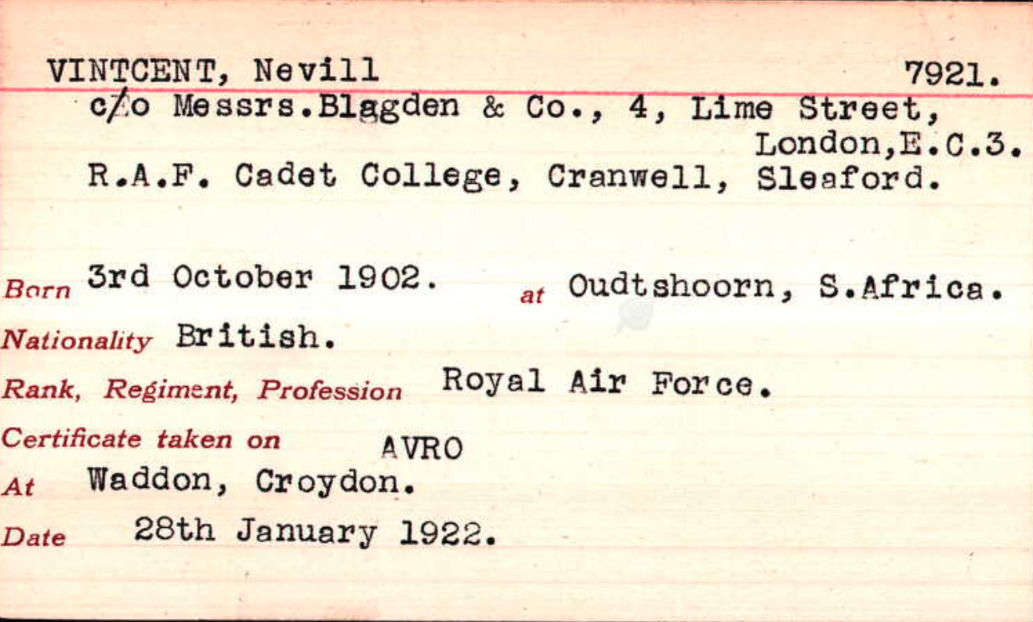 RAeC 1922 RAeC 1922 |
||||||||||||||||||||||||||||||||||||||||||||||||||||||||||||||||||||||||||||||||||||||||||||||
|
b. 3 Oct 1902 in Oudtshoorn, S Africa Father: Charles Henry Vintcent, a South African cricketing all-rounder who played in 3 Test matches beween 1889 and 1892. Mother: Lilian [Jackson] Nevill was commissioned in the RAF in 1922, and served in Kurdistan, Transjordania, Egypt, and Iraq, where he won the DFC in 1924 in unusual circumstances when he had to make a forced landing in the Arabian desert after engine trouble. As soon as the aircraft landed, the local tribespeople came on horses and began to attack. The aircraft had a machine gun at the front of the fuselage. Nevill jumped out of the aircraft, lifted the tail of the aircraft on his shoulders and turned the plane in circles, allowing his co-pilot to fire at the tribespeople and scare them away. He was also a boxing champion in the RAF, and came first in the Cranfield Sports Day "Putting the Weight" competition in 1921 (J. S. Newall, see later, came third). He left in 1926 "for more thrilling opportunities"; air survey work in India, Burma, the Federated Malay States and Borneo. He flew the first air mail from Borneo to the Straits Settlements. He worked as a pilot for the Air Survey Company. Here, from March 1927, is a photo of one of the DH9s owned by the company:
"The party is under the charge of Captain Durward, with Mr. Nevill Vintcent as pilot and Mr. C. R. Thorne as photographer. The scene depicted is the company’s temporary slipway and hangar at Chittagong, Bengal." In Burma, he flew the mail from Rangoon to Tavoy and Mergui, 245 miles, in 34 hrs. "The sea passage takes 48 hrs." And here they are in Port Swettenham, Malaya, in about June 1927:
In 1927 he entered the King's Cup Air Race, flying G-EBDK, a Martinsyde F6 belonging to Leslie Hamilton. However, a new formula to calculate handicap speeds was tried that year, with disastrous results; his aircraft was given 157 mph as a handicap speed, which was completely unrealistic, so he withdrew before the race.
In December 1927, he and F/O J S Newall prepared to fly two DH9s from Stag Lane to Singapore: (l to r) W S King (mechanic), Nevill, Mrs Wise Parker (passenger to Cairo), F/O J S Newall, and W A Charles (photographer). "The two machines will make a survey tour to Singapore, with the object of discovering and operating air routes of medium range between inaccessible but busy centres. Mrs. Wise Parker, seen in the centre of the group, has booked a trip as far as Cairo". Delayed by snow, they finally left on 9 Jan 1928 and duly delivered Mrs Wise Parker to Cairo on February 17, but only after they had been caught in a violent sandstorm in the desert the day before, forced to land and wait for three hours until it cleared. They reached Karachi on 26 April, and that seems to be as far as they got. Nevertheless, it was one of the longest flights of the time. They spent the next two years on holidays, giving joyrides, aerial photography and surveys, and became convinced that there was scope for commercial aviation in India. Nevill was "very enterprising and methodical. He would plan his next stop by sending his bearers ahead by train to check a suitable landing field and the passenger potential, having given the bearer sufficient money to telegraph back the details." He transferred to the RAFVR in December 1928. He owned G-AAXJ, a 1930 DH80a Puss Moth, which became VT-ACZ in India from Jul 1931 (and was written off in July 1935)
By 1932, Nevill was Deputy Director of Civil Aviation in the Public Works Branch of the India Office, based in Bombay.
He discovered that Imperial Airways was planning to extend its existing service to Karachi, to reach Calcutta and beyond. So, before Imperial started its service, Nevill put forward the idea of a plane service linking Karachi with Bombay, south India and Colombo, and approached many prominent people, including Russa Mehta, son of textile magnate, Sir Homi Mehta, for backing. The initial plan was to fly the airmail from Karachi to Bombay via Ahmadabad, fly southeast from Bombay to Madras via Bellary and Bangalore, and then return mails back to Karachi. Thereafter, Imperial would fly the mail east across India to Calcutta and then eventually to Australia. Nevill and Jehangir Ratanji Dadabhoy (J.R.D.) Tata came to an agreement to launch Tata Airlines to serve the new routes and Nevill became the chief pilot and manager of the new airline, and started preparations. In April 1932, he flew his Puss Moth G-AAXJ via Mandapam to a landing strip at the racecourse in Colombo. This was a historic day for Ceylon as it was the first time an aeroplane had landed there; up to this point the people of Ceylon had only seen seaplanes. Nevill gave joy rides for 10 days and then, on the 7 May, started for Bombay at 6.00 am carrying a bundle of 'Times of Ceylon' newspapers, arriving in Bombay at 4.30 pm.
The following month, Nevill flew his boss Sir Fredrick Tymms, the Director of Civil Aviation in India, to Ceylon to check the route and the landing area of the racecourse. After this visit, it was decided to construct a more suitable aerodrome, with a hard surface, at Ratmalana. Finally, on 8 October 1932, an Imperial Airways aircraft flew from London to Karachi. J R D Tata, in a de Havilland Puss Moth, took the mail on to Bombay, where Nevill then took over for the leg to Madras via Bellary (an outpost of the British Army, which had a small garrison), and Bangalore, arriving on 16 October. The first westbound flight left Madras the following day. The new runway at Ratmalana was ready by 1935, and a TATA Puss Moth flown by Lt Tyndale-Biscoe, with a Ceylonese passenger on board, landed there in February. On the return journey they carried air mail to Madras, to connect with the Madras-Karachi TATA service.
Tata Airlines grew steadily before WWII, acquiring these aircraft:
His wife Pamela and their 1-year-old son Charles travelled (first class) back to England from Bombay in April 1934 on P&O's SS Rajputana and then, in December 1934, they flew back to India with Nevill in Avro 642/4m VT-AFM, the 'Star of India', first registered 13 Sep 1934, built for the personal use of the Viceroy.
They arrived in Delhi on December 8. After being overhauled, the aircraft was flown to Calcutta where the Viceroy was staying.
"Flight" reported the progress of the airline: "The Tata Air Lines are a branch of the activities of the great steel concern, Tata Sons, Ltd. The director in charge of their flying interests is Mr. Jehangir R. D. Tata, a member of the Bombay Flying Club, and the detailed management of the service is in the hands of Mr. N. Vintcent. " By May 1934, the Tata service from Karachi to Bombay and Madras had been running for nearly 18 months, and it had "achieved the wonderful record of 100 per cent efficiency in running to schedule." In August 1934, "Lord Willingdon, Viceroy of India, and the Countess of Willingdon left Croydon for India by Imperial Airways, Ltd., after two months in England, and a day or so previously Mr. Nevill Vintcent, the Viceroy’s personal pilot, arrived from India by K.L.M." In the following October, 'Flight' reported that "Mr. Nevill Vintcent, D.F.C., manager of the Tata Air Line, is now on a visit to this country, and is able to report all well with the weekly service Karachi-Bombay-Madras. Though the service is unsubsidised it is now showing a profit, and the weekly loads of mails are growing too big for the capacity of the "Puss Moth” with which the line is operated. Mr. Vintcent is on the look-out for a type which has greater capacity and which will be suitable in other respects. He has no objection to wooden construction. It may not last quite so long as metal will do but then, he says, a wooden machine will probably last until the weekly weight of mails has outgrown its capacity and the line has to seek a still more capacious machine.
On 18 Jan 1937, Nevill flew Mr. Walters (the Postmaster General of India), Mr. Bewoor (from the postal department) and Sir Frederick Tymms to Ratmalana using one of Tata's Miles Merlins. This was a fact-finding mission to extend the airmail service from Madras. The same year, he flew Sir Victor Sassoon, President of the Federation Aeronautique International, and his assistant Captain Freeman-Thomas, to the Ratmalana aerodrome. He sailed from Southampton to New York on the 4 April 1937, in 'SS Europa', and then again from Southampton to the USA on the Queen Mary, arriving on 17 Jul 1939. After war was declared, Nevill proposed to build an aircraft factory in India. He flew to Hawaii with his colleague from Tata Chemical Ltd, Mr Kapilram Vakil, 11 to 13 Aug 1940. He sailed to the USA again, this time from Glasgow, arriving 27 December 1940, giving his cousin, J E Davis, as his contact in the USA. He flew from San Francisco to Hawaii on the 15 Jan 1941, and was then in Canada until 9 Jul 1941. During this time, he was in regular discussions with the minister of aircraft production, Lord Beaverbrook, and eventually secured a licence to build an aircraft factory in Pune for war purposes. On 29 Jan 1942, he boarded an RAF transit flight in RAF Portreath in Cornwall heading initially to Gibraltar, but the aircraft was not seen again. Another RAF aircraft had come under attack on the same day, and investigators eventually reached the conclusion that the aircraft must have been shot down and had crashed into the sea.
d. 29 Jan 1942 in Hudson AM946 "Flying Officer D J R Gee, Sergeant D J C Pitcher, Sergeant J Cadden, Sergeant J A Bolle, Mr N Vincent (Tata Air Lines): missing believed killed; Hudson AM946, Overseas Aircraft Delivery Unit; aircraft crashed at sea during a transit flight between Portreath and Gibraltar, 29 January 1942."
His daughter later said that “Pamela was not willing to believe that Nevill had been killed. Her belief was that he was in detention in some country, and he would return one day. But, even two years after the incident, there was no news of him,” Probate was finally granted in 1944: "Nevill Vintcent, of Lyndewode House, Bomanji Petit-Road Bombay India died on or since 29 January 1942 at sea. Probate Llandudno 8 November to Pamela Vintcent widow. Effects £10215 6s 9d"
Pamela, with her 3 children, left Mumbai and flew to England in 1944 and subsequently lived with her sister, Celia Johnson. Tata Airlines became a public company and later changed its name to Air India. Pamela m. 1950 in Chelsea, Ralph Wesley Dennis; they lived in London. Nevill's grandson Henry became a glider pilot, but died in a skiing accident. Ralph d. in 1990, Pamela 1993 in Reading. |
||||||||||||||||||||||||||||||||||||||||||||||||||||||||||||||||||||||||||||||||||||||||||||||
Vlasto, Alexander George
|
Alexander George Vlasto Amazingly, there are two different Alexander George Vlastoes ... (now what are the chances of that?) Take your pick: |
||
|
b. 12 Sep 1887 in Calcutta, d. 1935 photo: 1917, when a 2nd Lieutenant in the RFA, aged 20 |
- or -
a Merchant from Henley-on-Thames, b. 27 Feb 1904 in Bombay photo: 1930, aged 26 |
|
Waghorn, Henry Richard Danvers
| Flt-Lt Henry Richard Danvers 'Dick' Waghorn | ||
|
|
|
|
|
A member of the Schneider Cup winning team in 1929, also a member of the GB skiing team in 1930, and a burly rugby-player to boot. d. 1931 after bailing out of a Hawker Horsley from Farnborough and hitting a building. |
||
Waight, Robert John
| Mr Robert John 'Bob' Waight | ||
|
|
|
|
|
Joined de Havilland at Hatfield in 1928 and was their chief test pilot from 1935; killed flying the TK4 at Hatfield in October 1937. Hatfield later turned into an industrial estate (sigh) and Waight Close is named after him. |
||
Walker, Francis Robert
| Mr Francis Robert Walker | ||
|
|
|
|
| an accountant from Bayswater | ||
Walker, Henry Campbell
| Henry Campbell ‘Johnnie’ Walker | ||
|
|
|
|
|
Got his aviator's certificate in 1930 but had only flown about 250 hours, none of it outside NZ, at the time of the MacRobertson Race. Joined Union Airways, then Squadron Leader in the RNZAF during WWII; awarded Air Force Cross in January 1943. Post-war with New Zealand Airways - did the delivery flight of their first Viscount in 1957, and was still around when it was replaced by the Boeing 737. d. c. 11th Nov 1991, in Wellington, N.Z., aged 83 |
||
Wallace, Alexander Frew
| Mr Alexander Frew Wallace | ||
|
|
|
|
|
from Kalmalcolm, Scotland |
||
Waller, Kenneth Herbert Fraser
| Mr Kenneth Herbert Fraser 'Ken' Waller | ||
|
|
|
|
|
b. 7 April 1908, in Lambeth, London As you can see, he was over 6ft 4in in height. Despite this, learnt to fly in Kent, got his aviator's certificate in 1930 and then became an instructor at Brooklands in Surrey. Pilot, with Owen Cathcart Jones, of one of the D.H. Comets for the MacRobertson Race in 1934; given third prize (erroneously, in my view, but it's probably a bit late to say that now). In 1935, got annoyed with Owen Cathcart Jones for something he said in his book that Ken felt "reflected on his courage and ability as a pilot", and even went to court over it. Owen replied that "that was the last thing he intended, as Mr. Waller and he had been, and still were, very good friends", which seemed to settle the matter. He and Max Findlay competed in the Schlesinger Race to South Africa in 1936, in an Airspeed Envoy (No 13), but this crashed on take-off in Northern Rhodesia, killing Findlay and the radio operator; Ken was thrown out through a hole in the fuselage and badly hurt. After WWII, became Miles Aircraft's chief test pilot (he delivered a Hillman Minx car to Orkney in 1948 at a cost of £35, you may remember). |
||
Walters, Leslie Allan
| Leslie Allan Walters | ||
|
|
|
|
|
One of the original 16 pilots of Imperial Airways in 1924 b. London 30 Sep 1898 119, Foxley Lane, Purley in 1932 The first in the UK to be awarded the Master Pilot's Certificate, in 1934. |
||
Waltho, Neville Charles
| Flt-Lt Neville Charles Waltho | ||
|
|
|
|
|
b. 22 Jul 1898, Walsall d. 28 Aug 1923 - he was "Britain's first glider victim" and died at Upavon, 22 days after competing in the Air League Challenge Cup. |
||
Warner, ??
| Capt Warner | ||
|
|
|
|
|
2 Jan 1928: "BAGDAD AIR LINER. FORCED LANDING IN DESERT SHORT OF PETROL Capt. Warner, an Imperial Airways pilot, who had been flying all night, at a point 50 miles south of the usual track, found the missing air liner 'City of Teharan' yesterday morning. The liner was surrounded by Arabs, who were most friendly, offering the air passengers water, and undertaking to do anything else in their power to assist. Four persons were on board, apparently all well. The reason for the forced landing was that the craft ran out petrol. Sufficient was transferred from Capt. Warner's machine to enable the stranded liner reach the Rutba post, while the passengers and mails were conveyed in Capt. Warner's machine to Bagdad, none the worse for their adventure. The wireless equipment of the stranded liner was working perfectly, but its messages were not picked up due to jamming caused by the multiplicity of messages between Bagdad and other stations on the desert route and the machines engaged in the search." |
||
Warren, John Anthony Crosby
| Mr John Anthony Crosby Warren | ||
|
|
|
|
|
a Cambridge M.A., "pilot for Parnall and Nash and Thompson; 6 feet 5in tall'. [Or possibly he was "over 6 ft 8in"!] Killed on 27 April 1944, in an accident when flying a prototype Gloster Meteor. |
||
Warwick, Guy Neville
| Mr Guy Neville Warwick | ||
|
|
|
|
|
A barrister from Harpenden, Hertfordshire.
In June 2004, Air Crash Investigation and Archaeology (ACIA) reported that 'the remains of ANEC Missel Thrush, G-EBPI, have been found on Broad Law, near St. Mary's Loch in the Scottish Borders. The aircraft, a competitor in the King's Cup Air Race, crashed in cloud on 20th July 1928 during the Newcastle to Glasgow leg of the race. The pilot, Mr Guy Neville Warwick, was sadly killed. ACIA members Jim Corbett, Scott McIntosh and Alan Hudson discovered the fragmented remains after a long search on the southern slopes of the mountain, eventually finding the fragments in a stream below the reported crash location. Reports that the engine remained on the mountain proved unfounded."
|
||
Watt, Dudley Alastair Nixon
| Mr Dudley Alastair Nixon Watt | ||
|
|
|
|
|
'Dangerous Dan'; address given as c/o Brooklands Automobile Racing Club, Surrey. Killed in WWII: 6th October 1940, in a Swordfish from HMS Furious off Clacton; buried there (CWGC 24913106) |
||
Weare, Frank Gerald Craven
| Flt-Lt Frank Gerald Craven Weare, M.C. | ||
|
|
|
|
|
b. 15 Jun 1896 in Tunbridge Wells |
||
Webster, John C
| Mr John C Webster | ||
|
|
|
|
|
"The first overseas entrant for the King's Cup air race—Mr. John C. Webster, of Montreal —wants to take the cup back to Canada and fill it with snow. 'Snow' he said, 'is a good friend of the Canadian flier.' 'I made the longest flight of my life when I made the practice flight over the course for the King's Cup race', he confessed, with a boyish smile, 'though I have been flying for three years. The course is nearly 1,000 miles long, and we don't often fly as much as that in a day—even in Canada. When I start in the race from Heston Air Park on July 25th, I will be starting the hardest day's flying of my life'. 'Britain may not be very big, but viewed from the air there is so darned much of it. Out there, you can fly hundreds of miles without noticing much difference in the landscape, but here everything down below seems to be all of a heap. And that just about describes your weather, too.' Mr. Webster is a member of the Montreal Flying Club, whose chief instructor is Captain ("Tony") Spooner, brother of Miss Winifred Spooner, the famous woman flier." "TRAGEDY has overtaken Mr. J. C. Webster, the Canadian pilot who recently took part in the King's Cup air race on a Curtiss-Reid "Rambler." While flying over St. Hubert [Montreal] aerodrome, it is stated, the machine got into a spin and crashed, Mr. Webster sustaining injuries from which he died later in hospital. His death occurred a few hours before an official reception, which was to have been given to celebrate Webster's return from England." From Shediac, N.B. His father established the Webster Memorial Trophy - the premier Canadian aviation award - in his memory. |
||
Webster, Sidney Norman
| Flt-Lt Sidney Norman Webster | ||
|
|
|
|
|
'Pebbler' Webster, from Walsall. 1927 Schneider Cup winner; later Air Vice Marshall; died 1984 |
||
Welles, Utica Celestia (Lady Beecham)
| Utica Celestia Welles | ||
|
|
Lady Utica Beecham, married Thomas (later Sir Thomas) Beecham on 26 July 1903. She owned a 1925 Avro 504K (C724, G-EAAY). |
|
Westenra, Richard
| Hon Richard Westenra | ||
|
|
|
|
|
Lady Mary Bailey's brother [m. 1919
The Hon. Alice Florence [Blacker-Douglass], from Devon but b. Dublin 20 Jan 1895; owned a 1929 DH.60G Gipsy Moth, G-AAJZ.]
Wednesday 11 March 1936: "The Hon. Richard Westenra, brother of Lord Rossmore, was respondent to his wife's petition before Sir Boyd Merriman in the London Divorce Court yesterday and co-respondent in another suit In the first of the two connected suits. Mrs. Allies Florence Westenra (nee Blacker Douglass). of Seafield, Millbrooke. Jersey, sought a decree nisi against the Hon. Richard Westenra on the grounds of his misconduct at a Brighton hotel in February, 1935, with Mrs. Margaret Cecilia Suliven Hope. The suit was undefended." Richard d. 1944. Lady Mary was at his funeral. |
||
Wheeler, Samuel Joseph
| Samuel Joseph Wheeler | ||
|
|
|
|
|
b. Ascot 27 Mar 1898 Flight Engineer 1924-27, pilot on Cairo-Delhi route 1927-30 |
||
Wheeler, Allen Henry
| Mr Allen Henry Wheeler CBE MA | ||
|
|
|
|
|
b. 27 Sep 1903, Bitterley, Ludlow Ed. Eton, University of Cambridge RAF 1925-55: RAF Officer (Engineering); at Boscombe Down and Farnborough during WWII Trustee, Richard Ormonde Shuttleworth Remembrance Trust, Old Warden, Beds, from 1947 to 1980 4th place in the Kemsley Challenge Trophy, Birmingham, 31 Jul 1949 1 of 3 assessors, BOAC DH106 Comets G-ALYP & G-ALYY Accident Enquiry, Ministry of Transport & Civil Aviation, 19 Oct to 24 Nov 1954 Wrote ' That Nothing Failed Them' (1963), 'Building Aeroplanes for those Magnificent Men' (1965), and 'Flying Between the Wars' (1972) Aviation Consultant and Technical Advisor to the film industry, including 'Those Magnificent Men in their Flying Machines' (1965) and 'The Blue Max' (1966) Member of GAPAN, 22 Sep 1966 President of RAeS Bedford Branch (FRAeS), 1977-78
d 1 Jan 1984 - Whistley Bridge, Berks
Research: thanks to Steve Brew |
||
Whistler, Harold Alfred
| Sqn-Ldr Harold Alfred Whistler DSO, DFC | ||
|
|
|
|
|
b. 30 Dec 1896 - Lincolnshire Dorsetshire Regt. in WWI, a 'gallant officer of fine judgement and power of leadership'. Later Group Captain. Killed in the crash of Imperial Airways' ''Hannibal', which disappeared on a flight in the Persian Gulf, 1st Mar 1940; commemorated on the Singapore Memorial. |
||
White, Ernest Robert Bristow
| Capt Ernest Robert Bristow White | ||
|
|
|
|
|
from Flight, August 1941: "Capt. White joined the R.A.F. in 1921 as Boy Mechanic and left the service in December, 1930, with the rank of Sergeant Pilot. He joined Imperial Airways the following year, and in 1933 he was seconded as pilot to the Iraq Petroleum Company, which at that time were laying a 1,200 mile long oil pipe line from Haifa, in Palestine, to Kirkuk, Iraq. He was transferred to the European Division of Imperial Airways in 1935, and operated the London-Budapest route. It may be remembered that in 1936 Capt. White established a record by flying the 2,970 miles from London to Brindisi, via Marseilles, and back to London in 18 hours. On the outbreak of the Sino-Japanese war in 1937 he piloted pressmen from Alexandria to Penang, one of the longest charter flights on record. In the same year Capt. White represented Imperial Airways in Berlin at the international conference on ice formation, a subject on which he was an authority. He was seconded to Atfero in the spring of this year and had flown something like one million miles. On the first Atlantic flight in 1940 he acted as navigator. He was amongst those killed when Liberator AM261 crashed into Goat Fell mountain on Isle of Arran after take-off from Heathfield Ayr on the 10 Aug 1941 (22 killed - 5 crew and 17 travelling as passengers) |
||
Whitehead, R A
| Mr R A Whitehead | ||
|
|
|
|
| ?? | ||
Wilcockson, Arthur S
| Capt Arthur S Wilcockson | ||
|
|
|
|
|
One of the original 16 pilots of Imperial Airways in 1924 RFC in WWI; flew the Folkestone - Cologne Army Mail in 1918-19. Handley Page Test Pilot 1920-24. October 1926: "FLYING OVER A STORM Capt A. S. Wilcockson, an Imperial Airways pilot, who flew from London to Amsterdam and back yesterday, reported on landing at Croydon that there is a severe storm all along the coast, and that he had observed several vessels, principally fishing boats, driven ashore on the Belgian and Dutch sands. On his return journey he counted eight vessels in distress on the shore." Jan 1928: "AIR LINER KILLS TWO ROOKS. BIRDS MISJUDGE DISTANCE. While flying a Handley-Page liner over Kent yesterday Captain A. S. Wilcockson, an Imperial Airways pilot, flew into a flock of rooks and killed two of them. He was at a height of 500 feet, and saw the rooks approaching him at the same level. They came steadily on, and made no attempt to avoid the air liner until within fifty feet. They then divided into two flocks to pass the machine. One bird in each flock misjudged the distance, and they were caught by the machine and killed. The air liner was undamaged." Awarded Master Pilot's Certificate in 1935 Feb 1938: "PICK-A-BACK 'PLANE UP FOR TEST Atlantic Pilot Sees How It's Done. The Mayo composite aircraft made a second successful separation test flight at Rochester yesterday. Captain Lankaster Parker, chief test pilot of Short Brothers, who was in the control cabin of the lower component, had as passenger Captain A. S. Wilcockson, Imperial Airways Atlantic pilot." August 1940: "U.S. Bombers To Fly To Britain. The bombers will take off from Canada, and the flights will be supervised by Capt. A. S. Wilcockson, the famous Imperial Airways pilot, whose services have been lent to the Ministry of Aircraft Production. He arrived in Canada yesterday, along with Capt. D. C. T. Bennett, a veteran Imperial Airways pilot, and Wing Commander Griffith Powell, a former Imperial Airways Transatlantic pilot. Capt. Wilcockson, who served in the Flying Corps during the last war, made a number of survey flights across the Atlantic in 1937. In 1928 he made a record commercial liner flight, from London to Paris in eighty minutes." |
||
Wilkinson, Cicely Ethel
|
Mrs Cicely Ethel Wilkinson Royal Aero Club Certificate No. 3522 (11 Sep 1916) |
||
|
|
||
|
Her Wikipedia entry is here: https://en.wikipedia.org/wiki/Cicely_Ethel_Wilkinson |
||
Williams, David Reginald
| Lt David Reginald Williams | ||
|
|
|
|
| ?? | ||
Willis, Charles Henry
| Mr Charles Henry Willis | ||
|
|
|
|
|
'Assistant instructor to the Insurance Flying Club' |
||
Wills, Philip Aubrey
| Mr Philip Aubrey Wills CBE | ||
|
photo: 1928, aged 21 |
In 1939, setting the British gliding height record of 14,200ft |
|
|
b. 1907; he went to Harrow. a 'warehouseman' from London; pioneering, record-setting and record-breaking glider pilot at Dunstable. President of the British Gliding Association; Chairman of the Royal Aero Club; Director of Operations in the Air Transport Auxiliary during WWII - see https://www.ata-ferry-pilots.org/index.php/category-blog-1939/68-wills-philip later General Manager of BOAC. d. January 1978 aged 70. |
||
Wilson, ??
| Capt Wilson | ||
|
|
|
|
|
Jan 1939: "BRITISH 'PLANE AS TARGET Imperial Airways Pilot's Signal. HONG KONG, Tuesday. Imperial Airways machine 'Delia' was fired upon west of Waichow Island, in the Gulf of Tonking, according to a signal picked up here today from Captain Wilson, the 'plane's pilot. The machine, which was apparently undamaged, later arrived and departed again from Hanoi on schedule. Two British passengers were on board. Their names are given as the Hon. Mark Watson and Mr A. G. Tully. Apparently the 'plane had come from Hong Kong. W Waichow Island is halfway across the Gulf of Tongking, between the Hainan Peninsula and French Indo-China. It is alleged that the firing was done by Japanese warships anchored near Waichow Island." |
||
Wilson, Charles Benjamin
| Capt Charles Benjamin Wilson MC | ||
|
|
|
|
|
born in Manchester; listed 'racing, travelling and yachting' as his recreations; High Sherriff of Norfolk in 1942; died 1957 |
||
Wilson, George Noel
| Mr George Noel Wilson | ||
|
|
|
|
|
a 'merchant' from London, born in Darlington; died 1957 |
||
Wilson, Hugh Joseph
| Mr Hugh Joseph Wilson | ||
|
|
|
|
|
"Tough, broken-nosed" Hugh "transferred to the RAF Reserve in 1934 after serving with shore-based boats and float-planes and with the school of Naval Co-operation at Lee-on-the-Solent. Later chief flying instructor to the York County Aviation Club at Sherburn-in-Elmet, and flying instructor to the Blackburn RAF Civil FTS at Hanworth and demonstrating B.2 Trainer and Cirrus-Minor-in-B.A. Swallow alternately." |
||
Wilson, John Borthwick
| Flt-Lt John Borthwick 'Jack' Wilson | ||
|
|
|
|
|
b. 14 Jan 1901 - Strood, Kent Father: John Gilchrist Wilson (1867-1915) from Lanark, Scotland, Mother: Bine [Ball] (1867-1936) from Strood. He was the eldest of 4: Dorothy Sabina Catherine (1902-1980), James William Gilchrist (1903-1983) and William Ball (1905-1978). Ed. Kings' School, Rochester, Herne Bay College TA from 9th Jan 1915 (age 14) m. 1922 in Thanet, Kent, Agnes Blanche [Newell]. 2 sons, (Peter, d. 1924), John Alexander Borthwick (d. 1953 in India, age 25) RAFVR (General Duties Branch) from 1 Oct 1922; F/O from 1923, Flt-Lt from 1 Apr 1929 "Gained a certain wisdom when in the RAF by ascending to 20,000 feet daily on meteorological duties, weather or no. Thereafter took Desoutters through anything on taxi and charter work. Chief Instructor at Hanworth until acquired by British Aircraft Manufacturing Co Ltd for test pilotage. One of nature's quietest birdmen." - Flight Pilot for National Air Services 1929-31; Gibraltar Airways 1931-32 Competed in the King's Cup Air Race in 1934 (eliminated in 2nd Round), 1935 (coming 14th / 29) and 1936 (placed 3rd / 26) For his efforts in 1934, he was presented with a commemorative silver travel clock by the Royal Aero Club:
Runner-up (Medal and £25, presented by the Cinque Ports Club) in the Folkestone Aero Trophy in September 1935, flying a BA Eagle Spent 1939 to 1953 in the Royal Navy/Fleet Air Arm, ending as Commander.
Buried All Saints, Birchington:
Based on research by Alexandra Gilbert |
||
Wilson, Mary Stewart Dashwood
|
Mary Stewart Dashwood Wilson Royal Aero Club Certificate 8583 (13 May 1929) |
||
|
|
||
|
b. 28 April 1886, from London. Bought a 1927 DH.60 Moth, (G-EBRY) which she later sold to the Isle of Wight Flying Club. |
||
Wincott, Cyril Beresford
| Flt-Lt Cyril Beresford Wincott | ||
|
1931 |
|
|
|
b. 1896; RNAS in WWI, then went out to East Africa for 3 years to make his fortune growing coffee, but as the fortune did not materialise came back and joined the RAF. Pilot at Martlesham Heath (in 1931 he was Flight Commander, 22 Squadron), later Air Commodore, Ministry of Aircraft Production during WWII, Officer 'in charge of the West Coast, USA' in 1943 (sounds like a nice job) and Air Attache to Moscow (sounds like a horrid job) after WWII; died 1972 |
||
Wolley Dod, Charles Francis
| Charles Francis Wolley Dod | ||
|
|
|
|
|
One of the original 16 pilots of Imperial Airways in 1924 b. 25 Aug 1892 in Bengal, India Sir Alan Cobham had some harsh words to say, when he sold his well-travelled 'Youth of Britain' aircraft to Imperial Airways; "I arrived at Salisbury [Rhodesia] on January 7 1930, and handed the aircraft over to Wolley Dod. I found him to be an unbelievably tiresome man. He spoke to me as though I were a pupil pilot of no experience at all; he went over the aircraft in detail, and managed to find something wrong with every aspect of it - the fuel system, the propeller, the rigging, the lot. I controlled myself with difficulty. I was fortunate indeed to have escaped being teamed up with such a fuss-pot". Wolley Dod promptly crashed the aircraft at Broken Hill, much to Sir Alan's fury; "I had carried some 40,000 passengers in this perfectly good aircraft, making perhaps 5,000 landings. Then Big Brother took it over, and had to go and break it straight away." IMPERIAL AIRWAYS LINER (ACCIDENT). HC Deb 16 March 1937 vol 321 c1858 1858Mr. Perkins (by Private Notice) asked the Under-Secretary of State for Air whether he can make any statement with regard to the disappearance of the Imperial Airways liner "Jupiter" last night? |
||
Wood, Florence Margaret
|
Florence Margaret Wood Royal Aero Club Certificate: 8572 (7 May 1929) |
||
|
|
||
Woodbridge, Albert E
| Mr Albert E Woodbridge | ||
|
|
|
|
|
RFC in WWI - he was responsible for Baron von Richthofen's head wound in 1917.
After WWI he left the RAF, but rejoined and was drafted 'out East'. With Imperial Airways, he spent about six months piloting the cross-Channel service, then transferred to the Cairo- Karachi section. Lived in Westcliffe-on-Sea Died September 1929: "Three people were killed and two passengers burned when an Imperial Airways air mail liner crashed in flames while attempting to land last night at Jask Airdrome, in Persia, on the route to India from Croydon. The dead are Mr. A. E. Woodbridge, the pilot; a passenger, Mr. G. Bell; and a mechanic, Mr. J. Court, says British United Press. The airplane and the mail were destroyed. Two members of the crew of the machine, Mr. H. Bourne, wireless operator, and Mr. H. C. Amor, flight engineer, were burnt, but not seriously, and are progressing favourably. From reports reaching Karachi it appears that the air liner was making a landing by the light of flares set on the tips of the wings when the disaster occurred. Suddenly the wings were seen to burst into flames, and the flames spread rapidly, rendering the escape of the occupants of the machine impossible. The injured pilot of the air liner was rushed to a house two miles from the airdrome, but he died there soon after arrival. When the news was received at Karachi, Capt. Attwood, pilot of the air mail liner which leaves there for England to-morrow, set out in his machine with a doctor and nursing orderlies to bring the injured pilot to Karachi, but returned when wireless news received reporting the death of the pilot of the burned air liner. FAMOUS PILOT. Mr. A. E. Woodbridge was a very distinguished air-fighter during the war. He brought down the famous German, Baron Richthofen, in June, 1917." Actually, 2nd Lt Woodbridge had managed to wound von Richthofen in the head. When the Red Baron returned to duty, he was still unfit to fly - his head wound had not healed - and this is thought to have been a contributory factor when he was shot down nine months later by an Australian gunner. |
||
Woodhead, Madeleine Constance Mary
|
Madeleine Constance Mary Woodhead Royal Aero Club Certificate No. 8142 (11 Aug 1927) |
||
|
|
||
| b. Leeds, 21 Jul 1905 | ||
Woodhouse, John Whitaker
| Sqn-Ldr (later Wing-Cdr) John Whitaker Woodhouse | ||
|
|
|
|
|
from Devon; pre-WWI, a well-known car and motor-cycle racer. A member of No. 4 Squadron in WWI, he was the first pilot to land a spy successfully behind the German lines, and was also lost over the North Sea for several hours after having attacked and driven off a Zeppelin. In 1931, he was in command of No. 207 (Bombing) Squadron at Bircham Newton. |
||
Woods, James
| James 'Jimmie' Woods | ||
|
|
|
|
|
"JIMMIE WOODS is reluctant to talk about himself, and cannot believe that anyone is interested in such personal matters as his age and birthplace. He was born "in Scotland about thirty-nine years ago," served with R.F.C. and R.A.F., and has flown some 11,000 hours." He spent eleven years a pilot with West Australian Airways, Ltd., flying up and down the 2,035-mile coastal route from Perth to Wyndham, and across the 1,453-mile transcontinental route from Perth to Adelaide; in 1933 he flew a Gipsy Moth from Australia to England. Woods spent some time at the Lockheed plant in Burbank, flew across America in a Boeing 247, (which he described as "a very clean job"), then flew to England and collected the late Lt.-Com. Glen Kidston's Vega at Hanworth. Died 9th May, 1979, aged 85 |
||
Wright, John Henry
| John Henry Wright | ||
|
|
|
|
|
d. 1 May 1979, aged 84 |
||
Yeatman, Harry Morgan
| Mr Harry Morgan Yeatman | ||
|
|
|
|
|
b. 21 Jul 1895 in London, the son of Harry Oswald Yeatman, a wine shipper (the Yeatman Family were partners in Taylor's Port) and Benedicta Wiltshire Regiment in WWI; then RFC/RAF 34, 9, 48 and 52 squadrons 21.12.16: wounded [7100 BE2e] Hit hangar and nosedived to ground landing at 4Sq after observer inj in eye on artly obs. 11.07.17: Ok [A4610 RE8] Run into by machine of 7Sq after landing from special duty. Lt HM Yeatman Ok/Maj Mitchell Ok Transferred to the unemployed list as Captain, 24 Feb 1919. m. 1929 Sylvia Marguerite [Giraud Wright]; profession: "Aeronaut" Elected member of RAeC, 1929 d. 30 May 1968; buried All Souls Churchyard, Harfordbridge, Hants
|
||
Yendall, Edna Mary
|
Edna Mary Yendall Royal Aero Club Certificate: 8544 (31 Mar 1929) |
||
|
|
||
| b. Newcastle-on-Tyne, 25 May 1904 | ||
Youell, Alan Bruce Hamilton
| Mr Alan Bruce Hamilton 'Jimmy' Youell | ||
|
|
|
|
|
One of the original 16 pilots of Imperial Airways in 1924 b. 10 Feb 1900 in Portsea Island, Hants. RAeC certificate 4909 (1917). Awarded Master Pilot's Certificate March 1926: "Like the Swallow. Captain B. Yulle (sic), the Imperial Airways pilot, set a record on Thursday when he flew from London to Amsterdam, a distance of 267 miles, in 100 minutes. Railway Air Services post-war. "October 13, 1947 – A helicopter flies in Switzerland for the first time. It is the Bell 47B G-AKCX of the Irvin-Bell Helicopters Sales presented near the Allmend in Zürich-Wollishofen by the British pilot Alan Bruce Hamilton 'Jimmy' Youell." "On 14 June 1949, he became the first person to fly a helicopter in Iceland when he flew a Bell 47D TF-HET. It was on loan from Bell Aircraft Corporation to test the feasibility of the Icelandic government to purchase it. Youell also trained the first two Icelandic helicopter pilots during the same summer." Apparently, It was "difficult to reach a conclusion in the Althingi on whether to buy the helicopter or not, and in the end it was sent back out of the country"
d. 19 April 1961 'in or near Addis Ababa, Ethiopia'
With thanks to Sturla Stigsson for the Icelandic flight research. |
||
Young, Christina Mitchell
|
Mrs Christina Mitchell Young Royal Aero Club Certificate 8779 (8 Sep 1929) |
||
|
|
||
|
from Suffolk, but born in Edinburgh. |
||

 1930
1930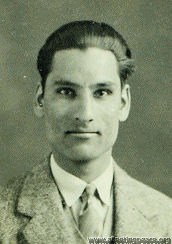 photo: 1933, aged 24
photo: 1933, aged 24 Ancestry
Ancestry


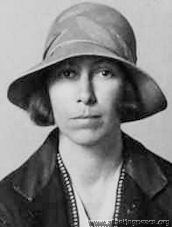 Joanna Elder Giles
Joanna Elder Giles

.jpg) photo: 1933, aged 19
photo: 1933, aged 19


 RAeC
RAeC 1934
1934 with Cobham's Flying Circus
with Cobham's Flying Circus




 1930
1930 Jack', chief test pilot for for Blackburn, later a Wing Commander. Susan Slade's cousin.
Jack', chief test pilot for for Blackburn, later a Wing Commander. Susan Slade's cousin. photo: 1913, when Leading Seaman Ashton, aged 25
photo: 1913, when Leading Seaman Ashton, aged 25 photo: 1929
photo: 1929
 photo: 1929, aged 25
photo: 1929, aged 25.jpg)
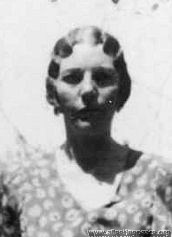
 in Egypt after WWI
in Egypt after WWI
 in May 1938
in May 1938

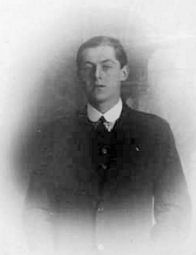





 www.monaghan.ie/museum
www.monaghan.ie/museum Throttle Full Open
Throttle Full Open

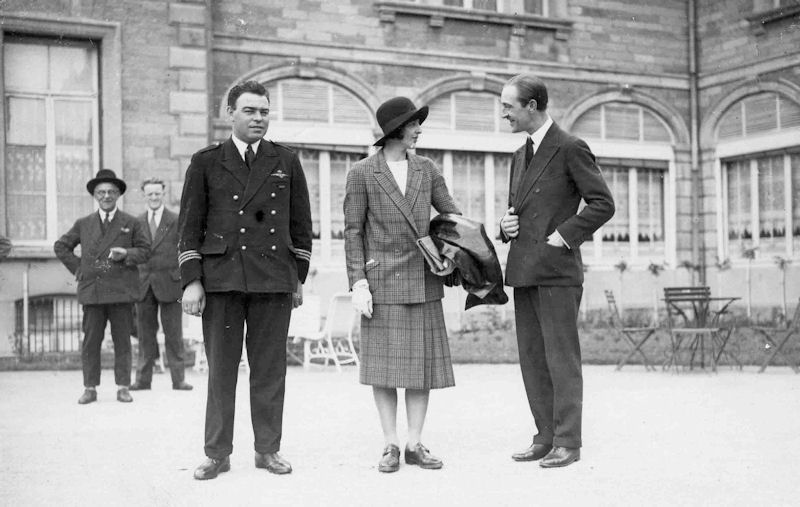





 seen here with HRH the Prince of Wales, in 1931
seen here with HRH the Prince of Wales, in 1931 photo: 1930
photo: 1930 photo: 1930, aged 25
photo: 1930, aged 25

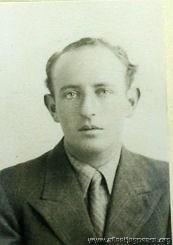
 1929
1929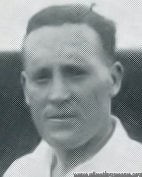 photo: 1930
photo: 1930
 photo: 1925, aged 29
photo: 1925, aged 29 
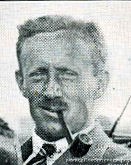
 in 1930
in 1930
 photo: 1931, aged 39
photo: 1931, aged 39 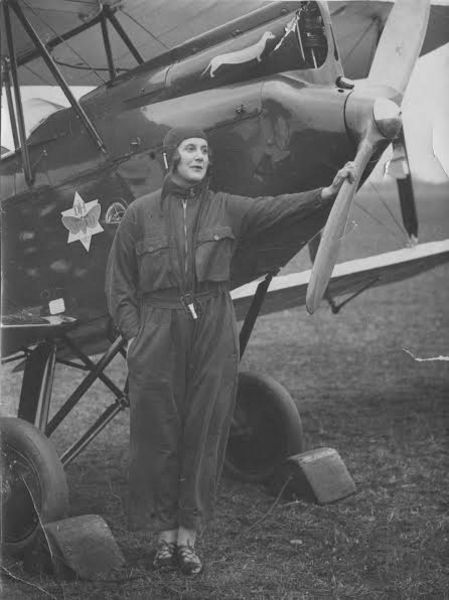
 (with Mrs B)
(with Mrs B) 1927
1927 photo: 1916, aged 20
photo: 1916, aged 20 photo: 1930, aged 34. Same bloke, more pies.
photo: 1930, aged 34. Same bloke, more pies.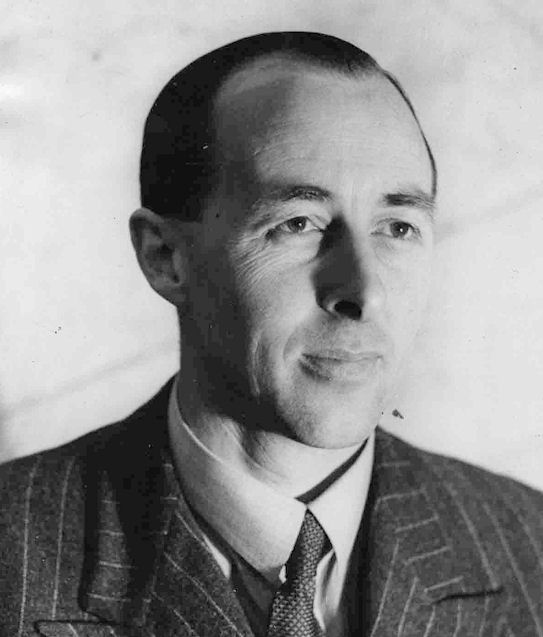

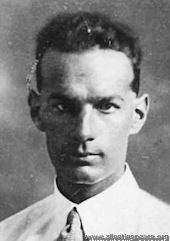 in 1917
in 1917
 c.1934, aged 42.
c.1934, aged 42. in 1931
in 1931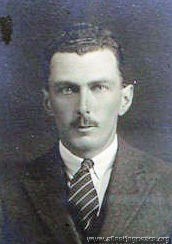 photo: 1928, aged 26
photo: 1928, aged 26 photo: 1921, aged 20
photo: 1921, aged 20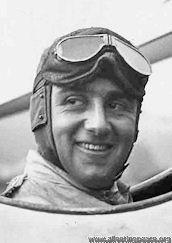 photo: 1930, aged 29
photo: 1930, aged 29

 photo: 1912, when a Lieutenant in the Black Watch, aged 26
photo: 1912, when a Lieutenant in the Black Watch, aged 26
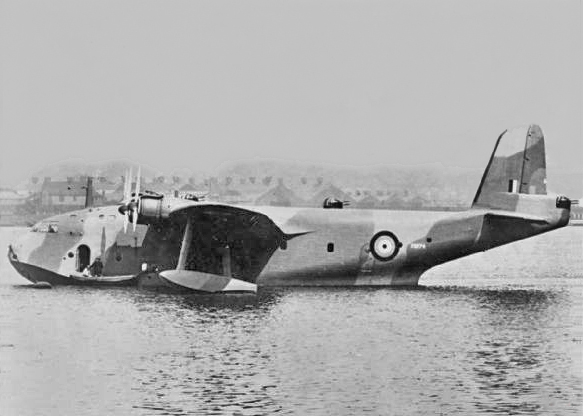 the Imperial War Museums
the Imperial War Museums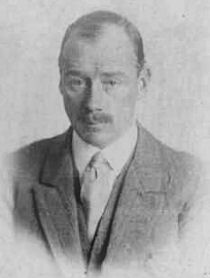 in 1916
in 1916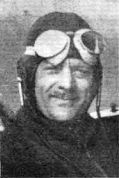 1935 (Flight)
1935 (Flight) 1931
1931 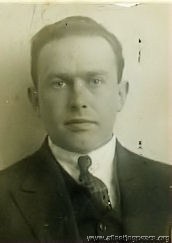
 photo: 1930, aged 33
photo: 1930, aged 33 in 1935
in 1935 photo: 1937, aged 27
photo: 1937, aged 27

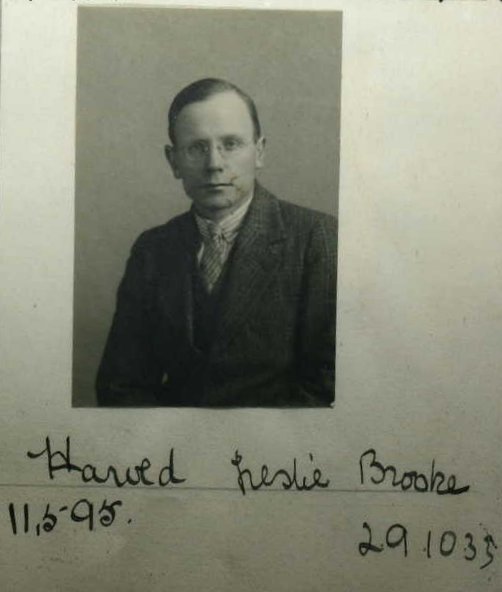
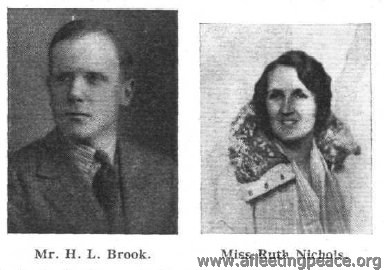

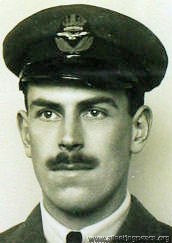 photo: 1917, when a Lieutenant in the Army Service Corps, aged 25
photo: 1917, when a Lieutenant in the Army Service Corps, aged 25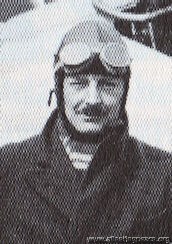
 photo: 1927, aged 28
photo: 1927, aged 28 .jpg)
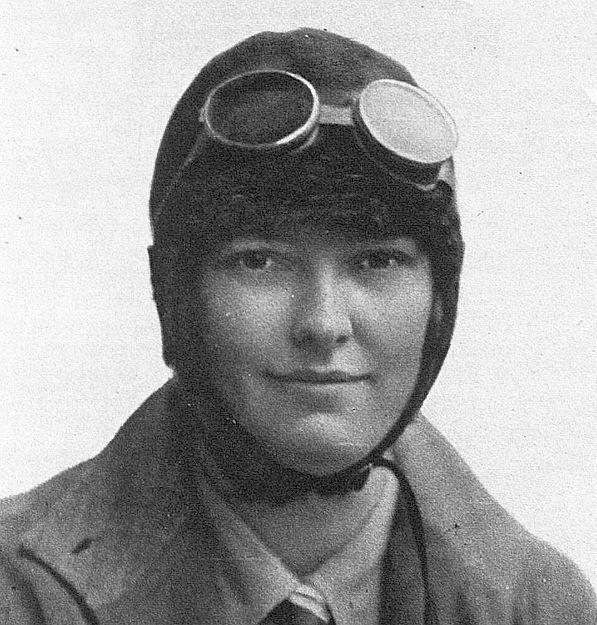 "A Well-known English Pilot" - The Sketch, 1929
"A Well-known English Pilot" - The Sketch, 1929.jpg)

 in 1930
in 1930

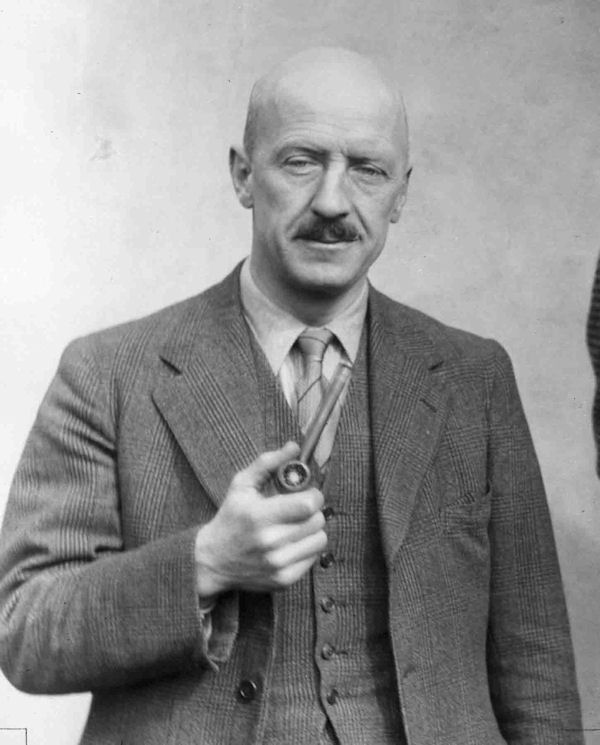
 photo: 1917, when a 2nd Lieutenant in the RFC
photo: 1917, when a 2nd Lieutenant in the RFC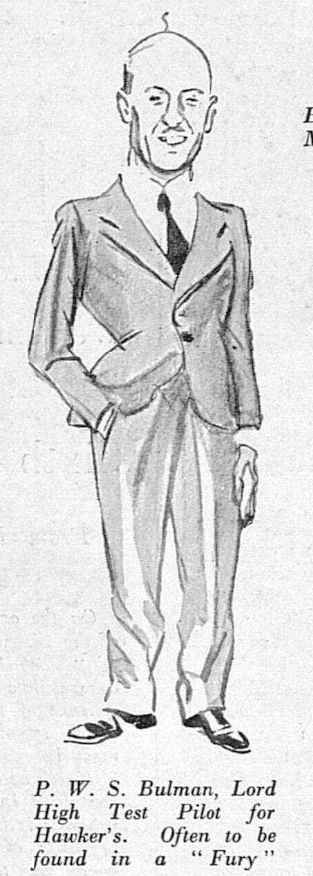 The Bystander Special Aviation Edition, 1933
The Bystander Special Aviation Edition, 1933 seated in a prototype Hurricane c.1946
seated in a prototype Hurricane c.1946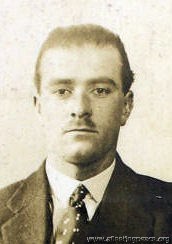
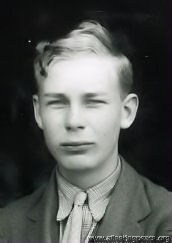
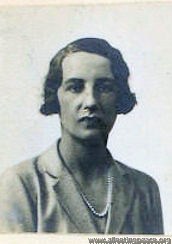
 King's Cup 1933
King's Cup 1933 photo: 1934
photo: 1934

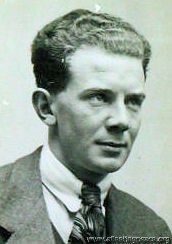 photo: 1921, aged 21
photo: 1921, aged 21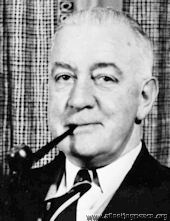 in 1961
in 1961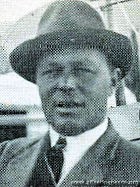
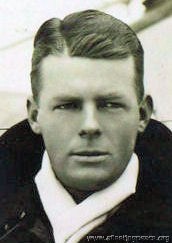


 photo: 1923
photo: 1923

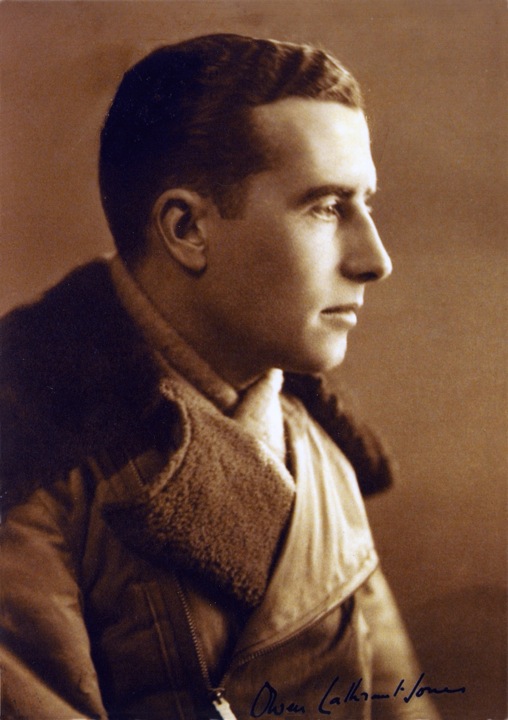
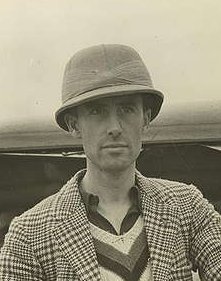 1934
1934 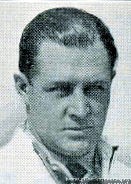
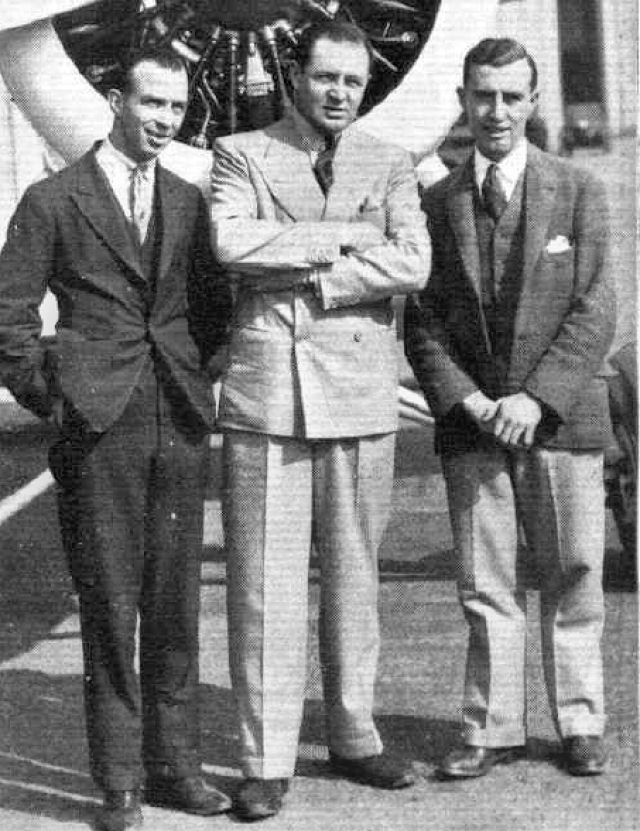





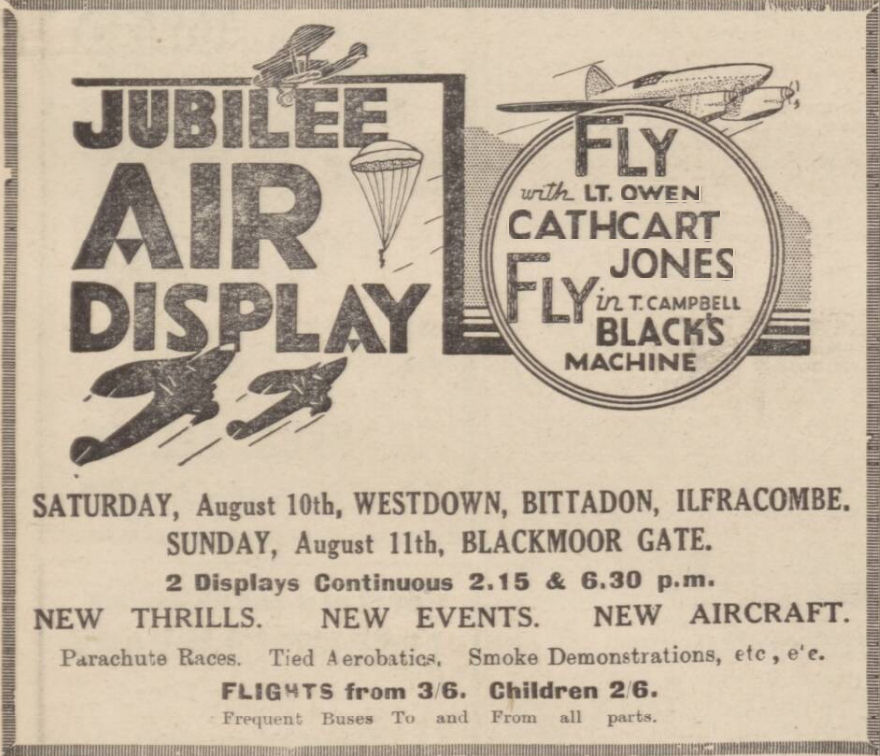
 via Joss Mullinger
via Joss Mullinger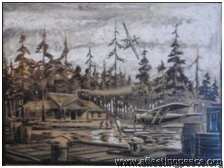
 photo: 1927, aged 35
photo: 1927, aged 35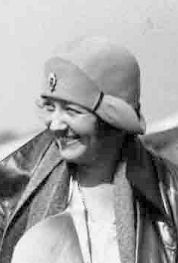

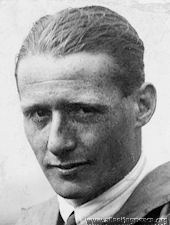
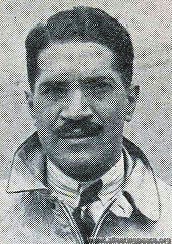 in 1936
in 1936 in 1916, as a 2nd Lieut., R.F.C.
in 1916, as a 2nd Lieut., R.F.C.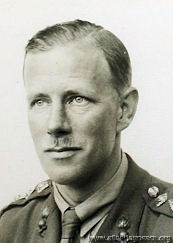 in 1931, when a Captain in the RE, at RAE Farnborough, aged 31
in 1931, when a Captain in the RE, at RAE Farnborough, aged 31
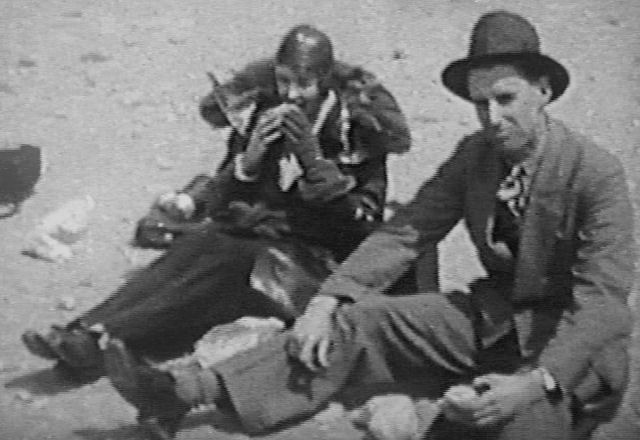
 in 1930, aged 22
in 1930, aged 22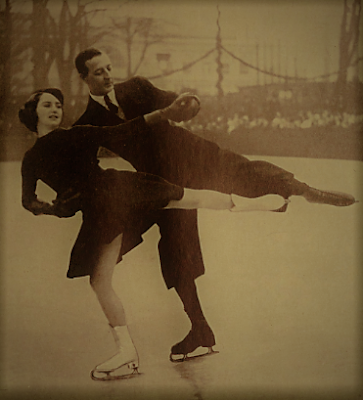 1936
1936 1929, Royal Naval College, Greenwich
1929, Royal Naval College, Greenwich in 1936, aged 28
in 1936, aged 28 With the Brittania Trophy
With the Brittania Trophy in c.1934, aged c.40
in c.1934, aged c.40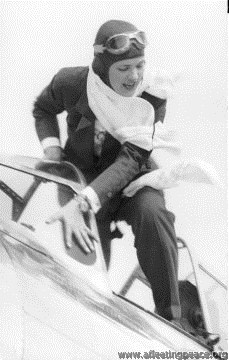
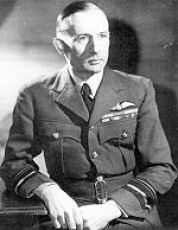
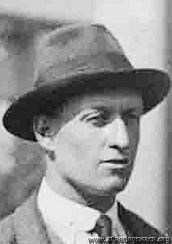

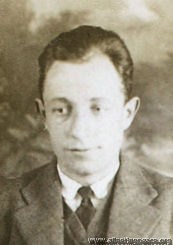 in 1932, aged 23
in 1932, aged 23
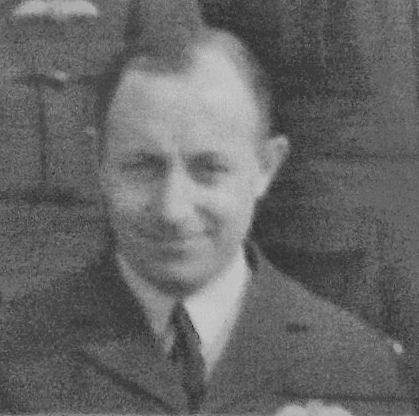
 in 1920
in 1920
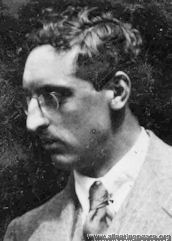
 photo: 1972, holding the King's Cup at the RAF Museum, Hendon, aged 78
photo: 1972, holding the King's Cup at the RAF Museum, Hendon, aged 78 in 1930, aged 25
in 1930, aged 25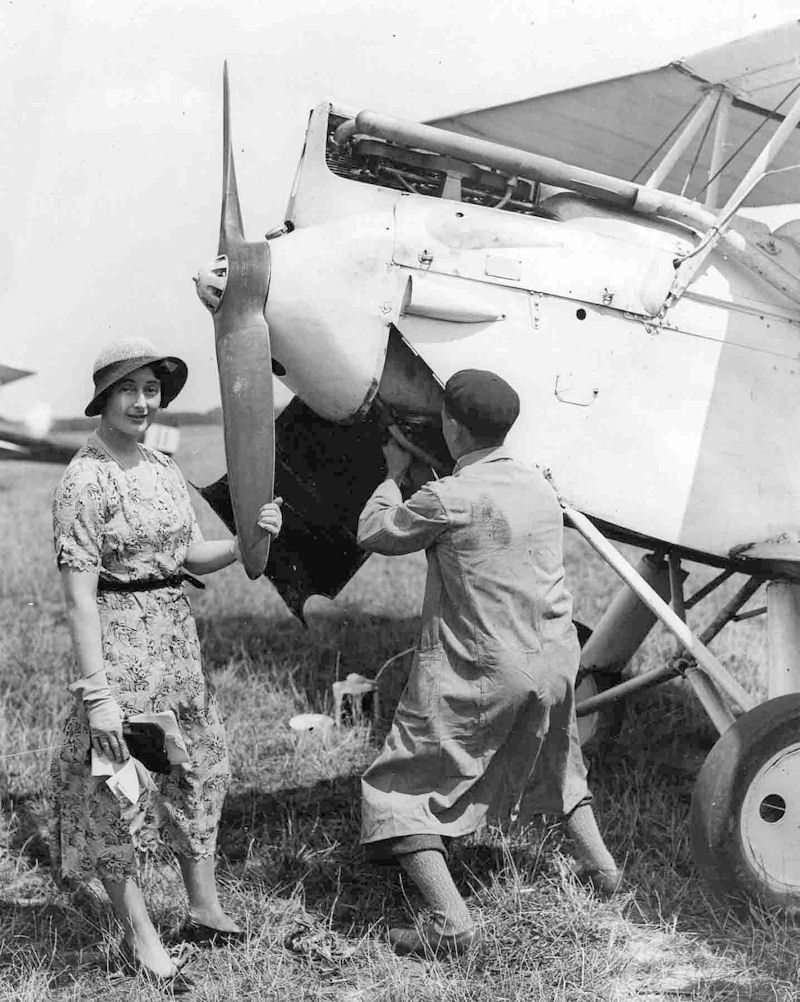
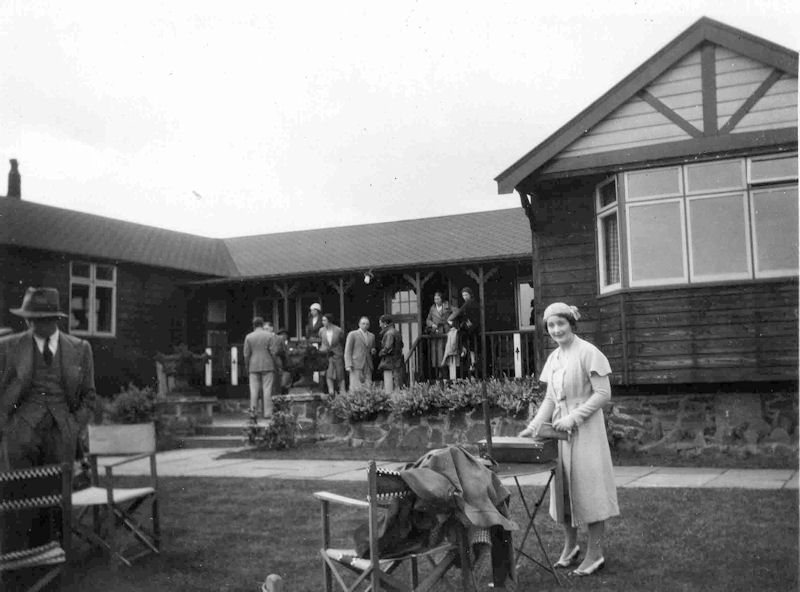
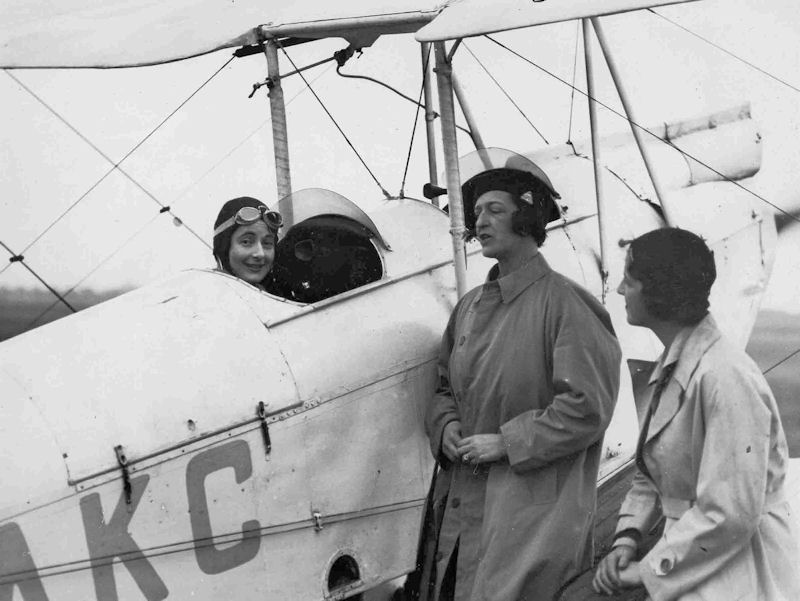
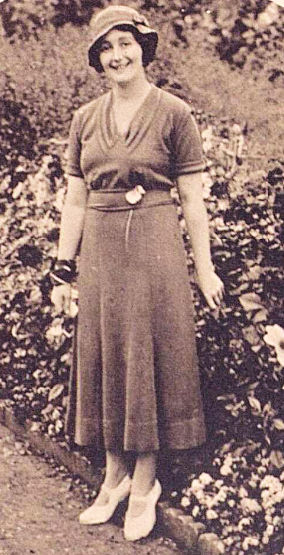 At Combermere Abbey in 1932
At Combermere Abbey in 1932

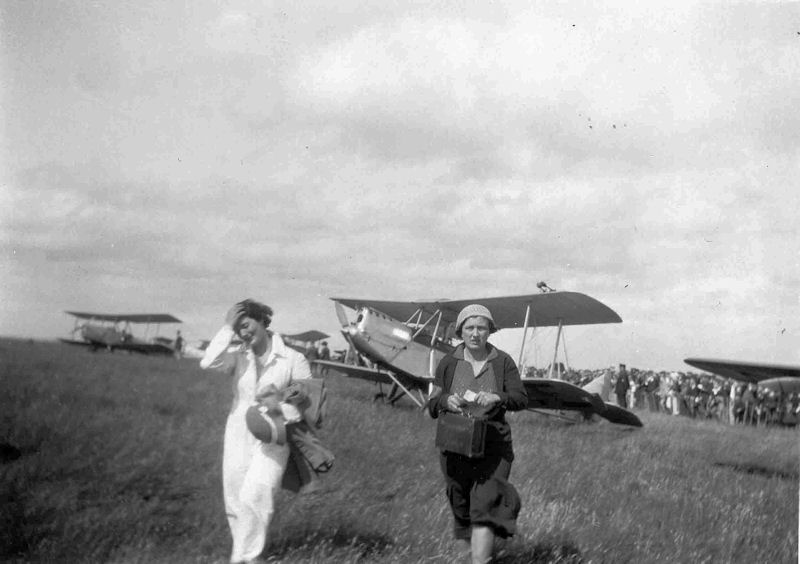

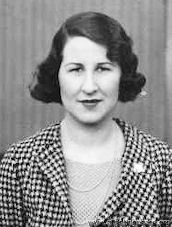 in 1934, aged 28
in 1934, aged 28
 1927
1927 in 1933
in 1933
 in 1917, when a 2nd Lieut., RFC, aged 27
in 1917, when a 2nd Lieut., RFC, aged 27
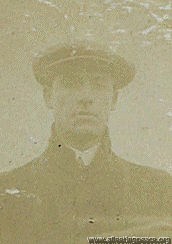 1911, aged 29
1911, aged 29 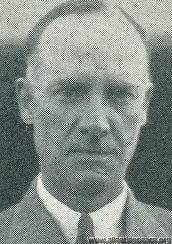 1936, aged 54
1936, aged 54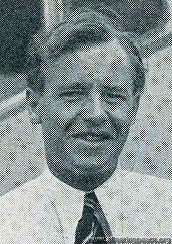 1936
1936 1931, aged 18
1931, aged 18

 1932
1932
 an Air Mechanic in 1913
an Air Mechanic in 1913 1934
1934

 Flight, 1931
Flight, 1931
 c. 1955
c. 1955
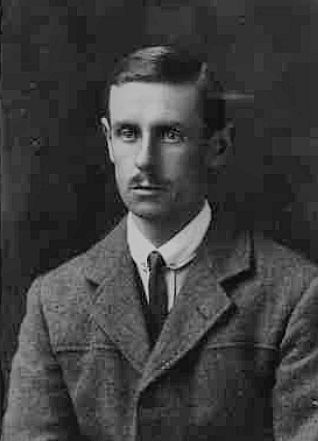 RAeC Certificate (No 711), 1913
RAeC Certificate (No 711), 1913 1940
1940

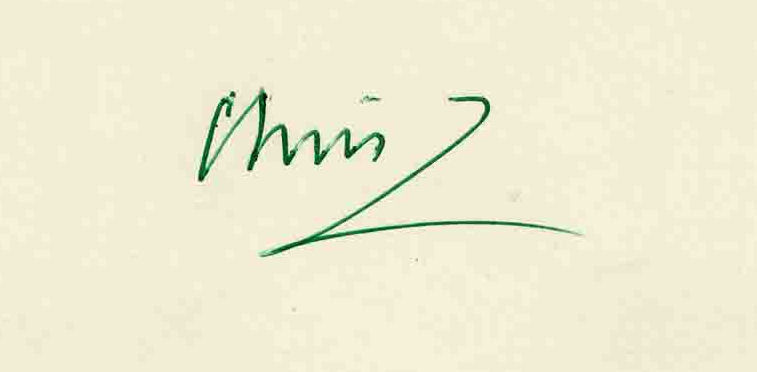


 1930
1930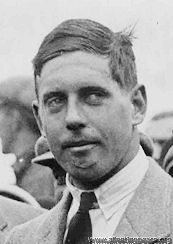 1931, aged 26
1931, aged 26
 1929, aged 23
1929, aged 23
 in 1925
in 1925
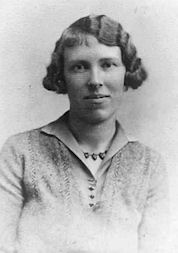

 1930; an RAF Officer at Tangmere
1930; an RAF Officer at Tangmere RAeC 1937
RAeC 1937 FAI 1939
FAI 1939 1932, aged 17
1932, aged 17


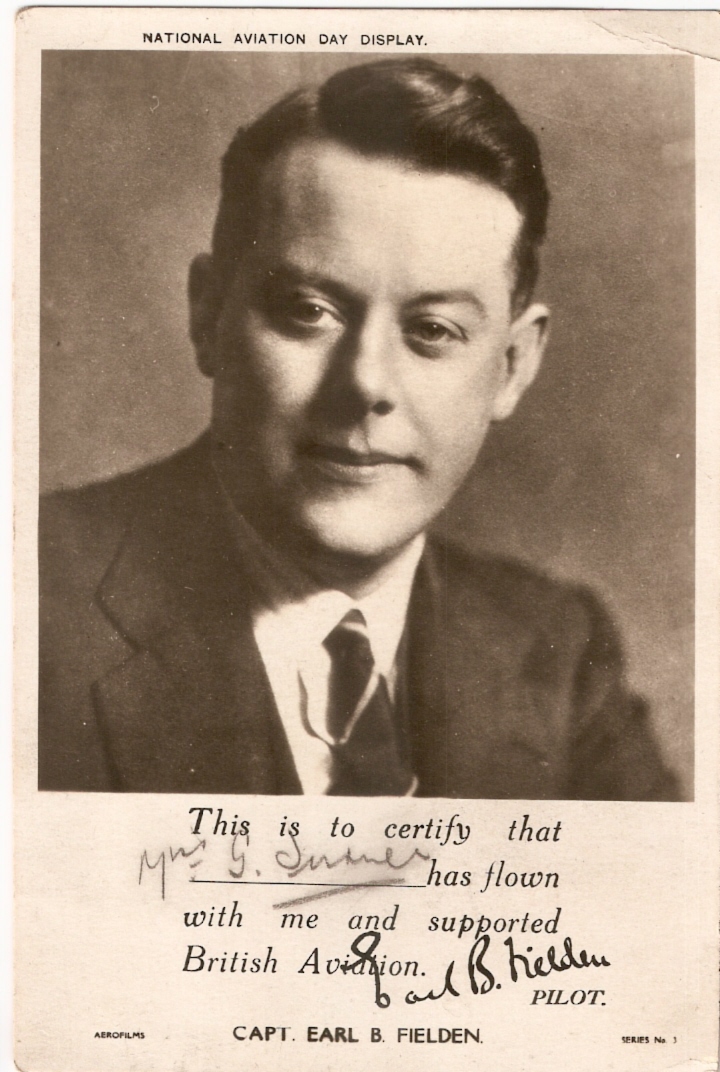 via Phillip Jones
via Phillip Jones
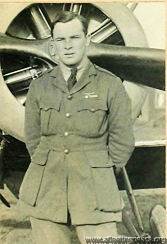
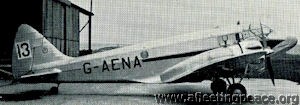
 1928
1928 1934, aged 21
1934, aged 21


 1933, aged 22
1933, aged 22

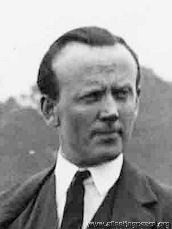 1930
1930

 1931, aged 25
1931, aged 25 1916, aged 21, when a Lieut in the 16th Durham Light Infantry
1916, aged 21, when a Lieut in the 16th Durham Light Infantry 1929, aged 47
1929, aged 47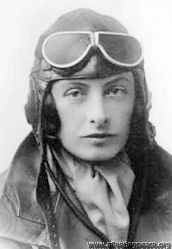 Lady G-AAGA
Lady G-AAGA
 1918, when a 2nd Liet, aged 19
1918, when a 2nd Liet, aged 19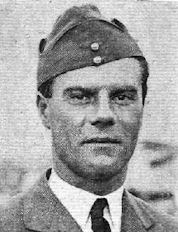
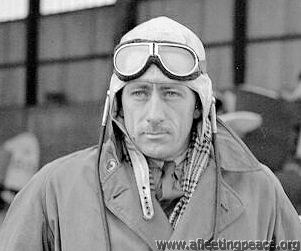
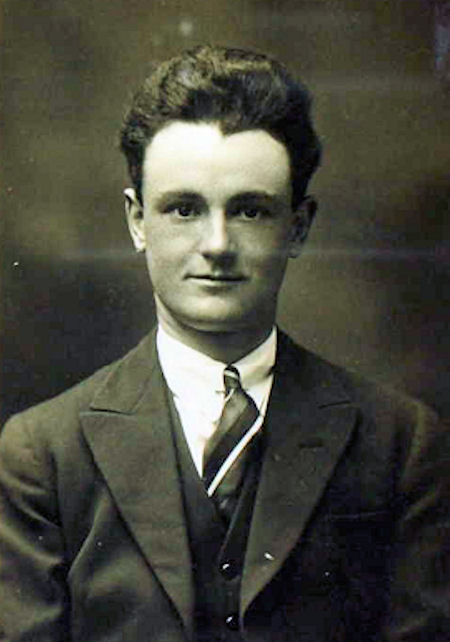 1928
1928
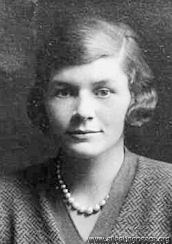 1930
1930
 1932
1932
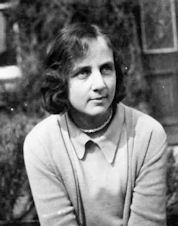
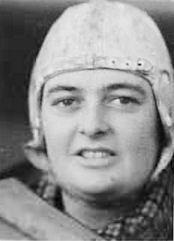
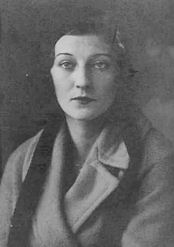



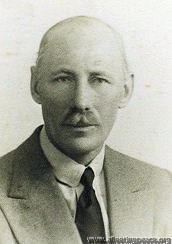 1929, aged 54
1929, aged 54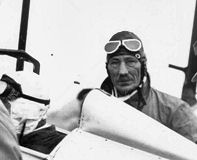
 1935, aged 19
1935, aged 19 1936
1936 1916, when a captain in the Royal Gloucester Regt, aged 22
1916, when a captain in the Royal Gloucester Regt, aged 22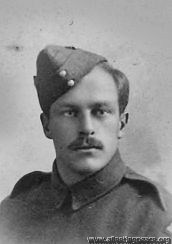 1915, when a Corporal, aged 23
1915, when a Corporal, aged 23 1936, aged 44
1936, aged 44 1920
1920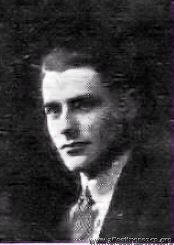
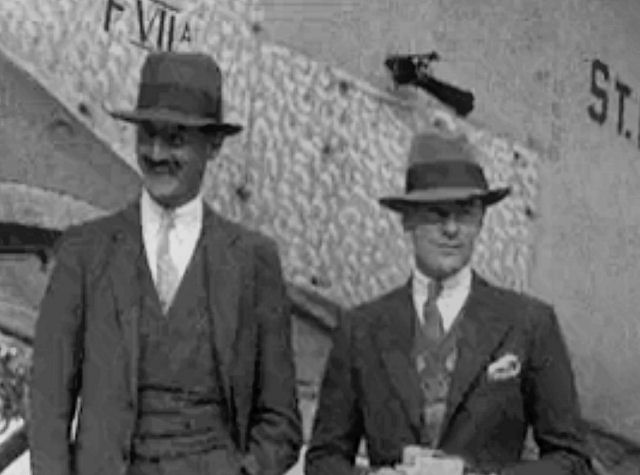


 1937
1937
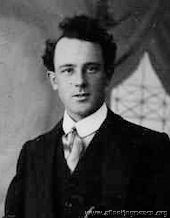
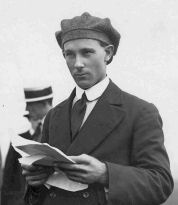

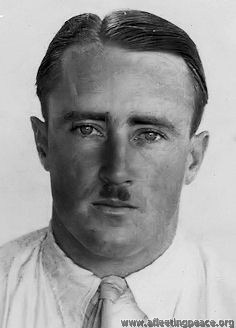
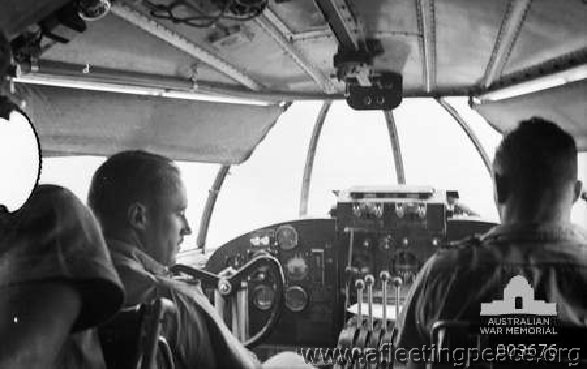


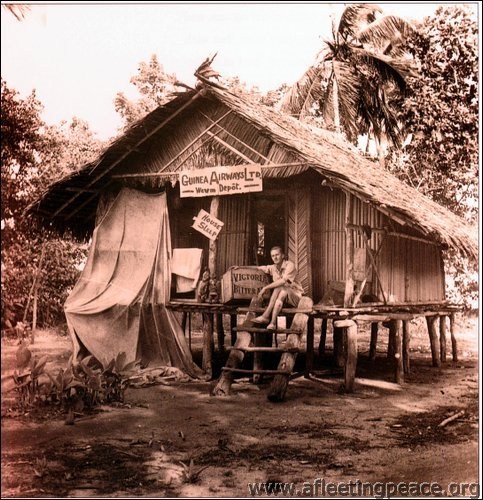
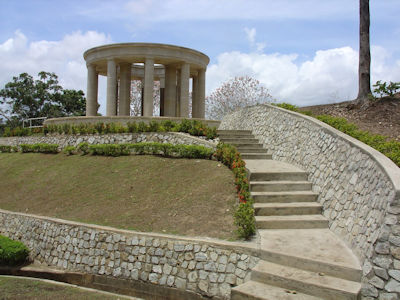 CWGC
CWGC 1920, aged 32
1920, aged 32 1928
1928 1932, aged 20
1932, aged 20 1920
1920 1927
1927 1934
1934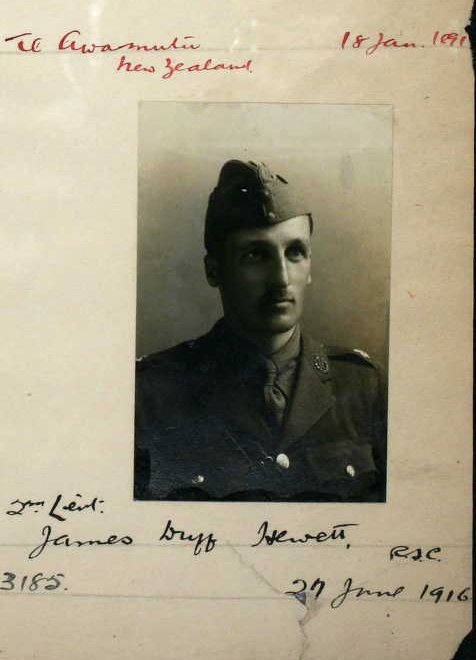 1916
1916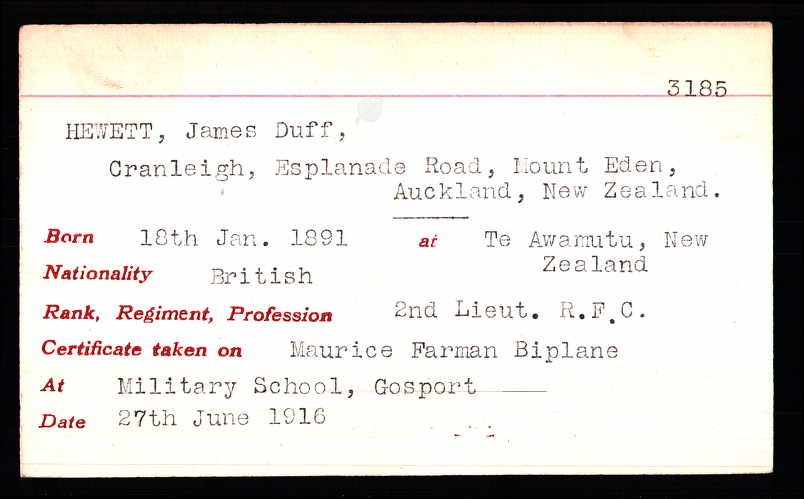
 in 1911, aged 47
in 1911, aged 47 1928
1928
 1937, aged 42
1937, aged 42 1916
1916 in 1927
in 1927 Then in August 1927 he was asked by wealthy American businessman Charles A Levine to try an east-west trans-Atlantic flight in the Bellanca monoplane NX237 'Miss Columbia'.
Then in August 1927 he was asked by wealthy American businessman Charles A Levine to try an east-west trans-Atlantic flight in the Bellanca monoplane NX237 'Miss Columbia'.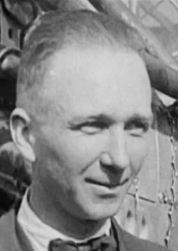 Clarence Chamberlin had set the world long-distance record flying from New York to (near) Berlin in this aeroplane, with Levine as passenger; indeed, they had missed being the very first 'long' trans-Atlantic flight by only a few days.
Clarence Chamberlin had set the world long-distance record flying from New York to (near) Berlin in this aeroplane, with Levine as passenger; indeed, they had missed being the very first 'long' trans-Atlantic flight by only a few days.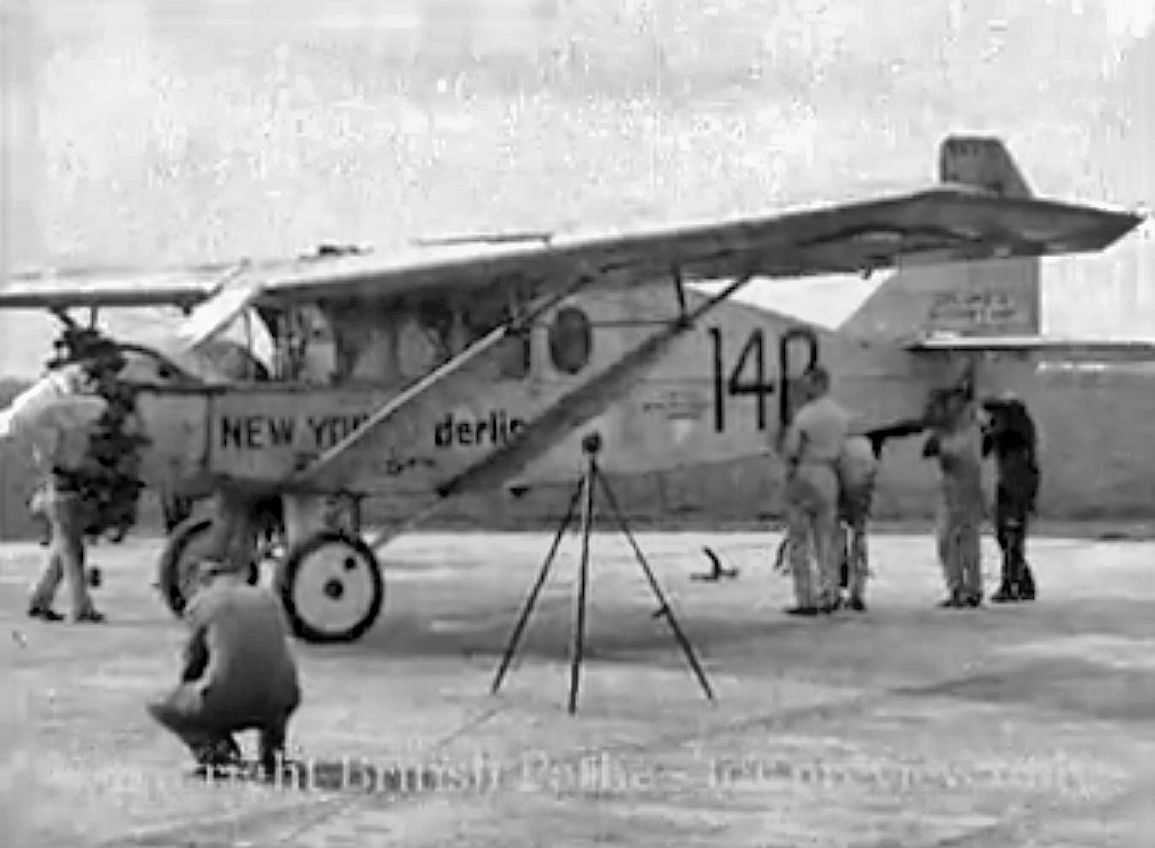
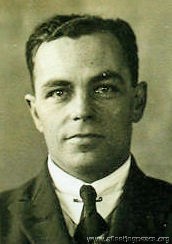
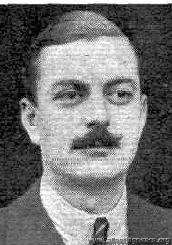 1937
1937 1930
1930
 1917, when a 2nd Lieut in the RFC, aged 20
1917, when a 2nd Lieut in the RFC, aged 20 1928, aged 31
1928, aged 31
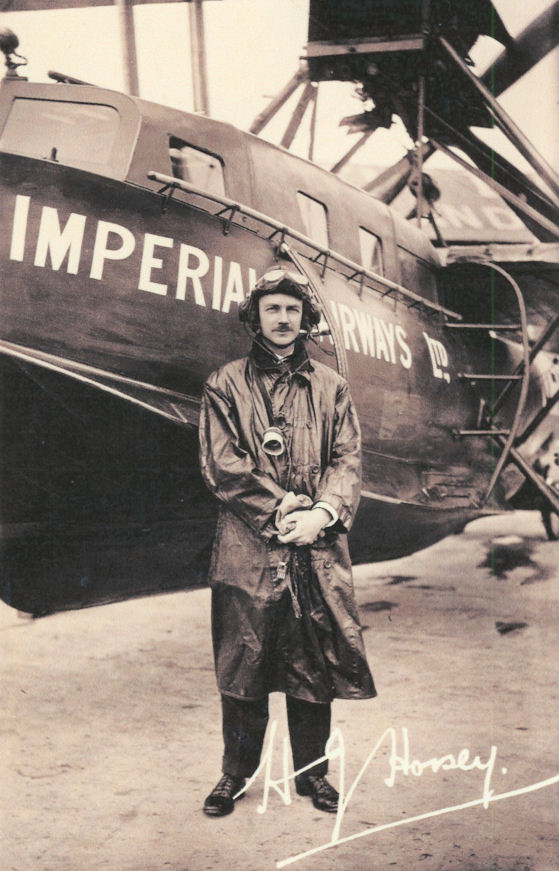

 1920, aged 38
1920, aged 38
 1933, aged 24
1933, aged 24

 1932, aged 23
1932, aged 23 1929, aged 27
1929, aged 27 1926, aged 38
1926, aged 38 1916, when a 2nd Lieut, Royal Irish Rifles, aged 18
1916, when a 2nd Lieut, Royal Irish Rifles, aged 18 1931
1931 1927, aged 23
1927, aged 23 1912, aged 18
1912, aged 18 1920
1920
 1930, aged 27
1930, aged 27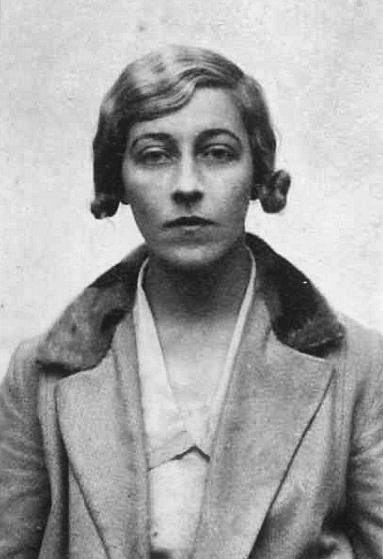 1929
1929
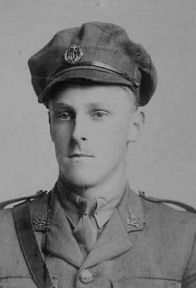 1915
1915 1931
1931
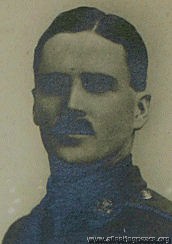 1916, when a Captain in the Welsh Regt, aged 26
1916, when a Captain in the Welsh Regt, aged 26 1924
1924 1926, aged 21
1926, aged 21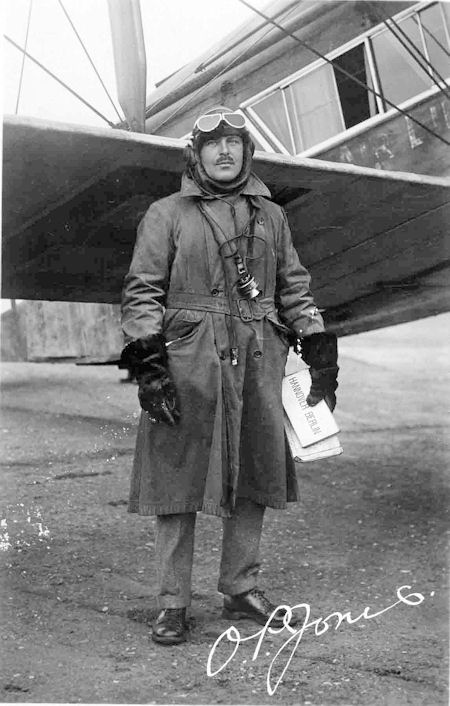
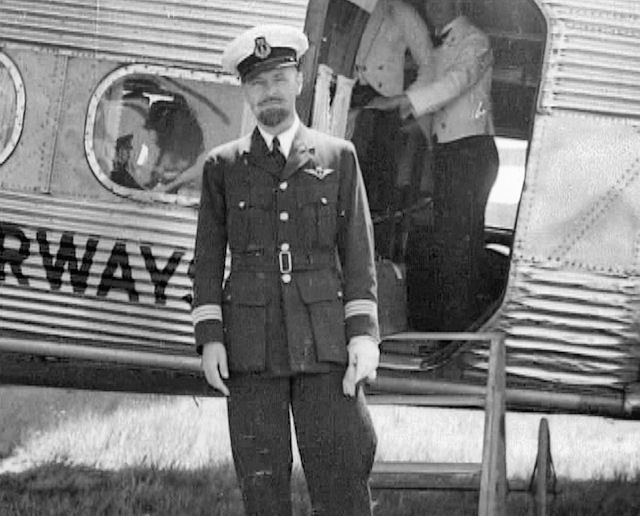
 1919
1919 1920, aged 24
1920, aged 24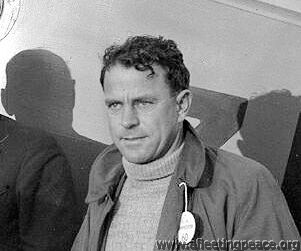
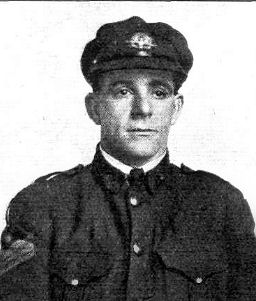

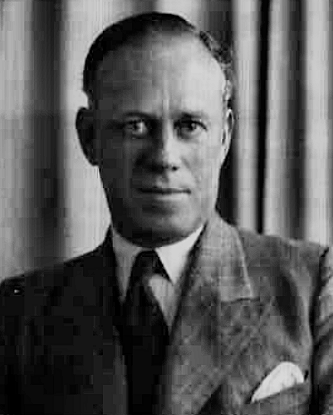 1938
1938 photo: 1928, aged 29
photo: 1928, aged 29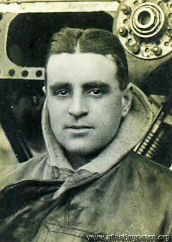 1918, when 2nd Lieut, RAF, aged 32
1918, when 2nd Lieut, RAF, aged 32 1933, aged 20
1933, aged 20
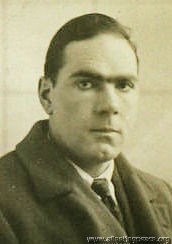

 1930
1930 Ruth C (l) and Ruth L (r) ('Flight')
Ruth C (l) and Ruth L (r) ('Flight') 1928, aged 29
1928, aged 29 in 1927, aged 24
in 1927, aged 24



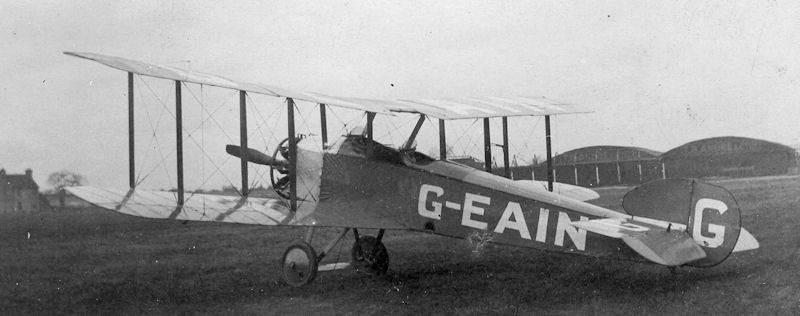 RAeC
RAeC
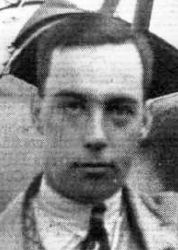

 "To the beloved and wonderful memory of Haliburton Hume Leech".
"To the beloved and wonderful memory of Haliburton Hume Leech".
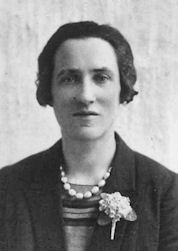


 1930, aged 34
1930, aged 34.jpg) 1932, aged 28
1932, aged 28 1936, aged 32
1936, aged 32

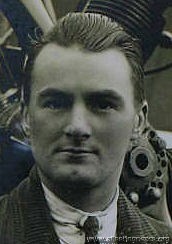 1916, aged 24
1916, aged 24
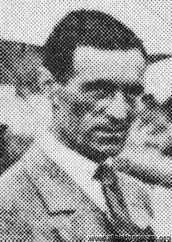

 1932, aged 21
1932, aged 21 Flight
Flight
 AJJ
AJJ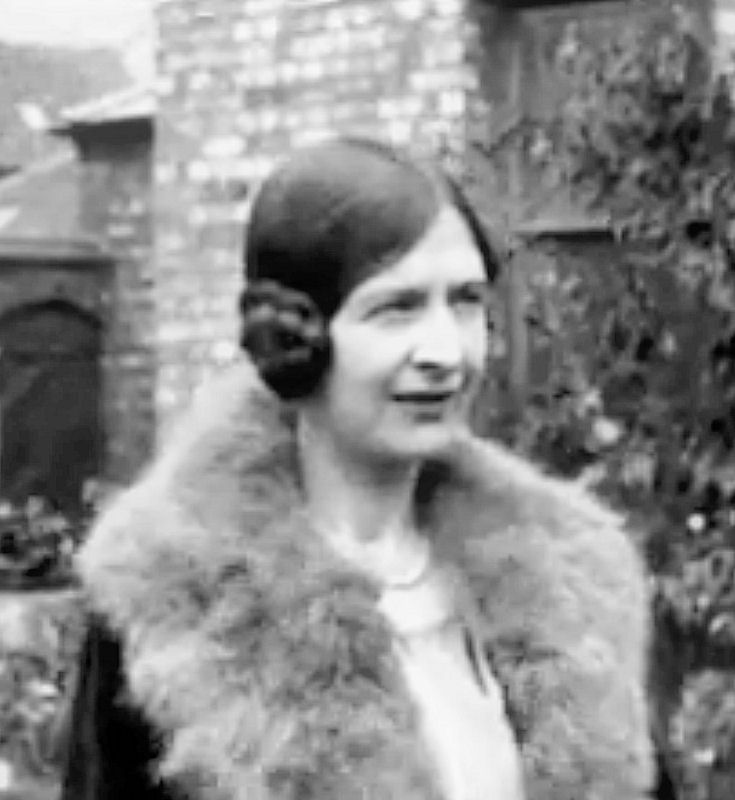
 1922
1922 1922
1922 1917, when a Captain in the RFC, aged 25
1917, when a Captain in the RFC, aged 25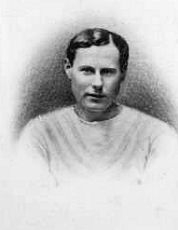
 1916, when a Lieut, 15th Hussars, aged 27
1916, when a Lieut, 15th Hussars, aged 27 1912, aged 19
1912, aged 19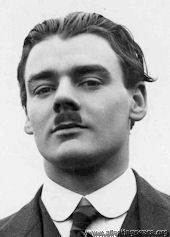


 1917
1917
 1930, aged 24
1930, aged 24

 1929, aged 38
1929, aged 38
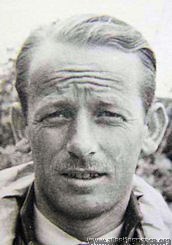
 b. 9th Jan 1910 in Sydney
b. 9th Jan 1910 in Sydney


 1918, when a 2nd Lieut in the RAF, aged 20
1918, when a 2nd Lieut in the RAF, aged 20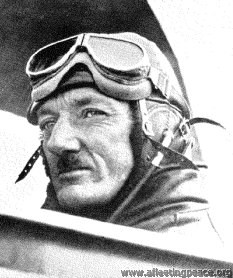




 1930, aged 24
1930, aged 24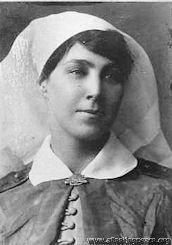


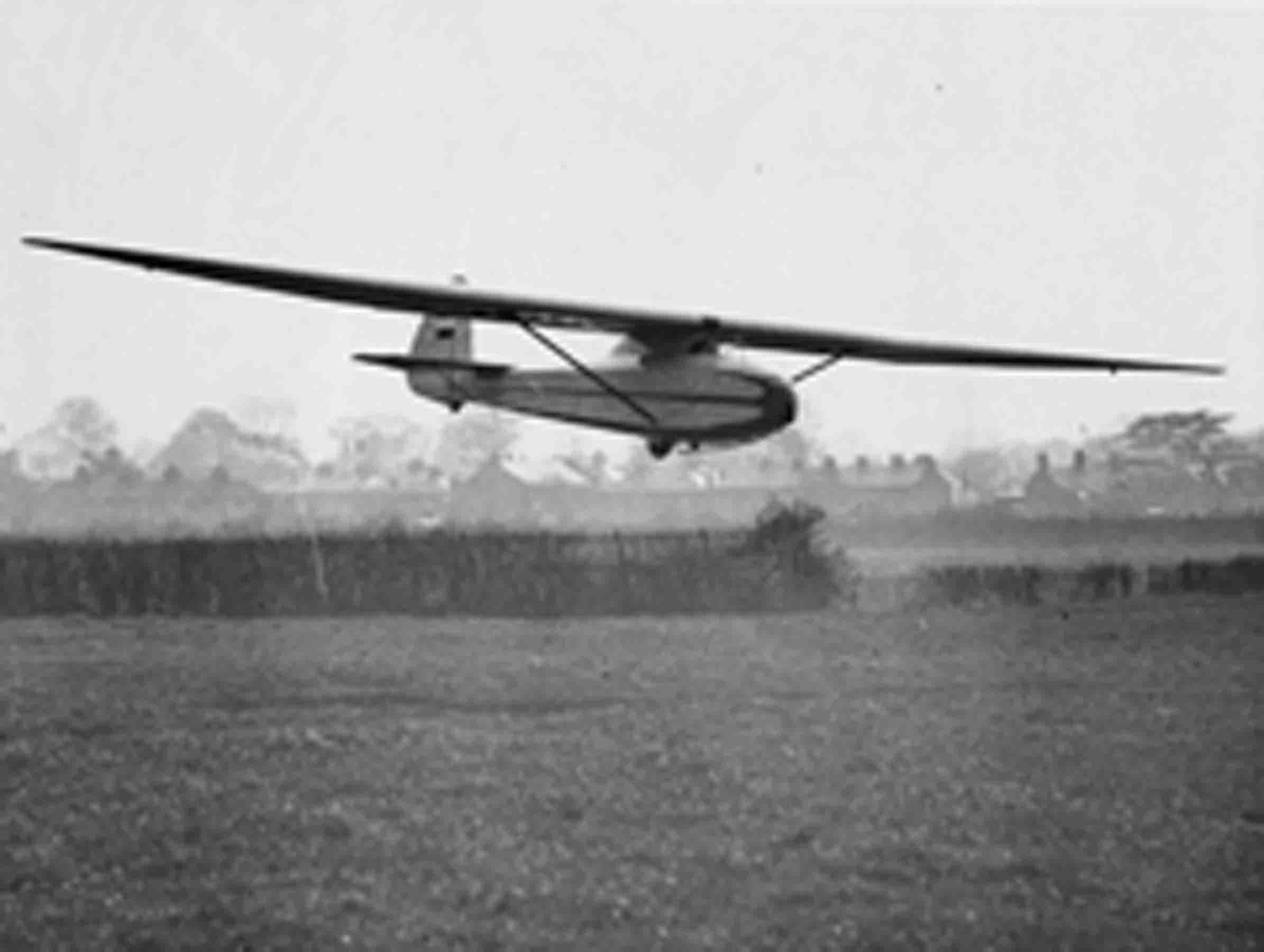
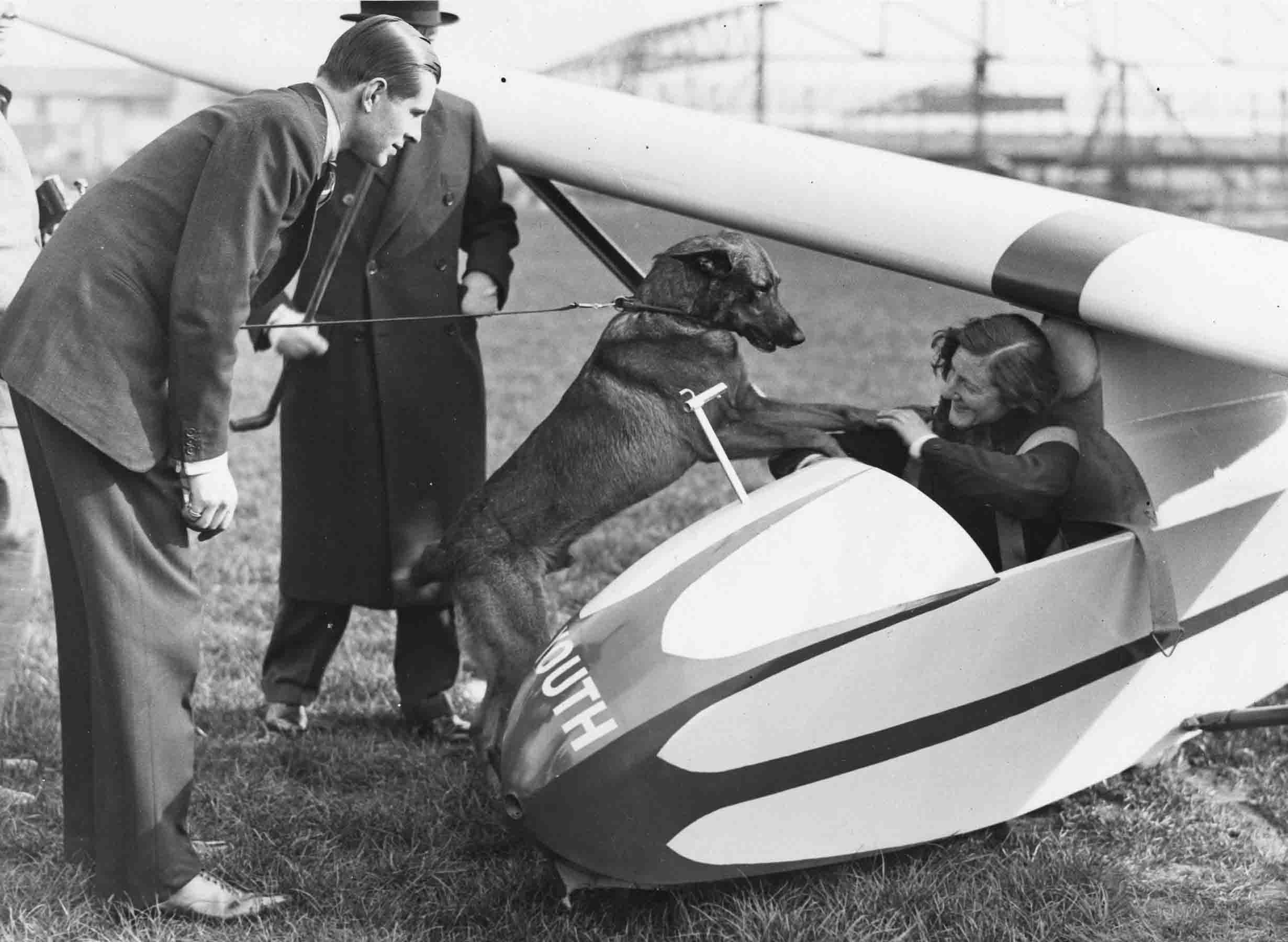
 1941 (NPG)
1941 (NPG)
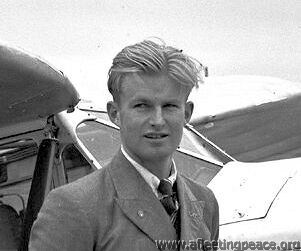

 1930, aged 27
1930, aged 27
.jpg)


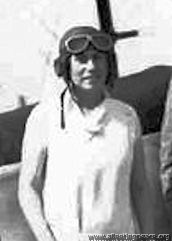 (not looking particularly chubby, imho) in 1927
(not looking particularly chubby, imho) in 1927 1936, aged 36
1936, aged 36
 1913
1913 1927
1927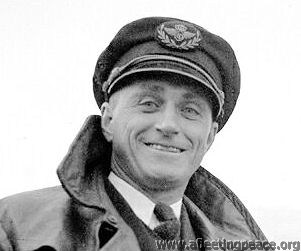
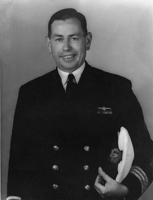
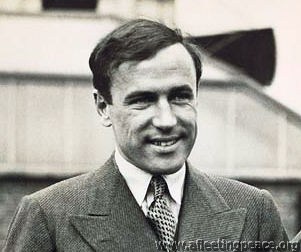
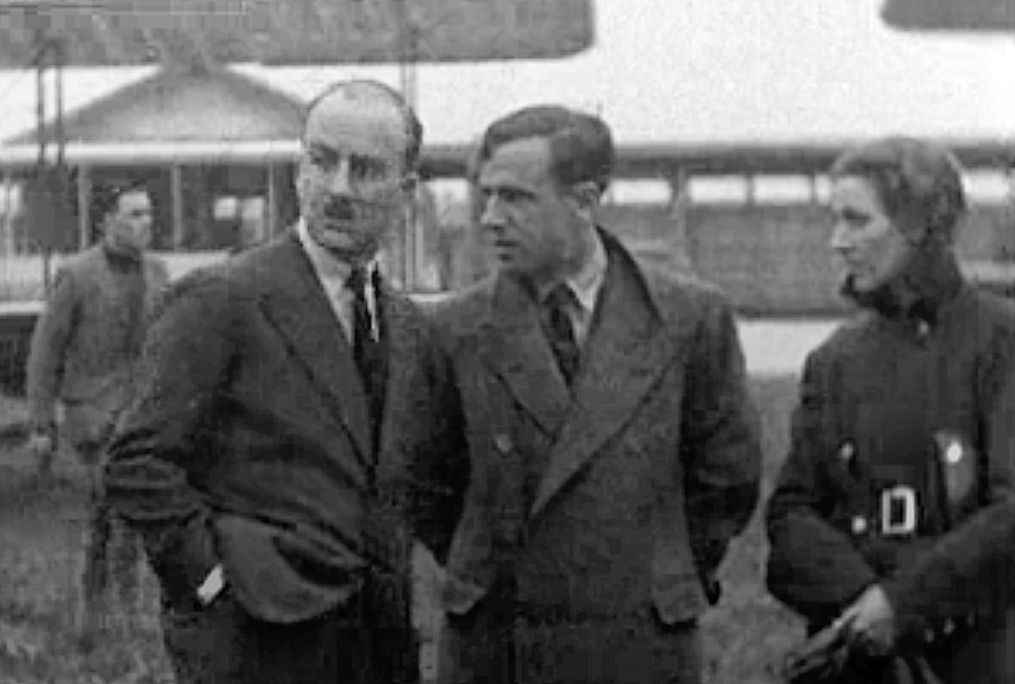
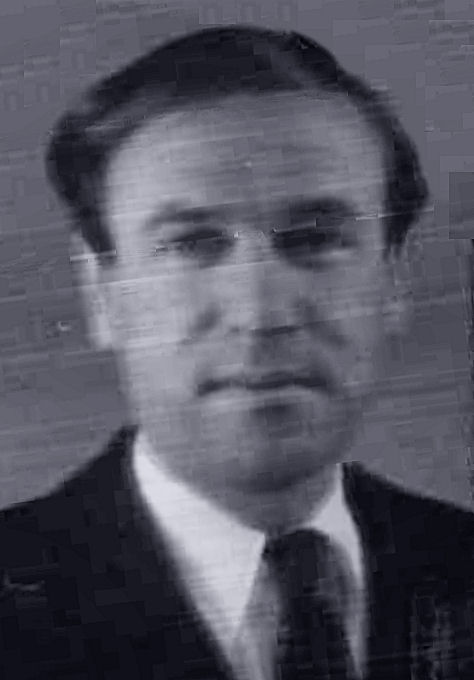 RAeC 1939
RAeC 1939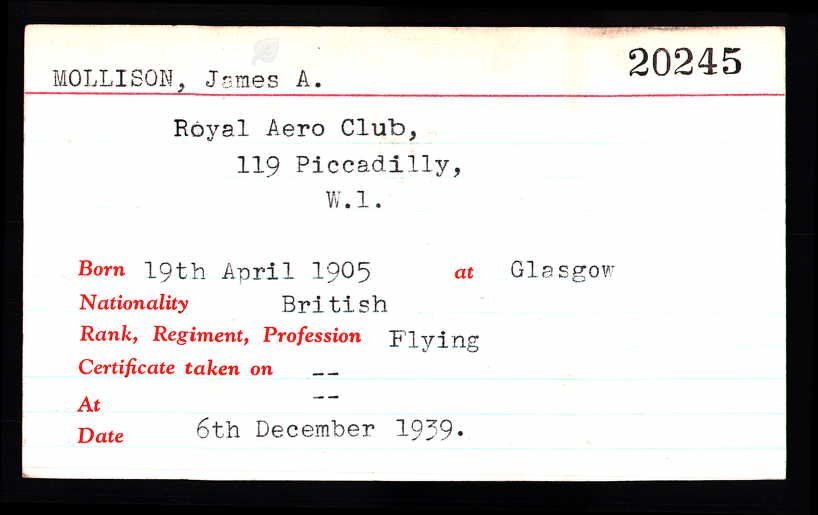

 1936
1936 1930
1930
 1930
1930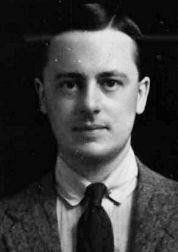
 1937, aged 30
1937, aged 30 1928
1928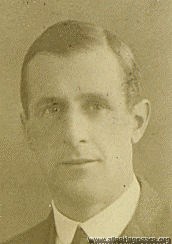 1928, aged 38
1928, aged 38
 1920, aged 33
1920, aged 33
 1926
1926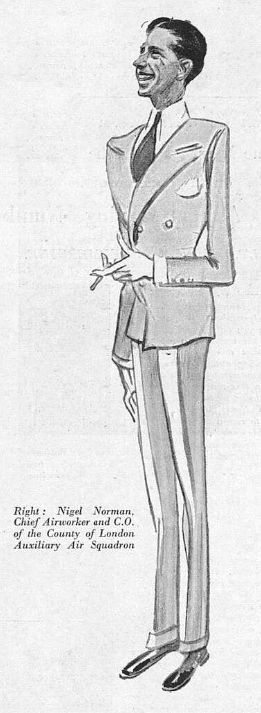 The Bystander Special Aviation Edition, 1933
The Bystander Special Aviation Edition, 1933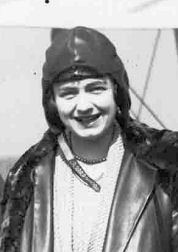
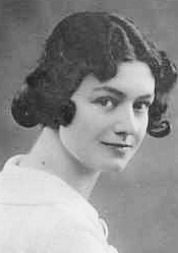
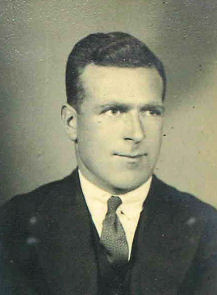
 1926, aged 39
1926, aged 39
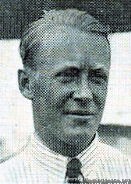 1930
1930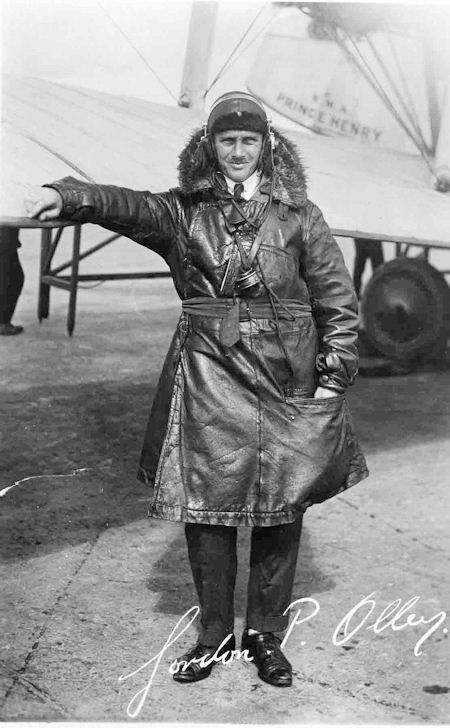

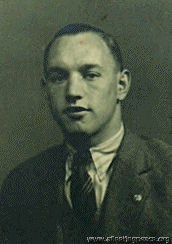
 1917, aged 19, when a 2nd Lieut on the General List
1917, aged 19, when a 2nd Lieut on the General List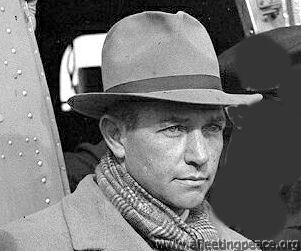

 1929, aged 27
1929, aged 27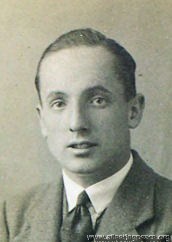 1932, aged 21
1932, aged 21
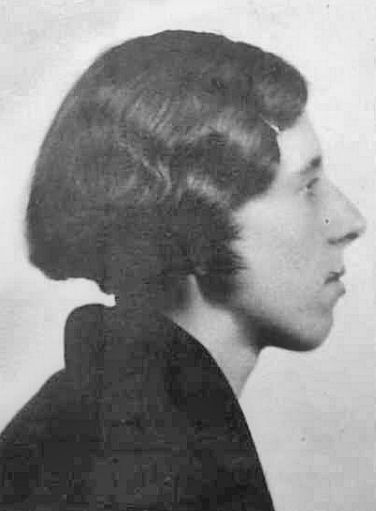 RAeC 1933
RAeC 1933 1938
1938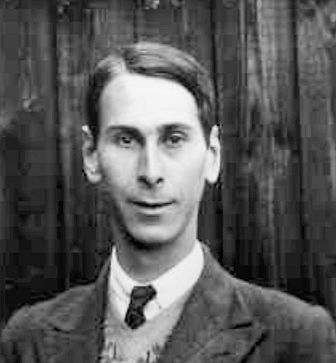 1934
1934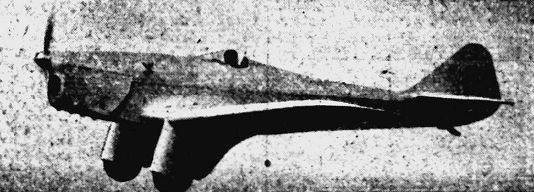 G-ADNL in 1938
G-ADNL in 1938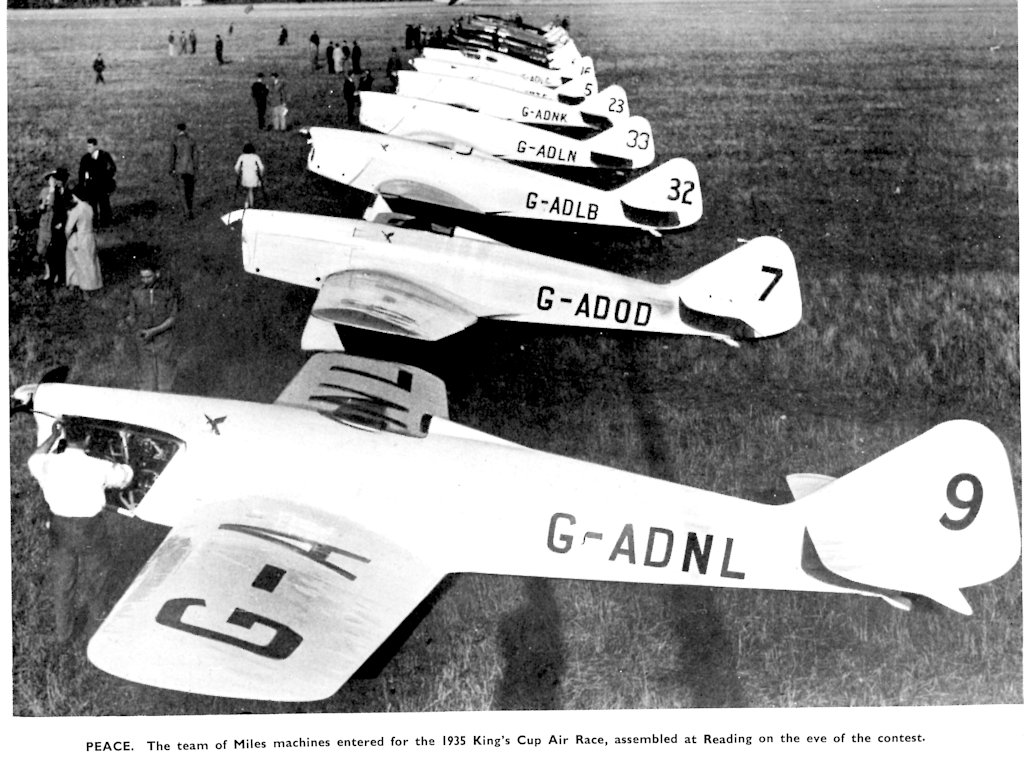 G-ADNL in 1935
G-ADNL in 1935

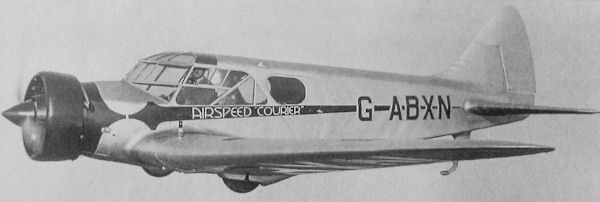

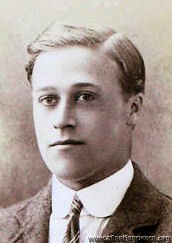 1911, aged 20
1911, aged 20.jpg) 1935
1935
 1934, aged 29
1934, aged 29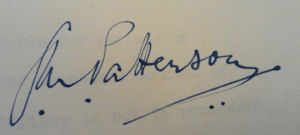

 1916, when a Lieutenant in the Royal Engineers, aged 29
1916, when a Lieutenant in the Royal Engineers, aged 29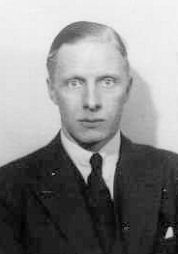

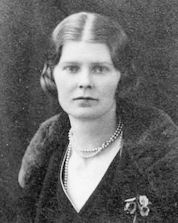
 1930, aged 32
1930, aged 32 King's Cup 1934; sans trilby, for once
King's Cup 1934; sans trilby, for once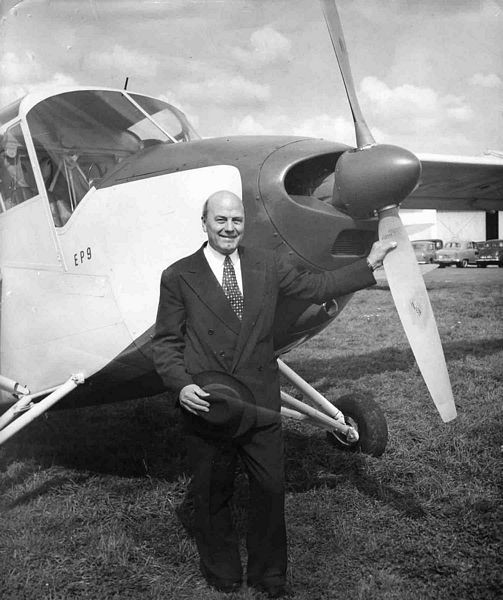 In 1956, with the EP.9 'Prospector'. And trilby.
In 1956, with the EP.9 'Prospector'. And trilby.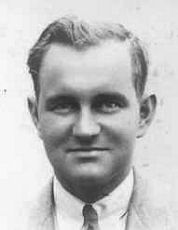
.jpg)
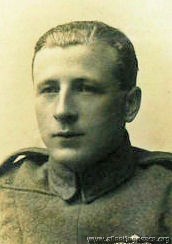 1915, when a Sergeant in the RFC, aged 23
1915, when a Sergeant in the RFC, aged 23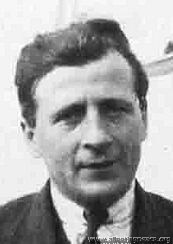 1922, aged 30
1922, aged 30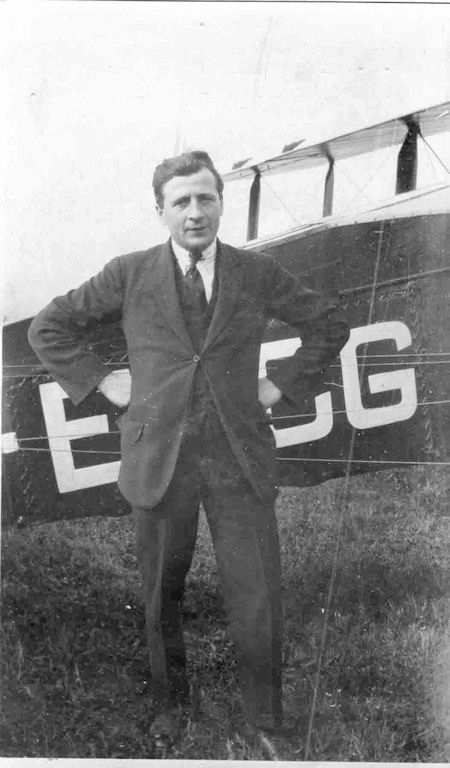 1922
1922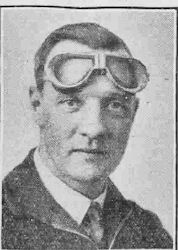

 1928, aged 32
1928, aged 32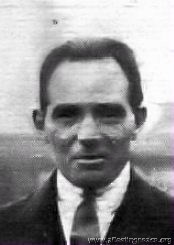
![G-EBJJ Beardmore Wee Bee [0122-0182]](/images/gallery/aeroplanes/G-EB/preview/333s333/G-EBJJ%20Beardmore%20Wee%20Bee%20%5B0122-0182%5D.jpg) © The Royal Aero Club
© The Royal Aero Club


![Lankester Parker and Harold Piper [0122-0101]](/images/gallery/aviators/preview/333s333/Lankester%20Parker%20and%20Harold%20Piper%20%5B0122-0101%5D.jpg) (r), with Lankester Parker. © The Royal Aero Club
(r), with Lankester Parker. © The Royal Aero Club
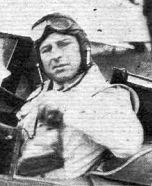
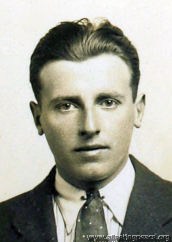 1921, aged 22
1921, aged 22
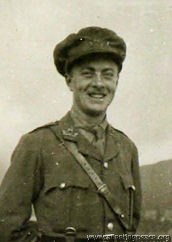 1916, when a 2nd Lieut in the 2/5th Royal Warwickshire Regiment, aged 25
1916, when a 2nd Lieut in the 2/5th Royal Warwickshire Regiment, aged 25


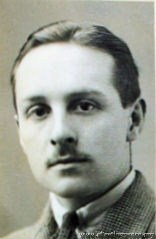 1933, when 2nd Lieut in the Grenadier Guards, aged 20.
1933, when 2nd Lieut in the Grenadier Guards, aged 20..jpg) in 1936
in 1936 1920, aged 27
1920, aged 27![Fred Raynham [0011-0050]](/images/gallery/aviators/preview/333s333/Fred%20Raynham%20%5B0011-0050%5D.jpg)
![Fred Raynham [0357-0137]](/images/gallery/aviators/preview/333s333/Fred%20Raynham%20%5B0357-0137%5D.jpg)
![Fred Raynham [0738-0152]](/images/gallery/aviators/preview/333s333/Fred%20Raynham%20%5B0738-0152%5D.jpg)
![Fred Raynham [0906-0042]](/images/gallery/aviators/preview/333s333/Fred%20Raynham%20%5B0906-0042%5D.jpg)
![Fred Raynham [0908-0175]](/images/gallery/aviators/preview/333s333/Fred%20Raynham%20%5B0908-0175%5D.jpg)
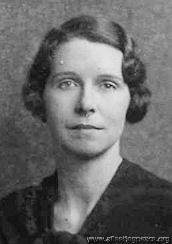 1934
1934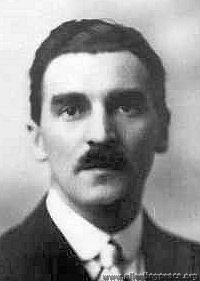
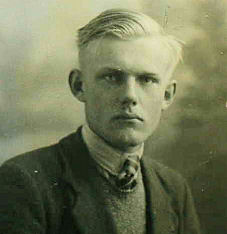
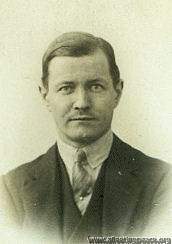
![Air Bathing Party Skegness PQ Reiss, L Everard etc [0312-0136]](/images/gallery/bread%20and%20circuses/preview/333s333/Air%20Bathing%20Party%20Skegness%20PQ%20Reiss%2C%20L%20Everard%20etc%20%5B0312-0136%5D.jpg) (r), Air Bathing Party, Skegness
(r), Air Bathing Party, Skegness


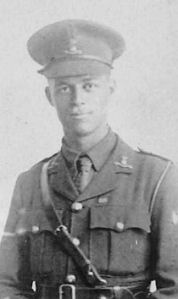 1916
1916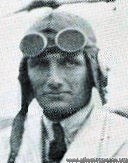
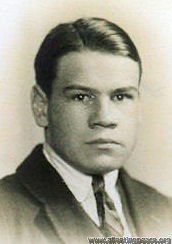
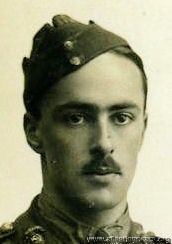
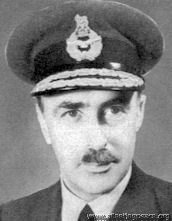

 1917
1917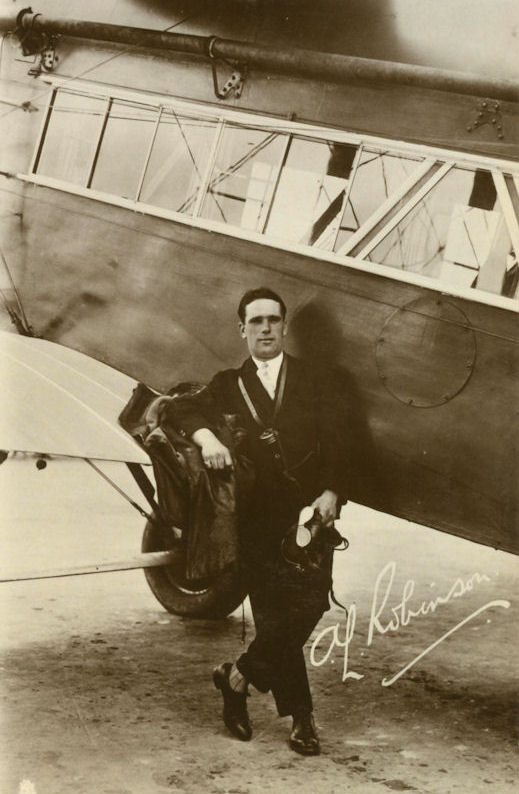
 1923
1923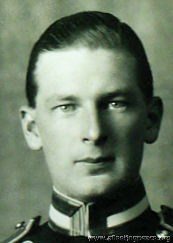 1930, aged 29
1930, aged 29 1917
1917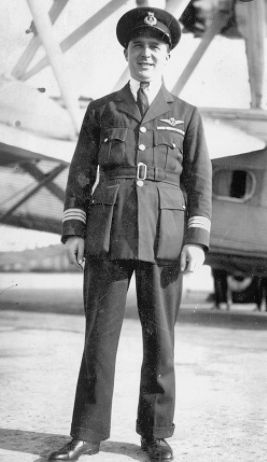
 1934
1934
 1936
1936![Kings Cup 1938 Tommy Rose [0122-0170]](/images/gallery/air%20races/preview/333s333/Kings%20Cup%201938%20Tommy%20Rose%20%5B0122-0170%5D.jpg)
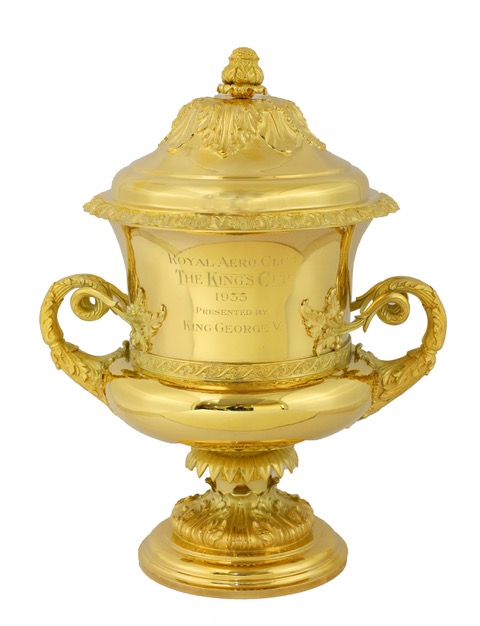



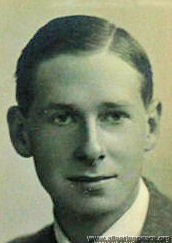
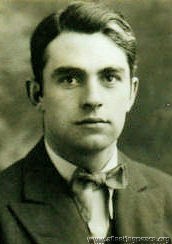
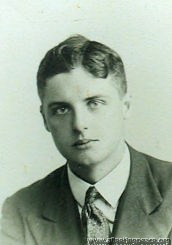 1930, aged 23
1930, aged 23
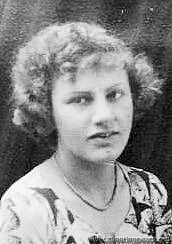 1935
1935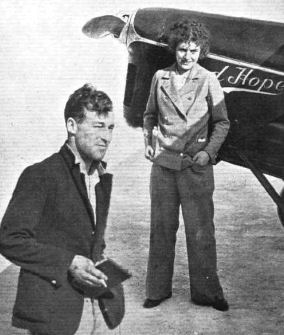
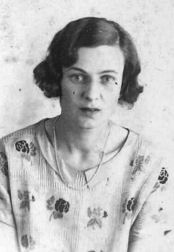
 1930, aged 18
1930, aged 18

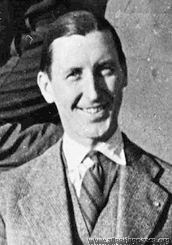
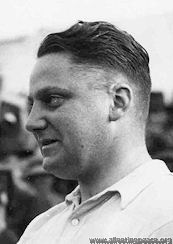
 1926
1926 Penrose
Penrose 1929, when an Army officer (11th Hussars), aged 25
1929, when an Army officer (11th Hussars), aged 25

 with his father Charles
with his father Charles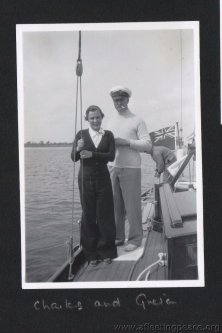

.jpg)

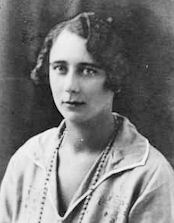 1929
1929 1930, aged 24
1930, aged 24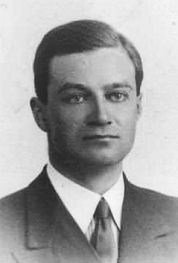
 © The Royal Aero Club [0378-0025]
© The Royal Aero Club [0378-0025]

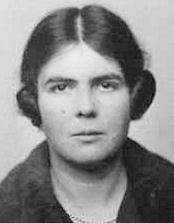 1930
1930
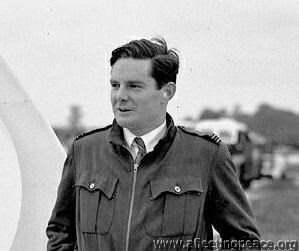 1934, before the MacRobertson Race
1934, before the MacRobertson Race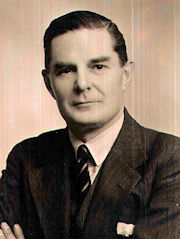 1947
1947
 Avro Avian
Avro Avian
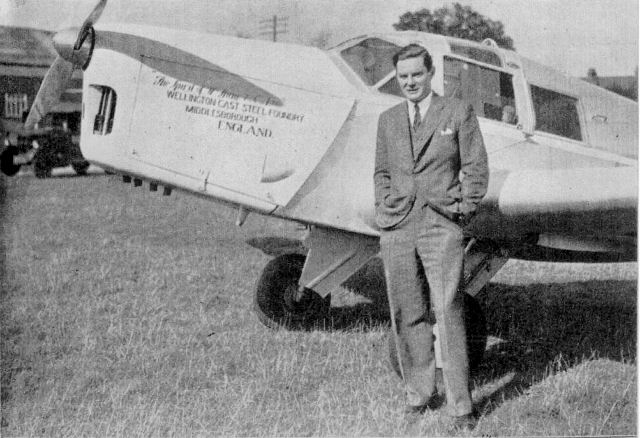 Geoffrey with the Eagle, via Louise Wilkinson
Geoffrey with the Eagle, via Louise Wilkinson
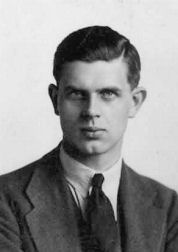 Geoffrey Hill Ambler (q.v.)
Geoffrey Hill Ambler (q.v.)
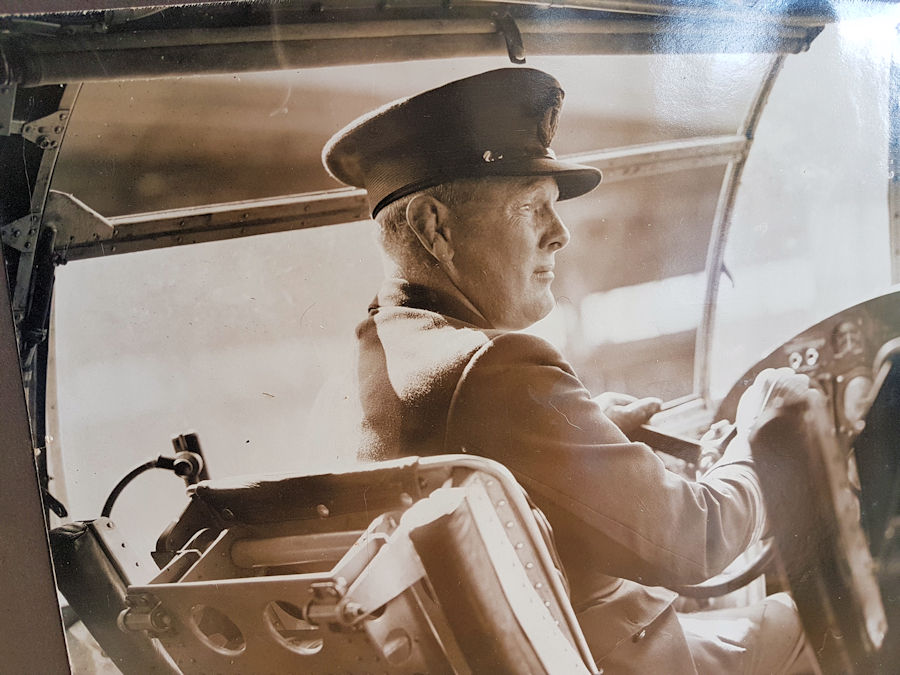 c. 1938
c. 1938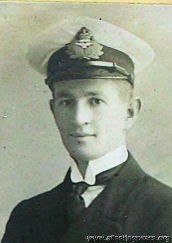 1916, when a Flight Sub-Lt in the Royal Navy, aged 24
1916, when a Flight Sub-Lt in the Royal Navy, aged 24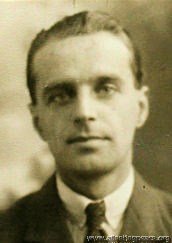
.jpg)
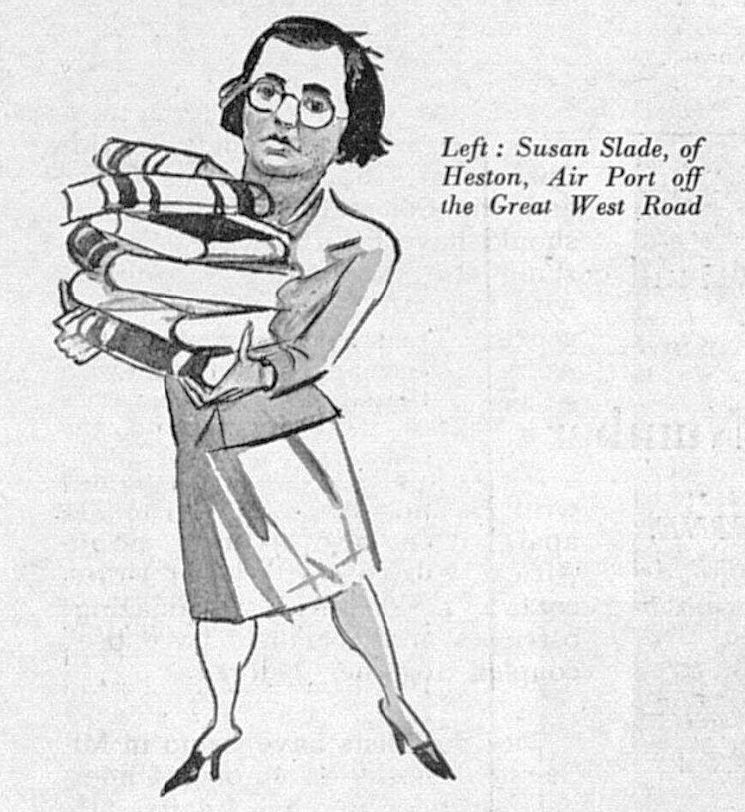
 The Sketch - October 1929
The Sketch - October 1929.jpg)
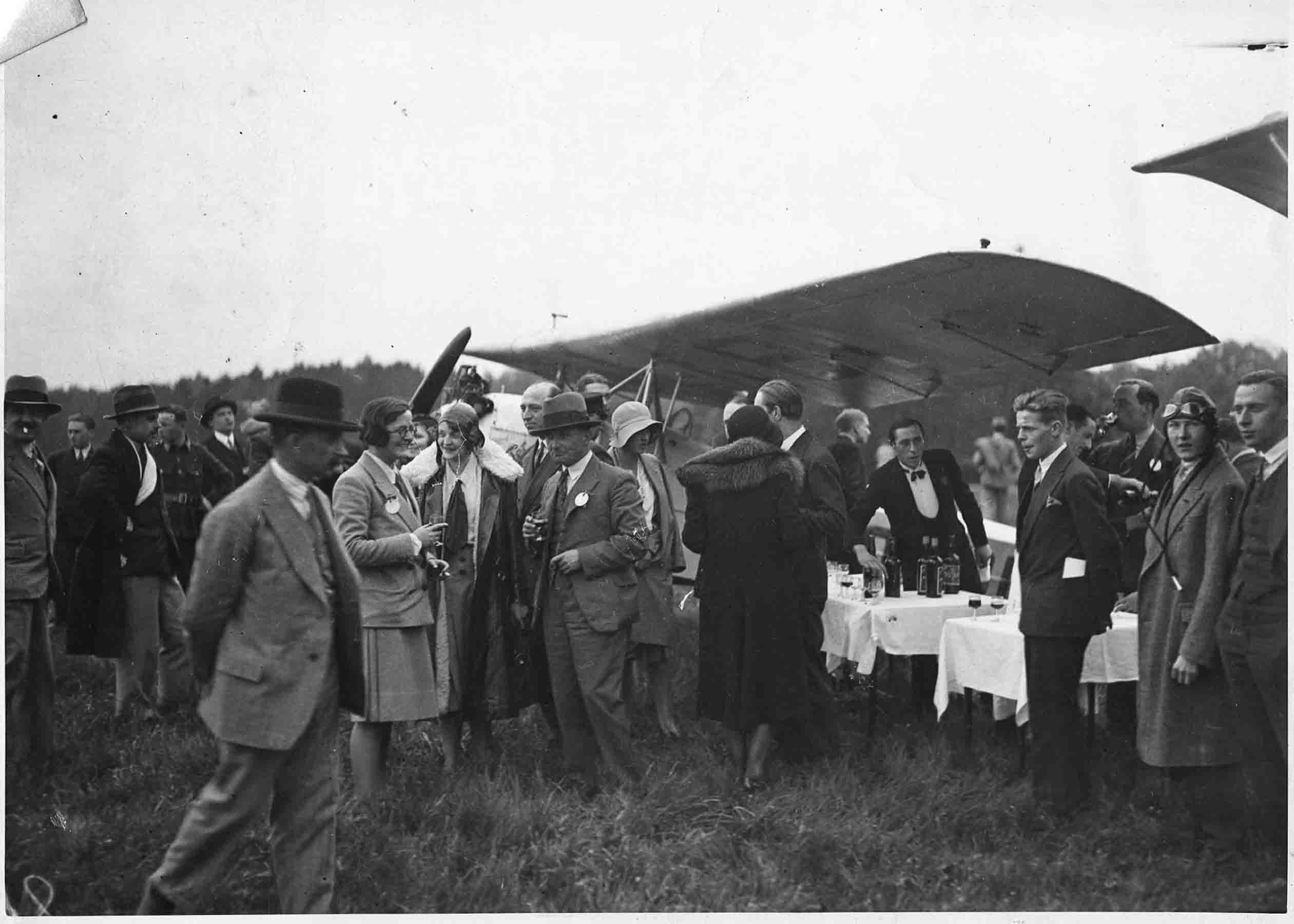

 1916, when a Sub-Lieut in the RNVR
1916, when a Sub-Lieut in the RNVR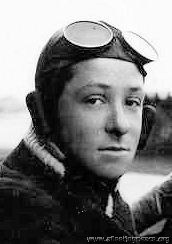
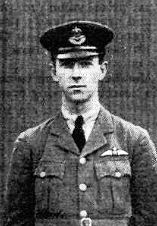
![Keith Smith [0738-0021]](/images/gallery/pioneering%20flights/preview/333s333/Keith%20Smith%20%5B0738-0021%5D.jpg)
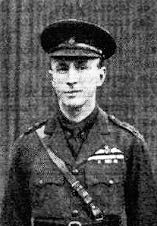
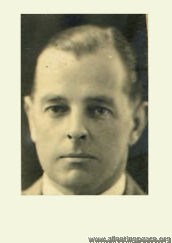 1928, aged 39
1928, aged 39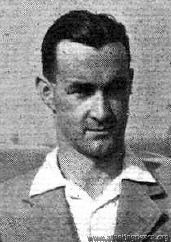 1936, aged 23
1936, aged 23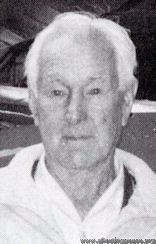 2000, aged 86
2000, aged 86
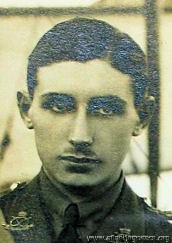 1916, when a Lieutenant in the 8th South Staffordshire Regiment, aged 21
1916, when a Lieutenant in the 8th South Staffordshire Regiment, aged 21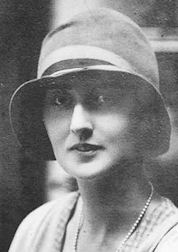


 1936
1936
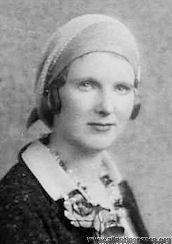 RAeC 9126
RAeC 9126



.jpg)

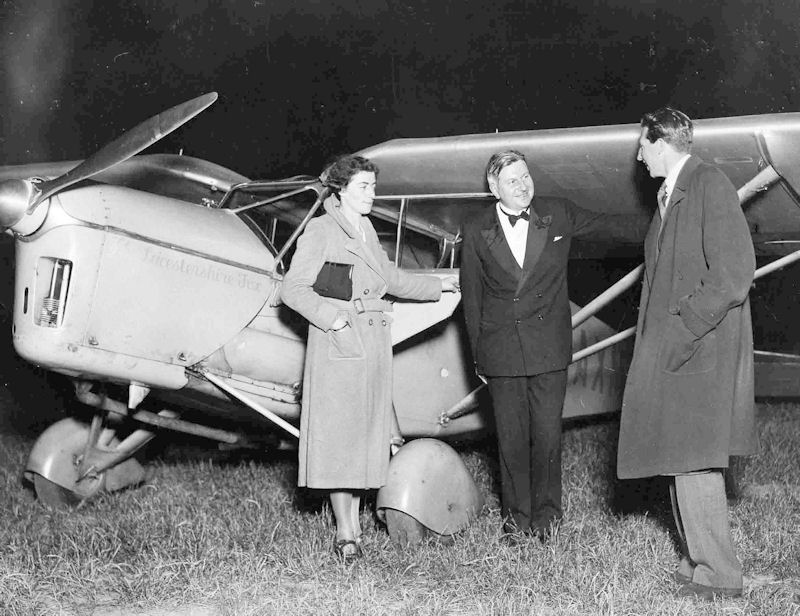


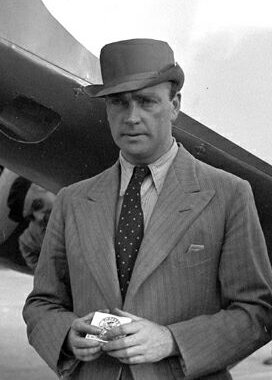 1934, aged 38
1934, aged 38
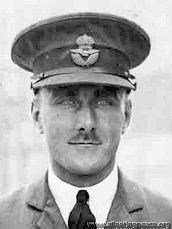 1929, aged 30
1929, aged 30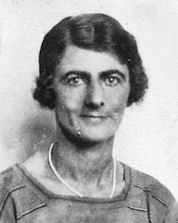
 1938
1938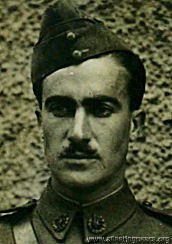 ' 1915, when a 2nd Lieutenant, RAC, aged 25
' 1915, when a 2nd Lieutenant, RAC, aged 25 September 1937, aged 47
September 1937, aged 47
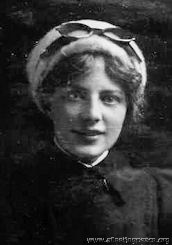 1911, aged 24
1911, aged 24
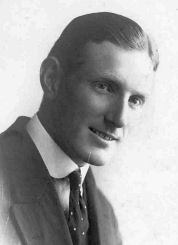 ) crashed at Hendon; they were both taken from the wreckage unconscious and sent off to the nearby Central London Sick Asylum. Sydney had a crushed foot, fractured thigh and abdominal wounds; Cheridah was in a 'semi-conscious state' for weeks, [I know the feeling], but eventually recovered. Her struggle to recover and walk again was "closely followed by the newspapers".
) crashed at Hendon; they were both taken from the wreckage unconscious and sent off to the nearby Central London Sick Asylum. Sydney had a crushed foot, fractured thigh and abdominal wounds; Cheridah was in a 'semi-conscious state' for weeks, [I know the feeling], but eventually recovered. Her struggle to recover and walk again was "closely followed by the newspapers".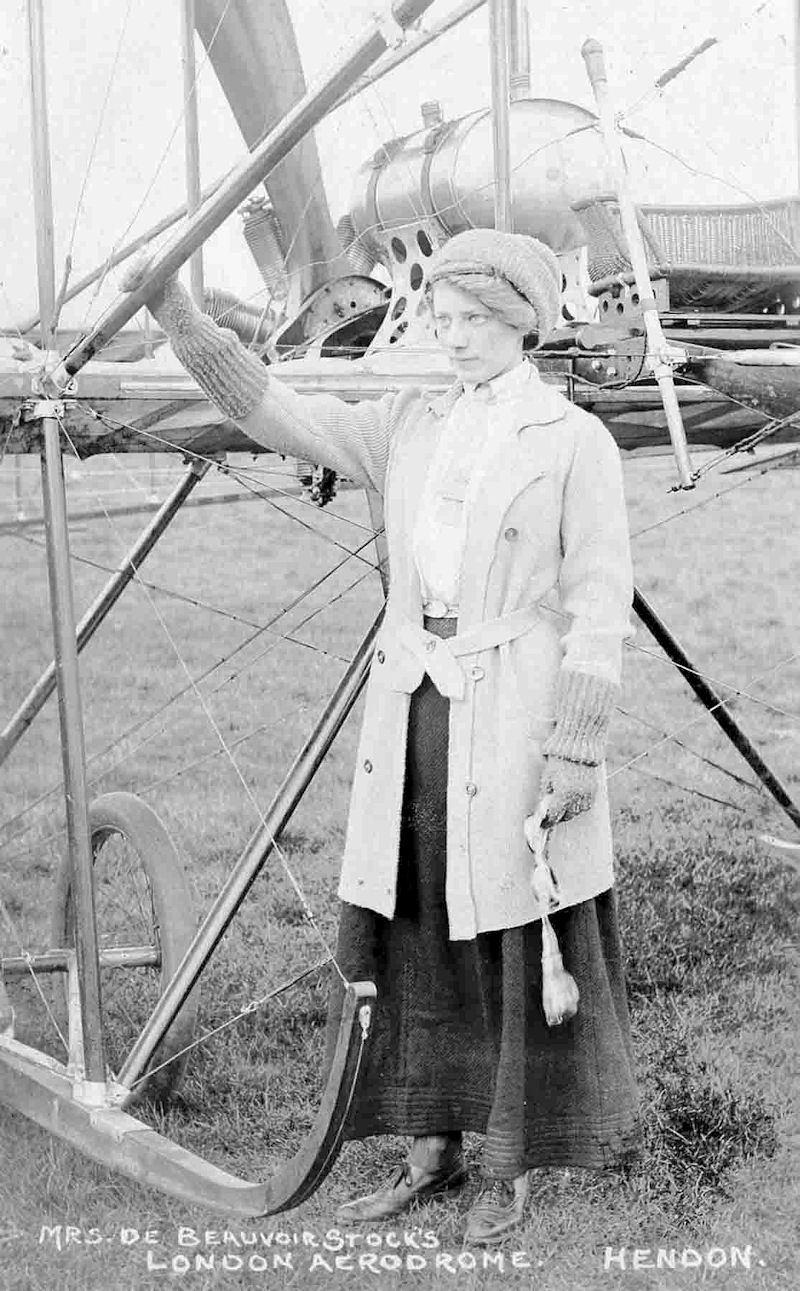
 1934
1934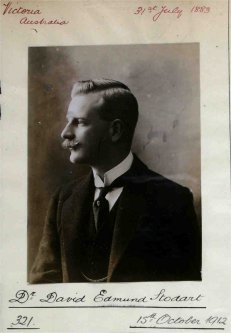 1912
1912
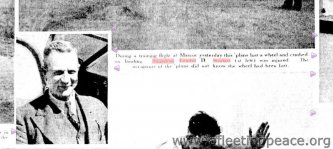
![MacRobertson Race 1934 K4047 Airspeed Courier (David Stodart) [0822-0032]](/images/gallery/air%20races/MacRobertson/preview/333s333/MacRobertson%20Race%201934%20K4047%20Airspeed%20Courier%20%28David%20Stodart%29%20%5B0822-0032%5D.jpg)

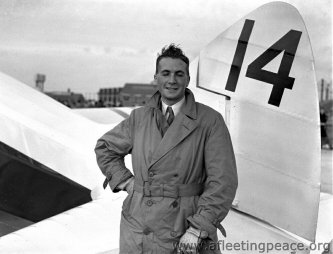

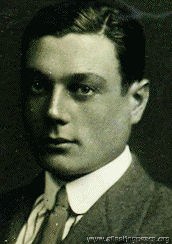 1913, when a farmer from Dorset, aged 22
1913, when a farmer from Dorset, aged 22 1930, aged 39
1930, aged 39 1921
1921 Ancestry.co.uk
Ancestry.co.uk 1930, aged 26
1930, aged 26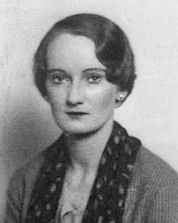
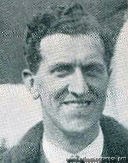 1930
1930 1931, aged 22
1931, aged 22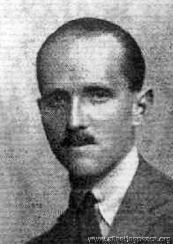
 ATA, 1943
ATA, 1943 1916, aged 19
1916, aged 19 1920
1920 1914, when a Lieutenant in the Scots Guards, aged 24
1914, when a Lieutenant in the Scots Guards, aged 24 1938, aged c.25
1938, aged c.25
 1930, aged 29
1930, aged 29 1947, aged 46
1947, aged 46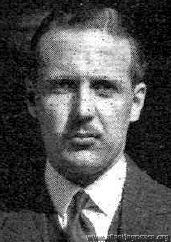
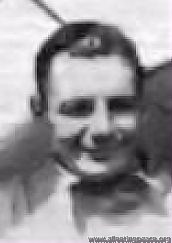 1935
1935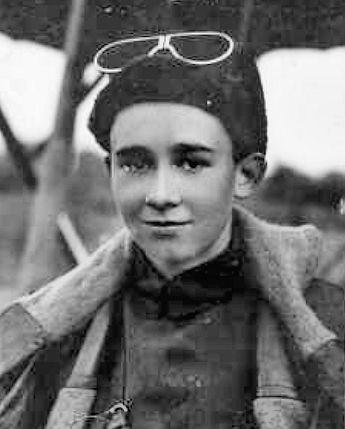 1917
1917 in June 1920, aged 23
in June 1920, aged 23


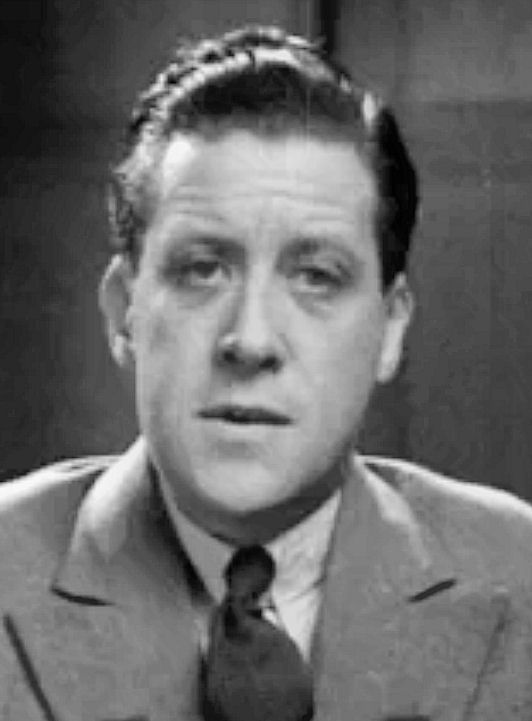
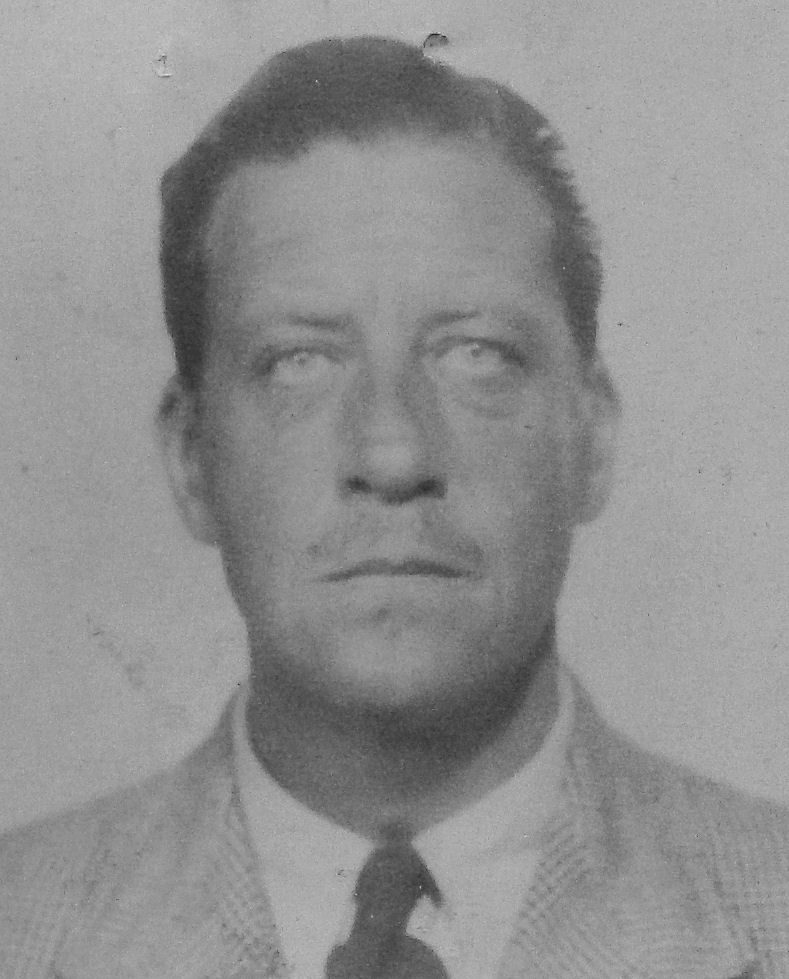

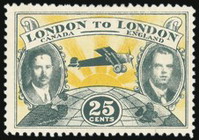





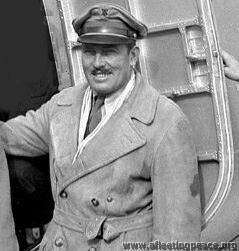


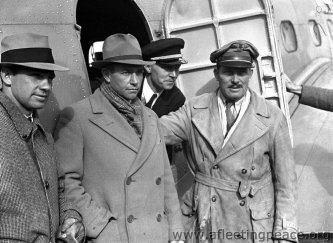 with Clyde Pangborn before the 1934 MacRobertson Race
with Clyde Pangborn before the 1934 MacRobertson Race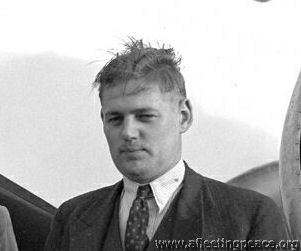
![MacRobertson Race 1934 Sydney Turner [0823-0004]](/images/gallery/air%20races/MacRobertson/preview/333s333/MacRobertson%20Race%201934%20Sydney%20Turner%20%5B0823-0004%5D.jpg)
 MacArthur, Stack and Turner befoe the race
MacArthur, Stack and Turner befoe the race 1930, aged 29
1930, aged 29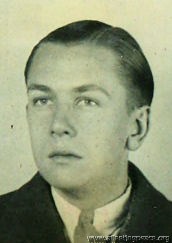
 Sub-Lieut, RNAS, 13 Oct 1915 (RAeC)
Sub-Lieut, RNAS, 13 Oct 1915 (RAeC)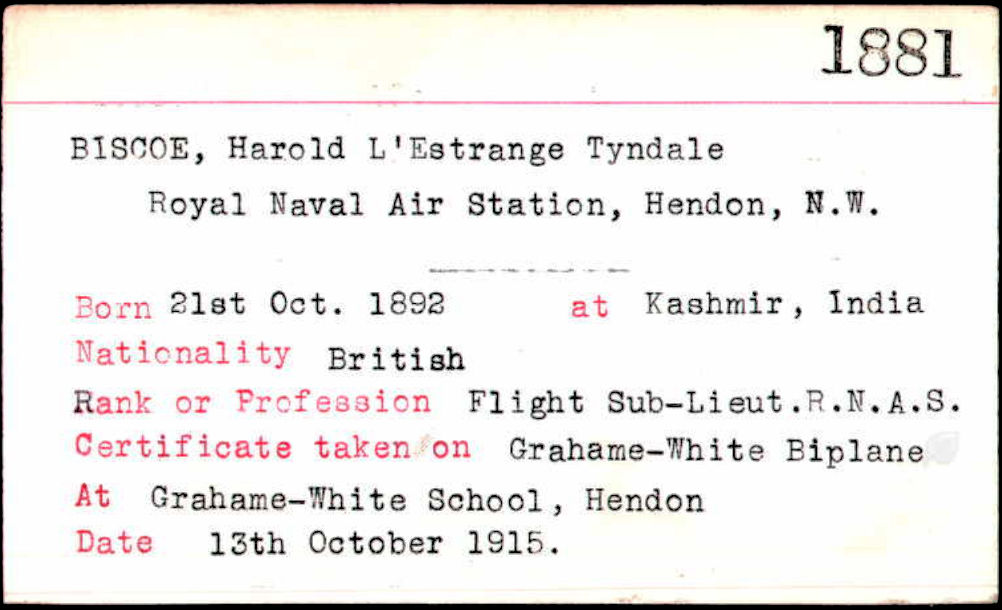

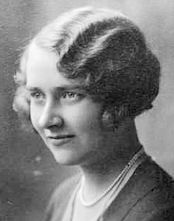 1930
1930.jpg) 1931
1931 bought an Avro Club Cadet (G-ACHW) in June 1933,
bought an Avro Club Cadet (G-ACHW) in June 1933, Doreen (r) with V Smith and the Cadet in 1935 - Northampton Mercury
Doreen (r) with V Smith and the Cadet in 1935 - Northampton Mercury
.jpg)

 RAeC 1922
RAeC 1922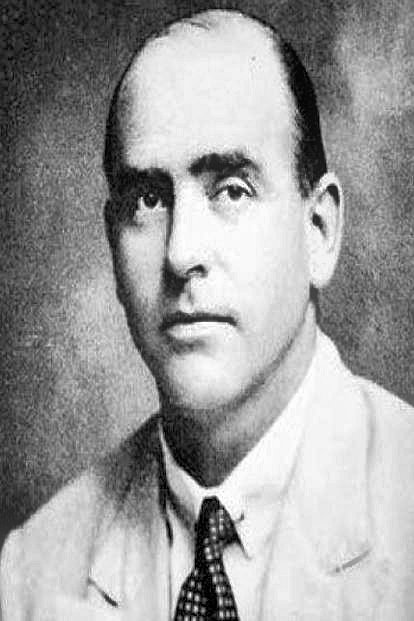 Ancestry
Ancestry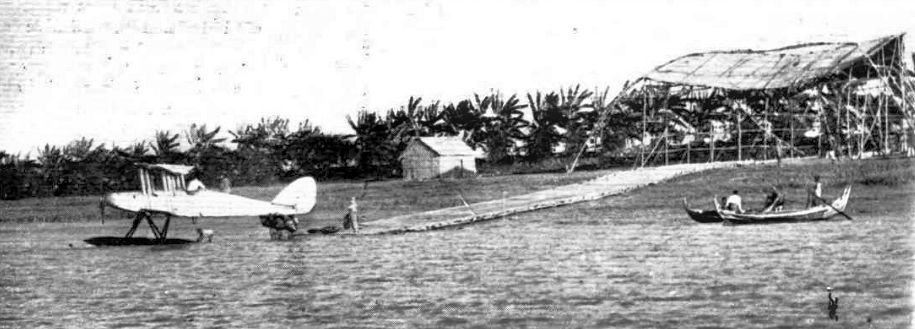
 "Flight"
"Flight" 5 Jan 1928
5 Jan 1928


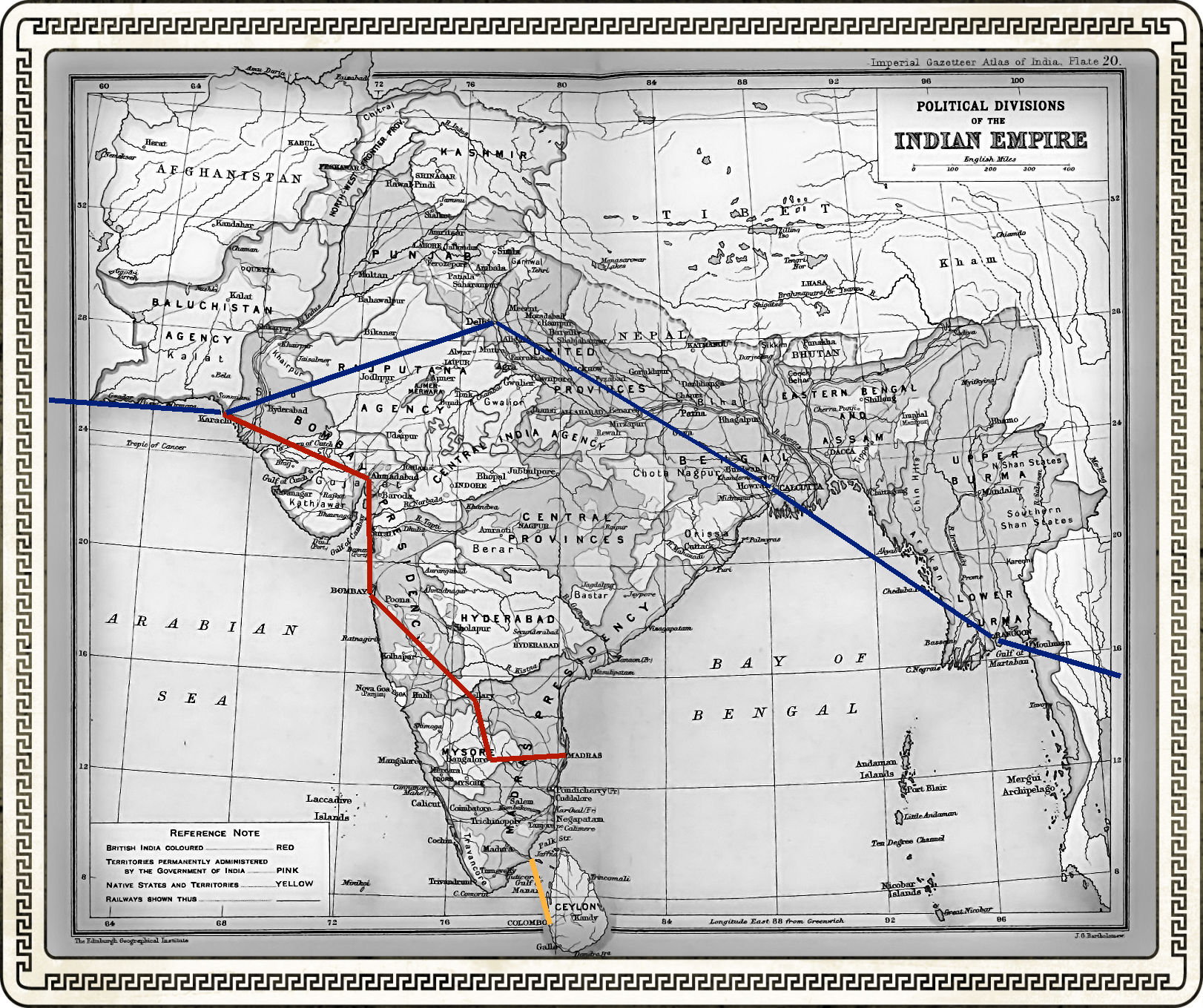
 Sir Fredrick Tymms
Sir Fredrick Tymms Harold l'Estrange Tyndale-Biscoe MBE
Harold l'Estrange Tyndale-Biscoe MBE

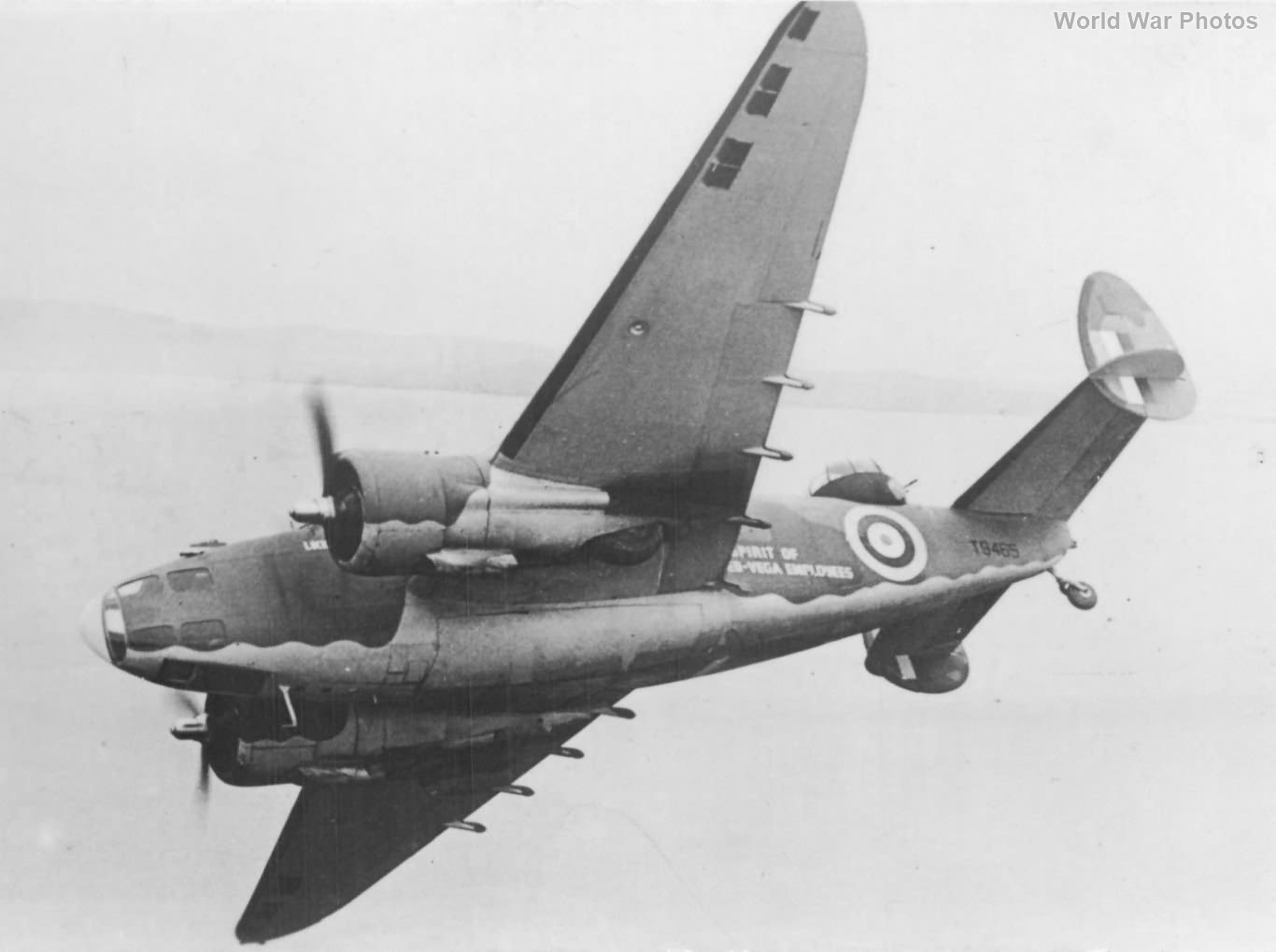
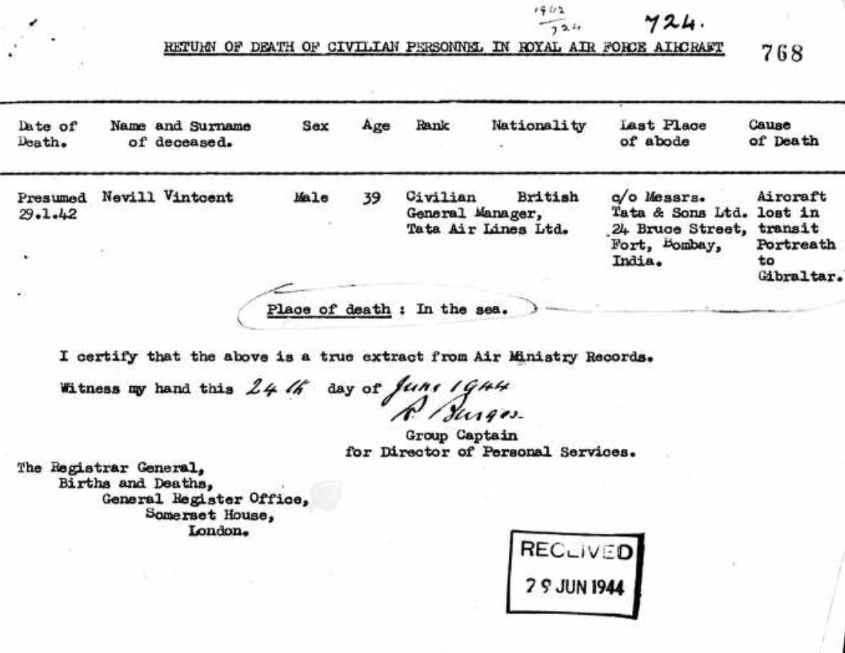
.jpg)

 1929, aged 25
1929, aged 25 1932, aged 23
1932, aged 23 1930, aged 20
1930, aged 20
 1927, when a medical student, aged 28
1927, when a medical student, aged 28 1930, aged 22
1930, aged 22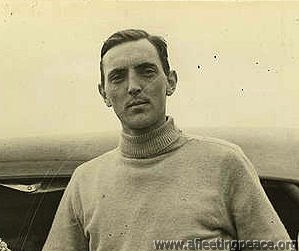


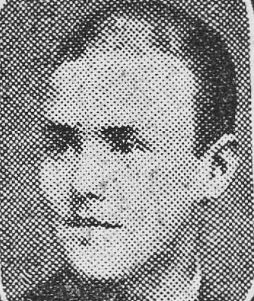
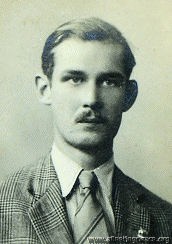 1933, aged 22
1933, aged 22 1925, aged 27
1925, aged 27
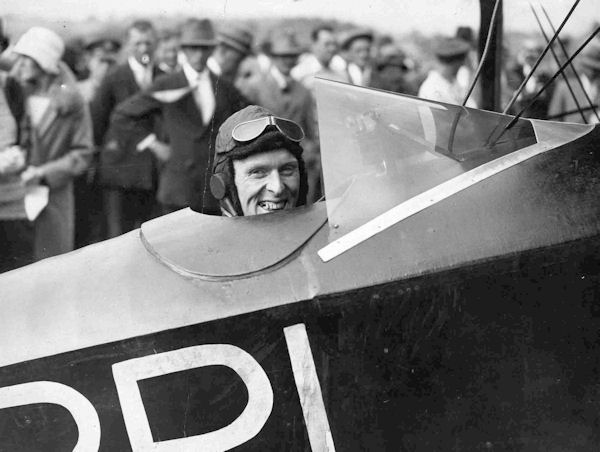 1928
1928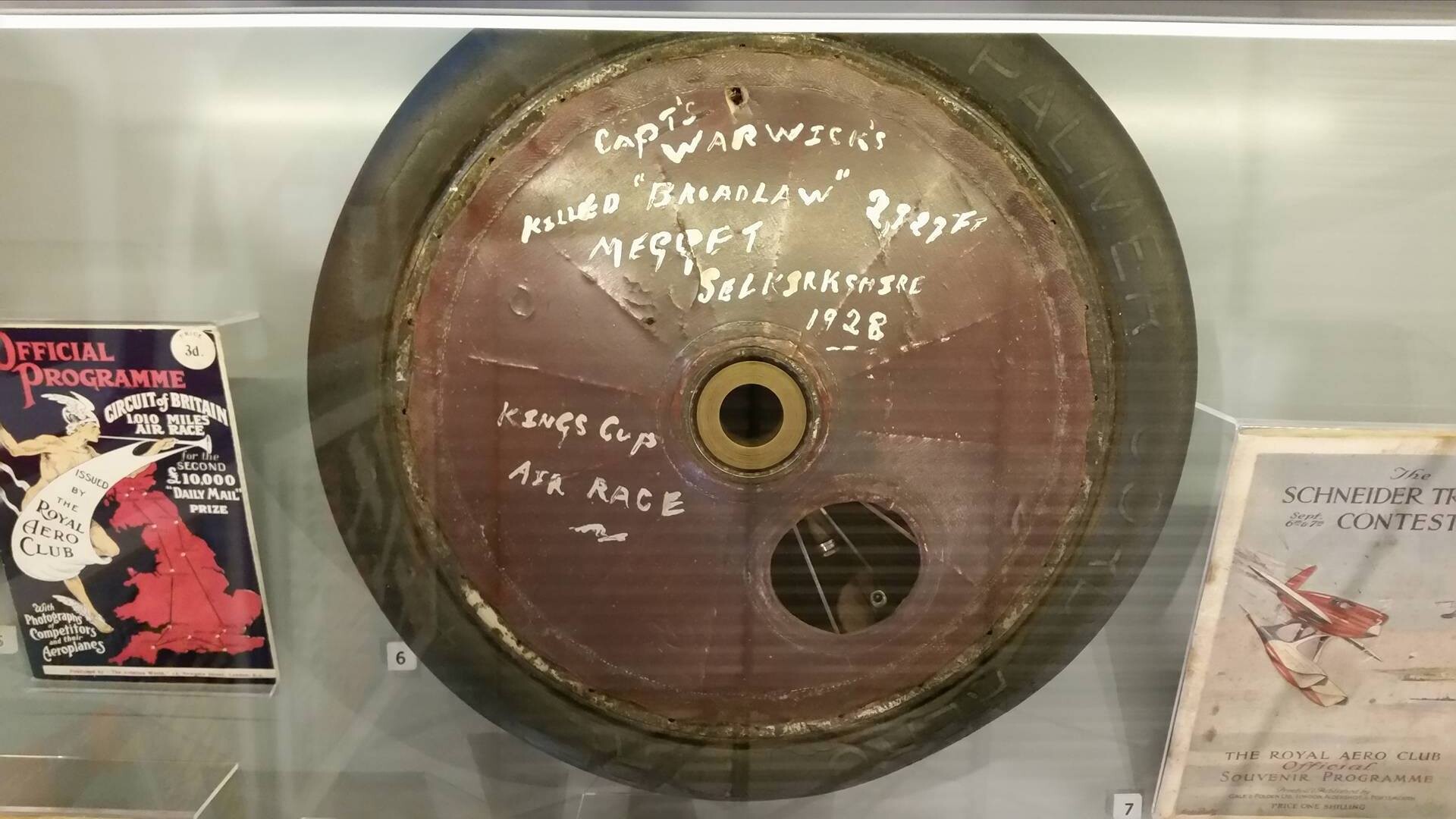 A wheel from the aircraft - Museum of Flight
A wheel from the aircraft - Museum of Flight 1926, aged 20
1926, aged 20 1917,when a 2nd Lieut, The Buffs
1917,when a 2nd Lieut, The Buffs

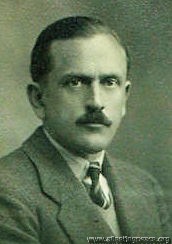 1925, aged 32
1925, aged 32
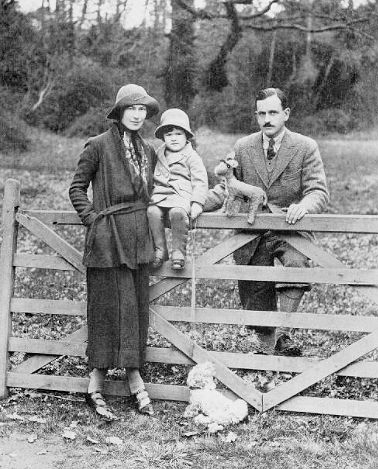 with daughter Cynthia, 1924 - The Tatler
with daughter Cynthia, 1924 - The Tatler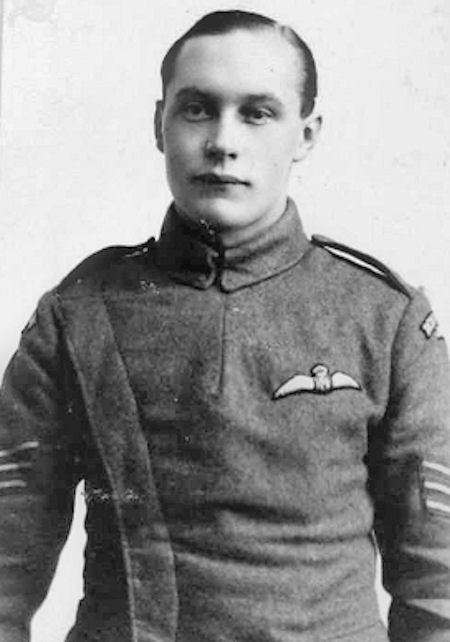 in 1917
in 1917 1948, aged 46
1948, aged 46
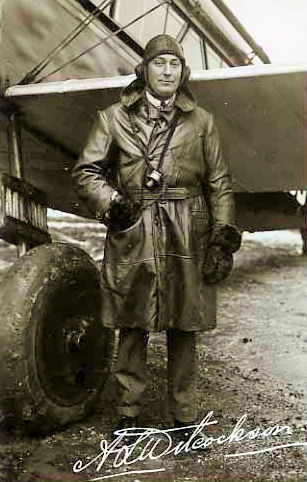


 1933, when a bank clerk, aged 24
1933, when a bank clerk, aged 24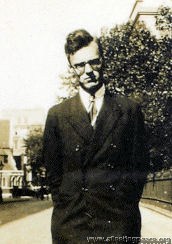

 1915, when a Lieutenant in the 10th Royal Hussars, aged 30
1915, when a Lieutenant in the 10th Royal Hussars, aged 30 1930, aged 45
1930, aged 45 1930, aged 43
1930, aged 43 1936, aged 28
1936, aged 28 1936
1936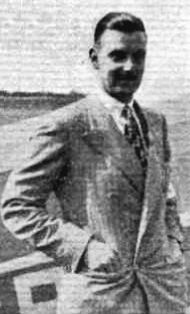 1935 - both 'Flight'
1935 - both 'Flight'
 With thanks to Gary Wright
With thanks to Gary Wright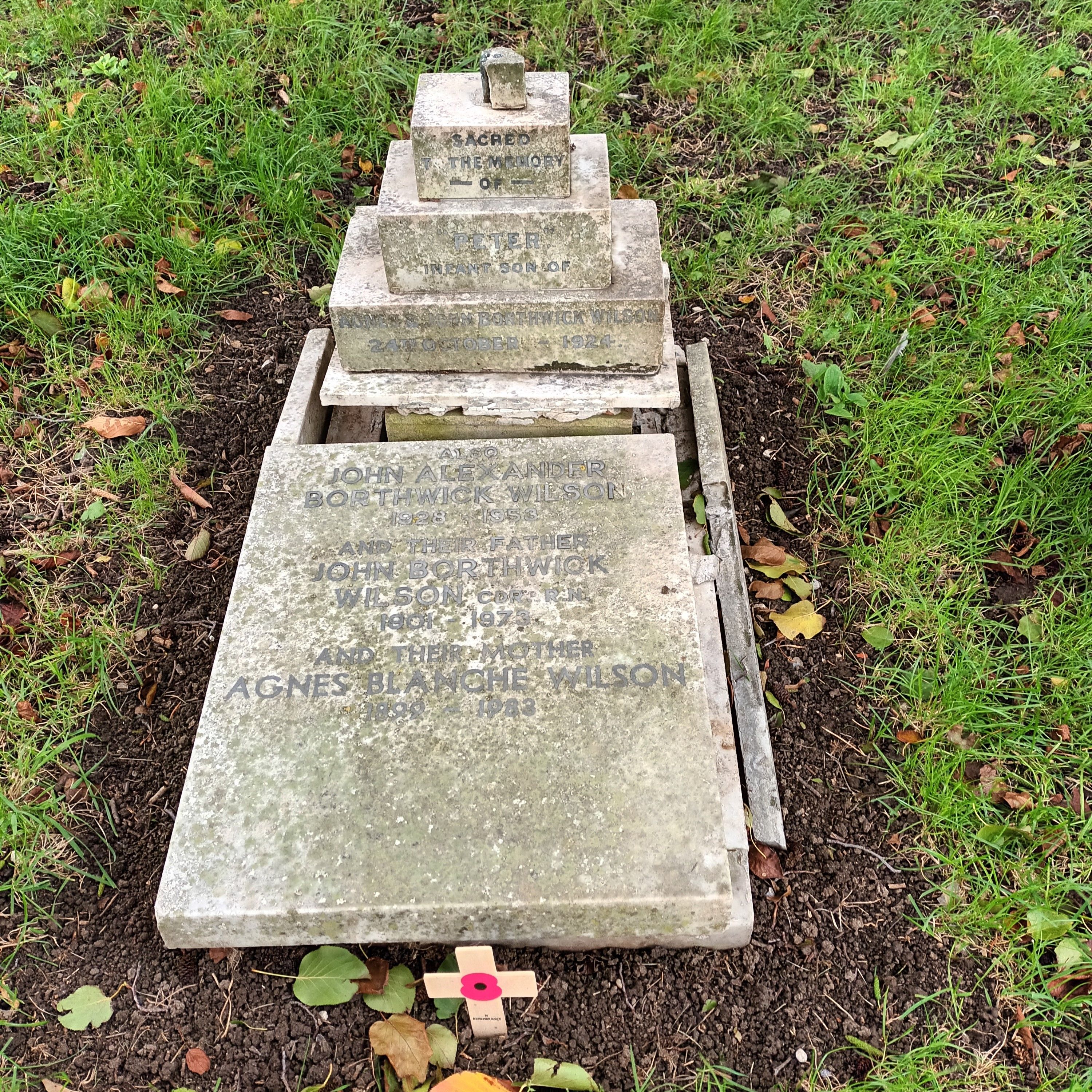
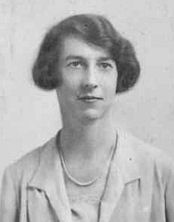 1929, aged 43
1929, aged 43
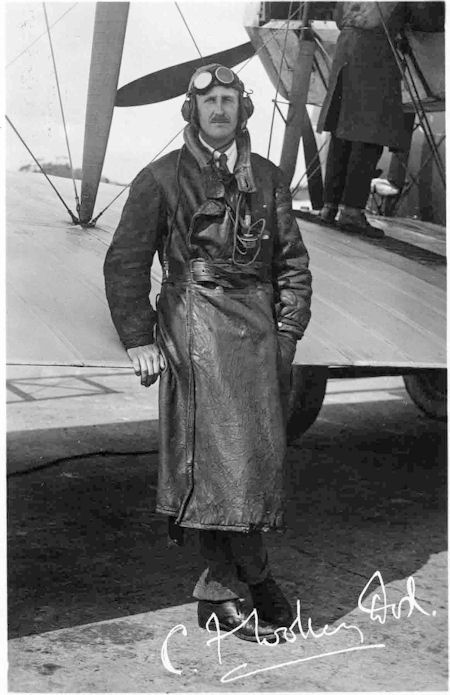



 1930, aged 42
1930, aged 42


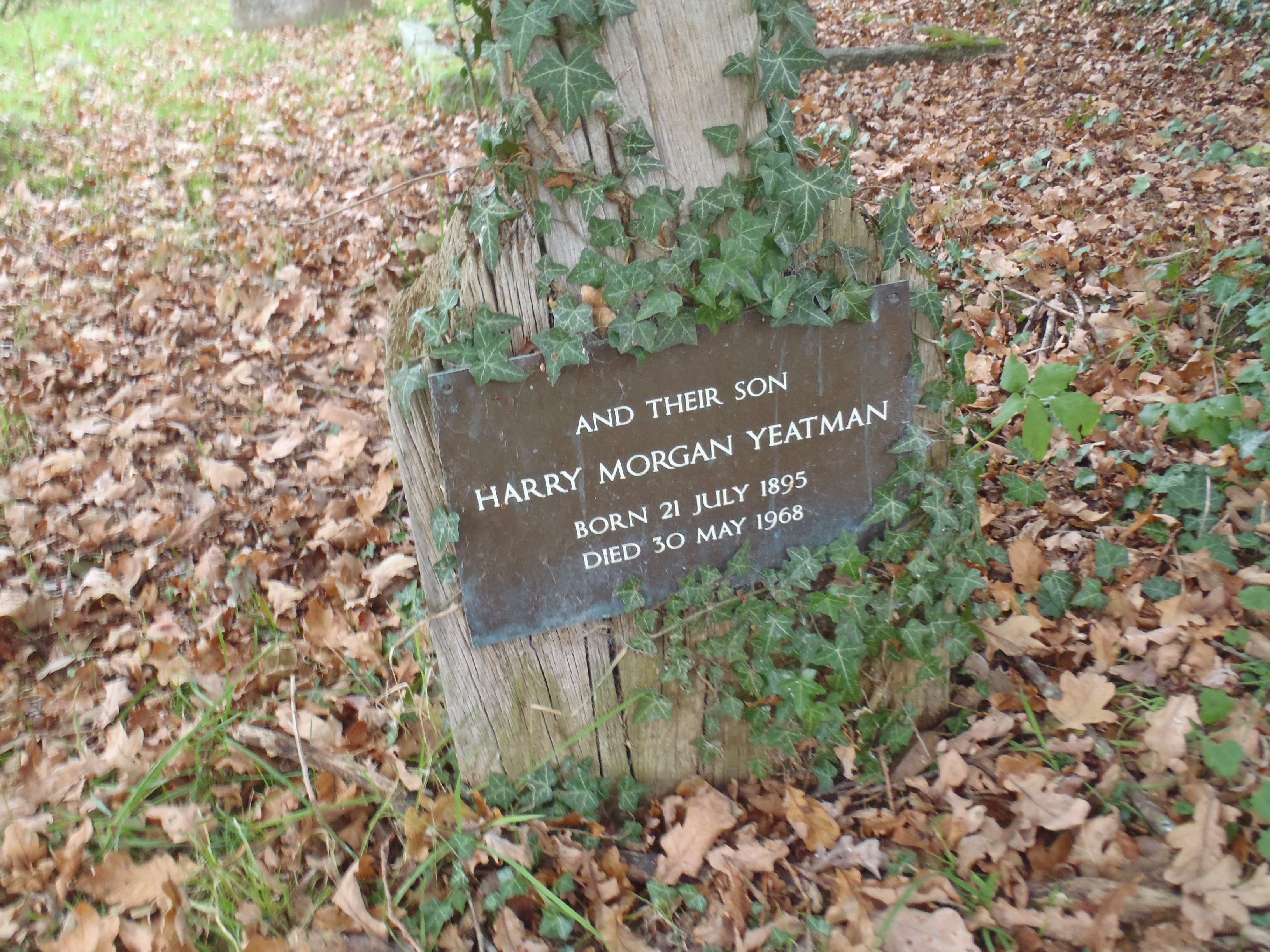



 1929, aged 38
1929, aged 38